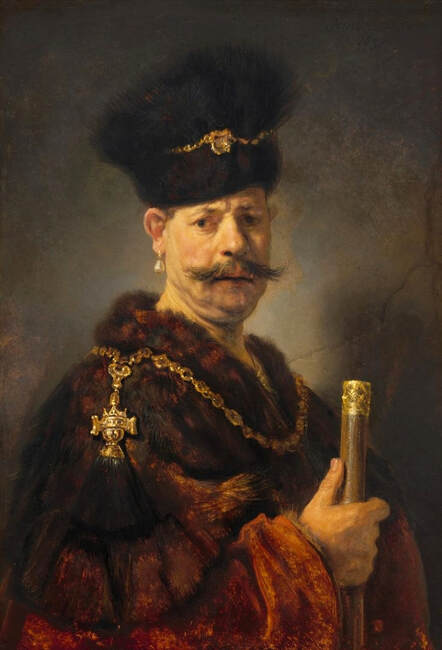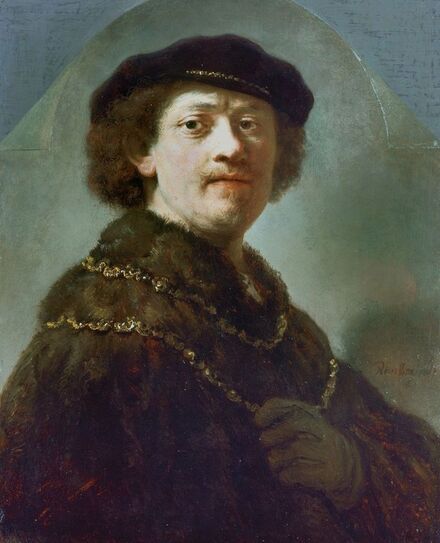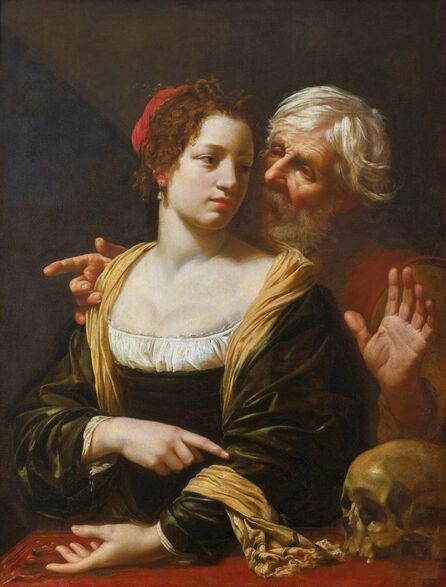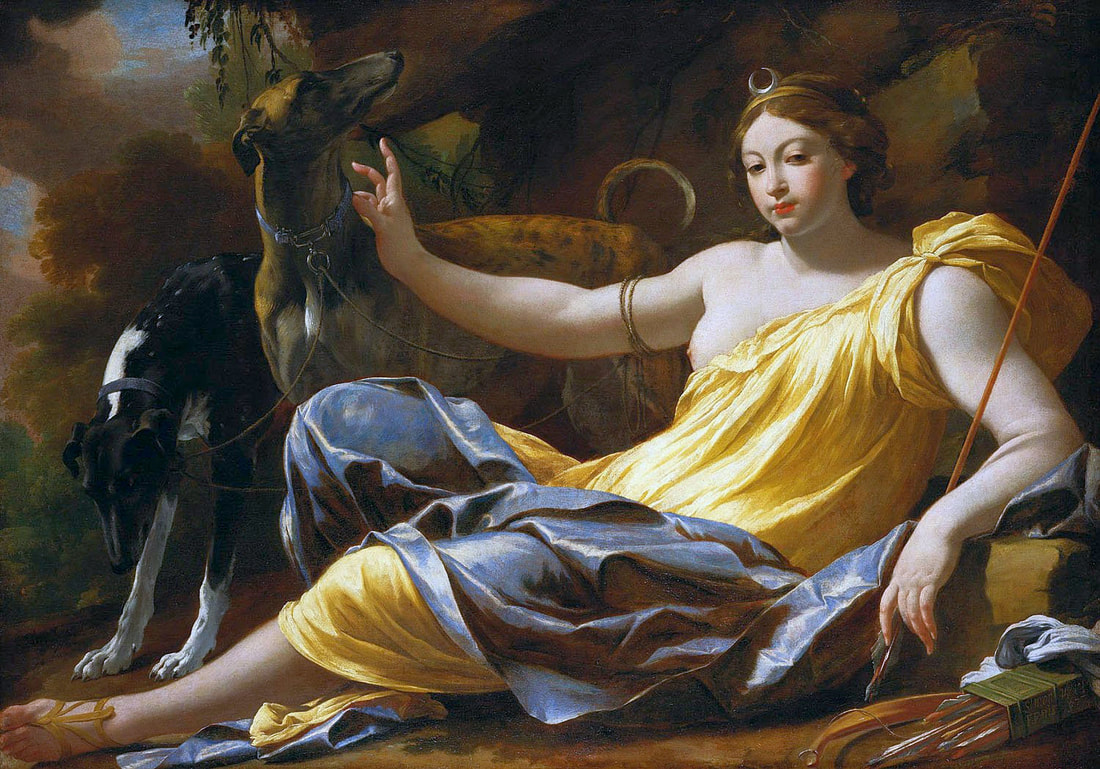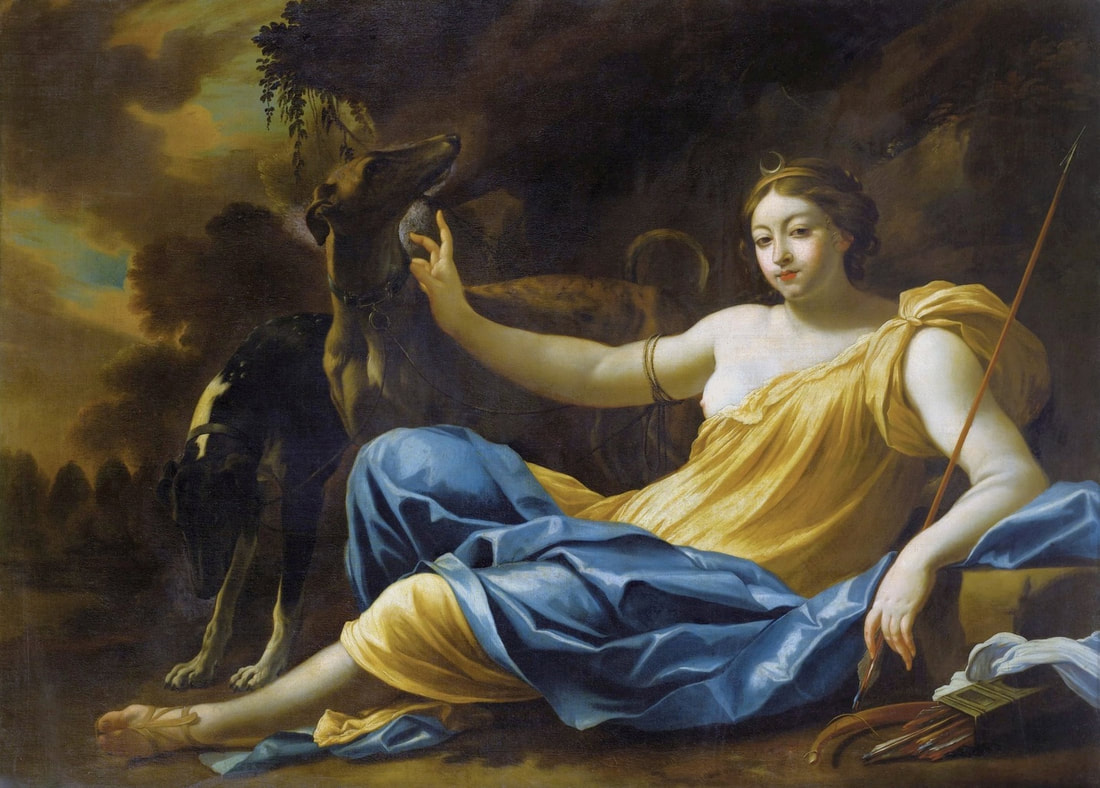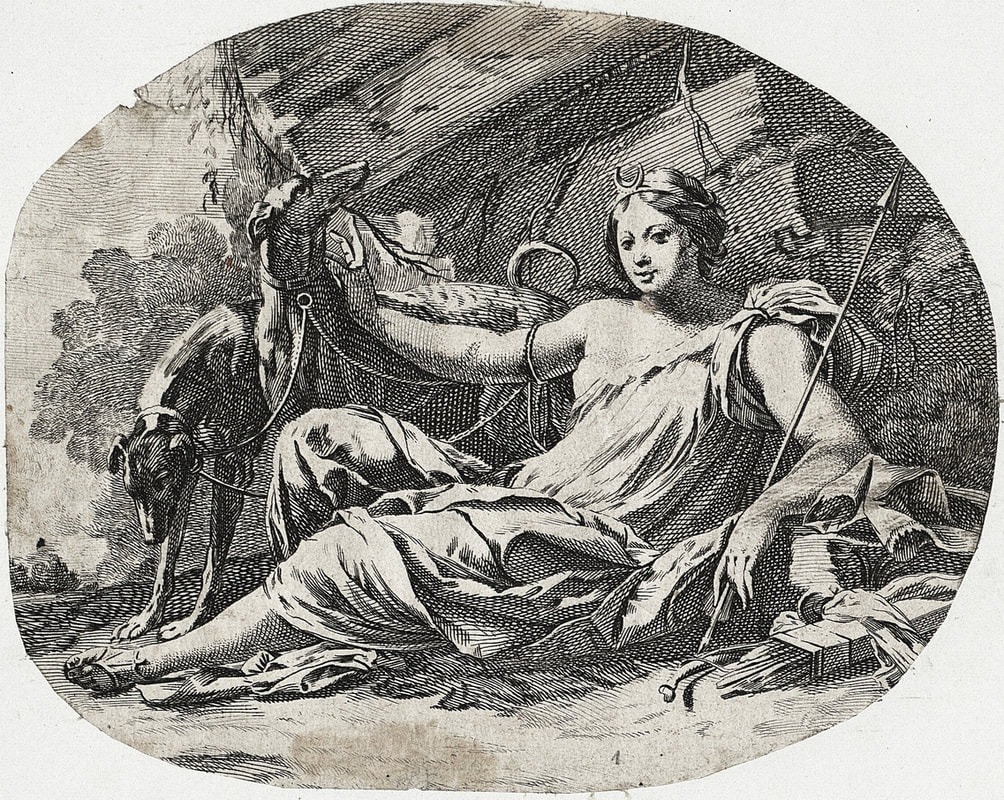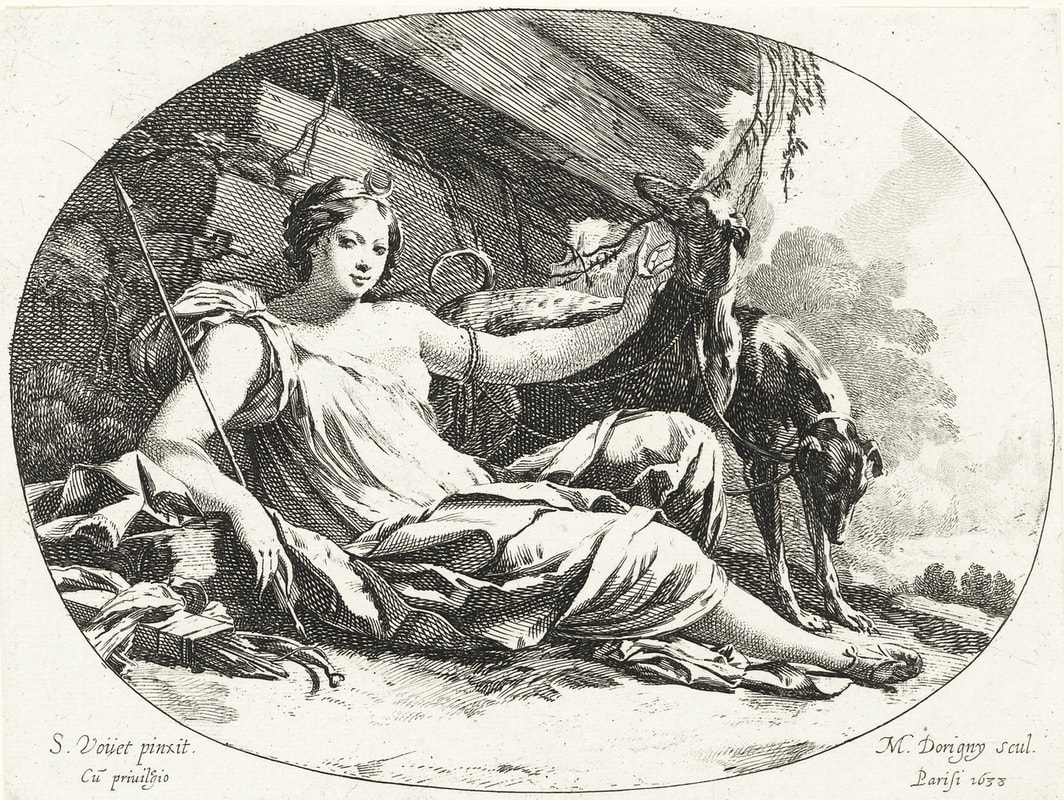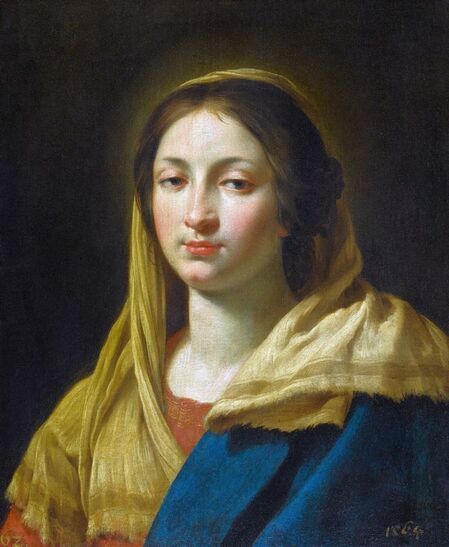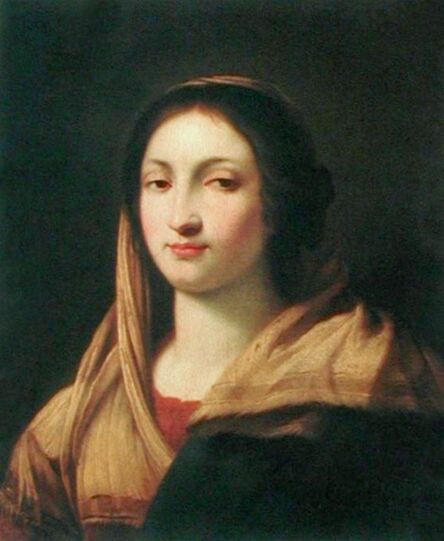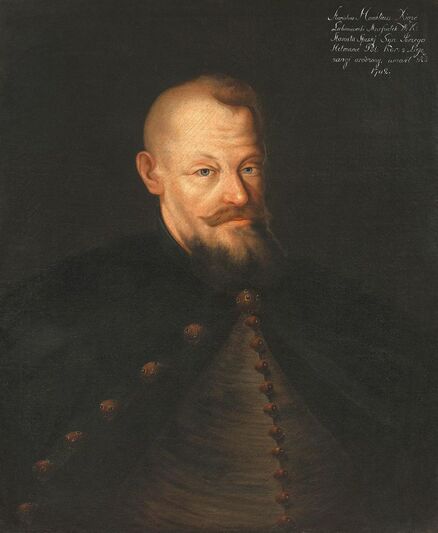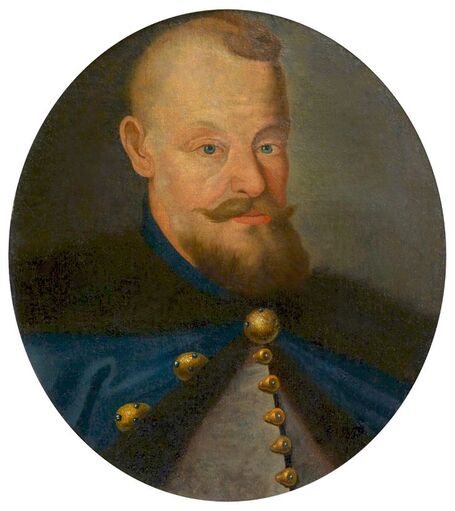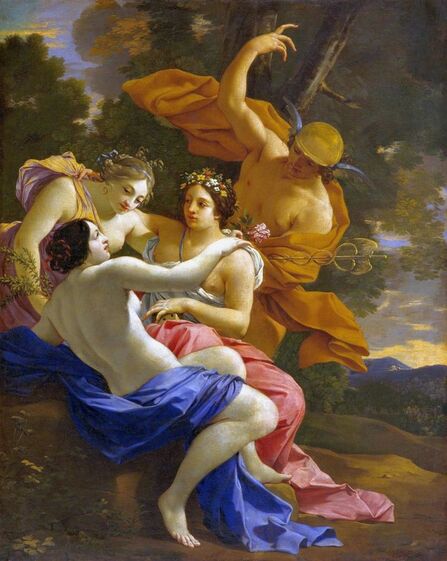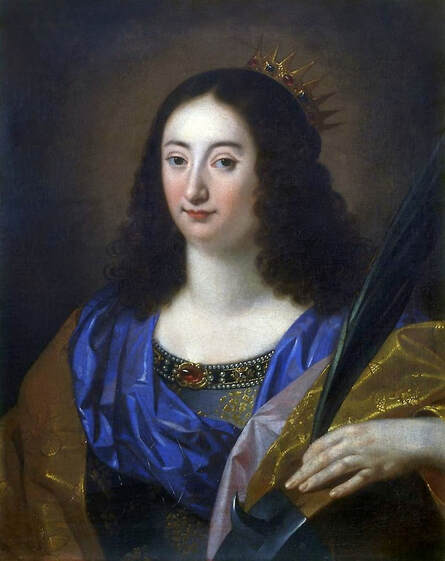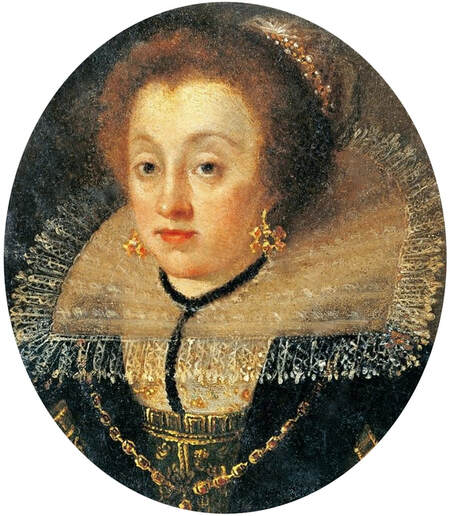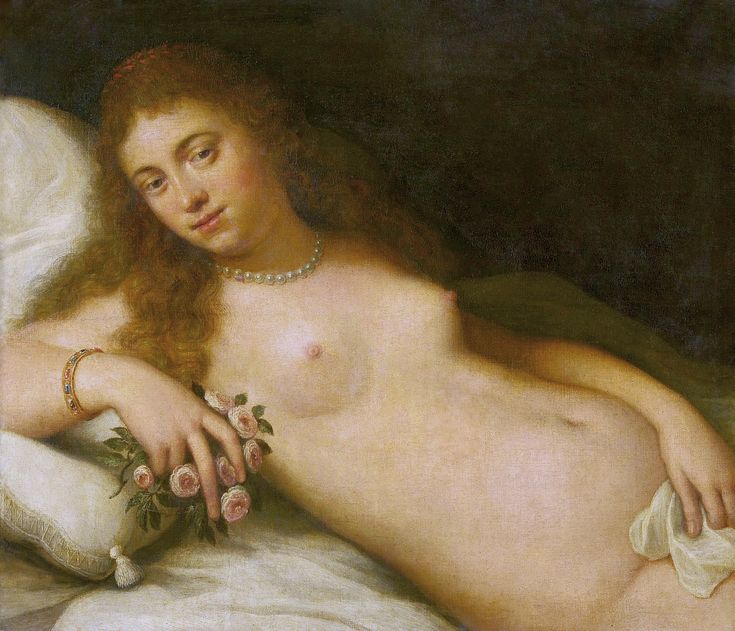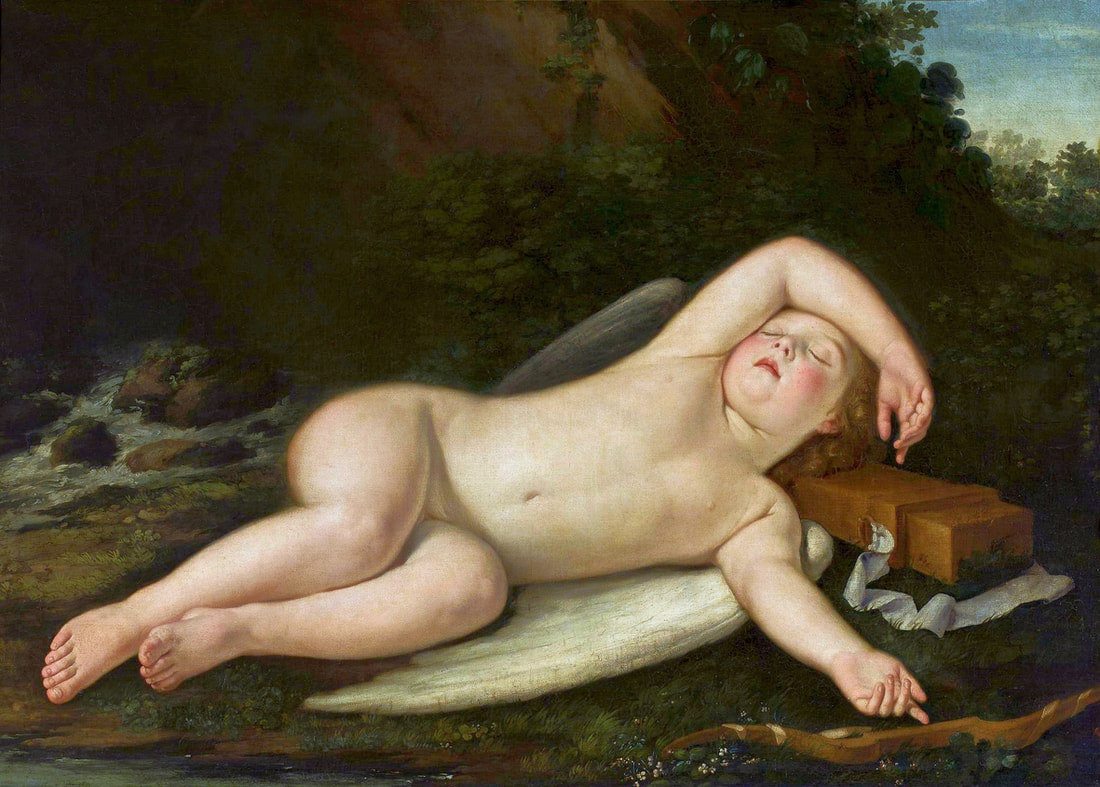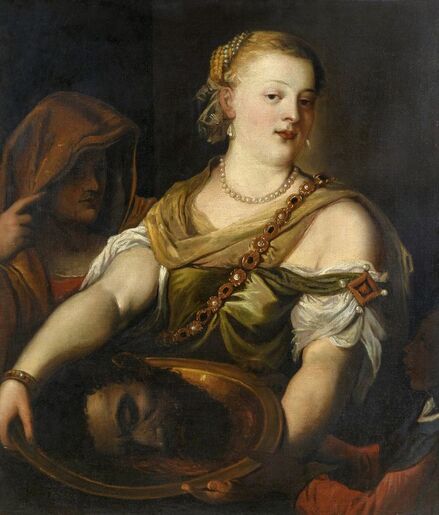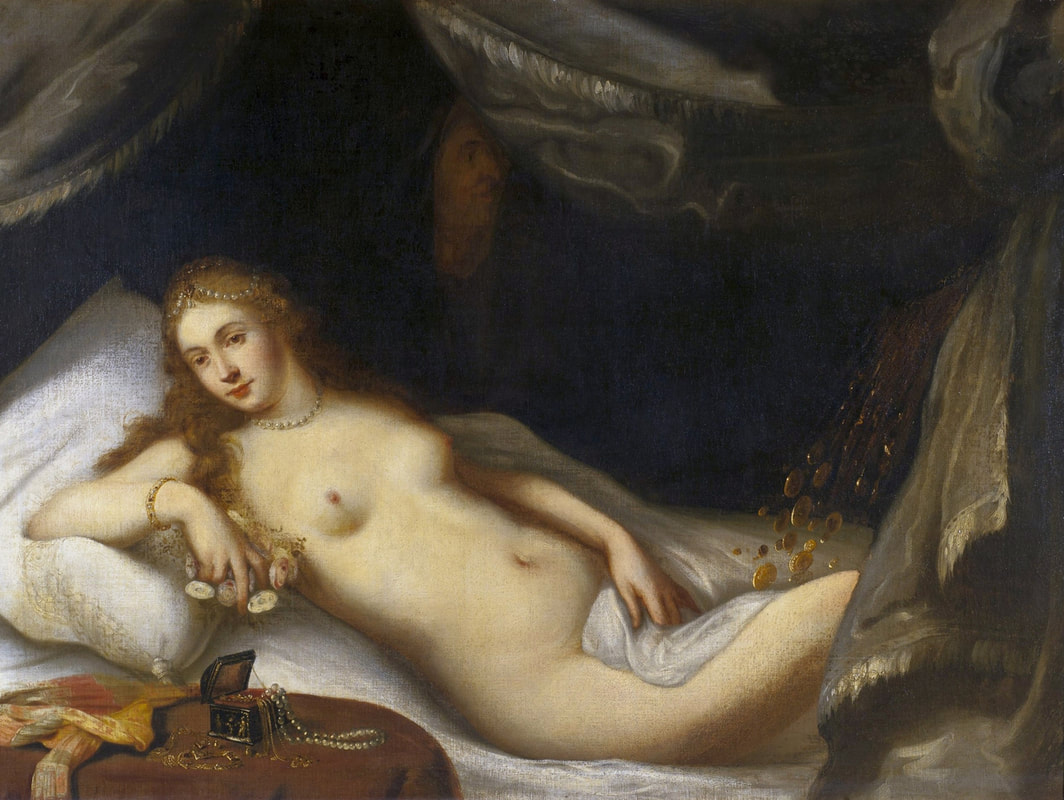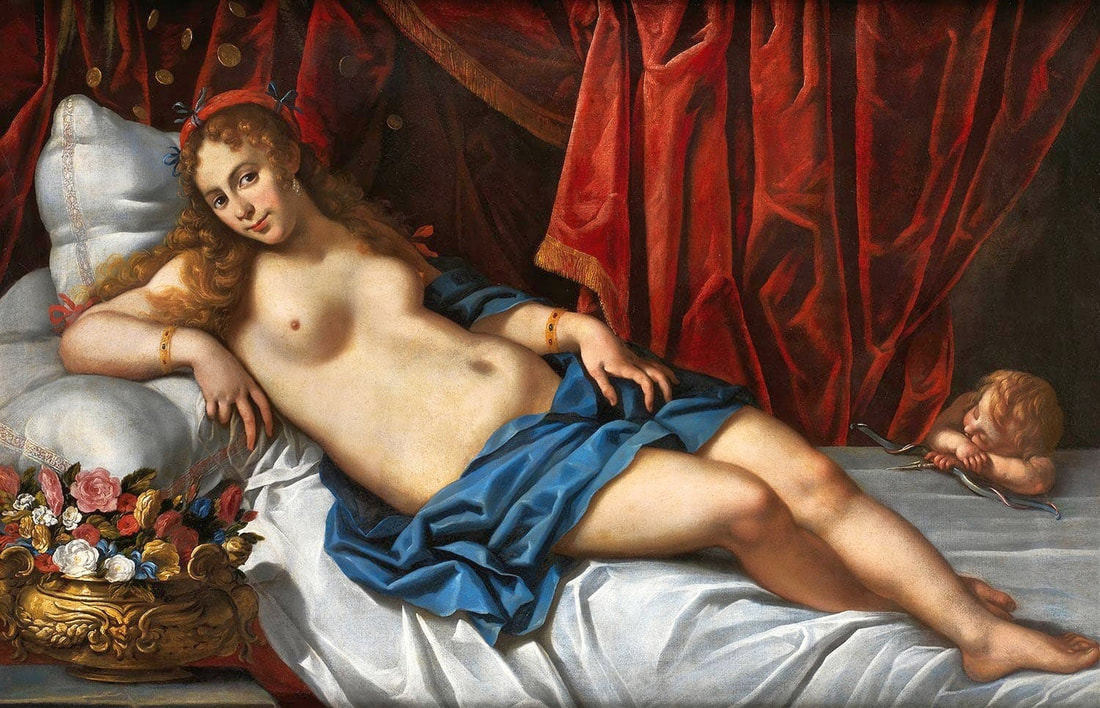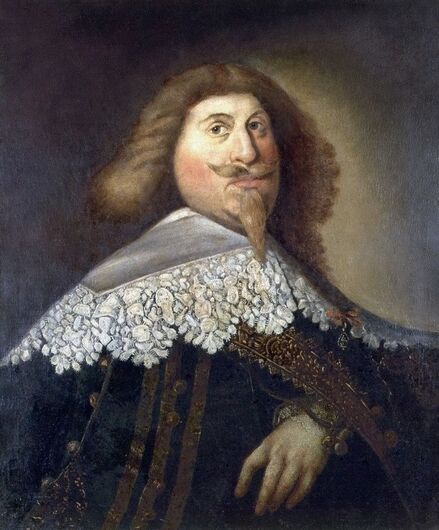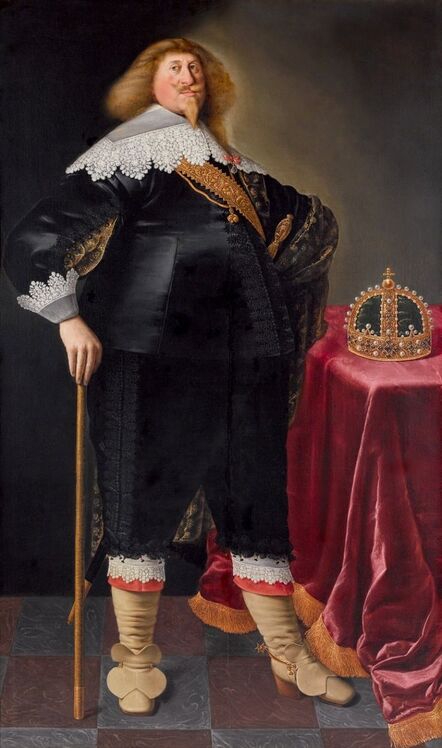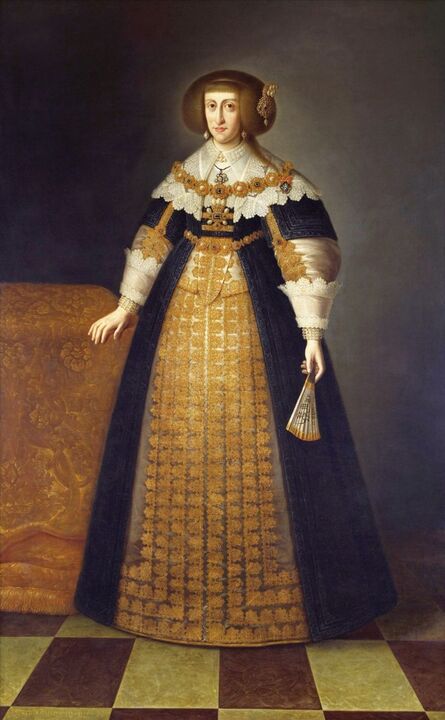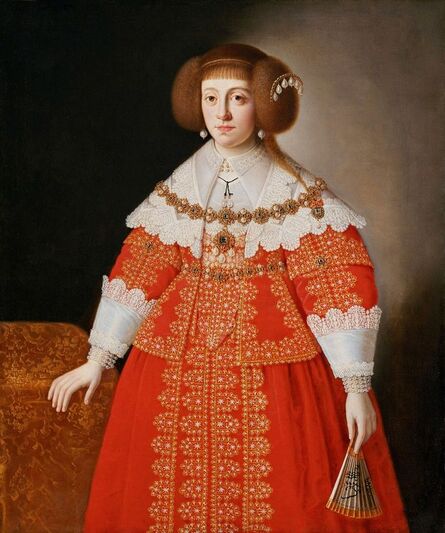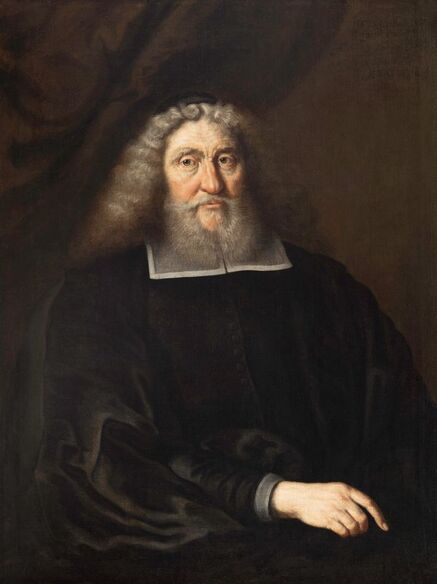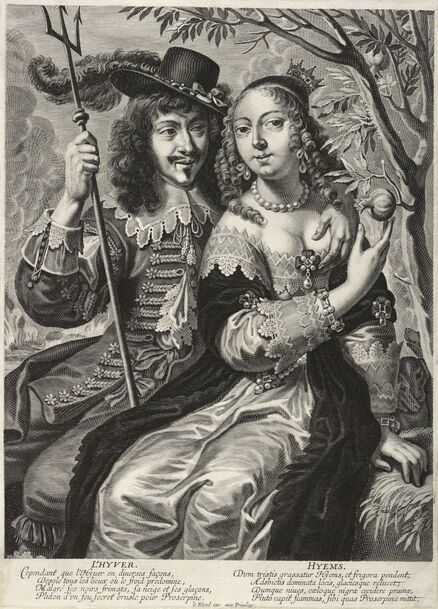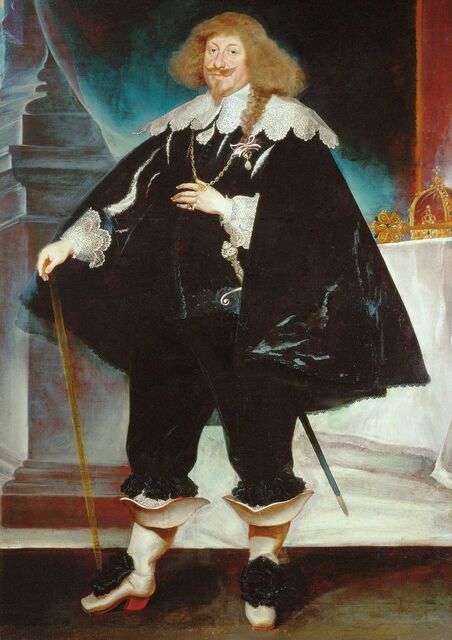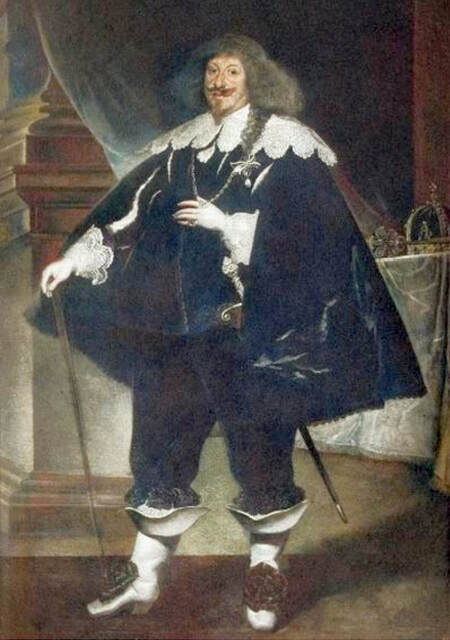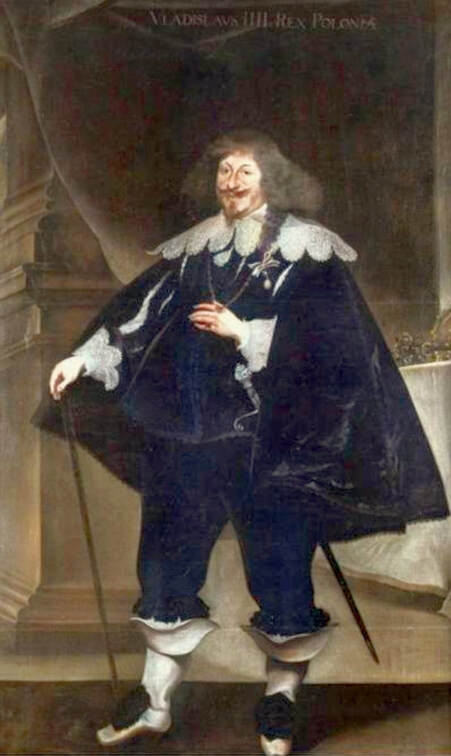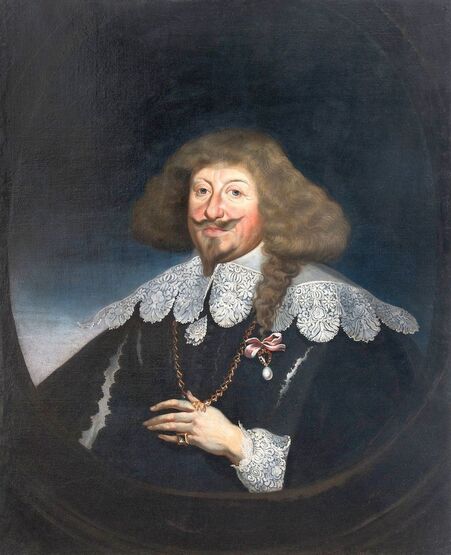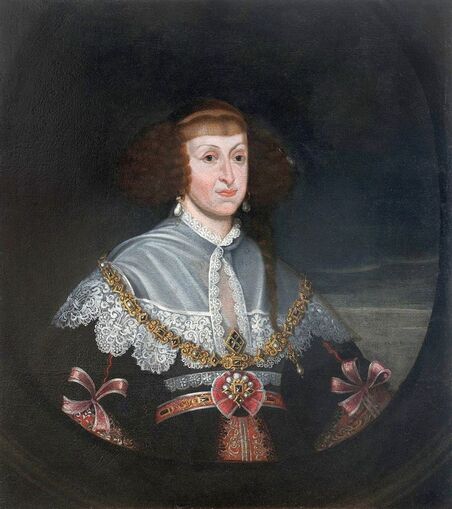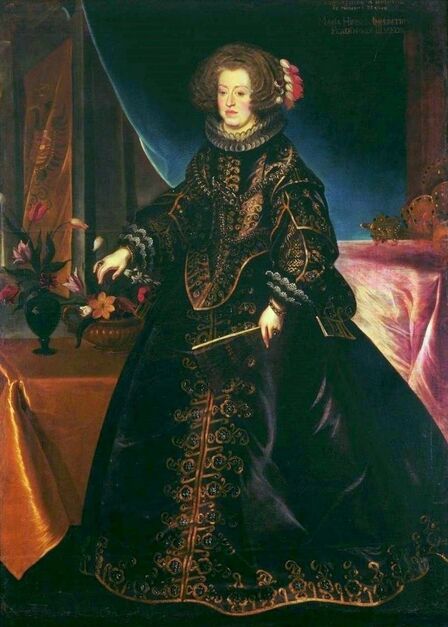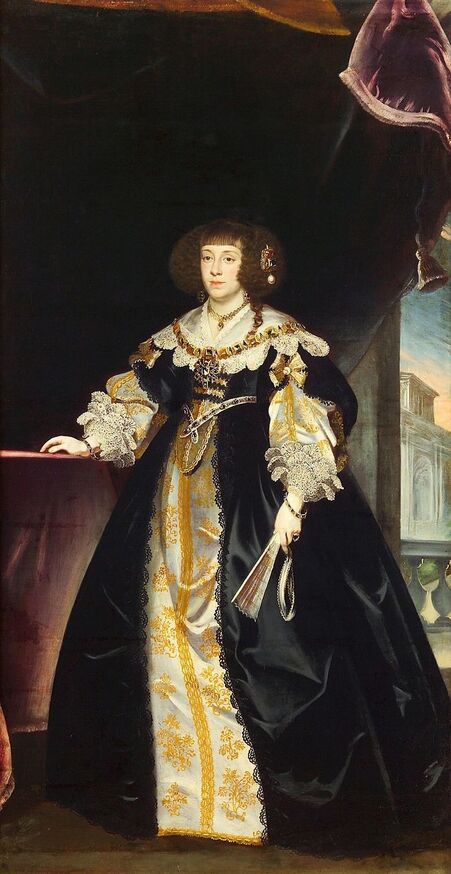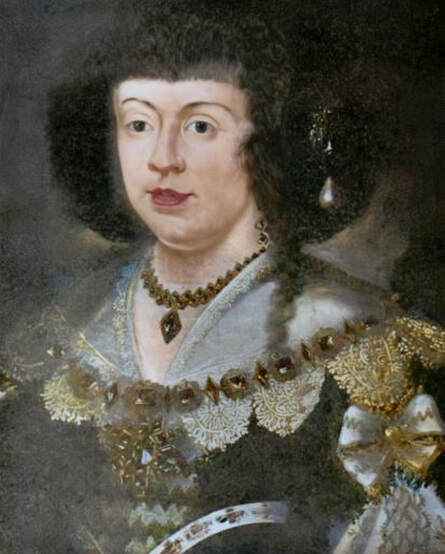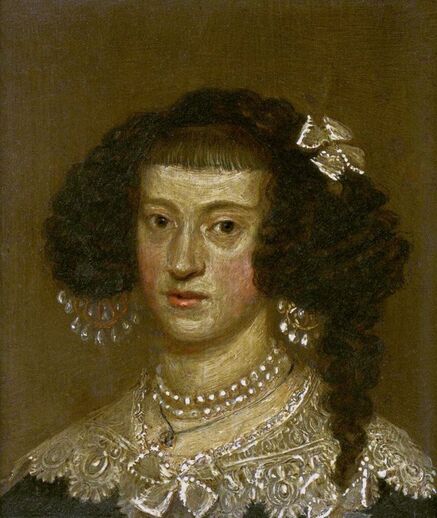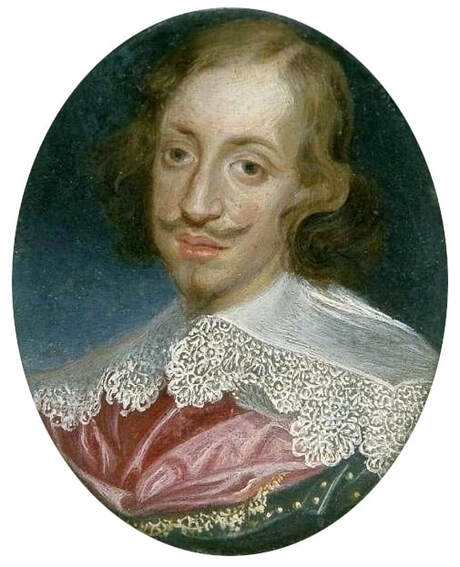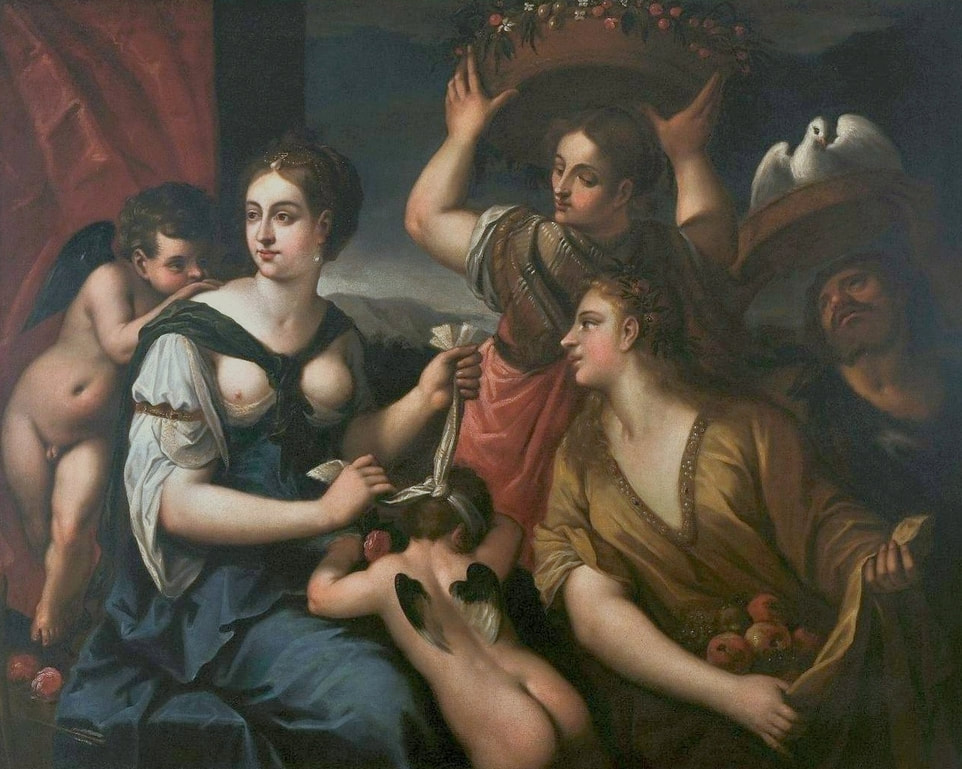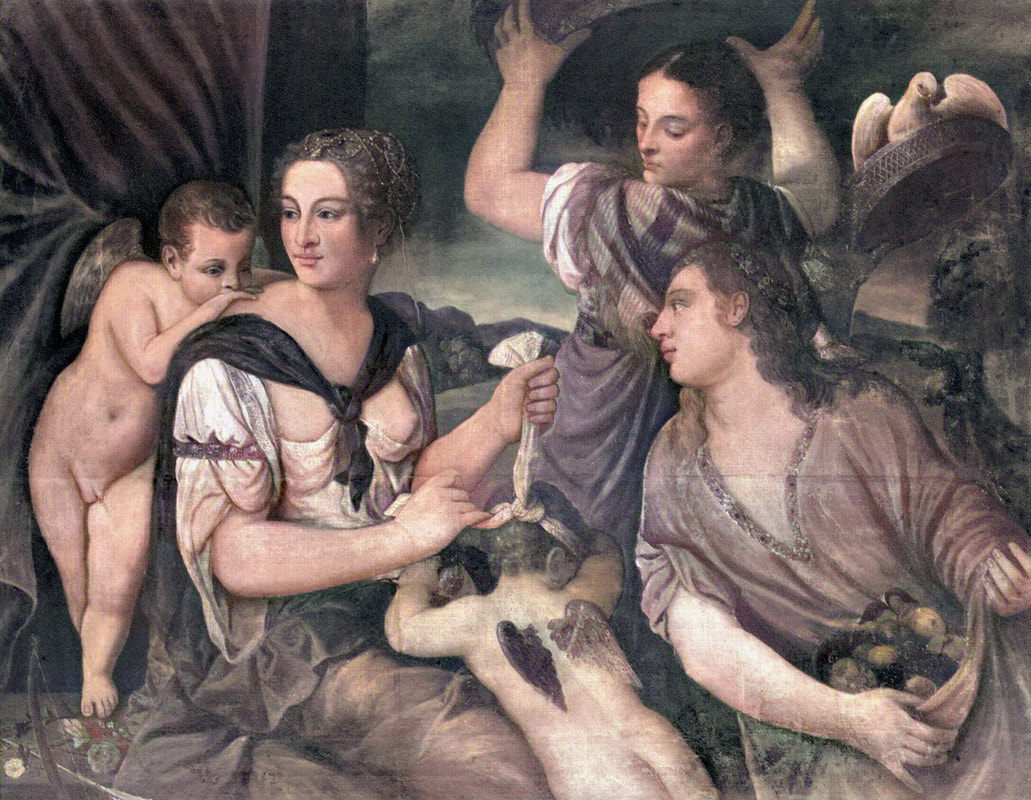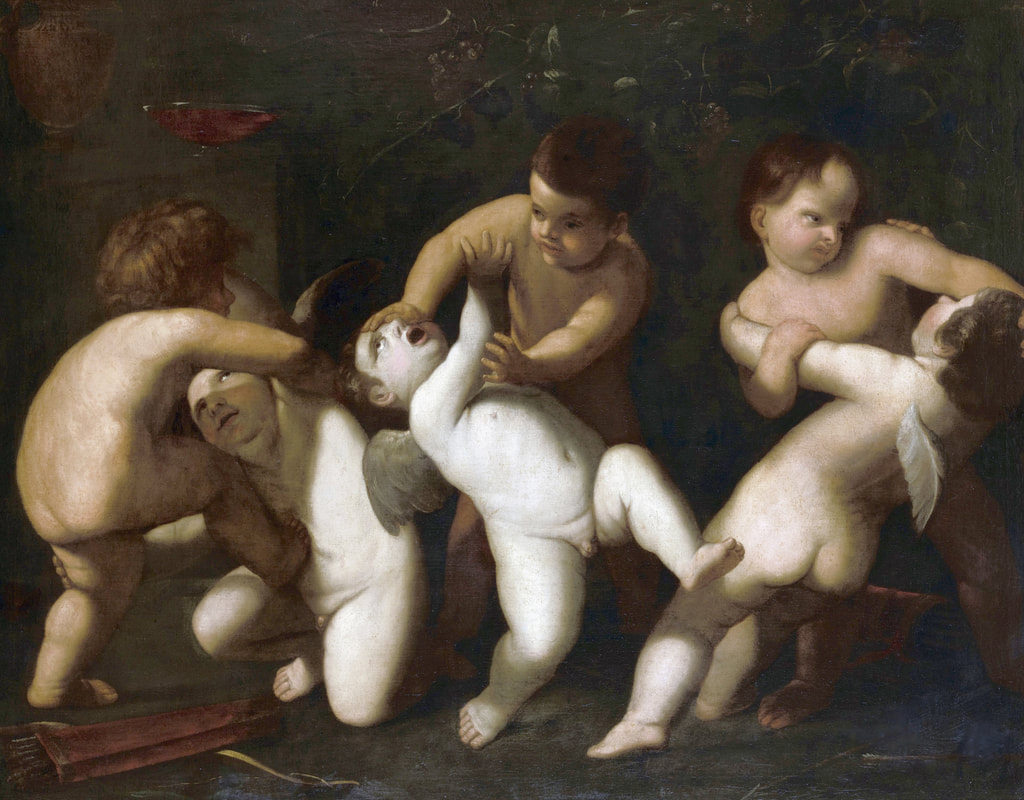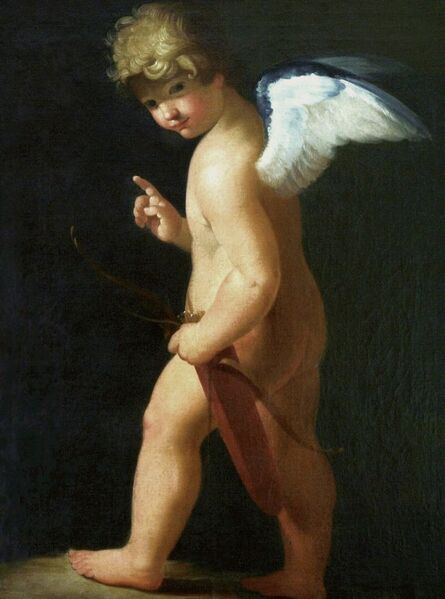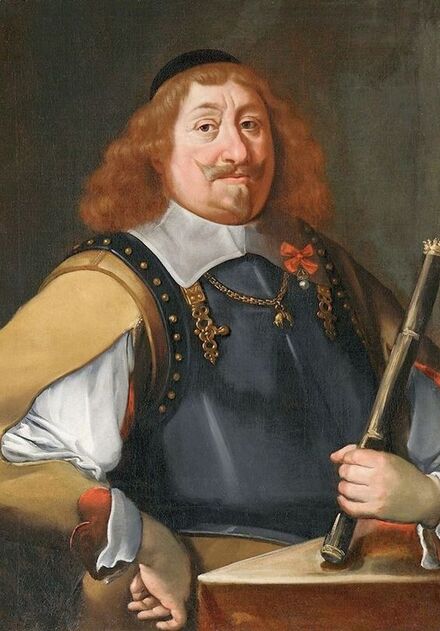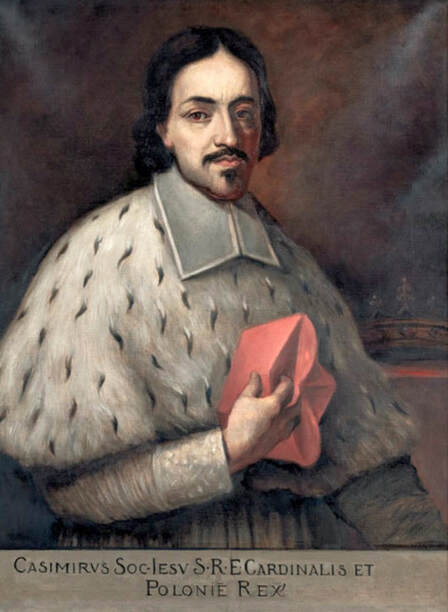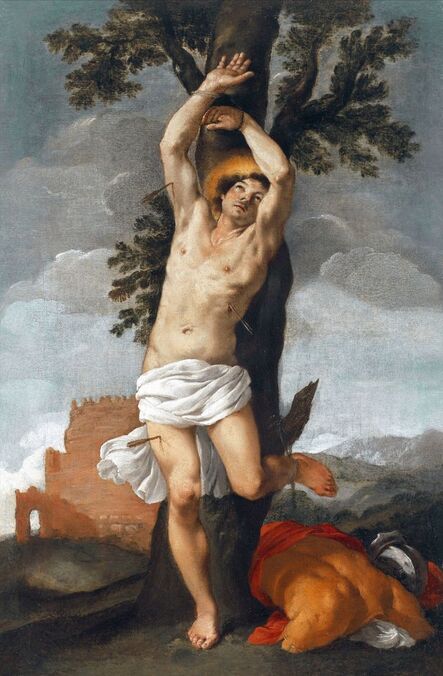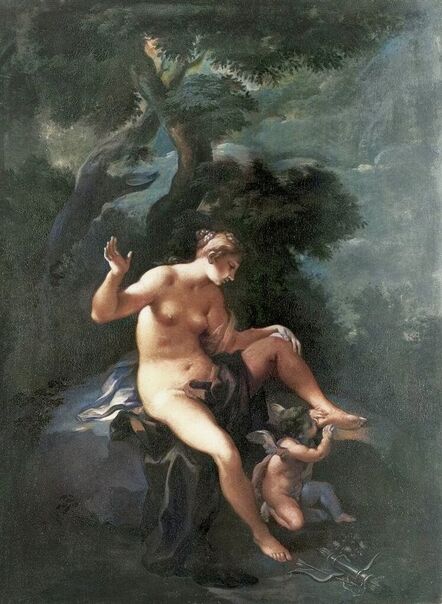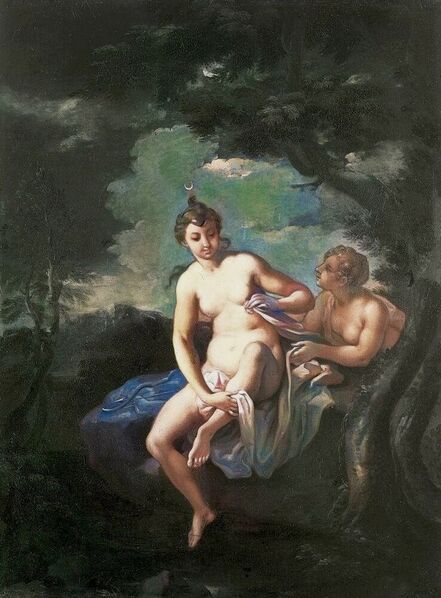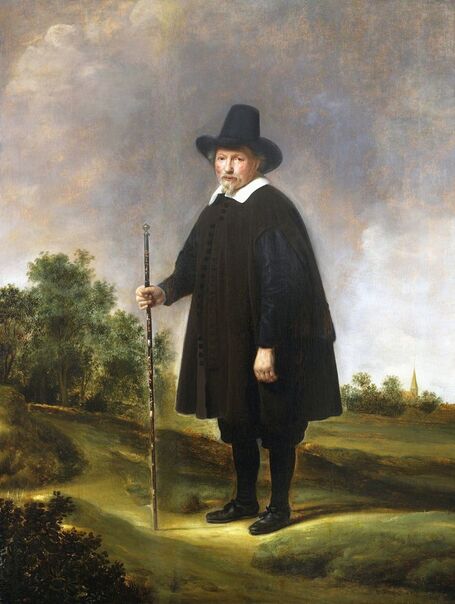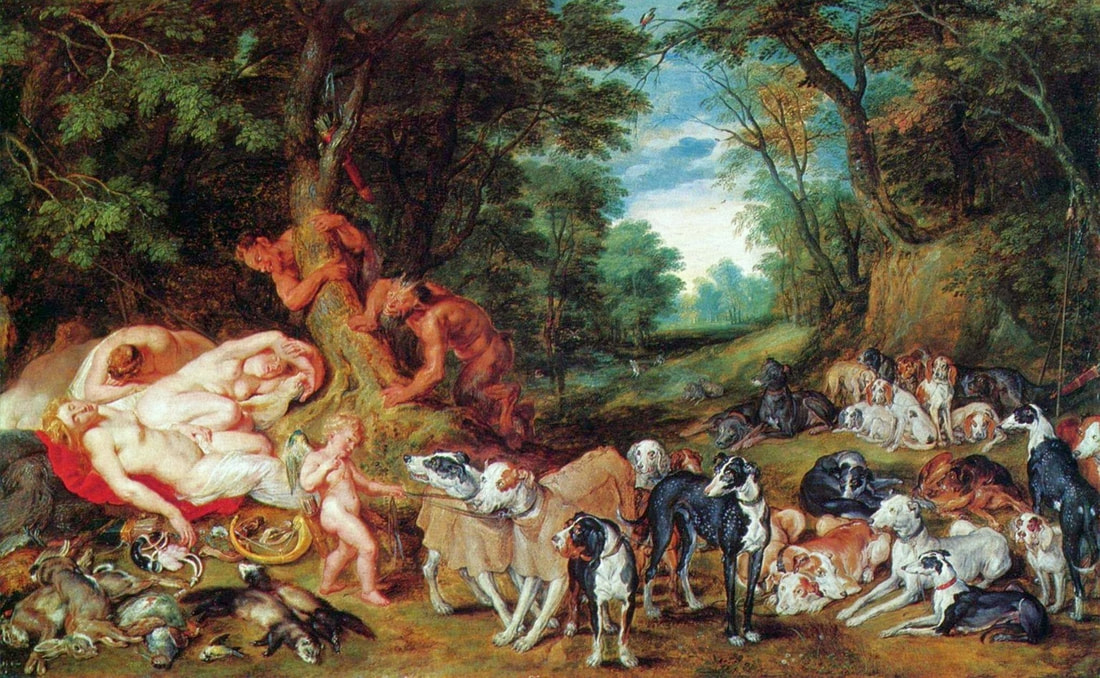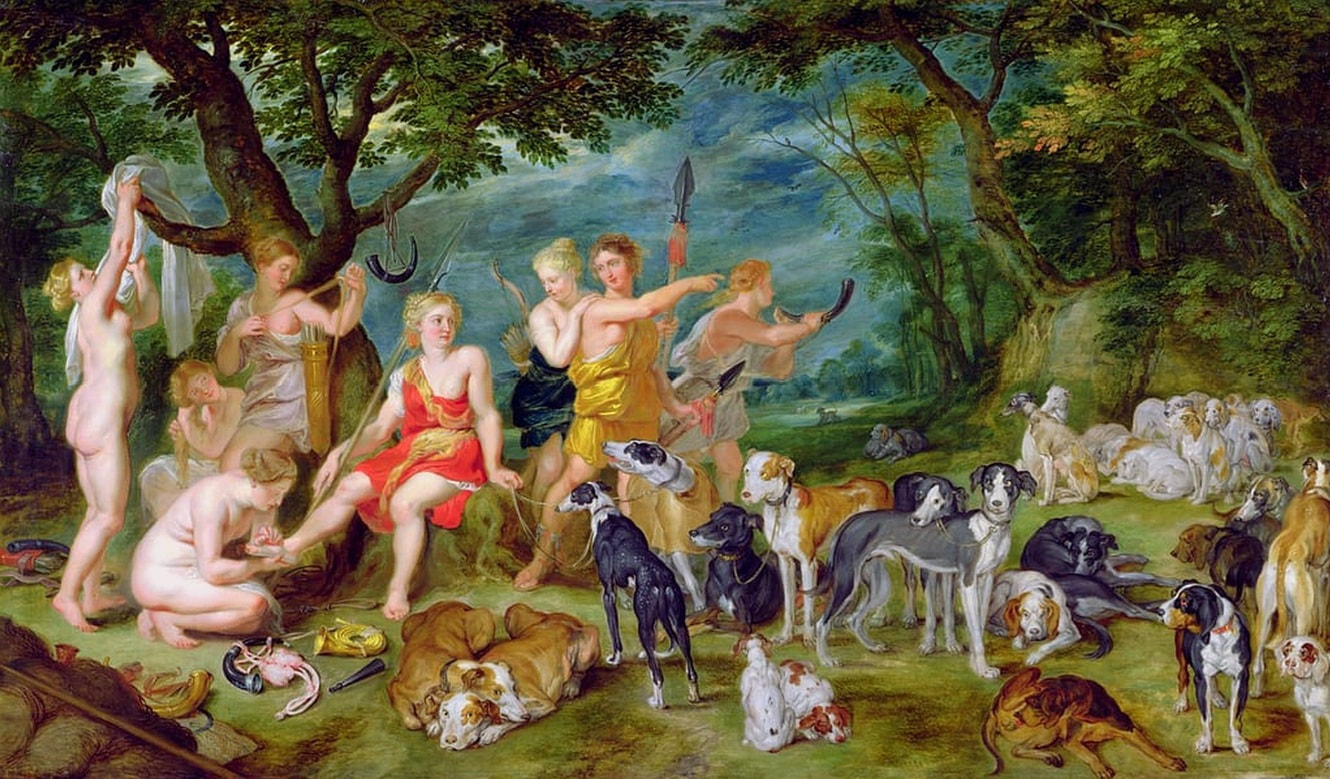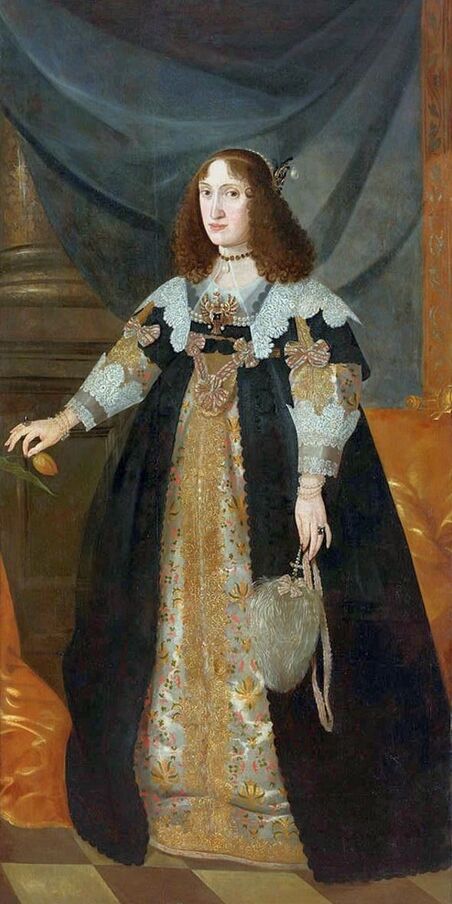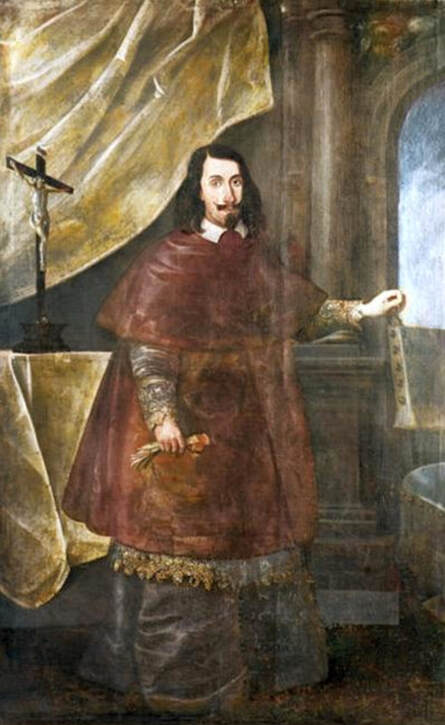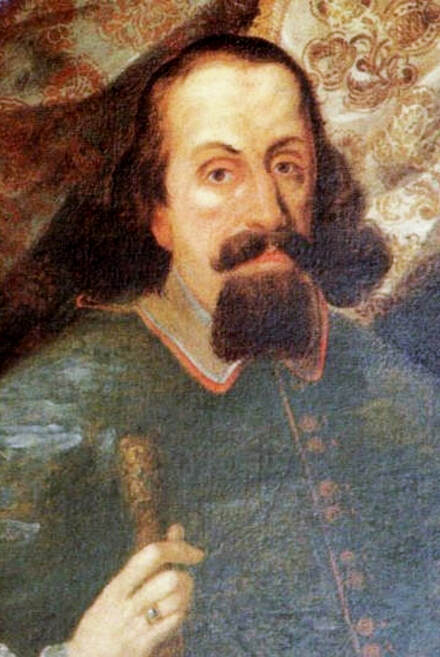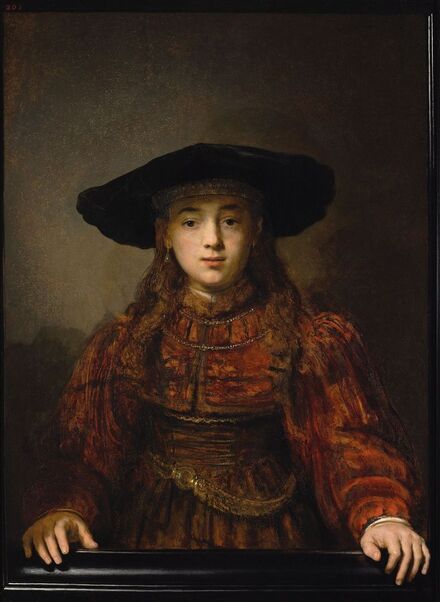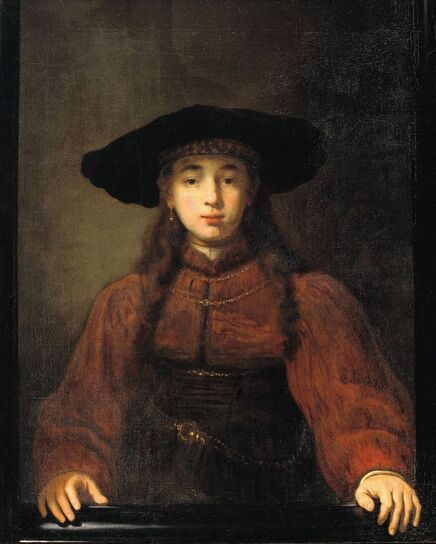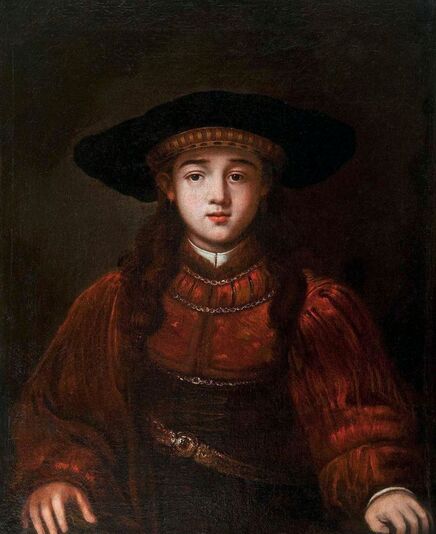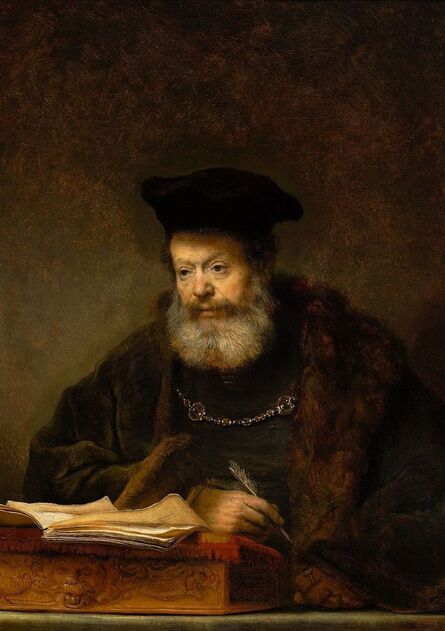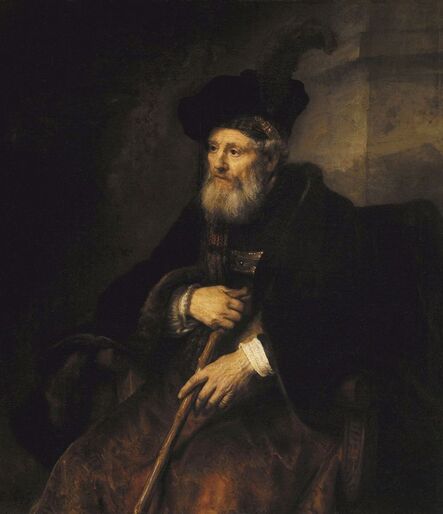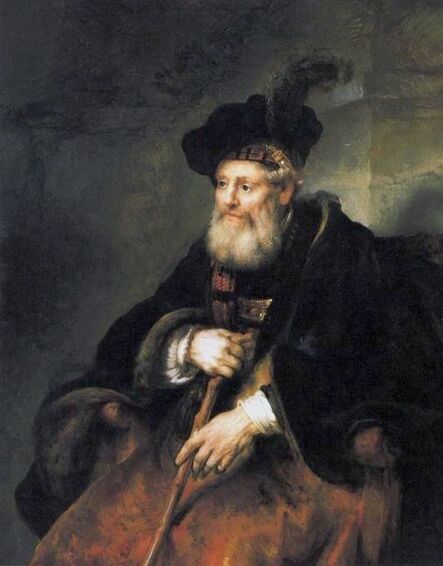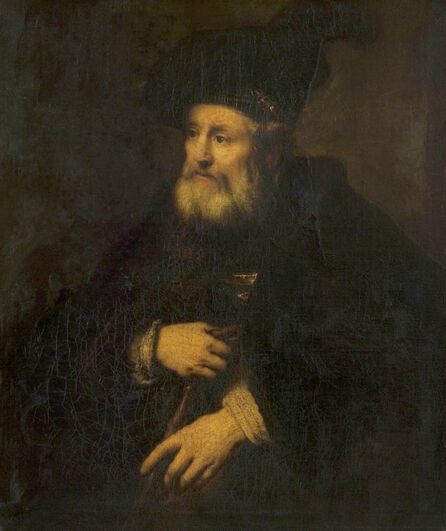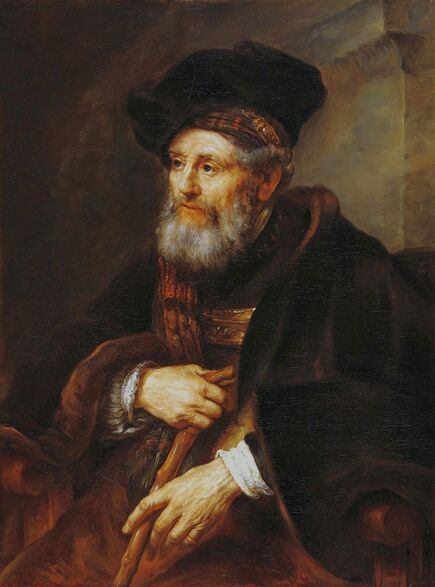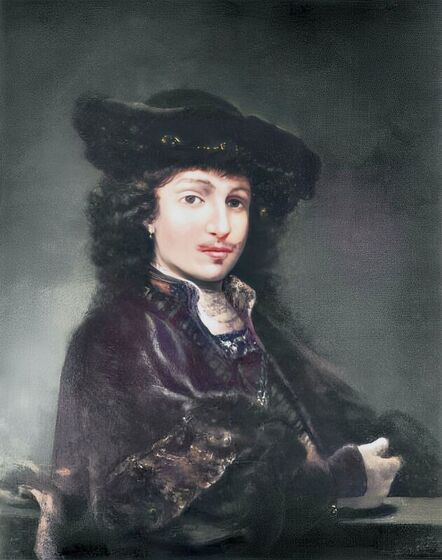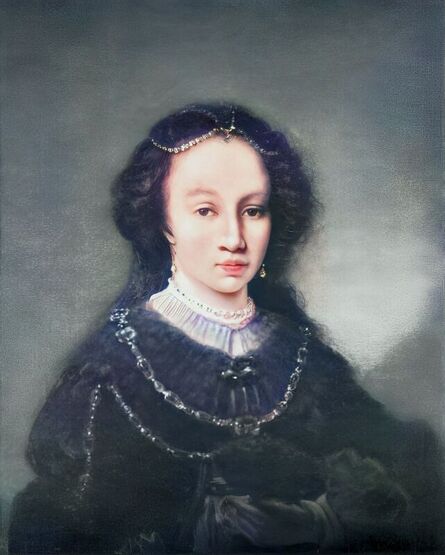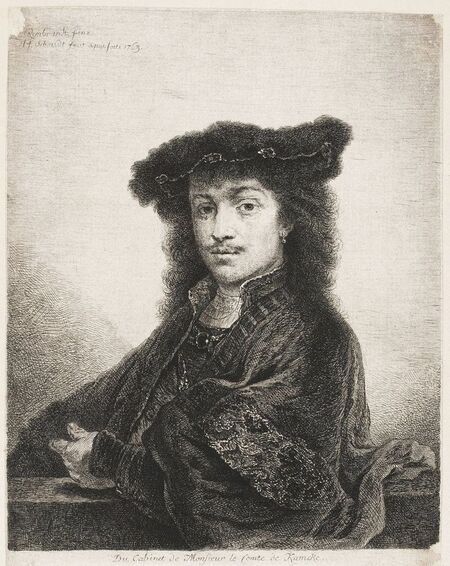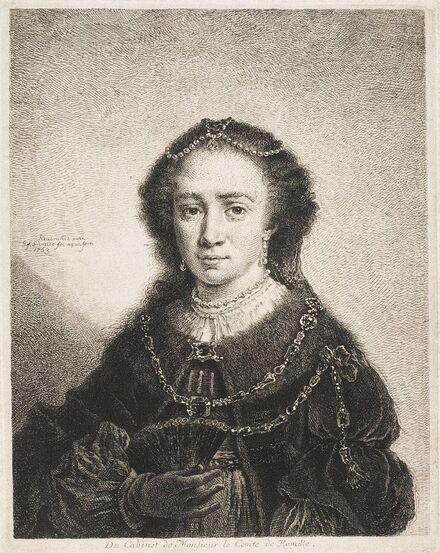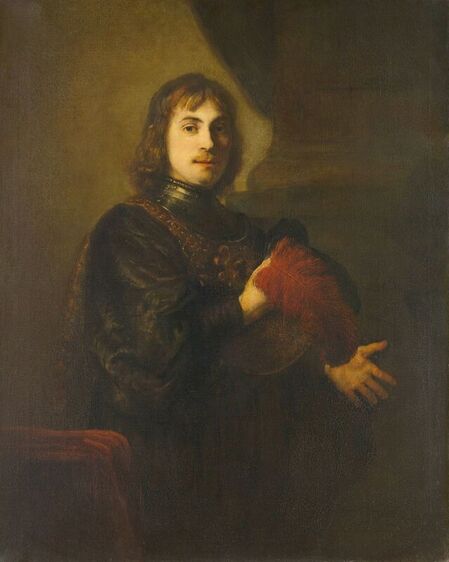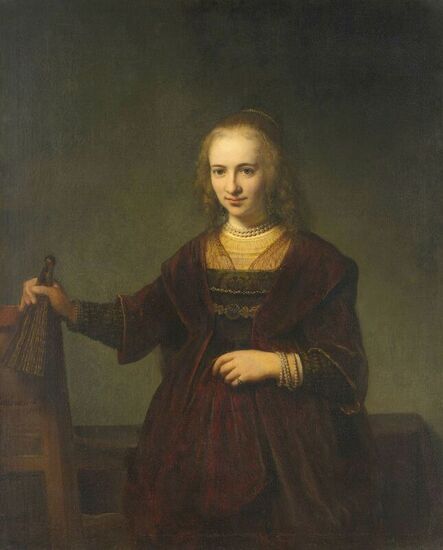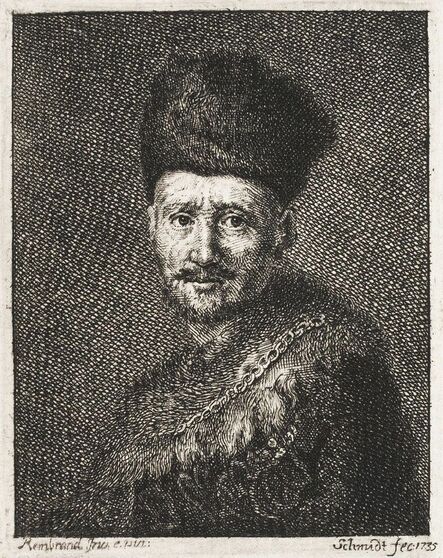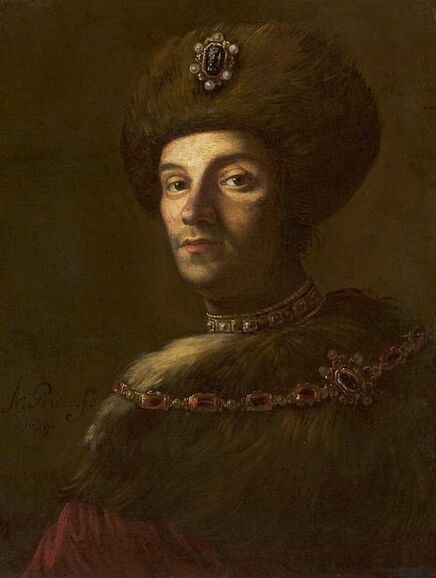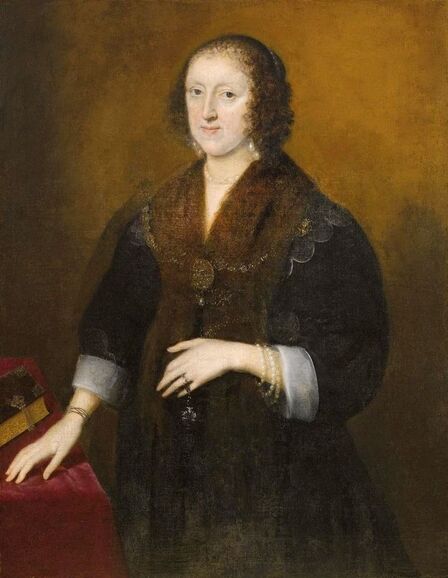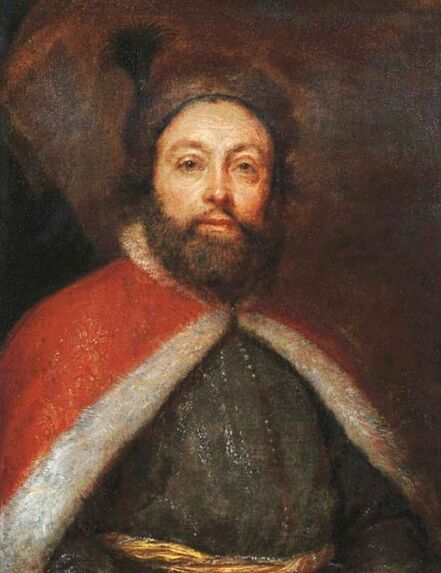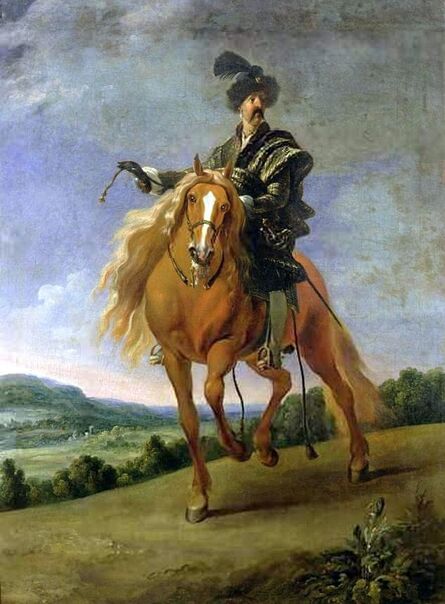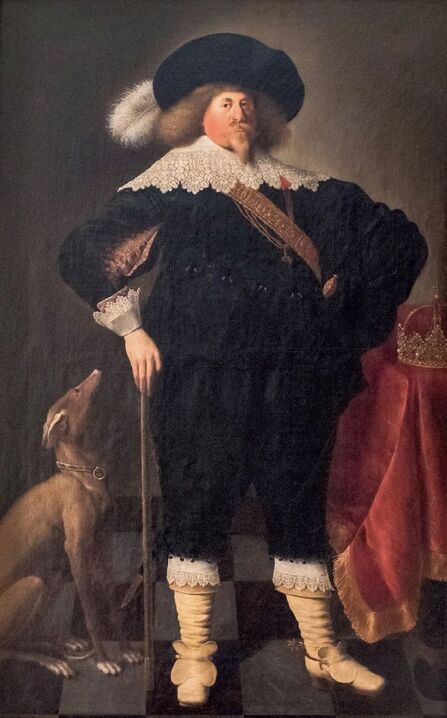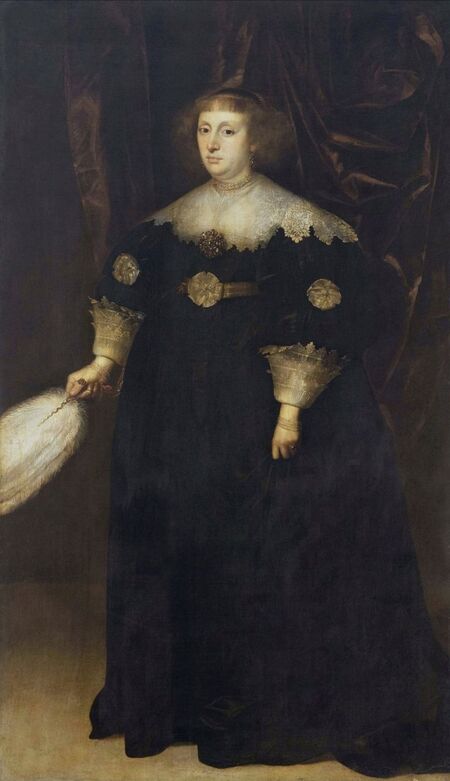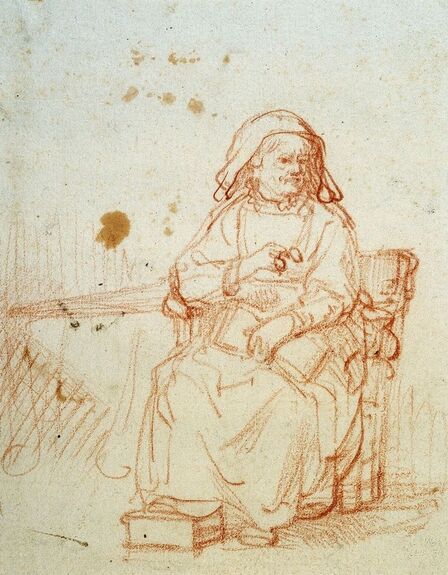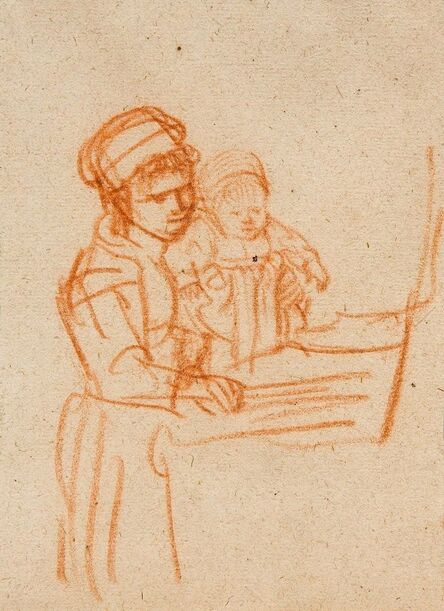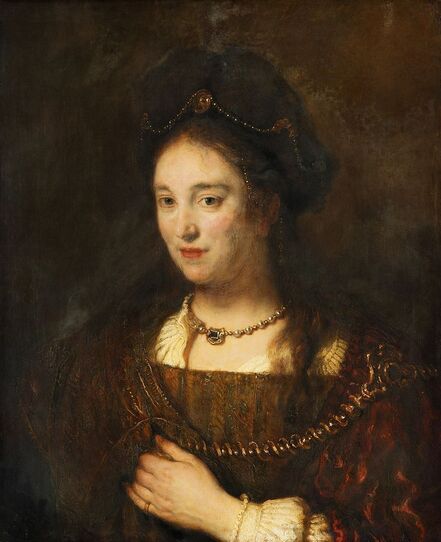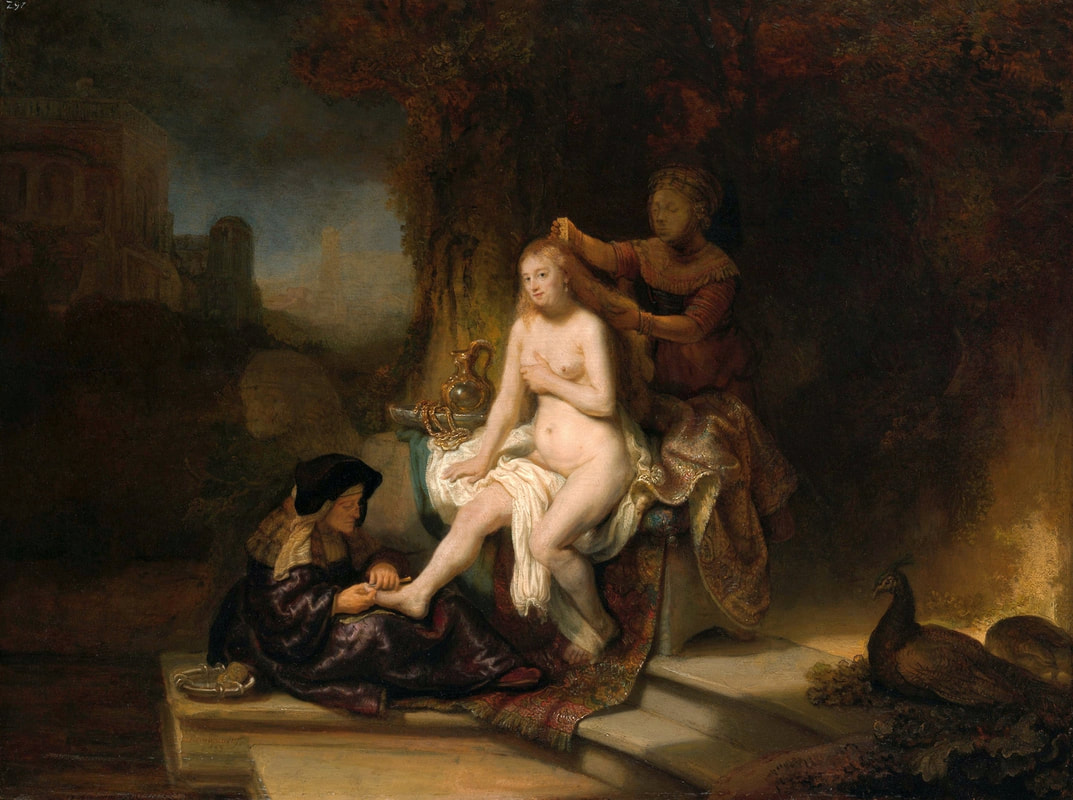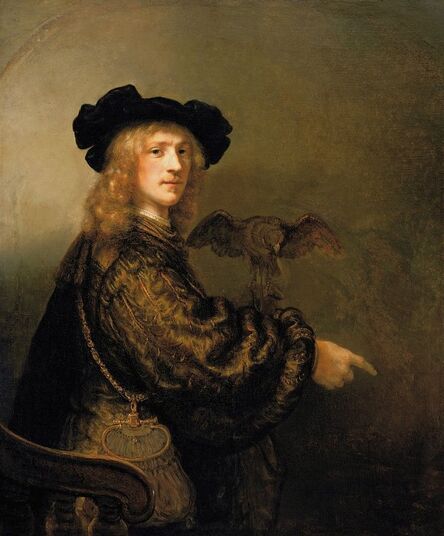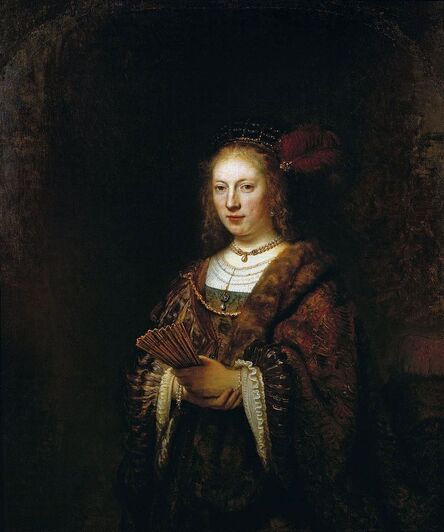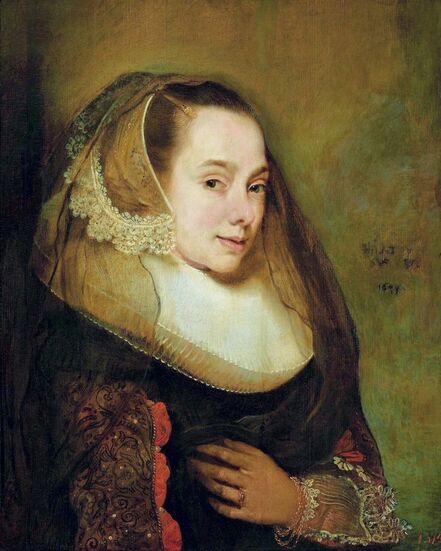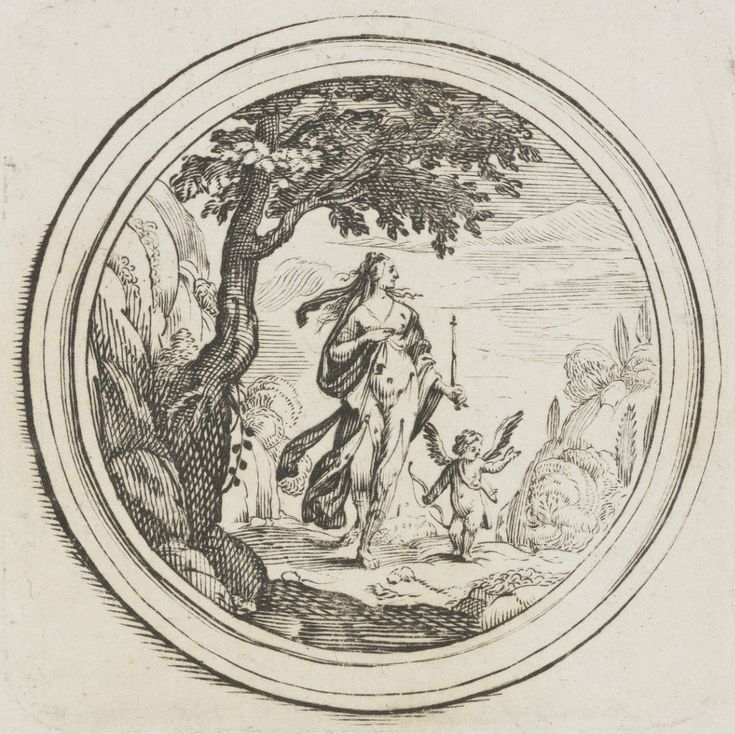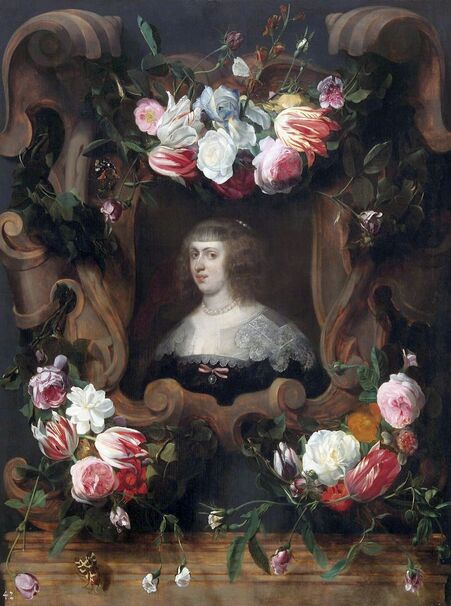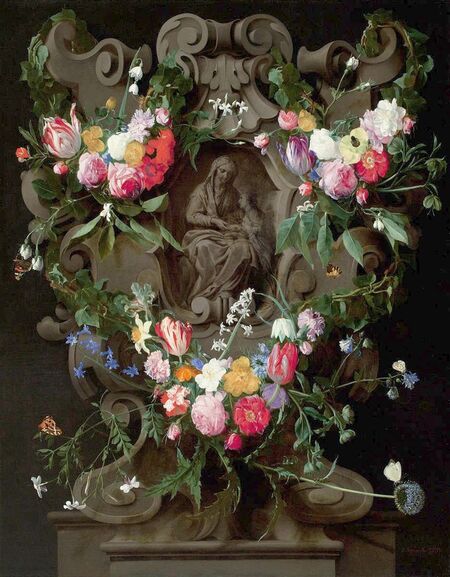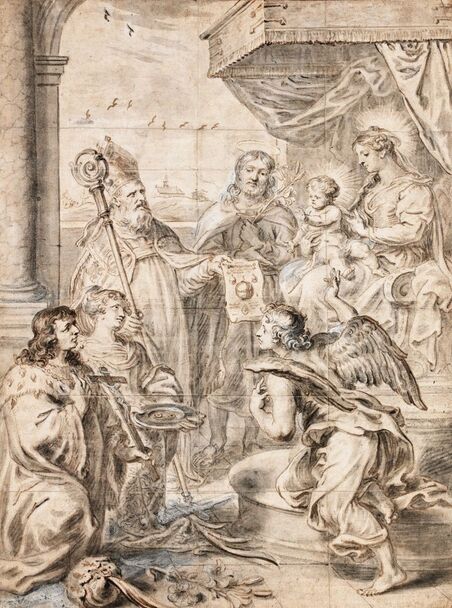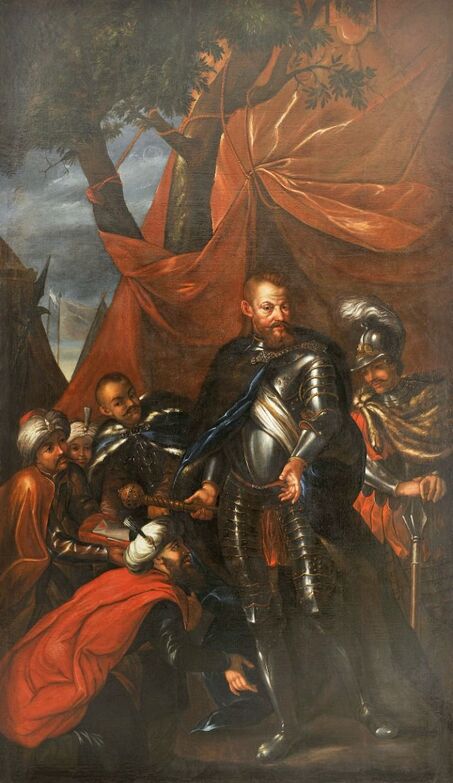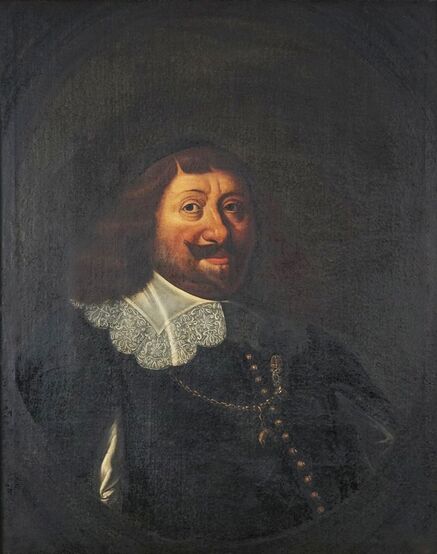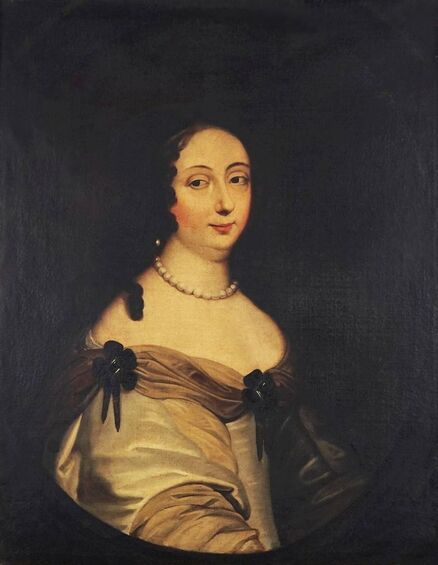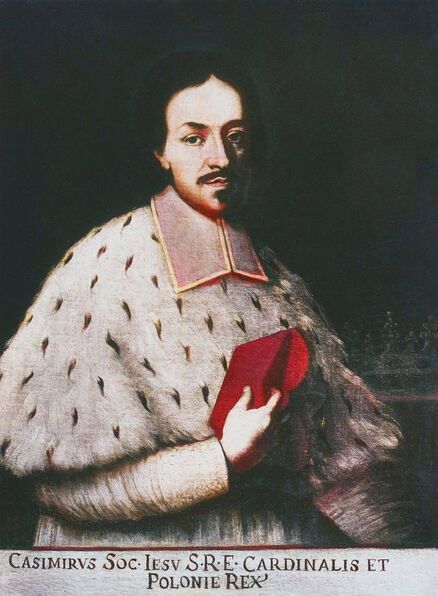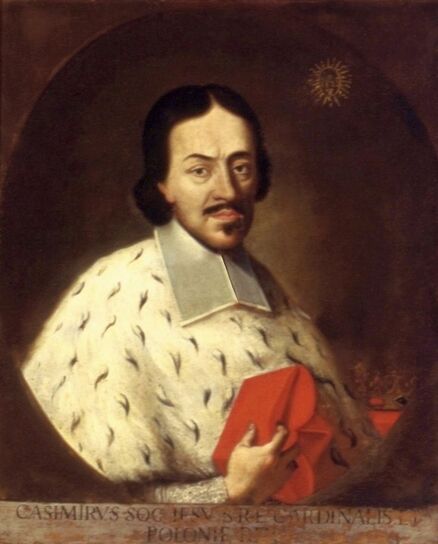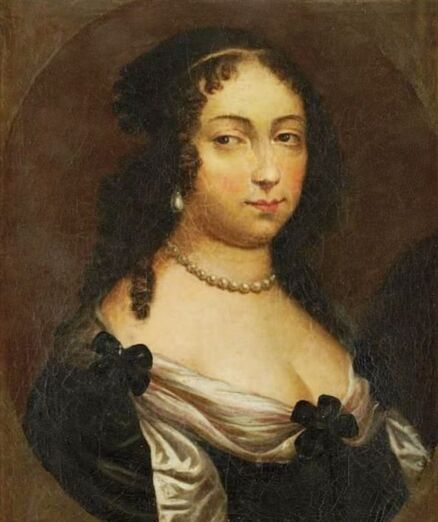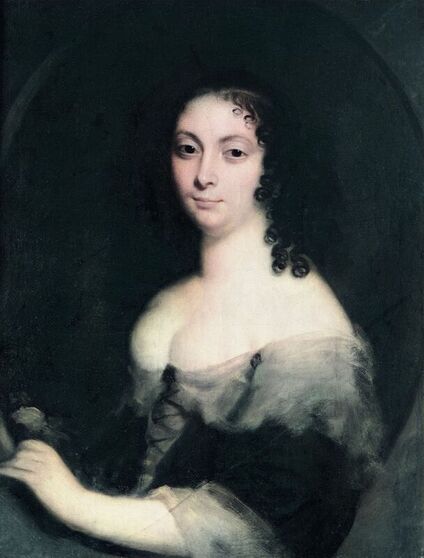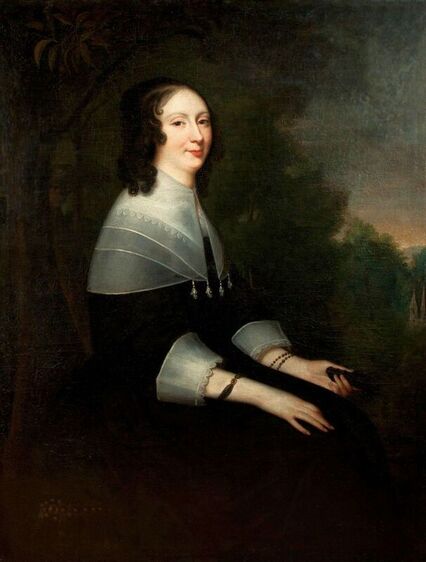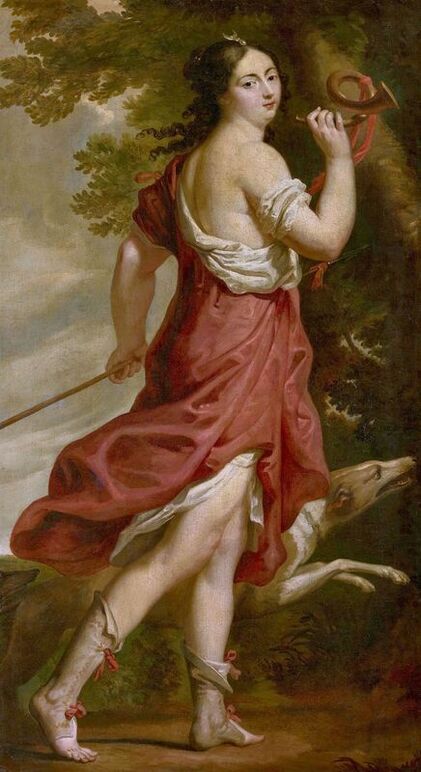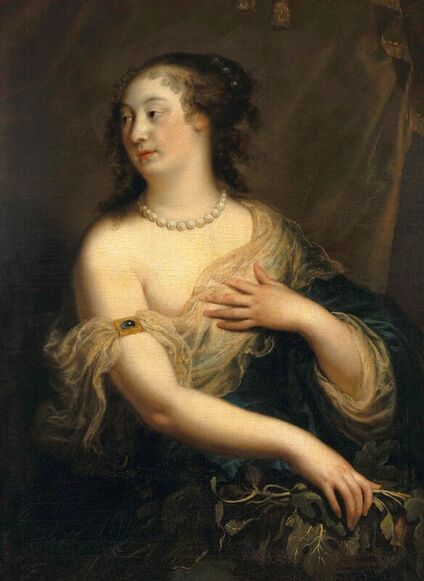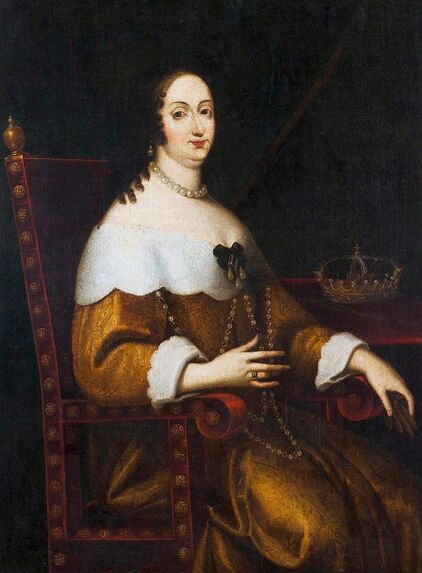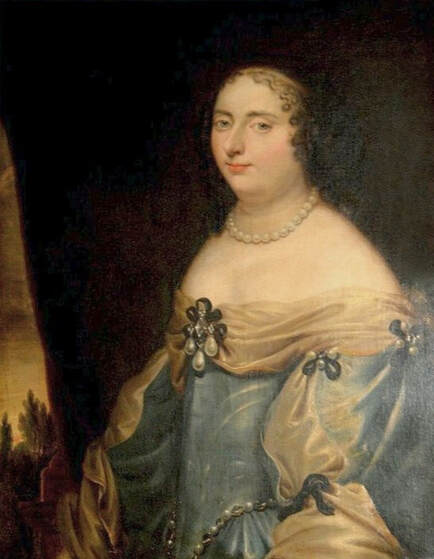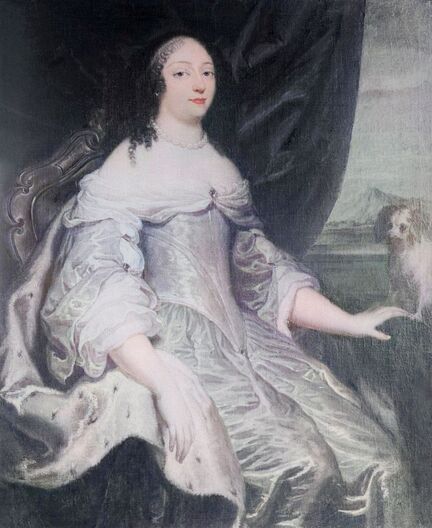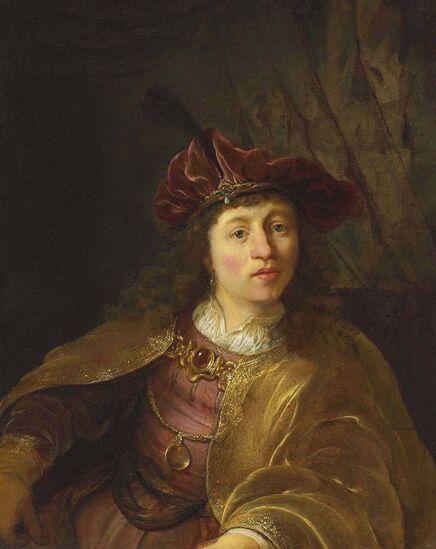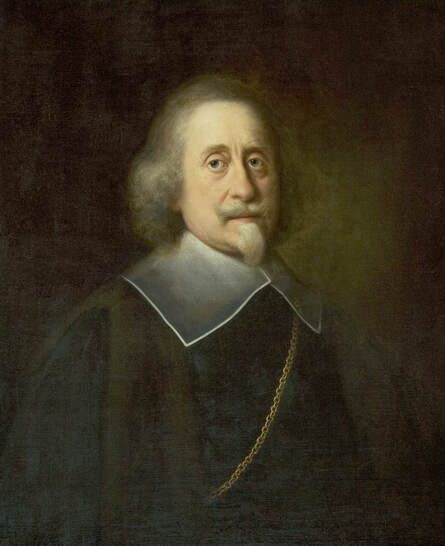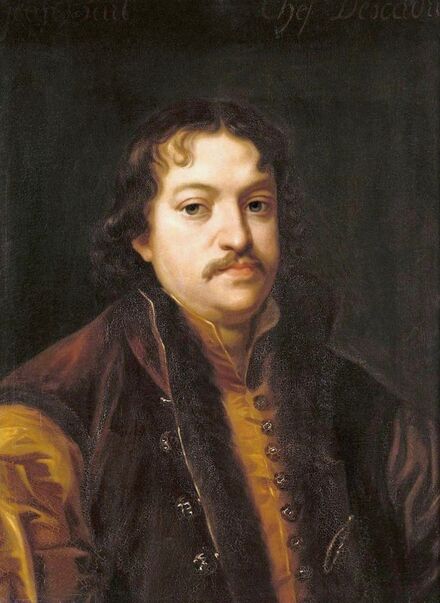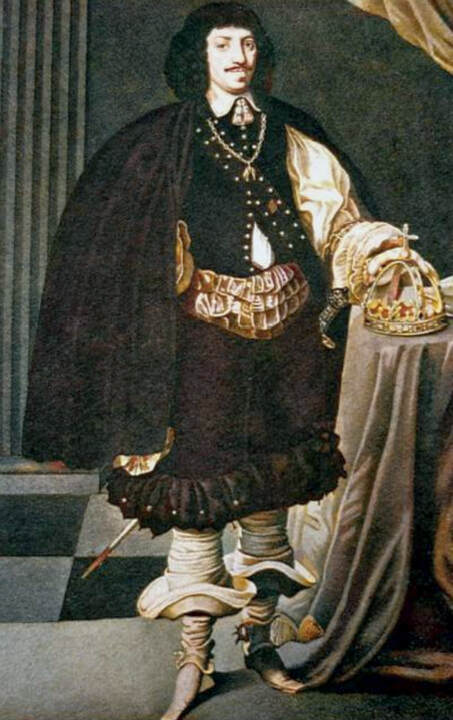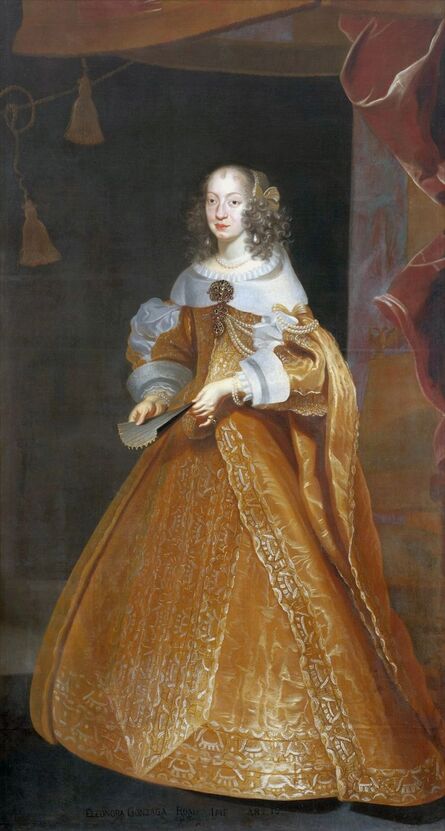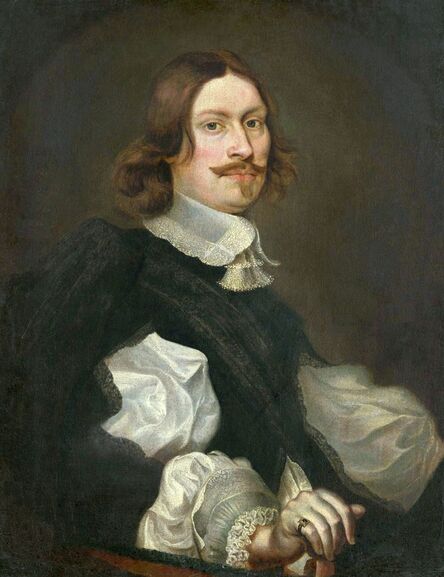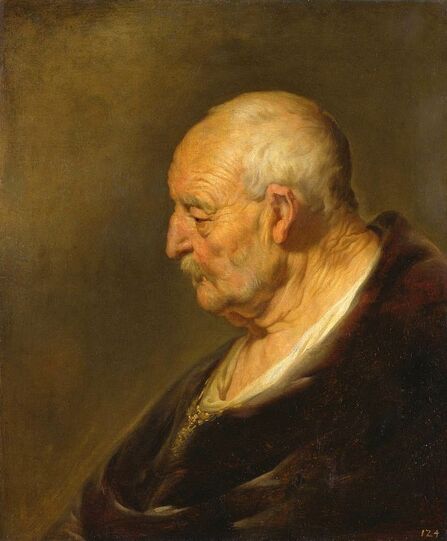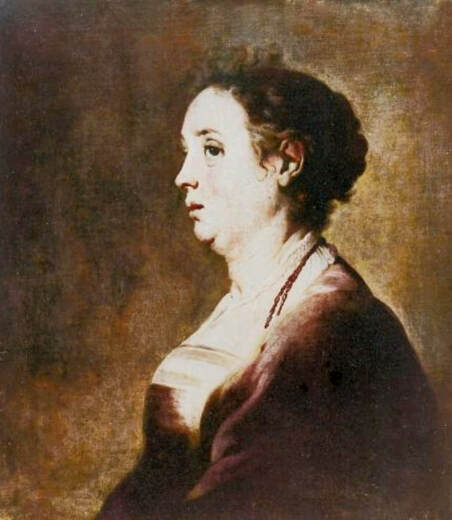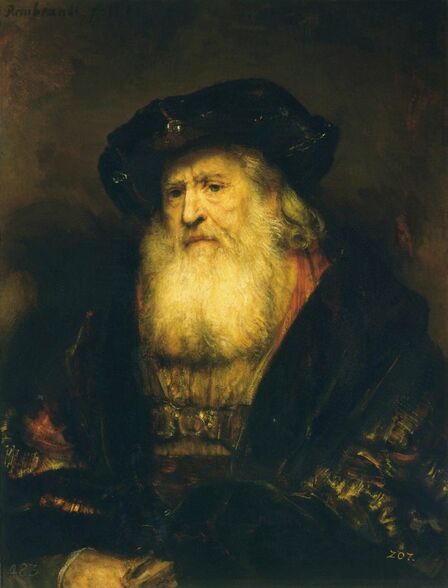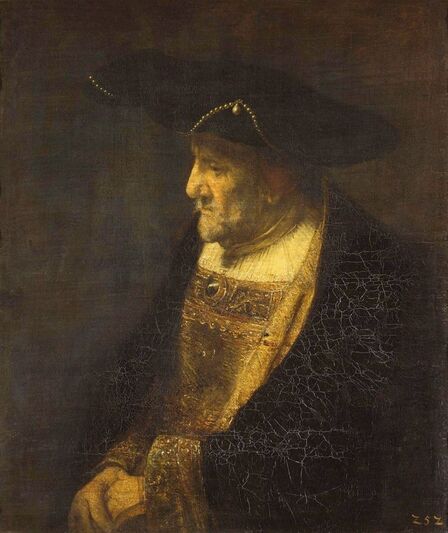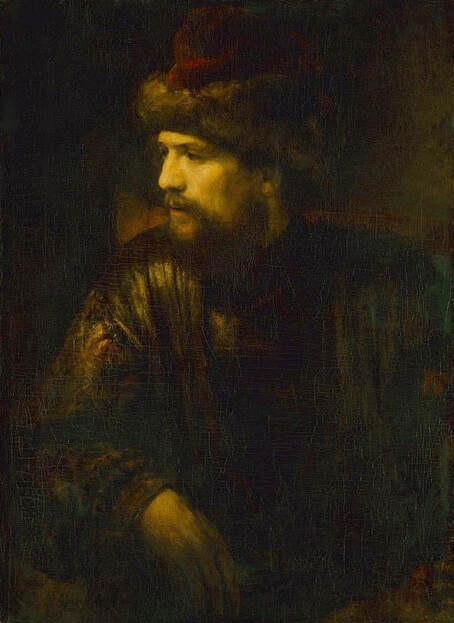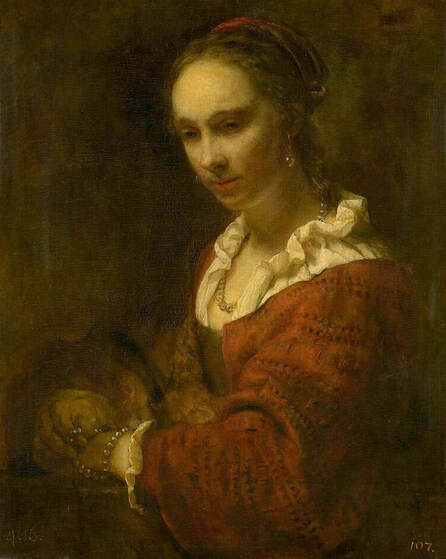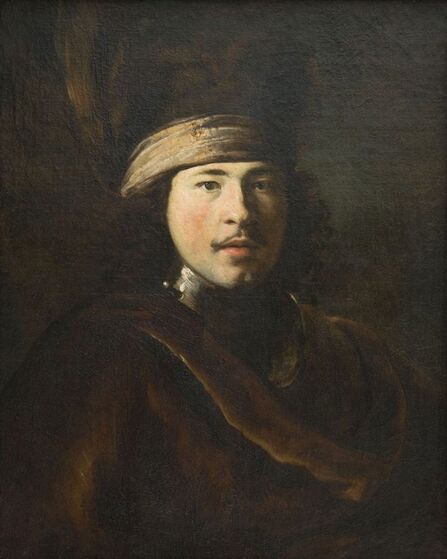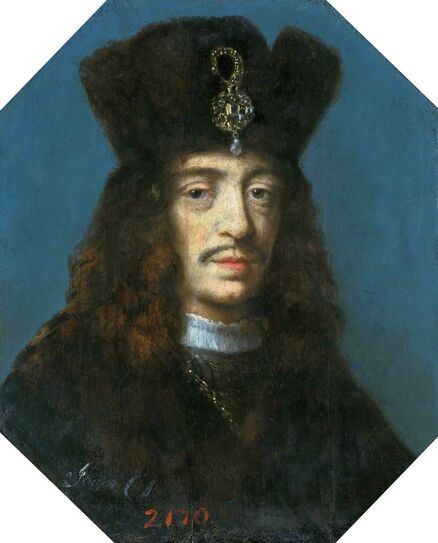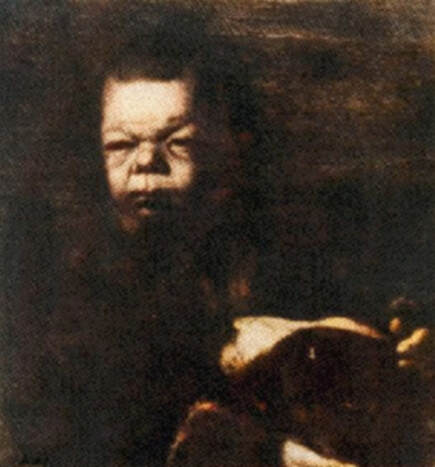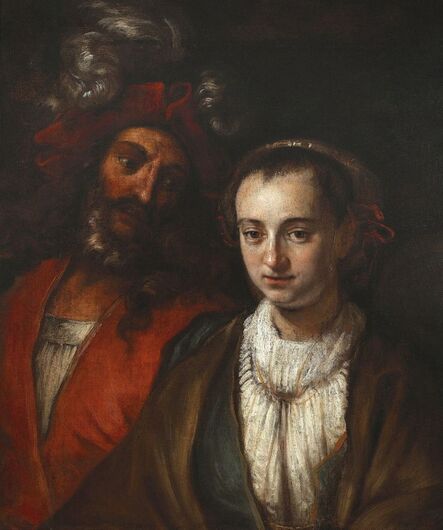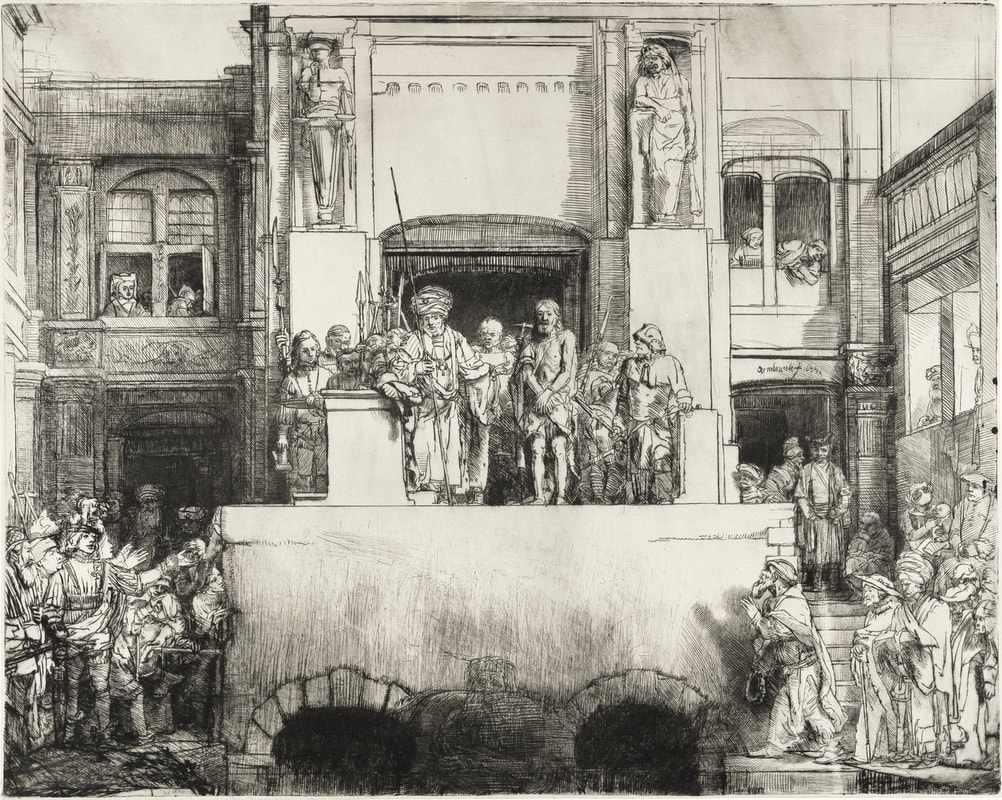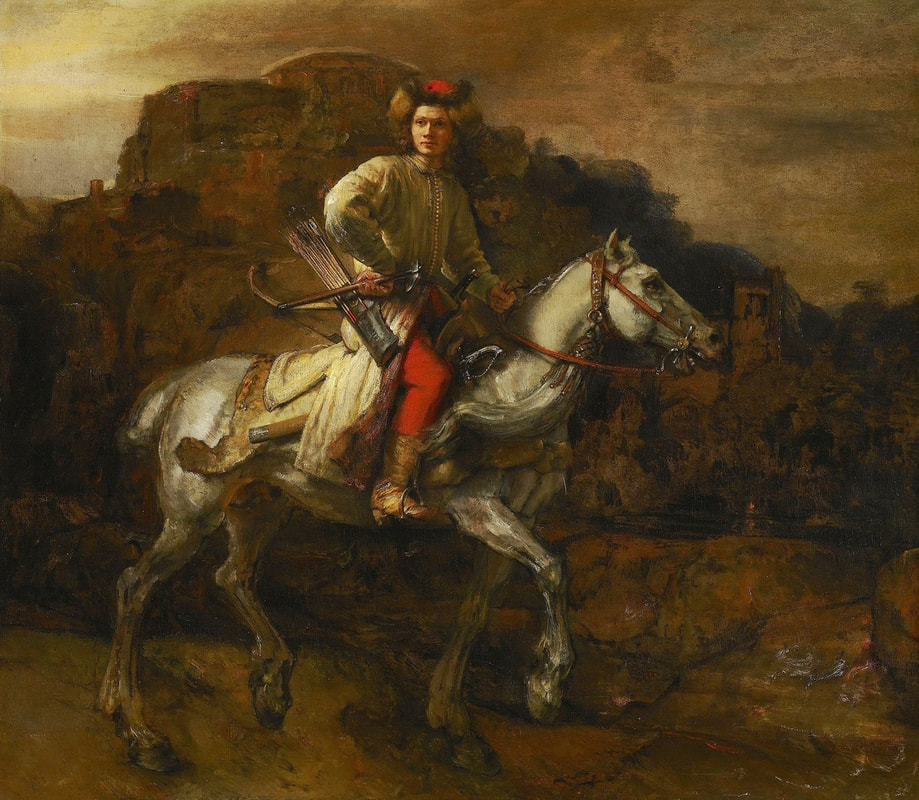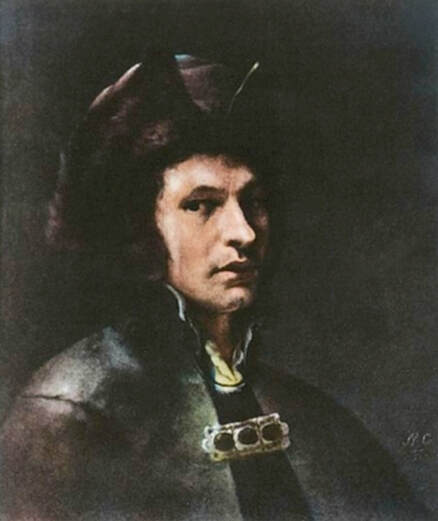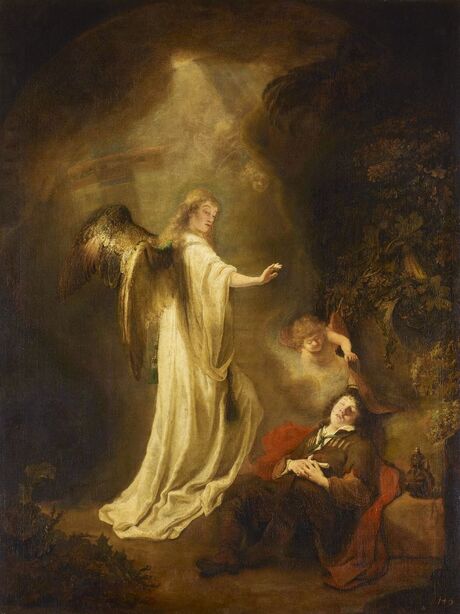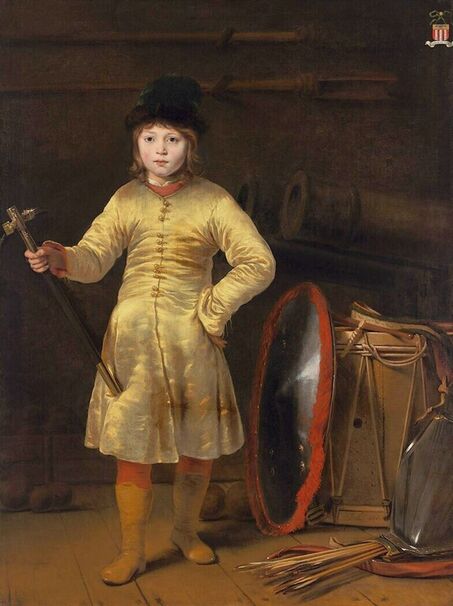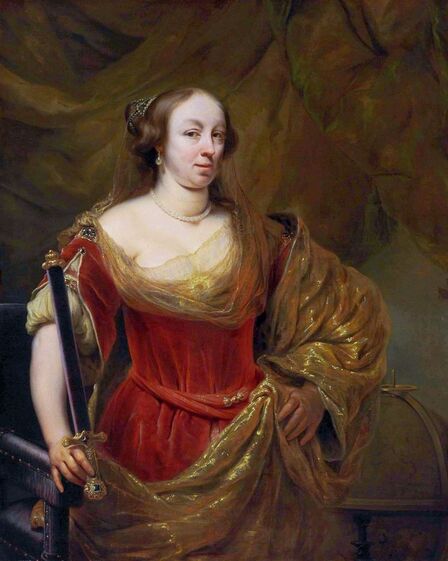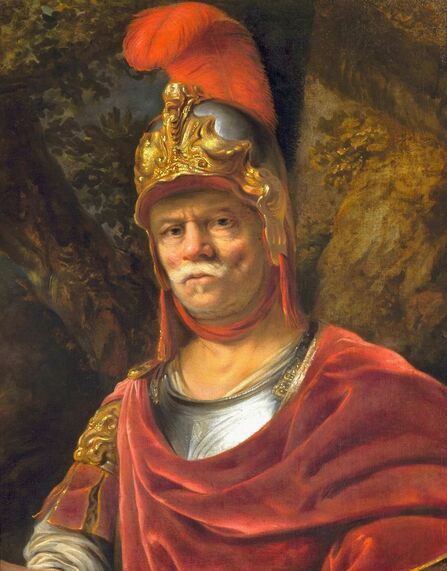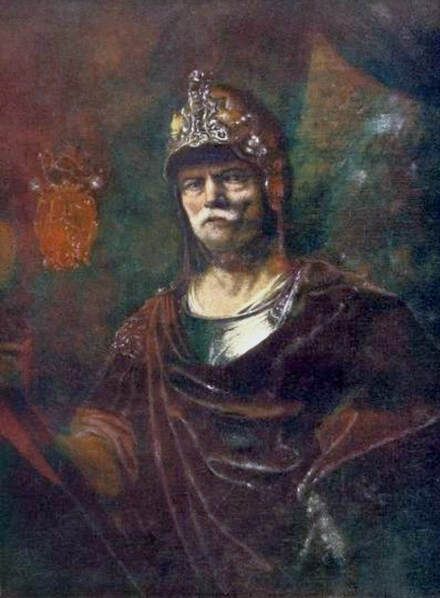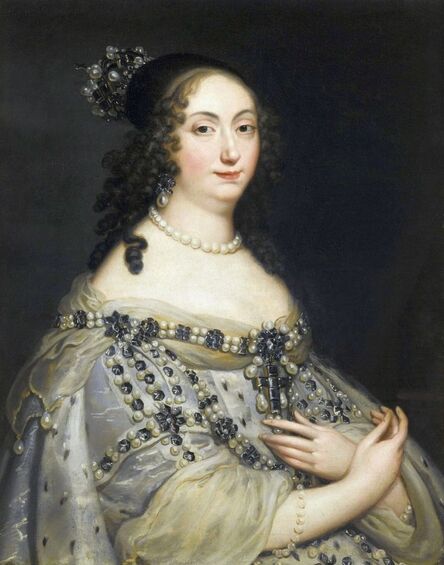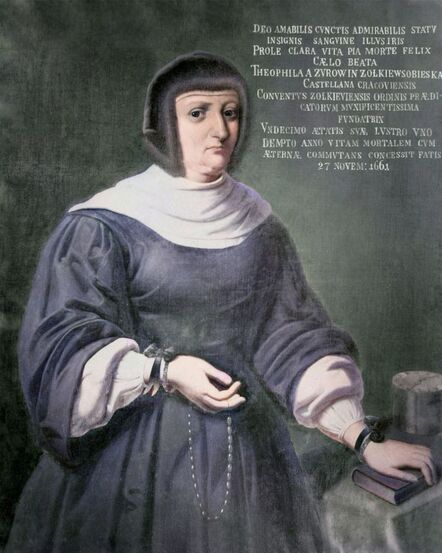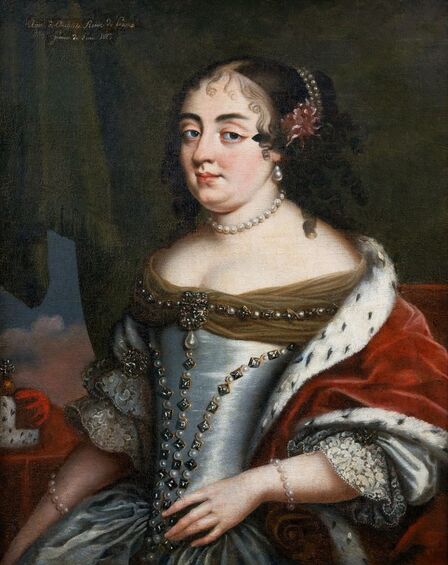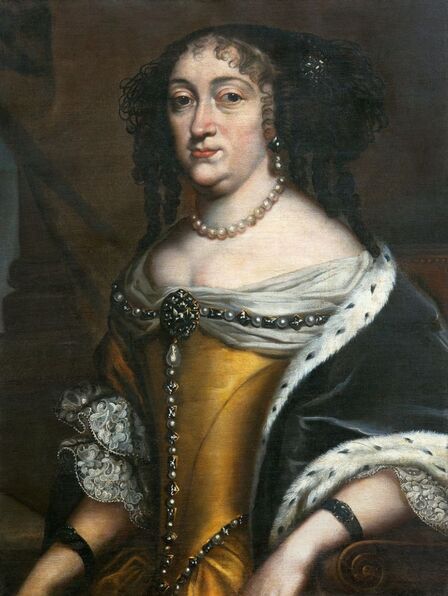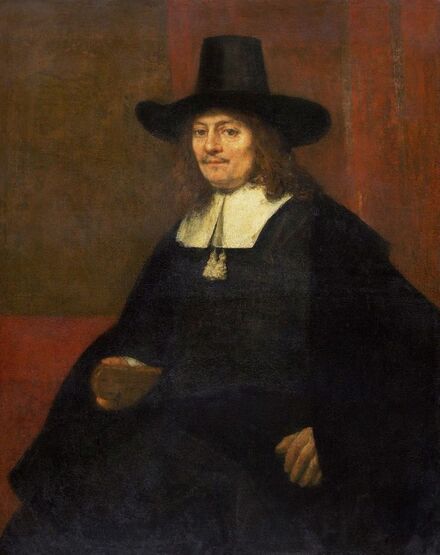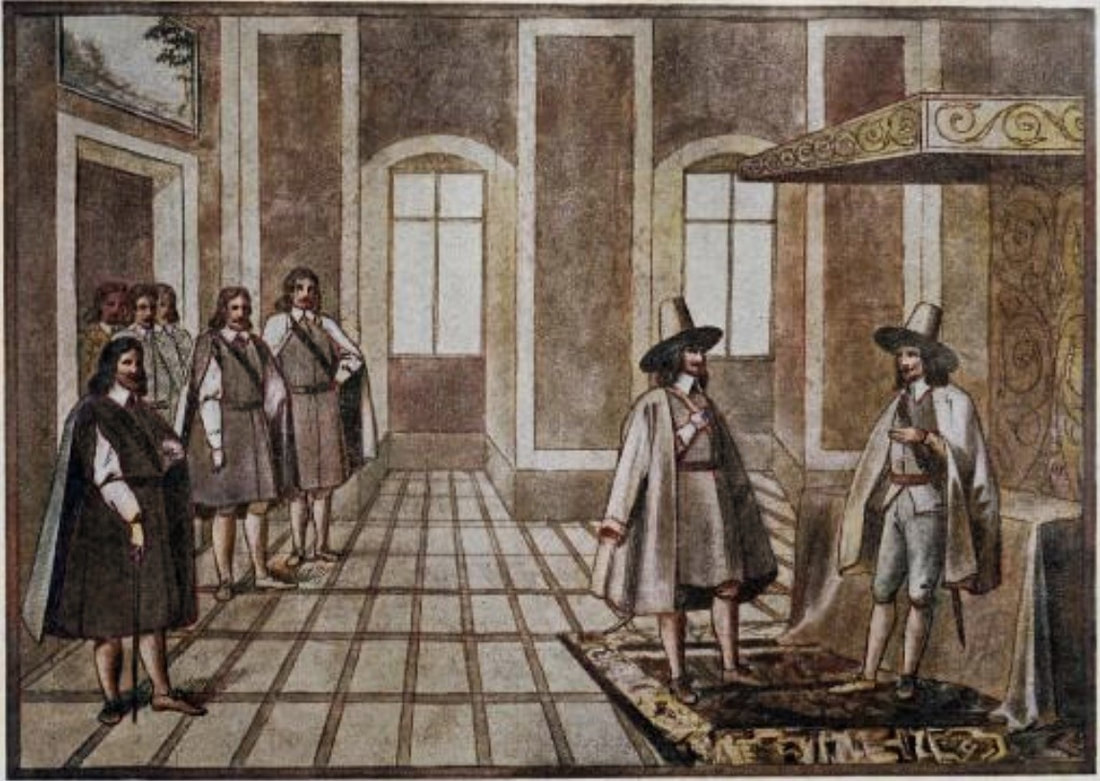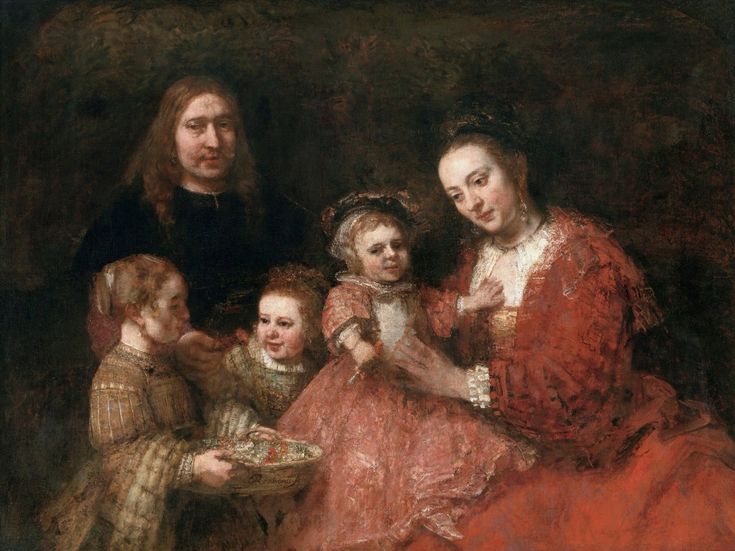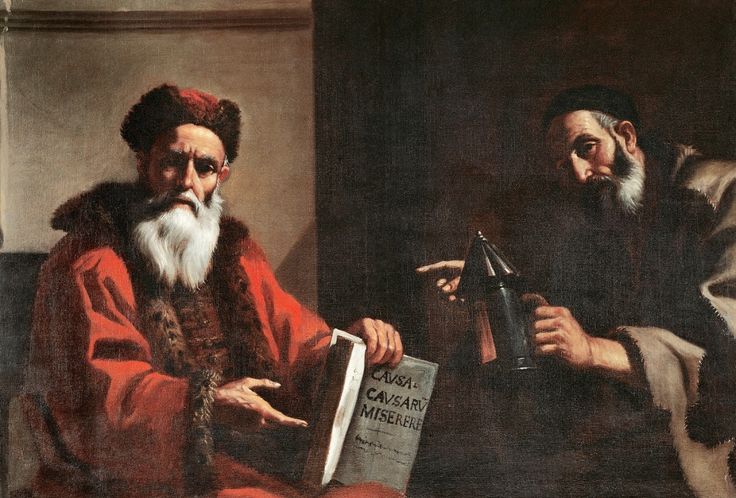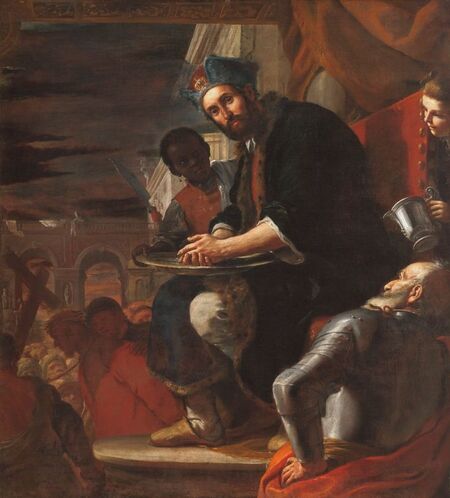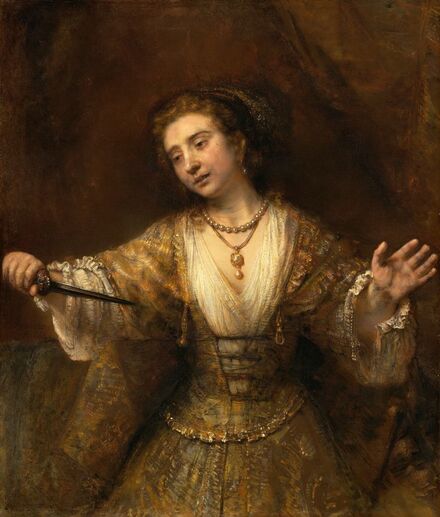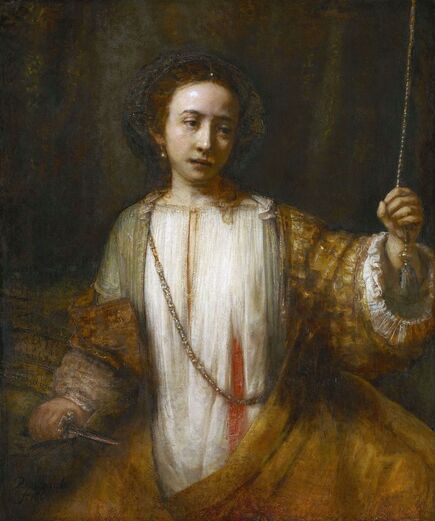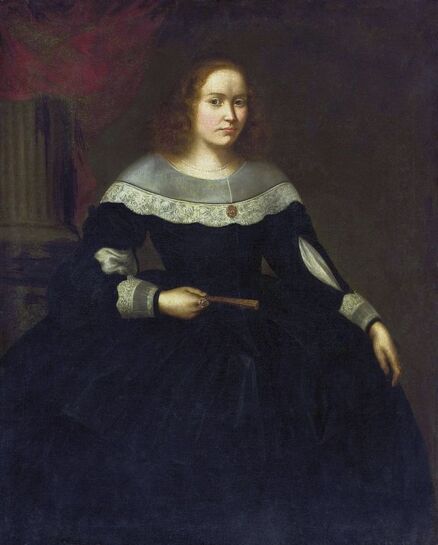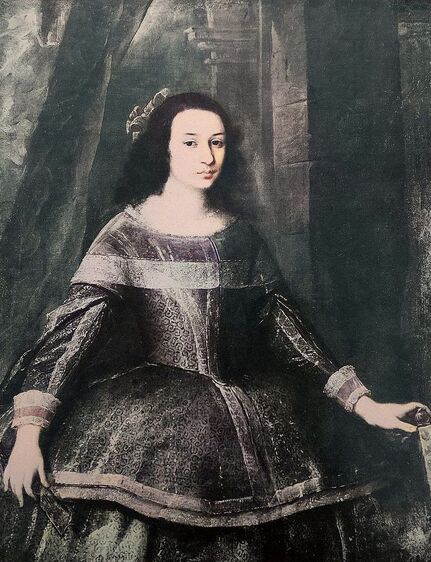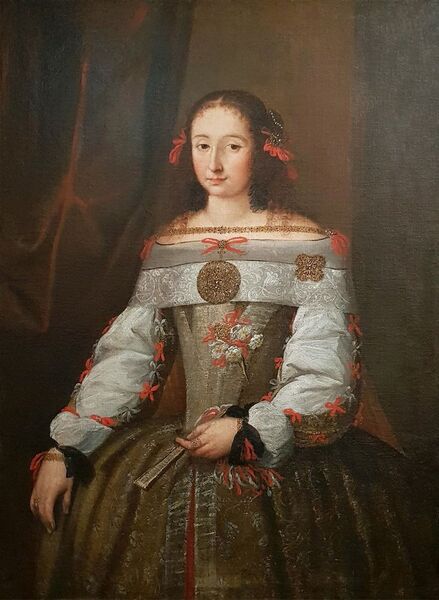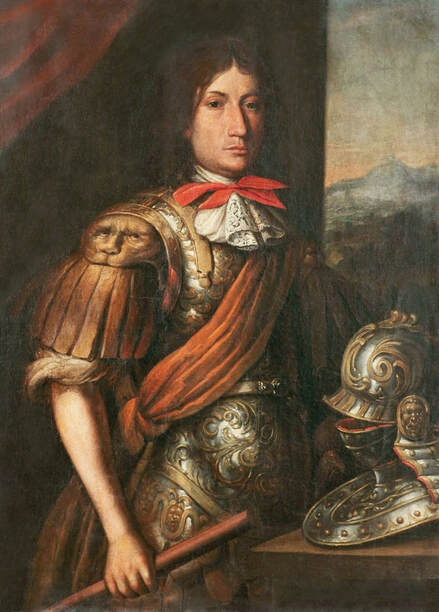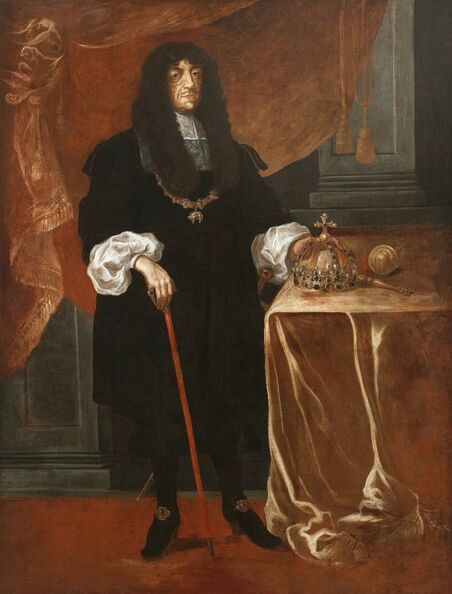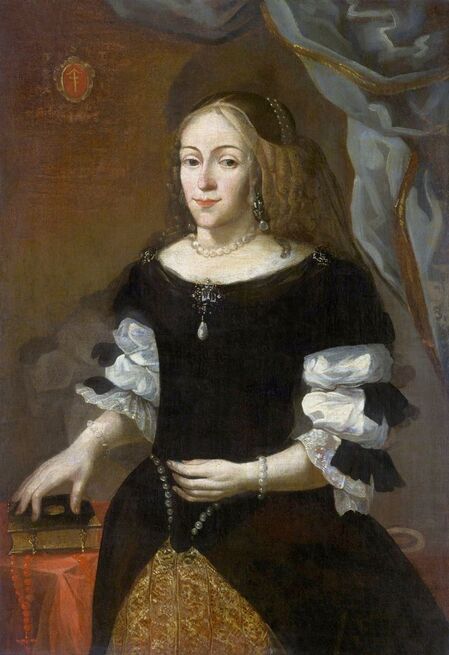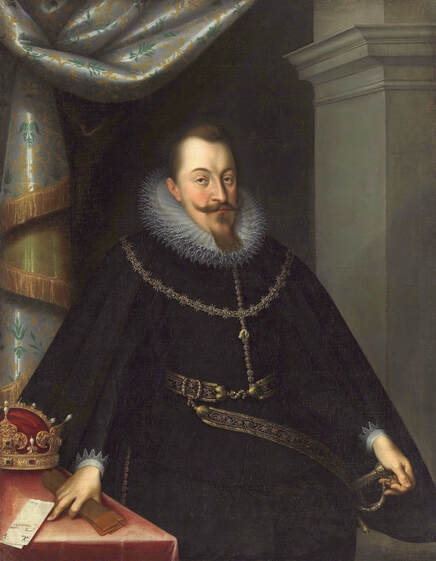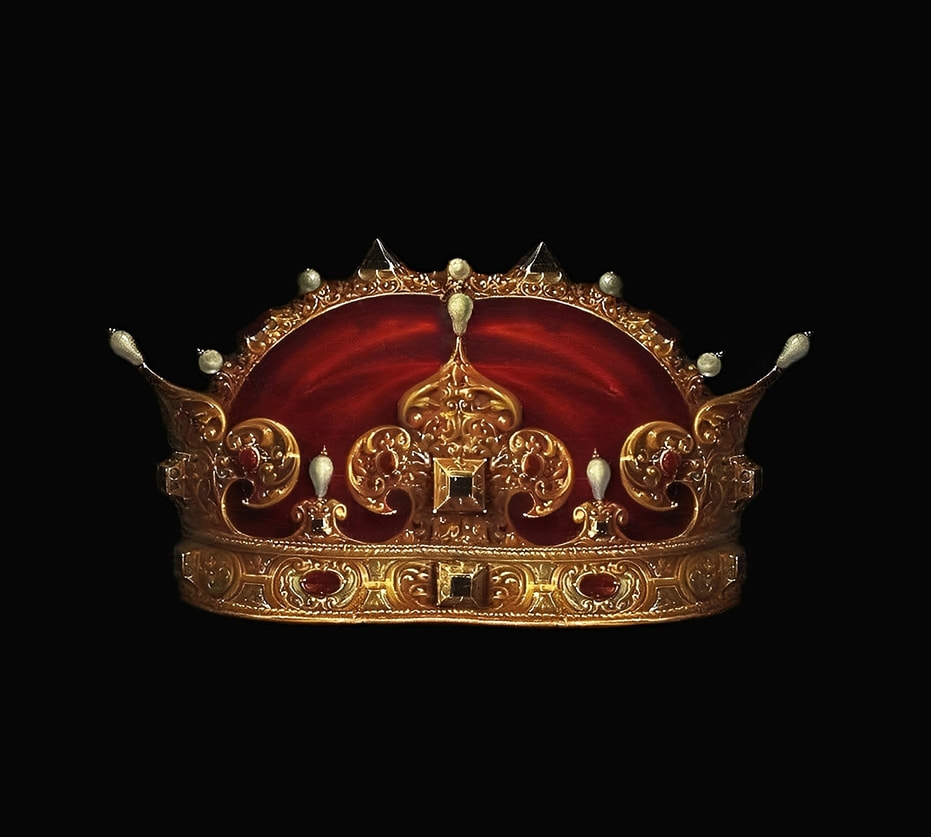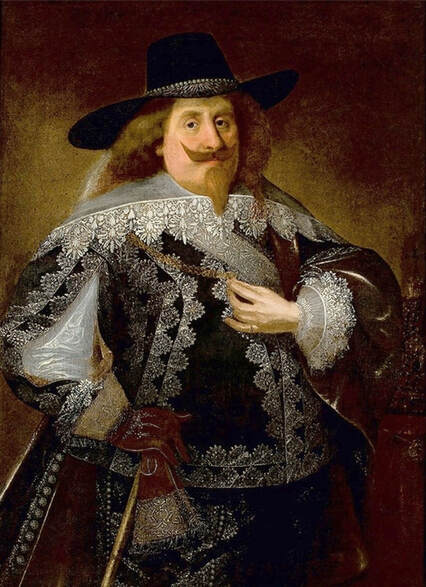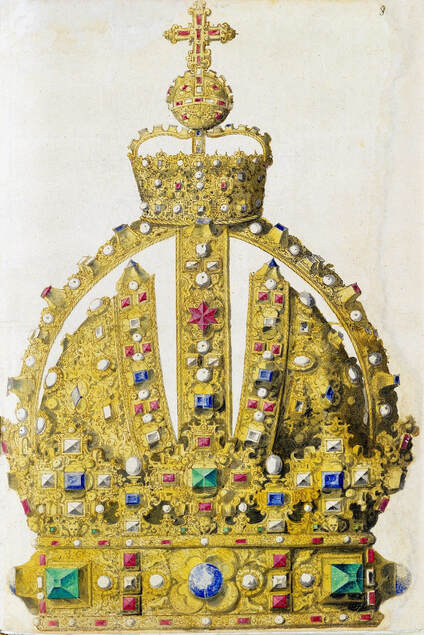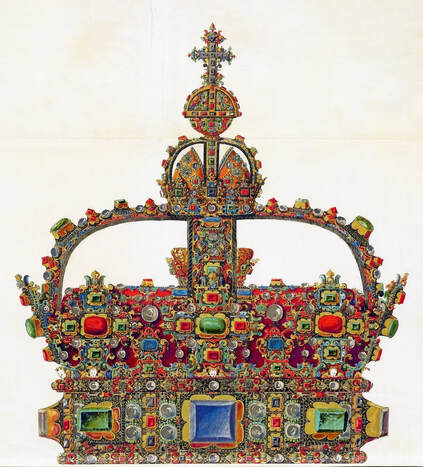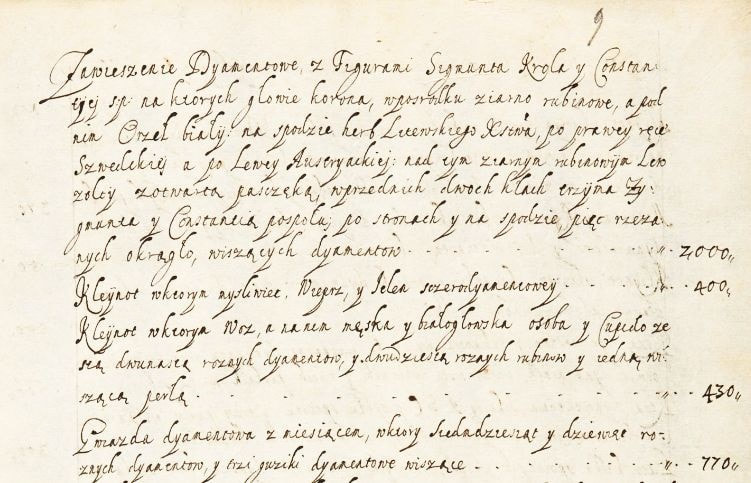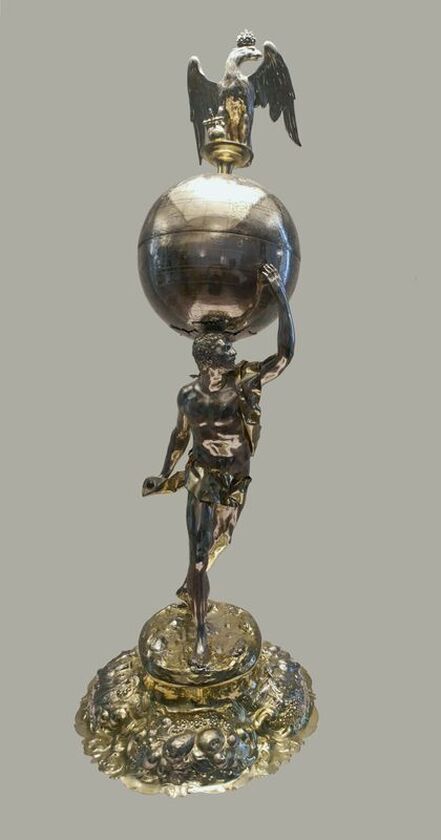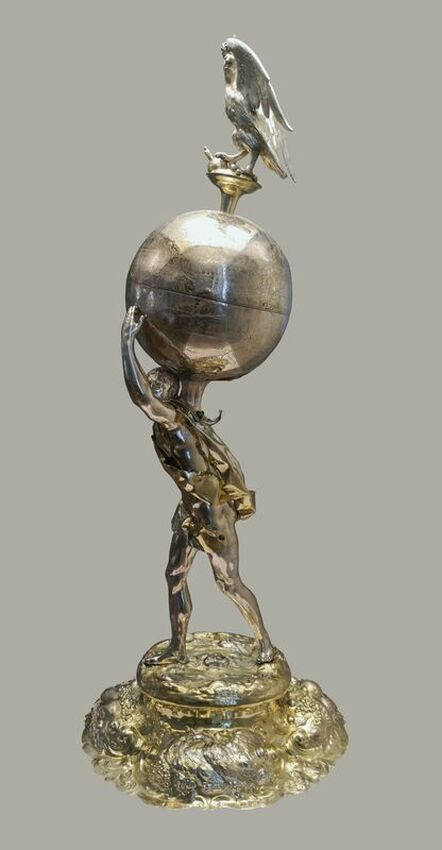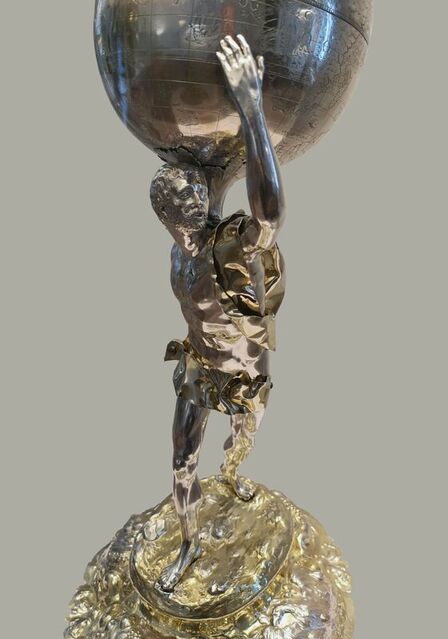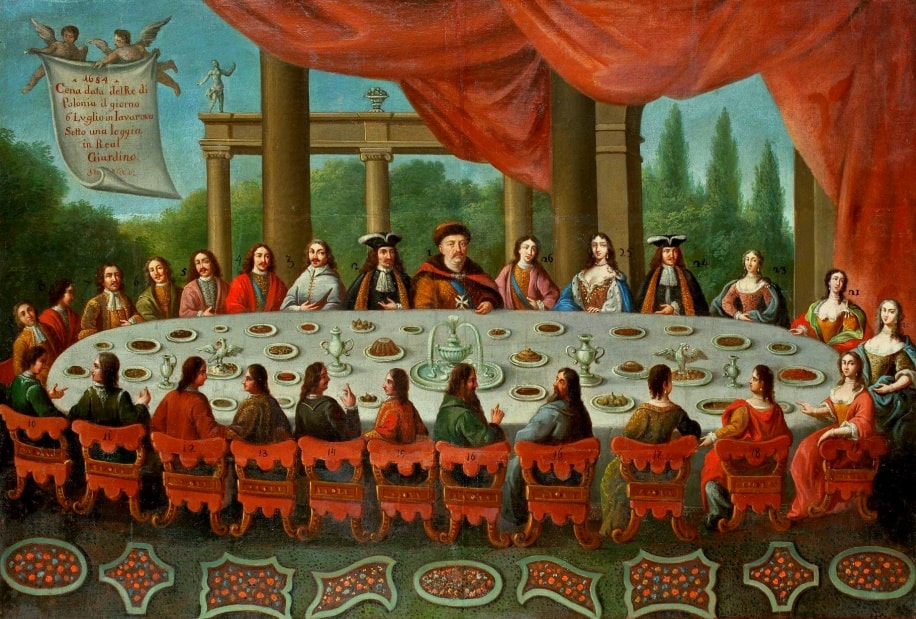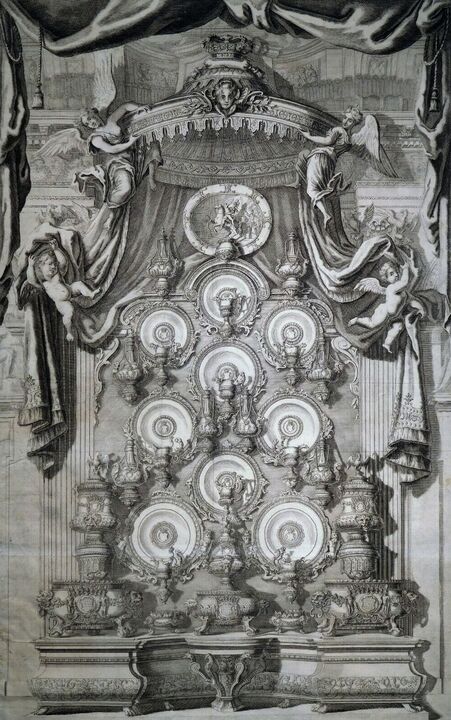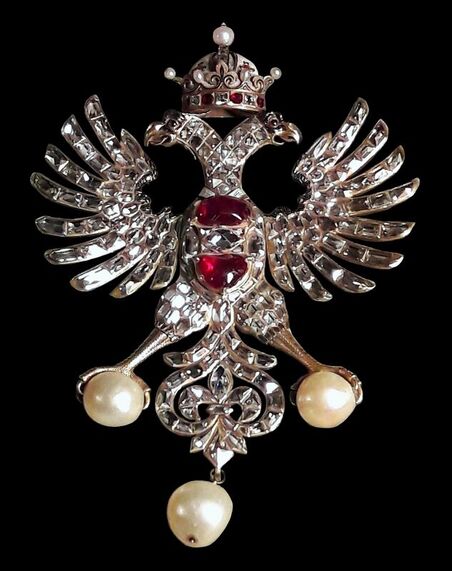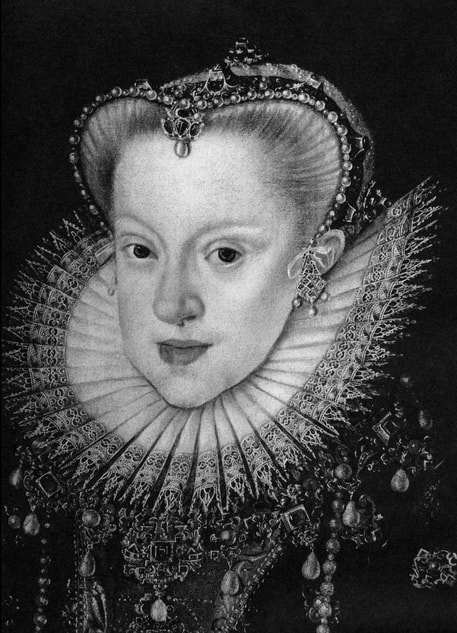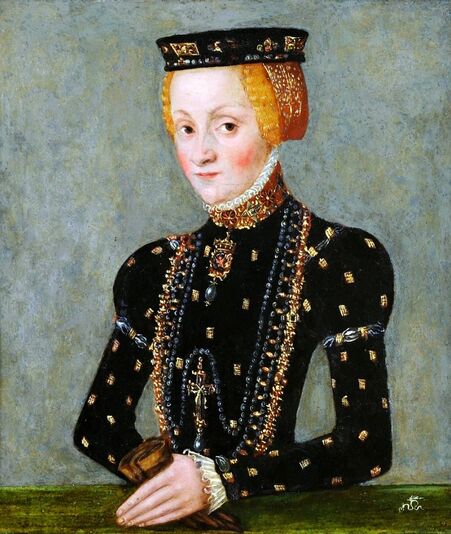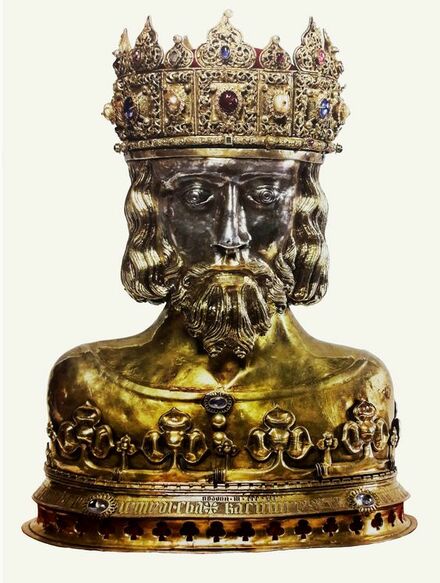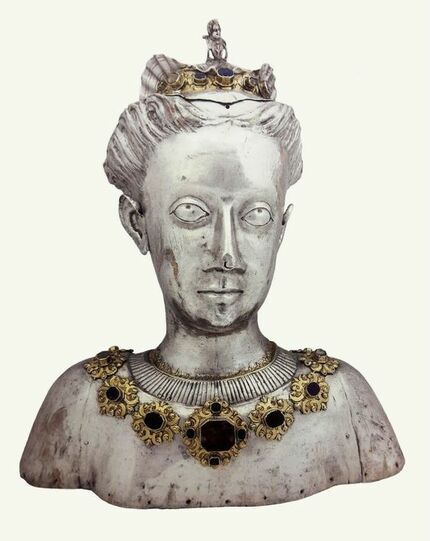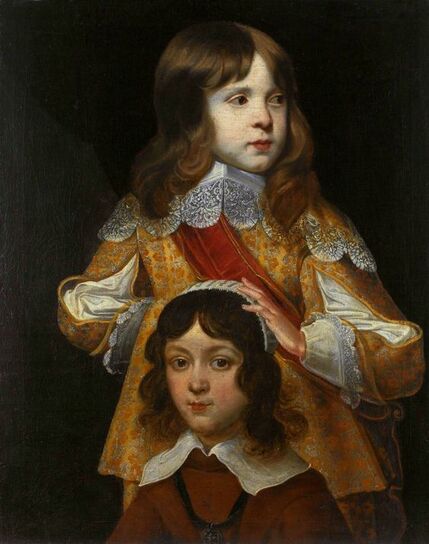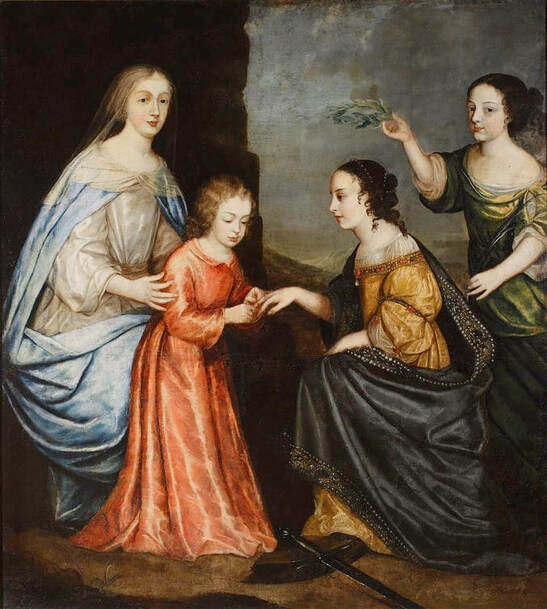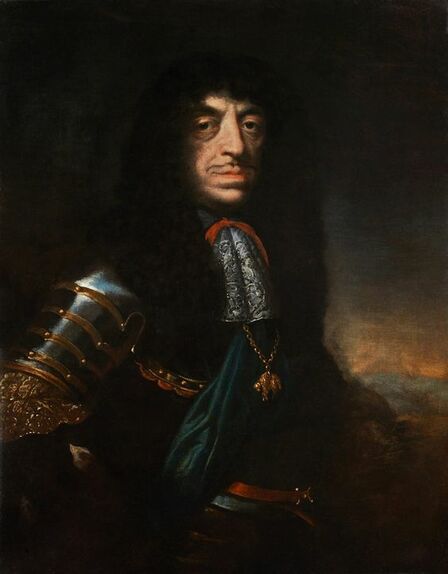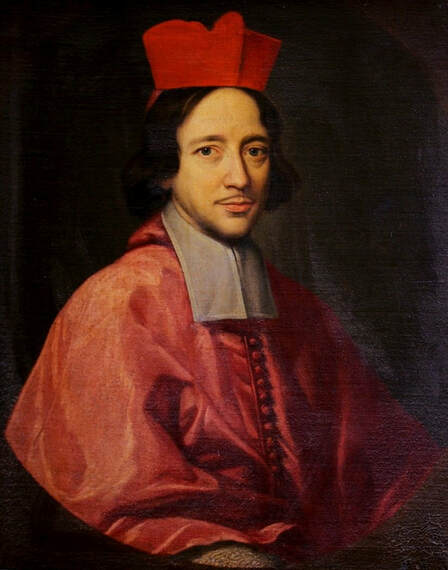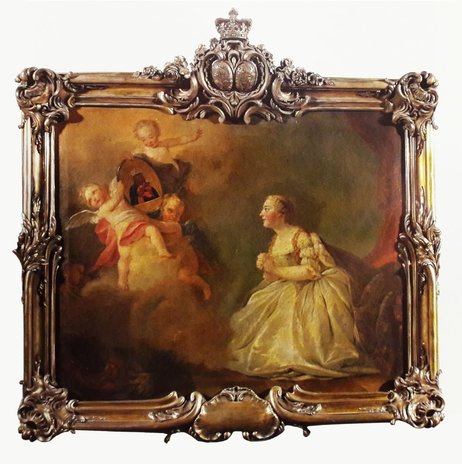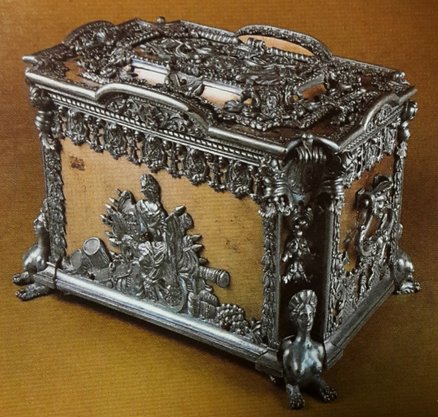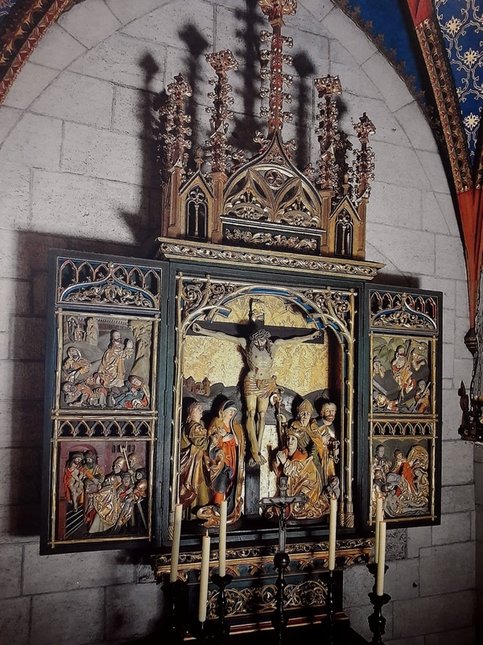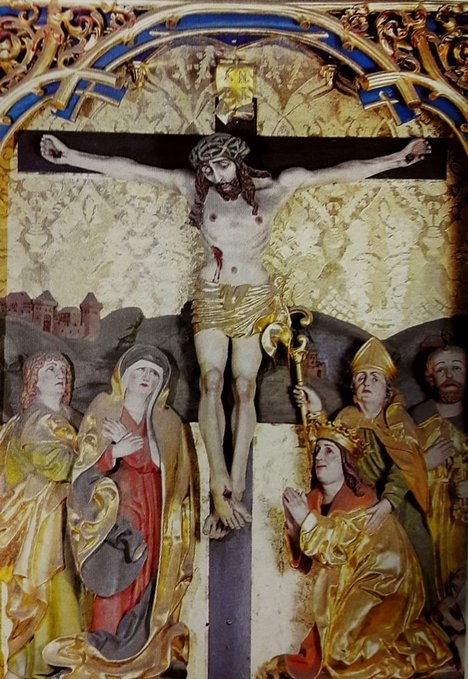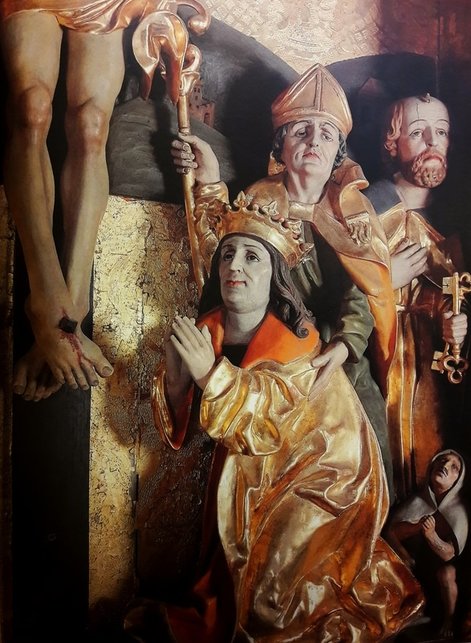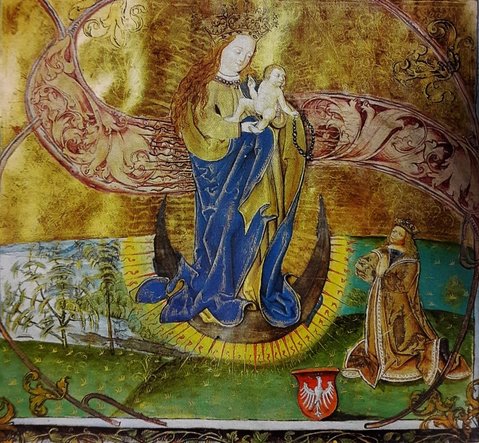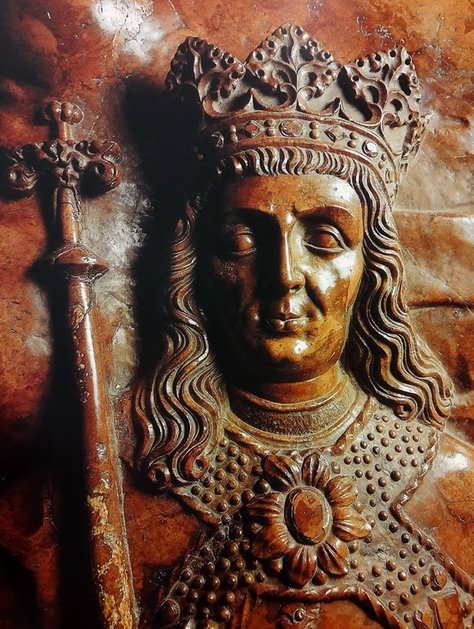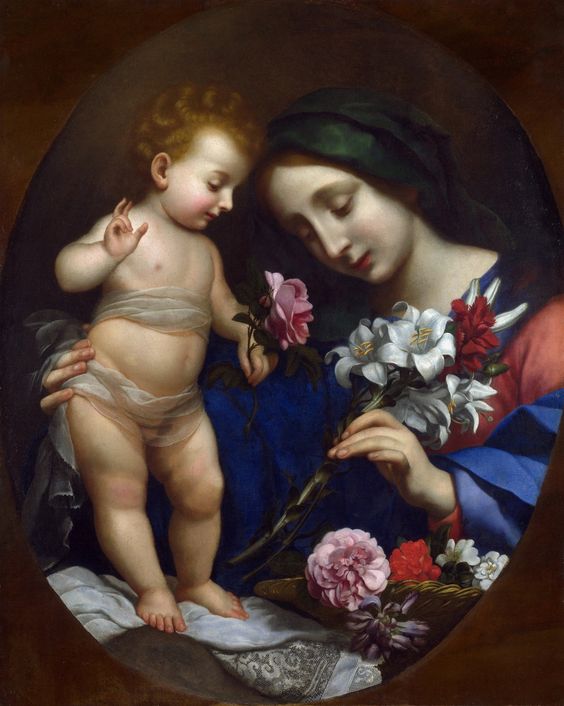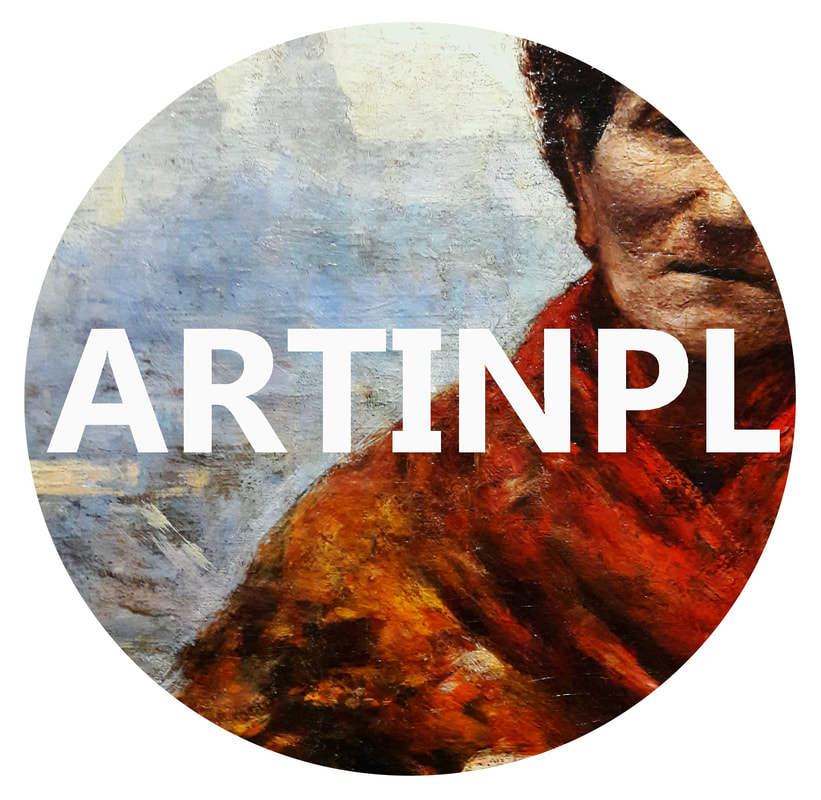|
Portrait of Jan Stanisław Jabłonowski, Marshal of the extraordinary Sejm by Rembrandt
"I am an envoy of the entire Commonwealth, and if we leave without doing anything, you will not be able to shut me up before the King, so that I will not complain and protest against those who leave their homeland without any defense, which also I, living on the border, really need", declared Jan Stanisław Jabłonowski (1600-1647), Grand Sword-bearer of the Crown on May 23, 1647. He stated this during the extraordinary Sejm (Diet) in the face of attempts to disrupt the parliament dealing with the most burning issues of defending the borders against the Ottoman Empire and paying the army. Known for his civic attitude, Jabłonowski gained such widespread respect among the nobility that in two consecutive sejms in 1637 and 1640 he was appointed Mashal (after "Szkice Historyczne" by Karol Szajnocha, Volume 3, p. 4-5, 8, 11), that is the chairman of the Chamber of Deputies of the Parliament of the Polish-Lithuanian Commonwealth.
He was probably one of the best, if not the best, marshal of the Sejm during the reign of Ladislaus IV. Struggling for an effective discussion, he threatened the deputies that he would treat them like cardinals in a conclave and would not let them leave until they reached an agreement (after "Charakterystyka sejmów za Władysława IV" by Sybill Hołdys, p. 207). Under the Henrician Articles, ordinary sejms were convened every two years, and if necessary (e.g. in the event of a direct threat to the state), the king could convene an extraordinary sejm for a period not longer than two weeks. Just before the successful conclusion of the extraordinary Sejm of 1637, the ordinary Sejm presided over by Casimir Leon Sapieha/Sapega (1609-1656) broke down early that year - and the assemblies that followed the Sejm of 1640 in 1642, 1643, 1645 and later were generally also disrupted. Known for his lavish lifestyle and splendid patronage, King Ladislaus IV was in constant need of money. In 1637 he was also preparing for marriage to the Emperor's daughter, Cecilia Renata of Austria, and already at the beginning of that year the treasury began to run empty again. Advised by his entourage, the king wishes to impose a maritime customs duty. Despite the opposition of envoys from Polish Prussia and Lithuania, who almost immediately opposed this idea, it was decided to adopt a constitution imposing this tax at the extraordinary Sejm (Warsaw, June 3-18, 1637). In October 1637, the sovereign sent to Gdańsk the voivode of Sandomierz, Jerzy Ossoliński, and the starost of Kościerzyna, Gerard Denhoff, who announced the introduction of customs duties and the brothers Abraham and Isaac Spiering (Spiring or Spierincx), the sons of the Flemish weaver François Spiering, active in Delft (who made tapestries for Sigismund III), as its collectors (compare "Briefwisseling van Hugo Grotius", p. 675). Their brother Pieter Spiering van Silvercroon (1595-1652), seems to have had a tapestry factory in Gdańsk between 1614-1649. The Marshal of the Sejm was a purely honorary position and he was elected by all deputies, no later than the third day after the opening of the Sejm. From this point on, however, Jabłonowski's career at court gained momentum. In 1638, this experienced deputy, who participated in all sejms since 1635 as a delegate of the Galician sejmik (Galician land in the the Ruthenian Voivodeship), became royal cupbearer of Queen Cecilia Renata and earlier, on November 18, 1637, he received the village of Perehinske, in western Ukraine, from the king. Jan Stanisław was born in Lucha, a private village in the Ruthenian Voivodeship (now Ukraine), where there was a castle. Although the Jabłonowski family of the Prus III coat of arms originated in Masovia (from the village of Jabłonowa near Mława - Jabłonowscii de Jabłonowa in palatinatu Płocensi, in districtu Mlavensi), in the 17th century their "nest" became Ruthenia. The marshal of the extraordinary Sejm of 1637 was the first to obtain an important position in the Commonwealth and thanks to his marriage to Anna Ostrorożanka (1610-1648), daughter of Jan Ostroróg, voivode of Poznań and the Ruthenian princess Sofia Zaslavska, in 1630, he entered into relations with the most distinguished houses of the Commonwealth (after "O Jabłonowskich herbu Prus III" by Wojciech Kętrzyński, p. 3). He was the son of Maciej Jabłonowski (1569-1619), a cavalry master (rotmistrz), and Katarzyna Kłomnicka. He studied at the Jesuit college in Lviv, then traveled abroad for some time. He probably visited France, as the Jabłonowski family cultivated their French connections throughout the 17th century. He took part in the wars with Sweden and the Crimean Tatars in 1624-1629, and with Russia in 1632-1634. A good speaker, known for his speeches at the Sejms in 1633-1642, he was especially active during the winter Sejm of 1637. His son Stanisław Jan Jabłonowski (1634-1702) raised his family to prominence and became voivode of the Ruthenian Voivodeship and Grand Hetman of the Crown. His grandsons, sons of Stanisław Jan, studied at Jesuit schools in Lviv and Prague. They traveled to Berlin, the Netherlands, via Utrecht, Rotterdam, Leiden and Amsterdam, and to Flanders, finally reaching Paris via Leuven and Brussels. Jan Stanisław's granddaughter Anna Leszczyńska (1660-1727) was the mother of the elected king of the Commonwealth Stanislaus Leszczyński and her granddaughter Marie Leszczyńska was Queen of France from 1725, after marrying Louis XV. He was therefore the ancestor of the kings of France Louis XVI (1754-1793), Louis XVIII (1755-1824), Charles X (1757-1836), Marie Clotilde of France (1759-1802), Queen of Sardinia and Maria Luisa of Parma (1751-1819), Queen of Spain. His grandson, Jan Stanisław Jabłonowski (1669-1731), was painted by José García Hidalgo, court painter to King Charles II of Spain, during his stay in Madrid in 1687, wearing a Spanish costume (National Museum in Warsaw, M.Ob.813 MNW). The Grand Sword-bearer of the Crown was buried in the Jesuit church in Lviv, where his great-grandson Stanisław Wincenty Jabłonowski (1694-1754) founded a beautiful late Baroque epitaph for him, bearing an incorrect date of his death - obiit Anno salutis 1659. It was executed between 1744 and 1754, probably by Jerzy Markwart (Georg Marquard) (after "Nagrobek Jabłonowskich ..." by Andrzej Betlej, p. 70, 84). A Polish Nobleman by Rembrandt in the National Gallery of Art in Washington (oil on panel, 96.8 x 66 cm, 1937.1.78) was signed and dated by the painter upper right: Rembrandt.f:. / 1637. Before 1931, when the painting was purchased by Andrew W. Mellon (1855-1937), it was kept for over 100 years at the Hermitage Museum in St. Petersburg. The "Catalog of paintings found in the Cabinets of the Imperial Palace in Saint Petersburg" (Catalogue des tableaux qui se trouvent dans les Cabinets du Palais Impérial à Saint-Pétersbourg) from 1774, where it was listed as "Portrait of a Turk, half-length, life-size, holding a staff in his hands. On wood, 2 feet wide by 3 feet high" (Portrait d'un Turc, vû à mi-corps, de grandeur naturelle, tenant un Bâton dans la main. Sur Bois, de 2. pieds de large et de 3. pieds de haut, no. 44), is the oldest surely established provenance of this painting. The man cannot be an ambassador of Muscovy (linked to a 1707 sale of Harman van Swol), because this would mean that the authors of the 1774 Catalog made fun of the Empress of Russia (owner of the painting) who, two years earlier, in 1772, partitioned the Polish-Lithuanian Commonwealth, failing to recognize the representative of Russia painted by Rembrandt and confusing him with a Turk. What is very interesting is that in the 19th century in Lviv, where Jabłonowski was buried, and surroundings there were two old copies of the painting. One of them was in the Lubomirski Museum in Lviv and was listed in the 1877 catalog (Katalog Muzeum imienia Lubomirskich) as "Portrait of the Hetman, Copy from Rembrandt (the original in the Hermitage in St. Petersburg is called Radziwill)" (item 445, p. 154). The other, from the collection of Count Karol Lanckoroński (1848-1933) in Rozdil near Lviv, was exhibited in Lviv in 1909, as "An old copy, the so-called Polish Hetman [...] The original is in the Hermitage in St. Petersburg" (after "Katalog ilustrowany ..." by Mieczysław Treter, item 105, p. 31). Lanckoroński also lent to this exhibition an old copy of the Portrait of Pope Julius II by Raphael from his collection (item 104, p. 30) and he owned the portraits of Hendrick van Uylenburgh, artistic agent of the King of Poland, and his daughter Sara by Rembrandt (Royal Castle in Warsaw, ZKW/3905, ZKW/3906), identified by me. At this time, the painting in St. Petersburg was also believed to depict John Sobieski. The man is holding a thick wooden stick-like object that resembles a ceremonial baton of a high-ranking military officer, similar to that seen in multiple portraits of the victorious King John III Sobieski. However, the way he holds it indicates that the staff might be much longer than a ceremonial baton and is in fact a cane. In the Polish-Lithuanian Commonwealth, a cane was a traditional attribute of a marshal (Mareschalcus), the most important "minister" of the country. Traditionally, since the time of Jogaila of Lithuania (d. 1434), there were four marshals: the Grand Marshal of the Crown (Poland and Ukraine), the Grand Marshal of Lithuania, the Court Marshal of the Crown and the Court Marshal of Lithuania. Since this was a more permanent state office, their canes were usually very elaborate, made of precious materials and adorned with precious stones, like the staff seen in the portrait of Casimir Leon Sapieha/Sapega (1609-1656), Court Marshal of Lithuania (Wawel Royal Castle, 9149). Łukasz Opaliński, Grand Marshal of the Crown in his portrait by Stanisław Kostecki (Czartoryski Museum, XII-370) is holding the Marshal's staff decorated with royal monogram - ST (Sigismundus Tertius) of Sigismund III Vasa. The marshal's staff belonging to Stanisław Herakliusz Lubomirski, Grand Marshal of the Crown in the years 1676-1702, is decorated with silver, gold, precious stones (diamonds and almadines) and enamel with symbols of Poland and Lithuania and King John III Sobieski - ITR (Joannes Tertius Rex) (Czartoryski Museum, MNK XIII-3176). In several of his portraits, Lubomirski was depicted holding this cane, such as the portrait in the Palace on the Isle in Warsaw (ŁKr 947), which comes from the collection of the last elected monarch of the Commonwealth - Stanislaus Augustus Poniatowski. The pose of the man in Rembrandt's painting is very similar. Sejm marshals also had canes, but as their function was temporary, just for the duration of the parliamentary session, they were not as elaborate. By striking the floor several times with the marshal's staff, the marshal began the Sejm session. They were also frequently damaged during the sessions as confirmed in the Sejm Diaries from 1704: "the whole day was unlucky, because three of the marshal's staffs broke when he was beating them on the ground to silence them". The loss was not too great, because as Aleksander Łącki, envoy from Łęczyca, noticed during the Sejm (during the dispute over the position of Marshal), it was only a stick which he would get for an ort (1 ort - 18 groszy) (after "Sejm Rzeczypospolitej ... " by Wojciech Kriegseisen, p. 180). One such cane, owned by Stanisław Małachowski (1736-1809), Marshal of the Four-Year Sejm (the Great Sejm, held in Warsaw between 1788 and 1792), preserved in the Czartoryski Museum (oak, 165 cm, MNK XIII-1300). Małachowski was also depicted holding it in his portrait by Józef Peszka (Royal Castle in Warsaw, depisit of the National Museum in Warsaw, 5754). The portrait of Stanisław Marcin Badeni (1850-1912), Sejm Marshal of the Diet of Galicia, is reminiscent of effigies of the Marshals of the Commonwealth (National Museum in Kraków, MNK II-a-524). It was painted by Kazimierz Pochwalski in 1903 and Badeni, who came from a family of Italian origin, in traditional costume, holds the marshal's staff. The man in Rembrandt's portrait wears a fur hat of a shape typical of the Ruthenian and Lithuanian nobility, visible for example in the portrait of Paul IV Sapieha/Sapega (d. 1642) (Wawel Royal Castle, 9164). His costume - hat, fur coat, jewelry resembles that seen in a portrait of a man in eastern costume, most probably a Ruthenian Prince by follower of Aert de Gelder, dated '1639' (National Museum in Warsaw, M.Ob.151 MNW). Similar costumes are visible in the Surrender of Mikhail Shein at Smolensk in 1634 by Christian Melich (Kórnik Castle, MK 03271) with king Ladislaus IV and his dignitaries. The king and his servants wear fashionable French costumes, while the remaining members of his retinue are dressed in the Ruthenian-Lithuanian or Polish-Hungarian style. Similar costumes were also depicted in Stefano della Bella's Allegory of Poland from the 1630s (Rijksmuseum Amsterdam, RP-P-OB-34.913) and in effigy of Saint Casimir from HYMNUS QUEM IN B. VIRGINIS HONOREM COMPOSUIT ..., made in Douai in Flanders (now France) in 1638 (National Museum in Kraków, MNK III-ryc.-28781). The print was founded by Ruthenian Mykola-Yuriy Chortoryski (1621-1692), Prince of Klevan, who studied abroad. Before the Counter-Reformation and the growing influence of the Jesuits and Habsburgs at the royal-grand-ducal court, many Ruthenians professed Orthodoxy or Calvinism. To pursue a career at court and study abroad, they frequently converted to Catholicism. Foreign invasions worsened this situation, and from a multi-religious and multicultural nation, Poland-Lithuania became predominantly Catholic and Polish (especially concerning the elites). But before this happened, kings were also depicted in typically Ruthenian costumes. For example, the octagonal portrait of King John II Casimir Vasa, attributed to his court painter Daniel Schultz, depicts him wearing a Ruthenian hat (Royal Castle in Warsaw, depisit of the National Museum in Warsaw, 474 MNW). The style of this effigy is obviously inspired by Rembrandt. Fortunately, it was preserved in Poland, otherwise in a foreign collection it would undoubtedly be known as a portrait of a man (i.e. Dutchman) in oriental costume by a follower of Rembrandt (apart from the obvious resemblance to the monarch and the known history of this painting). The elected king Michael Korybut Wiśniowiecki (1640-1673), who came from the princely Vyshnevetski family of Ruthenian-Lithuanian origin, was represented around 1669 in obviously Ruthenian costume in a print by Nicolas de Larmessin I (Rijksmuseum Amsterdam, RP-P-OB-43.940). The purpose of these effigies was exactly the same as in the case of portraits of Holy Roman Emperors in Hungarian or Bohemian costumes, to emphasize that the elected monarchs of the Commonwealth are also the rulers of Ruthenia and that they identify with the main ethnic groups in their country. Such conical-shaped fur hats were still popular in the 19th century among the Ruthenians of Podolia, as depicted in a 1836 lithograph (Przyjaciel Ludu) or in a portrait of Leon Sapieha (1803-1878), Sejm Marshal of the Diet of Galicia, painted by Leopold Horovitz in 1882 (Wawel Royal Castle, 9068). The origins of the coat with a round upper part covered in fur probably came from the medieval costumes of the princes of Ruthenia, possibly inspired by the fashion of the court of the Byzantine emperors in Constantinople (compare with the effigies of the Byzantine emperors Alexios I Komnenos, Michael VIII Palaiologos or Manual II Palaiologos). Even Rembrandt, around 1637, depicted himself in a similar costume in his signed self-portrait in The Wallace Collection (oil on panel, 63 x 50.7 cm, P52). There are numerous such representations of the painter. Average people of the Netherlands preferred French or Dutch fashion, visible in multiple portraits of the Dutch Golden Age. In his signed and dated portrait (Rembrandt / fe 1634) kept at the National Museum in Warsaw (M.Ob.2189), the young merchant Marten Soolmans (1613-1641) wears a typically French costume from the 1630s. The characters in Rembrandt's The Night Watch are also dressed in the mainly Dutch or French fashion of the time. The painter of Dutch merchants and aristocracy should identify himself with his clients by appropriate clothing, while in many of his effigies he resembles an eastern prince or a fur trader, like Nicolaes Ruts, fur trader from Amsterdam (The Frick Collection, 1943.1.150). It looks like he wanted to brag in these self-portraits - look, people of Amsterdam, what beautiful furs and gold chains I received from my Sarmatian/Ruthenian clients or even to paraphrase Jabłonowski, "I am a painter of the entire Commonwealth". Rembrandt's pictorial technique, composed of bold brushstrokes and thick impasto, most likely inspired by the technique of the great Venetians who painted the monarchs of Poland-Lithuania, indicates that he painted fast, and therefore smaller works, notably with the help of frequently mentioned assistants, might only take a few days. Over the course of approximately 45 years of his career (1624-1669), he created approximately 324 paintings that are either signed or attributed to him, which amounts to approximately 7 to 10 paintings per year. The 19th-century French painter Gustave Courbet, who also painted fast and without the help of assistants (in two cases with the help of Hector Hanoteau), estimated that he had completed around 1,000 paintings by 1867 (after "Country Life Illustrated", Volume 163, 1978, p. 260), which makes approximately 36 paintings per year during a 28-year career that began around 1839 in Paris. Rembrandt also made prints, which he also created quite quickly. However, given these facts, either he was lazy or many of his major works were destroyed, such as during the Deluge (1655-1660). No confirmed effigy of Jan Stanisław Jabłonowski has survived, but the man bears a close resemblance to effigies of the marshal's son Stanisław Jan Jabłonowski (1634-1702), Great Crown Hetman by Jean Mariette from about 1682 (National Museum in Warsaw, 99334), his grandson Jan Stanisław Jabłonowski (1669-1731), voivode of Ruthenia, painted by Adam Manyoki in about 1714 (National Museum in Warsaw, PM 4266 MNW) or Jabłonowski's great-grandson King Stanislaus I Leszczyński by circle of Adam Manyoki from the 1720s (sold at Desa Unicum in Warsaw, November 24, 2021, lot 45). The earring in his ear indicates that usually, like the king, he preferred French costume and that he only dressed in Ruthenian costume to demonstrate this attachment to his region and the Commonwealth. In 1637, two Flemish Protestant merchants, raised in Delft in the Netherlands where their father had fled from Antwerp, became tax collectors of the Polish-Lithuanian Commonwealth. Likewise, we can assume that Rembrandt regularly worked as a remote painter for Commonwealth's clients, including the king, but today we can only imagine how many beautiful paintings he created for them. The destruction of Commonwealth's heritage during numerous wars and invasions was so considerable that many significant objects linked to the monarchs of Poland-Lithuania had to be acquired abroad, such as a series of miniatures of the Jagiellon family by the workshop of Lucas Cranach the Younger purchased in London in the mid-19th century by Adolf Cichowski (Czartoryski Museum). The painting or a series was therefore commissioned by Jabłonowski or the king in Rembrandt's workshop to commemorate the memorable extraordinary Sejm of 1637.
Portrait of Jan Stanisław Jabłonowski (1600-1647), Marshal of the extraordinary Sejm, wearing Ruthenian costume by Rembrandt, 1637, National Gallery of Art in Washington.
Self-portrait wearing Ruthenian costume and two chains by Rembrandt, ca. 1637, The Wallace Collection.
Portraits of Helena Tekla Ossolińska and her father-in-law Stanisław Lubomirski by Simon Vouet and workshop
On July 7, 1637, the young Helena Tekla Ossolińska (1622-1687), aged 15, "Countess of Tęczyn", daughter of the voivode of Sandomierz Jerzy Ossoliński (1595-1650) and Izabela Daniłowiczówna married Aleksander Michał Lubomirski (1614-1677), son of Stanisław (1583-1649), voivode of Ruthenia, and brother of Jerzy Sebastian (1616-1667), "thus uniting the splendor of the house of Ossoliński with the splendor of the house of Lubomirski", two powerful families of magnates of the Polish-Lithuanian Commonwealth, as extolled the union Andrzej Hązel Mokrski (1598-1649).
The poet and courtier Adam Gębkowski also dedicated his poem to the young couple (Hymen gdy świętym przymierzem W. JMP. Pan Alexander Lubomirski bierze W. JM. Pannę Helenę Ossolińską ...). The wedding celebrations took place in the sumptuous castle of Helena Tekla's father in Ossolin, in the presence of King Ladislas IV Vasa and many senators. During this meeting, the creation of the Polish-Lithunian chivalric order dedicated to the Virgin Mary ("blessed and immaculate Mother of God of all Christianity") was probably discussed (compare "Saeculum Christianum ...", 1995, Volumes 1-2, p. 280). The creation of this order, modeled on the French Order of the Holy Spirit founded by Henry III of France (also elected monarch of the Commonwealth) in 1578, was suggested to the king by Ossoliński. However, due to opposition from Catholic magnates such as Stanisław Koniecpolski and Stanisław Lubomirski, Primate Jan Wężyk and Grand Hetman of Lithuania Christopher Radziwill, who was a Calvinist, the king confirmed in 1638 in writing that he would not establish an order without the consent of the Sejm. Moreover, after questioning Ossolinski's princely title, received from the Pope and the Emperor, the Sejm also banned the use of aristocratic titles, as they contradicted the equality of the nobility. Miss Ossolińska must have received a good education from her parents, because she was later known as one of the wisest and most influential women of her age. She was also a recognized figure among artists and writers. Her father and husband were also well educated men and traveled to different countries in Europe. Jerzy Ossoliński studied in Graz (Austria) and Leuven/Louvain (Belgium), in England, in Paris and Orleans in France, in Padua, in Bologna, Rome and Naples in Italy. In 1621 he traveled to England as the Commonwealth's envoy. In 1633, as ambassador, he made the famous entry into Rome, and a year later, in 1634, he went to Vienna on a diplomatic mission. In 1636 he visited the Imperial Diet in Regensburg, where he witnessed the election of Ferdinand III. Aleksander Michał, with his brother Jerzy Sebastian, stayed in Ingolstadt (Bavaria) in 1629 and later in Leuven/Louvain, Cologne and Leiden. Together they went to France, Jerzy probably went to Spain and certainly to England for a short time, while Alexander Michał went to Italy (Padua, Rome), where he stayed until 1635. On his return to Poland-Lithuania, he became the king's courtier. The residences of these wealthy, educated men must have reflected the highest taste of the European upper class of the time. Ossolin Castle had rich marble floors, crystal windows set in lead frames, ceilings painted on canvas in gilded frames "as if they were of pure gold" (gzymsy złocone suto jakby szczerozłote), most likely Venetian style, marquetry doors and a library with portraits. In one of the rooms, there were paintings with views of European cities and a fireplace with two statues bearing the Ossoliński coat of arms. Unfortunately, the residence was pillaged and destroyed by Swedish and Transylvanian troops during the Deluge. In 1816, when the country became significantly impoverished during numerous wars, the owner Antoni Ledóchowski, hoping to find the legendary treasures of the Ossolińskis, hidden from invaders, ordered the ruins of the castle to be blown up. Wiśnicz Castle, which belonged to Aleksander Michał and his wife after the death of his father in 1649, was also famous for its rich collections. Helena Tekla contributed to their expansion, because after the death of her father she inherited in 1651 part of his collection of books and works of art, which were located in the residences of the chancellor in Warsaw and Ossolin. These movable assets, in the absence of a male heir, were distributed among the three daughters of Jerzy Ossoliński. During the Deluge, between 1655 and 1659, the castle was evacuated twice by the hosts and plundered three times by enemy troops, who transported the spoils from Wiśnicz on 150 carts (after "Z dziejów polskiego mecenatu ..." by Władysław Tomkiewicz, p. 264). What is interesting is that the castle, reinforced with at least 35 cannons and defended by a crew of more than 200 soldiers, was surrendered to the "Brigand of Europe" without a fight for fear of destruction in October 1655 (compare "Od Ujścia do Warki, 1655-1656" by Henryk Wisner, p. 63). Despite this, after the looting, the castle was destroyed by the Swedes with gunpowder and the neighboring Carmelite monastery was completely plundered ("after "Szwedzi i siedmiogrodzianie ..." by Joźef Gollenhofer, Klemens Bąkowski, Ludwik Sikora, p. 43). The castle was partially rebuilt in 1680-1686. The "Inventory of belongings spared from Swedes and escapes made on December 1, 1661 in Wiśnicz" (Rejestr rzeczy po Szwedach i ucieczkach zostających spisany roku 1661 dnia 1 grudnia na Wiśniczu) in the Central Archives of Historical Records in Warsaw (number 1/357/0/-/7/12), lists some of the preserved paintings from the collection, including several paintings belonging to Stanisław Lubomirski, such as a large painting of Diana with greyhounds (Obraz wielki Dianna scharty) and Jerzy Ossoliński, such as the Virgin and Child with Saint John "from France" (ze Francyey), Leda and the Swan from the Emperor, Herodias with the head of Saint John the Baptist (Herodianna głowe sw. Jana trzymaiąca w Ramach Hebanowych), Cupid making his bow "from Rome" (Kupido łuk struzący w Ramkach Hebanowych, z Rzymu), perhaps a copy of a painting by Parmigianino, a large painting of the Madonna in a garland of fruit held by angels (Naśw. Panna wielka wieniec około niey z fruktow, ktory Anyeli trzymaia), possibly by Peter Paul Rubens and Jan Brueghel the Elder, allegorical painting showing King Louis XIII of France and Cardinal Richelieu "holding the World" (Król Francuzki z Kardinalem Ryszeli swiat trzymaiacy), the Sacrifice of Isaac by Titian (Abraam zabiiaiący Izaka. Ticyanow), the Suicide of Cato by Jusepe de Ribera (Kato przebiiający się puynałem. Spanioletow), Emperor Titus (?) by Guido Reni (Tycyus Guidoroniego), Susanna and the Elders by Guercino (Zuzanna Gwercine da Cento), Carrying of the Cross on marble by Bassano (Baiulatio crucis na kamieniu Basana), possibly by Jacopo Bassano, Tobias and the Angel by Raphael (Anyoł Tobiasza prowadzący Ramy czarne miescami złociste Raphael de Urbino), the Virgin and Child by Albrecht Dürer (Naswietsza Panna z Panem Jezusem małym na drewnie Alberti Duri), the Infant Christ and Saint John the Baptist in a garland of flowers by Daniel Seghers (Pan chrystus z swietym Janem Feston skwiatow trzymaiacy Jezuity Antuerpskiego), a large painting of Saint Cecilia by Domenichino (Swięta Cecylia wielka Dominikinow) and the Cardinal virtues by Paolo Veronese (Tres virtutes cardinales. Paulo Venorase). Certain mentions such as "my paintings offered or purchased" (Obrazy moie własne tak darowane iako y kupne), in this register as well as a great connoisseurship of the paintings indicate that Aleksander Michał may have been the author of this register or personally supervised its creation. Among the paintings received or purchased, the register lists a copy of the painting of the bathing goddesses (Obraz Bogin kompiących sie. Kopia), Saint Mary Magdalene (?) by Parmigianino, painted on wood (Białagłowa sczaką Parmeganino na drewnie), a painting of an old beggar by Jusepe de Ribera (Obraz ubogiego starego Spenioleti), Venus and Adonis by Francesco Albani (Adon z Venerą w Ramach złocistych Albanow), a tondo representing Hermaphroditus by Francesco Albani (Obraz Harmofredita okrągły Albanow), two Venetian landscapes, one with Saint John the Baptist at the spring on the second a shepherd with cattle (Dwa Lanszafcikow z Wenecyiy na iednym sw. Jan biorący wodę zrzodla na drugim Pastyrz zbydłem) and numerous portraits of Polish-Lithuanian, French and Italian rulers and aristocrats. It is not known what happened to these paintings, perhaps scattered among other residences they were destroyed in other wars or during the great fire of the dilapidated Wiśnicz Castle in 1831. The inventory also includes several effigies of Aleksander Michał and Helena Tekla. Two major effigies of Lady Lubomirska were disguised portraits – one listed as "Portrait of Her Ladyship in the guise of Saint Helena by Mons feuen" (Konterfet JeyMci na kształt świętey Heleny ma miedzi Mons feuen) and the other as "Portrait in full of Her Ladyship in the guise of Diana with greyhounds" (Konterfet cały Jey Mci na kształt Dianny scharty). In the first, she was depicted as her patron Helena of Constantinople, mother of Constantine I, as Queen Bona Sforza in her 1525 portrait by Lucas Cranach the Elder (Cincinnati Art Museum, 1927.387), identified by me. Two portraits of Alexander Michał mentioned in the register were painted by Nicolas Régnier (1591-1667) - "one by Mr Renierow" (ieden P. Renierow), and another "by Renieri from Venice in silver embroidered robe" (ieden Renierego z Venecyey w hawtowanych srebrem sukniach). Régnier, a painter from the Spanish Netherlands, known in Italy as Niccolò Renieri, was active in Venice from 1626. It is possible that some portraits of Alexander Michał's wife were also commissioned in Venice. Curiously, Saint Catherine of Alexandria attributed to the workshop of Nicolas Régnier, today kept at the Sforza Castle in Milan (oil on canvas, 70 x 57 cm, inv. 270), bears the features of Vittoria Farnese (1618-1649), Duchess of Modena and Reggio. The painter's presence in Modena around 1648, when the painting was probably made, is not confirmed, so he must have painted it in Venice. In 1644, he was named "painter to the King of France", undoubtedly to help him escape the requirements of the fraglia dei pittori, so that he could more easily supply paintings to Cardinal Mazarin. Similar to the portrait of Queen Bona, portrait of Empress Eleonor Gonzaga (1598-1655), painted by Lucrina Fetti between 1621-1625 (Ducal Palace of Mantua, Gen. 6864), miniature portrait of Anne of Austria (1601-1666), dowager queen of France, painted by Joseph Werner around 1660 (Musée Condé, OA 1375) or portrait of Vittoria della Rovere (1622-1694), grand duchess of Tuscany, painted by Justus Sustermans in 1669 (Palazzo Corsini in Rome, 428), Helena Tekla was undoubtedly also represented with the traditional attribute of this saint carrying the True Cross of Christ. In the late 1660s, the mistress of Louis XIV of France, Françoise Louise de La Vallière (1644-1710), Duchess of La Vallière, was most likely also depicted as Saint Helena, because such effigy was sold in Stockholm (Bukowski Auktioner, Sale 562, lot 426 / 124687). In 1952, Władysław Tomkiewicz, who analyzed this inventory, suggested that the author of the disguised portrait of Helena Tekla could be Simon Vouet (1590-1649), French painter (compare "Z dziejów polskiego mecenatu ...", p. 271). Vouet studied in Rome, where he married the painter Virginia da Vezzo or Vezzi (d. 1638) in 1626. A year later, in 1627, he was called by Louis XIII to serve as the king's first painter in Paris, where his younger brother Aubin Vouet (1595-1641) had already been working as the king's painter since 1621. He also stayed in Venice, Genoa and Milan and visited Constantinople in 1611. Not only the similarity of Mons [Monseigneur/Monsignore] feuen suggests this, but also the large number of portraits of French monarchs and dignitaries present in the inventory and the fact that the same painter created other paintings from the Lubomirski collection. The register mentions a painting of "Saint Sebastian dying by Mons ouet" (Swięty Sebastian, umierający. Mons ouet) and "Two portraits on copper, one of this Ambassadress in red, the other of the Duchess of Lorraine in blue by Mons Scheuet" (Dwa konterfety na miedzi ieden teyze Posłowey w czerwieni, drugi Xiezny Lotarynskiey w błękitni Mons Scheuet). This ambassadress was Renée du Bec-Crespin (1613/14-1659), comtesse de Guébriant, appointed extraordinary ambassadress of France to the Commonwealth in 1646 and an earlier entry in the inventory mentions another of her portraits, perhaps by the same painter, in the guise of the Virgin: "An image of the French Ambassadress, in the form of the Blessed Virgin Mary" (Posłowey Francuzkiey obraz nakształt Nasw. Panny) and followed by "Two portraits on copper of King Ladislaus and Cecilia [Ladislaus IV Vasa and his first wife Cecilia Renata of Austria]" (Dwa konterfety na miedzi krola Władisława z Cecyliją). Interestingly, Renée is considered the first female ambassador in the history of France and her mission was to help Ladislaus IV's second wife, Marie Louise Gonzaga, gain influence over her husband. It should also be noted that no voices of opposition to the first female ambassador to the "Realm of Venus" are known. Renée was magnificently received in Warsaw, according to the account of her trip by Jean Le Laboureur, published in Paris in 1647 (Relation du voyage de la Royne de Pologne, et du retour de Madame la Mareschalle de Guebriant, Ambassadrice Extraordinaire ...), and "was widely appreciated by the king and Polish lords, received extraordinary honors from them" (after "Starożytności warszawskie ..." by Aleksander Weinert, Volume 2, p. 216). If the ambassadress gave her portrait to the Lubomirskis during her visit to Poland, she must have many copies of it, as there were many important dignitaries worthy to receive it. The fact that there were two of her portraits in the collection of Helena Tekla and her husband that survived the Deluge, indicates that they probably befriended the ambassadress. Ordering numerous copies of the same effigy was then a common practice among the elites. The best example are the copies of portraits of Crown Prince Ladislaus Sigismund Vasa by Rubens, copies of the portrait of Henrietta Maria of France (1609-1669), Queen of England, Scotland and Ireland in the guise of Saint Catherine of Alexandria, original painted by Anthony van Dyck in about 1637 (Christie's London, January 24, 2012, lot 261, Palace of Versailles, MV 3425 or Hatchlands Park, NT 1166715) or a series of portraits of Lady Mary Villiers (1622-1685), Duchess of Richmond and Lennox as Saint Agnes by Anthony van Dyck and circle, painted around 1637 and after on the occasion of her second marriage at the age of 15 (Windsor Castle, RCIN 404402, Lacock Abbey, 996277 and Christie's London, Auction 3475, lot 36). Accordingly, if four or five paintings - (1) portrait of Helena Tekla as Saint Helena, (2) Saint Sebastian, (3) portrait of Madame de Guébriant, (4) portrait of Duchess of Lorraine and, possibly, (5) portrait of Madame de Guébriant in the guise of the Virgin Mary, were all by Simon Vouet, very probably also the effigy of Helena Tekla as Diana was created by him. The representation as the Roman goddess of hunting, fertility and childbirth indicates that the painting was made to receive a "blessing" for the young bride, therefore before or shortly after the wedding. In this sense it is comparable to the portrait of the young Mary II (1662-1694), when princess, in the guise of Diana, painted around 1672 by Peter Lely (Hillsborough Castle, RCIN 404918). The future Queen of England is blonde in this portrait (in her later effigies she has dark hair). The description in Wiśnicz's inventory mentions a full-length portrait, but this does not mean that the painting was vertical (standing, as in the portrait of the future queen of England), but could also be horizontal (reclining, as in the portraits by Cranach). It is interesting to note that such a painting of Diana, painted by Simon Vouet in 1637, the year of Helena Tekla's marriage, is today in Hampton Court Palace in England (oil on canvas, 104.3 x 147.5 cm, RCIN 403930). The painting was first recorded in the Royal Collection in 1710, described as a "Diana of Vouet", over the door in the Drawing Room of Somerset House - traditionally the Queen's residence. There is no trace of this work in the inventories of Charles I nor in the Commonwealth Sale (Sale Inventory, ca. 1649-1651), the latter however mentions: "Done in Poland, King of Poland, full-length" at the Armory at St James's (WS 151, No. 10) and "King of France with Madonna and Child" (WS 60, No. 14). The painting was inscribed by the artist, lower right (on the quiver): Simon Vouet / F. [fecit] Paris 1637. As indicated in Description of the painting (Royal Collection Trust) "the addition of the place of execution is unusual for Vouet and may indicate that the work was to be sent abroad". Any provenance before 1710 can only be supposed at the moment, so the hypothesis that Jerzy Ossoliński sent to England (to his friends met during his studies or in 1621) a disguised portrait of his daughter, commissioned in Paris, is also possible. Such a horizontal composition refers to Cranach's nude portraits of Queen Bona as Diana-Egeria, paintings identified by me. One of the most famous works by Simon Vouet or his entourage - the allegorical portrait of Anne of Austria (1601-1666), cousin of King Ladislaus IV Vasa, now kept in the Hermitage Museum (ГЭ-7523), is also a disguised portrait. The Queen of France was depicted as Minerva, goddess of wisdom, victory and strategy. Only the features of the sitter, looking at the viewer, indicate that it is a portrait, because the Latin inscription on the base is the beginning of the sentence from Juvenal's "Satires": "Fortune never fails, [if there is prudence]" (Nullum numen abest, [si sit prudentia]). The disguised portrait of Anne of Austria testifies that the artist beautified his models or adopted their features according to classical canons of beauty. Saint Catherine from private collection in Naples, attributed to Vouet, is considered to be a disguised portrait of artist's sister-in-law Ursula da Vezzo (Sotheby's New York, January 25, 2017, lot 39) and Vouet's painting in the Los Angeles County Museum of Art (M.83.201) is believed to be a portrait of his wife Virginia as Saint Mary Magdalene. The woman in the Hampton Court Palace painting bears a close resemblance to Helena Tekla, as shown in her portraits preserved in Poland, all created after the Deluge, especially the effigies as a nun, created after 1681 - in Wilanów Palace (Wil.1340) and a copy in the parish church of Saint Joseph in Klimontów. A studio copy of "Diana resting" was sold in Paris in 2019 (oil on canvas, 120 x 168 cm, Sotheby's, June 26, 2019, lot 81). As the Lubomirskis owned many effigies of French monarchs and aristocrats, the French may also have had the portrait of Lady Lubomirska, especially since it was commissioned in France. It is also possible that the painting returned to its country of origin in the 19th century or earlier, with the move of many Polish-Lithuanian aristocrats to France. A study for Diana's head by Vouet or his studio is in the Louvre (RF 28221, Recto). It is possible that the painting: "A young person with a greyhound, French style" (Osoba jakaś młoda z chartem tarantowatym, po francusku, 837/17), mentioned in the inventory of Princess Louise Charlotte Radziwill (1667-1695) which survived the Deluge (compare "Inwentarz galerii obrazów Radziwiłłów z XVII w." by Teresa Sulerzyska), was another disguised effigy of Lady Lubomirska. The painting was also reproduced in several engravings. They have an oval shape, so the original could also have been oval. The mirror version, made by Michel Dorigny in Paris in 1638, so the following year, is signed and dated: S. Vouet pinxit. / Cu priuilegio / M. Dorigny scul. / Parisi 1638 (Leiden University Libraries, PK-P-144.428). The version in the National Library of Poland (G.31201) reproduces the original layout of the painting. Paintings were usually available primarily to customers who ordered them, so the artist, probably proud of his work, wanted his composition to be accessible to a wider audience, which is why the prints were made. Sometimes also, the owners of the original paintings wanted a wider distribution. For example, the so-called Hesselin Madonna or Madonna of the oak cutting at the Louvre (RF 2004 19), produced by Simon Vouet for the Parisian house of Louis XIII's secretary Louis Hesselin around 1640-1645, was reproduced in a print made by Michel Dorigny in 1651 and bearing the Hesselin coat of arms on the lower margin (British Museum, 1841,1211.39.54). The features of the Hesselin Madonna are quite distinctive, which is why the secretary's wife, Renée d'Elbeuf, was probably depicted as the Virgin. The same woman was represented in another painting attributed to Simon Vouet, sold in London in 2019 (oil on canvas, 60.7 x 49.5 cm, Sotheby's, December 5, 2019, lot 115). This "Study of a young woman as the Virgin" was previously considered to represent the artist's wife, Virginia, based on a drawing by Marie Metézeau kept at the Musée des Beaux-Arts in Rennes (794.1.2691), signed: Virginia de Vezzo Sim.s Voüet Regis Christianissimj / Pictoris conjux charissima clarissima Inuentrix & Pinxit [...]. Basing on this drawing, usually dated to the second half of the 17th century, so several years after Virginia's death, another version of the painting from the Galleria Apolloni in Rome (oil on canvas, 60.3 x 50.2 cm, Bonhams London, July 11, 2001, lot 122), is identified as her self-portrait or her likeness by a follower of Simon Vouet. Additionally, the inscription in Rennes' drawing is ambiguous and it can also be interpreted that Virginia painted the original or another version of the painting. The painting sold in London comes from a private collection in Austria (by the 1970s, thence by descent) and was traditionally attributed to Philippe de Champaigne. It is therefore very possible that already in the 17th century, one painting was sent to the Pope or cardinals in Rome and the other to the Emperor in Vienna. Such "distribution" of effigies was typical for the European high aristocracy. The colors of the clothing - blue and red - clearly indicate that the subject represents the Virgin (compare with Catalogue Note). The magnificent painting attributed to Vouet, probably painted in Italy, which is now in the National Museum in Warsaw (oil on canvas, 100 x 75.5 cm, M.Ob.646, earlier 128630), testifies that his talent was probably recognized by the patrons from the Polish-Lithuanian Commonwealth already shortly after its creation. This vanitative painting, inspired by Caravaggio, is generally dated around 1621 and comes from the State Art Collections, possibly from the Royal Castle in Warsaw. It shows the Ill-matched couple with a young woman pointing to a skull (Vanitas). Finally also certain portraits preserved in the former territories of the Commonwealth are close to the distinctive style of Vouet, his workshop or his circle. These include a portrait of Helena Tekla's father-in-law, Stanisław Lubomirski, now in the former royal residence - Wilanów Palace in Warsaw (oil on canvas, 81 x 65.8 cm, Wil.1258). It bears an incorrect later inscription identifying the sitter as Stanisław's grandson, Stanisław Herakliusz Lubomirski (1642-1702). The style of this painting is very similar to the portrait of a woman, probably Ursula da Vezzo, as Saint Agnes by circle of Simon Vouet (Sotheby's London, April 24, 2008, lot 204). The voivode of Kraków was very concerned about the good distribution of his effigies, because despite numerous wars and destruction, several have survived, such as the full-length portrait from Wiśnicz Castle, perhaps painted by Stanisław Kostecki between 1638-1649 and repainted in the 18th century (National Museum in Warsaw, 128870/2 MNW) or effigy from the portrait gallery of the founders and benefactors of the Piarist monastery in Warsaw, made after 1647 (MP 3202 MNW). In all of them he was depicted in national costume. Another similar portrait of Stanisław Lubomirski, in oval, can be found today in the National Museum of Art in Kaunas, Lithuania (oil on canvas, 54 x 48 cm, ČDM Mt 1507). It is also incorrectly identified - as the effigy of Jan Karol Chodkiewicz or Jonas Karolis Chodkevičius (d. 1621), Grand Hetman of Lithuania, and comes from the collection of Countess Jadwiga Hutten-Czapska (1866-1943) in Beržėnai Palace. It entered the museum's collections in 1940. Its style is comparable to Saint Margaret by the workshop of Simon Vouet (Galerie Meier, Anticstore, Ref: 88152) and portrait of a lady with a red drapery by circle of Simon Vouet, possibly Virginia da Vezzo (Artcurial, March 22, 2023, lot 69). In addition to the portrait of the voivode of Kraków, Countess Hutten-Czapska also owned the Mercury and the Three Graces by Michel Dorigny or workshop of Simon Vouet, painted after 1642, now also kept in the National Museum of Art in Kaunas (oil on canvas, 172 x 137 cm, ČDM Mt 1445). This is a version of a lost original by Vouet reproduced in a 1642 engraving by Dorigny (Leiden University Libraries, PK-P-144.488). Between 1940 and 1941, Nazi German invaders destroyed the beautiful Church of the Discalced Carmelites in Nowy Wiśnicz, founded by Stanisław Lubomirski in 1622, along with its Baroque furnishings. The history after 1655 has always been very cruel to the Realm of Venus, and although nothing has been preserved of the rich furnishings, visitors can still admire the beautiful architecture of Wiśnicz and local institutions are doing much to renovate, rebuild and collect as many traces of past splendor as possible.
Ill-matched couple (Vanitas) by Simon Vouet, ca. 1621, National Museum in Warsaw.
Portrait of Helena Tekla Ossolińska (1622-1687) as Diana by Simon Vouet, 1637, Hampton Court Palace.
Portrait of Helena Tekla Ossolińska (1622-1687) as Diana by workshop or circle of Simon Vouet, ca. 1637, Private collection.
Diana by Michel Dorigny after Simon Vouet, ca. 1637, National Library of Poland.
Diana by Michel Dorigny after Simon Vouet, 1638, Leiden University Libraries.
Portrait of Helena Tekla Ossolińska (1622-1687) as Madonna by Simon Vouet, ca. 1637-1638, Private collection.
Portrait of Helena Tekla Ossolińska (1622-1687) as Madonna by workshop of Simon Vouet or Virginia da Vezzo, ca. 1637-1638, Private collection.
Portrait of Stanisław Lubomirski (1583-1649), voivode of Kraków by workshop or circle of Simon Vouet, ca. 1638, Wilanów Palace in Warsaw.
Portrait of Stanisław Lubomirski (1583-1649), voivode of Kraków by workshop or circle of Simon Vouet, ca. 1638, National Museum of Art in Kaunas.
Mercury and the Three Graces by Michel Dorigny or workshop of Simon Vouet, after 1642, National Museum of Art in Kaunas.
Portrait of Vittoria Farnese (1618-1649), Duchess of Modena and Reggio as Saint Catherine of Alexandria by workshop of Nicolas Régnier, ca. 1648, Sforza Castle in Milan.
Portraits of Anna Catherine Constance Vasa by Peter Danckers de Rij
With the new dynasty, the Vasas, the focus of Polish-Lithuanian Commonwealth's international politics shifted from south of Europe to the north. Sigismund III Vasa, elected monarch of the Commonwealth was born in Sweden and on February 19, 1594 he was crowned King of Sweden and Grand Duke of Finland.
Curiously, exactly around that time, Venetian painting workshops began to decline, there are no more such great painters in Venice, native to the Republic, in subsequent decades like Giorgione, Lorenzo Lotto, Palma Vecchio, Sebastiano del Piombo, Titian, Tintoretto, Jacopo Bassano or Veronese. Domenico Fetti was born in Rome and then worked in Mantua for ten years and Bernardo Strozzi was born and initially mainly active in Genoa. Commonwealth's monarchs began to visit more often the main economic center of the country and its main seaport - Gdańsk in the north. Sigismund III was there several times, for the first time when he arrived from Sweden in October 1587. Also his predecessor Sigismund II Augustus was a guest in the city in July 1552. On September 23, 1561 the top of the tower of the main Town Hall of Gdańsk was adorned with a gilded statue of the king with an accentuated codpiece, designed by Dutch Dirk Daniels. In 1564-1568 the Green Gate in the style of Flemish mannerism was built by architect Regnier van Amsterdam as the formal residence of Poland's monarchs. Not only in architecture, but also in painting, Flemish and Dutch style become the most popular in the Vasa era in Poland, at least in the northern part of the country. In 1624, Prince Ladislaus Sigismund Vasa, future Ladislaus IV, visted Rubens' workshop and was painted by him. Ladislaus invited to Warsaw the author of his "Art Collection" (Royal Castle in Warsaw), most probably Étienne de La Hire, and Rubens recommended Pieter Claesz Soutman, a Dutch painter born in Haarlem, who was appointed royal court painter, he, however, returned to Haarlem in 1628. All of Ladislaus' relatives and other monarchs employed at their courts Flemish and Dutch painters. Rubens painted his Spanish cousins, monarchs of France and England, Flemish painter Justus Sustermans worked for the Medici family in Florence and his aunt Maria Maddalena of Austria (1589-1631), another Flemish painter, Frans Luycx, became the leading portrait painter at the imperial court of his cousins in Vienna, Justus van Egmont, also Flemish, worked in France at the court of his cousin Queen Anne of Austria (1601-1666), Antoon van Dyck (Anthony van Dyck) in England, Karel van Mander III was active at the Danish royal court and numerous other. Around 1636-1637, in connection with the extensive work at decorating royal residencies in preparation for the king's wedding, Ladislaus employed Peter Danckers de Rij, who was initially active in Gdańsk. Danckers de Rij was born in Amsterdam and probably returned there during the Deluge (1655-1660). Despite her qualities and wealth, like in the case of her grandmother and her grandmother's sister Isabella Jagiellon, it was not an easy task to find a suitable match for Anna Catherine Constance Vasa (1619-1651), the sister of Ladislaus, who reached adulthood around that time. Hereditary rulers of Europe were not interested to marry a sister of the elective monarch. After the death of her parents in 1631 and in 1632, Parliament granted her the counties of Brodnica, Gołub and Tuchola. The lands had previously belonged to her mother, but Anna could not exercise her rights until she came of age in 1638. Frederick William, Elector of Brandenburg, and Gaston, Duke of Orléans (brother of King Louis XIII of France), were among candidates for her hand. Despite the agreements of 1639 and 1642 to marry her to Archduke Ferdinand Charles of Austria-Tyrol (1628-1662), the marriage never took place, due to the age of the groom who was 11 years old in 1639 and the disagreement over the amount of her dowry. On June 8, 1642, in Warsaw she married Philip William of Neuburg. In the Imperial Castle in Nuremberg there are two portraits deposited by the Germanisches Nationalmuseum (inventory numbers NbgKbg.L-G0006, NbgKbg.L-G0007) which according to inscription in German on the frame depict Emperor Leopold I (1640-1705) and his wife Infanta Margaret Theresa of Spain (1651-1673). The man's costume, however, with embridered doublet topped with beautiful lace collar, matching breeches and a lovelock, is typical for European fashion in the 1630s. His pose and facial features are identical to those visible in a portrait of Prince John Casimir Vasa, brother of Ladislaus IV, in the Gripsholm Castle in Sweden and his miniature portrait in the Bavarian National Museum, both attributed to Peter Danckers de Rij. The woman from the pendant portrait, who bear no resemblance whatsoever to effigies of Infanta Margaret Theresa, must be therefore his only sister Anna Catherine Constance, as John Casimir was unmarried at that time (oil on canvas, 213 x 122 cm, Bavarian State Painting Collections, 6996). She was portrayed in a little outdated outfit, crimson Spanish style saya and a large ruff. Her face and pose are identical as in the portrait from the Ambras Castle in Innsbruck in Tyrol (most probably sent to Archduke Ferdinand Charles), identified as effigy of Archduchess Cecilia Renata of Austria, Queen of Poland (Kunsthistorisches Museum in Vienna, GG 5611). In this portrait her costume is more à la mode - in 1642 Queen Cecilia Renata asked her younger brother Leopold Wilhelm of Austria, through Estebanillo González who visited Warsaw the same year, to send her some Dutch lace and a doll dressed in fashionable French attire. Both the Queen and her sister-in-law Anna Catherine Constance, knew the fashion trends well. This woman bears no resemblance to effigies of Cecilia Renata in the Gripsholm Castle (NMGrh 299, NMGrh 1417), and in the State Historical Museum in Moscow (И I 5922), painted by Peter Danckers de Rij. She is holding an oriental folding fan with a pattern resembling an inscription in Arabic, hence possibly acquired in Venice, exactly like in portraits of Anna Catherine Constance's grandmother Catherine Jagiellon by Moroni and Titian. The same woman was also depicted in a miniature painting in the Castello Sforzesco in Milan (oil on copper, 6 x 5 cm, inventory number 863), also painted in the style of Peter Danckers de Rij. Her sumptuous clothes and jewelery are truly regal, which is why the miniature is sometimes considered to depict Elizabeth Stuart (1596-1662), Queen of Bohemia. The work was donated to the Civic Collections in 1945 by Giorgio Nicodemi (1891-1967) who, in turn, had received the collection, which features several portraits of people from the Morando and Attendolo Bolognini families, from Countess Lydia Morando Bolognini (after "Museo d'arte antica del Castello sforzesco: pinacoteca", Volume 5, p. 332). Her costume is typical for Central Europe, Austria and Bavaria in the 1630s, like in the portraits of Maria Anna of Austria (1610-1665), Electress of Bavaria, sister of Cecilia Renata in the Alte Pinakothek in Munich from about 1635 or in the Kunsthistorisches Museum in Vienna from about 1643. Similar costumes are also visible in portraits of Éva Forgách, wife of Count István Csáky (1610-1639), dated '1638', in the Hungarian National Museum, Baroness Maria Laymann-Libenau, also dated '1638', in the Ptuj Ormož Regional Museum, Countess Erzsébet Thurzó, wife of István Esterházy, dated '1641', in the Forchtenstein Castle or on the silver medal with bust of Anna Leszczyńska née Radzimińska from 1614 in the National Museum in Lublin. She was also depicted in a portrait, also very in the style of Danckers de Rij, although attributed to Govert Flinck, from the French private collection (oil on canvas, 60 x 73 cm, sold at Vanderkindere in Brussels, March 23, 2021, lot 67). This painting represent "Venus reclining" inspired by Venus of Urbino in the Uffizi Gallery in Florence, which is a portrait of a sister of Anna Catherine Constance's grandmother Isabella Jagiellon. A work painted in a very similar style is in the National Museum in Warsaw (oil on canvas, 91.5 x 130.5 cm, M.Ob.945, earlier 215 Tc/70, 302/2/73). It represents Sleeping Cupid and comes from the collection of Eugenia Kierbedziowa (1855-1946), who died in Rome. She bequeathed the painting in 1943 and it entered the museum after World War II in 1970. The earlier provenance is unknown, so it has been assumed that Kierbedziowa probably acquired it in Italy and compared to some works by Francesco Albani or his entourage, like Cupid disarmed by the nymphs at the Louvre (INV 34; MR 1607) or the Triumph of Diana (Winter) at the Borghese Gallery in Rome (inventory number 049). It is, however, quite possible that Eugenia, who lived in exile in Italy from 1909, purchased this painting earlier in Lithuania, Warsaw or Saint Petersburg, where she was born. Cupid was the god of desire, erotic love, attraction and affection and the son of the goddess of love Venus and the god of war Mars. The comparison with the mentioned works of Albani and others of his putti is very general, while the style of the painting resembles a signed and dated work by Danckerts de Rij - portrait of Queen Cecilia Renata in the Nationalmuseum of Stockholm (Peter. Danckers fecit A:o 1643, NMGrh 299). The queen is standing in a loggia of the Villa Regia palace in Warsaw and in the background there is a fountain with a statue of Cupid on a dolphin.
Miniature portrait of Crown Princess Anna Catherine Constance Vasa (1619-1651) by Peter Danckers de Rij, ca. 1638, Castello Sforzesco in Milan.
Portrait of Crown Princess Anna Catherine Constance Vasa (1619-1651) with a dog by Peter Danckers de Rij, ca. 1638, Imperial Castle in Nuremberg.
Portrait of Crown Princess Anna Catherine Constance Vasa (1619-1651) nude by Peter Danckers de Rij, ca. 1638-1642, Private collection.
Sleeping Cupid by Peter Danckerts de Rij, ca. 1640, National Museum in Warsaw.
Portraits of Anna Catherine Constance Vasa as Danaë by Italian painters
Villa Regia, which means Royal Villa in Latin, was the leisure suburban residence of elected king Ladislaus IV Vasa in Warsaw. This splendid palace, inspired by the Villa Poggio Reale in Naples, was probably built between 1634 and 1641 according to the design attributed to the Italian architect Giovanni Trevano. The king, who was a renowned patron, filled it with the most refined works of art produced by the artists of his court, such as Bartholomeus Strobel, Peter Danckerts de Rij and Giacinto Campana, and commissioned abroad, in Italy, Flanders, the Netherlands, Germany, Persia and Turkey.
Detailed descriptions or inventories of the palace have not survived. However, there were undoubtedly works by Peter Paul Rubens, Jan Brueghel the Elder, Peter Snayers, Daniel Seghers, Jacob Jordaens, Pieter Claesz Soutman, Frans Luycx, Justus van Egmont, Rembrandt, Guercino and Guido Reni there, as their workshops were visited by Ladislaus during his trip between 1624-1625 or acquisitions of their paintings are confirmed in other documents. Saint Francis in Ecstacy, possibly by Guido Reni, was described in the chapel of Villa Regia in Adam Jarzębski's "Short Description of Warsaw" from 1643 (verses 1971-1976). The sculptures were also most likely all imported, including ancient sculptures like the Pseudo-Seneca from the Ladislaus' collection, carved in the 2nd century (Archaeological Collection of the University of Zurich). The bronze statues in the so-called "secret garden" (giardino secreto) were most likely cast by Adriaen de Vries in Prague, as their descriptions in Adam Jarzębski's poem perfectly match some of the statues at Drottningholm Palace in Sweden. Marble busts of John II Casimir Vasa and Marie Louise Gonzaga, created by the Roman sculptor Giovanni Francesco Rossi around 1651 (Nationalmuseum in Stockholm), most likely adorned the palace's Marble Hall. During the Deluge, the invaders not only plundered all the movable furnishings, such as paintings, sculptures, tapestries and silverware, but also devastated the interiors. Pierre des Noyers, secretary to Queen Marie Louise, in a letter dated November 8, 1655 from Głogów, describes the devastation of the three royal palaces (Royal Castle, Ujazdów and Villa Regia), in particular the looting of the marble paving, the destruction of a colonnade made up of 32 beautiful marble columns and that the king of Sweden even plundered the windows (Quant au roi de Suède [...] il n'a pas laissé, nonobstant cela, de faire dépaver les trois palais, et emporté ce pavé qui est de marbre; de faire rompre une loge qui était dans le jardin, composée de 32 belles colonnes de marbre qu'on a rompues en les défaisant. Ce n'est pas tout; il fait emporter les croisées et les vitres; ce ménage là m'a surpris). In a letter dated June 1, 1656 from Głogów he adds that: "In a letter I received from Warsaw, I was told of the horrible damage the Swedes did there; They burned the new town and all the suburbs where all the palaces were; but what is more enraged is that they did not want to allow the inhabitants to get anything from their houses, so that people who were rich now depends on alms" (Dans une lettre que j'ai reçue de Varsovie, on me dit l'horrible dégat que les Suédois y ont faits; ils y ont brûlé la ville neuve et tous les faubourgs où étaient tous les palais; mais ce qui est de plus enragé, c'est qu'ils n'ont pas voulu permettre aux habitants de rien tirer de leurs maisons, de sorte que des gens qui étaient riches sont à l'aumône) (after "Lettres de Pierre Des Noyers ...", published in 1859, p. 10-11, 175). The thieves transported their loot on barges intended for transporting grain. Some barges overloaded with heavy marbles sank shortly after leaving Warsaw and the low level of the Vistula in 2011, 2012 and 2015 revealed them, including elements of the marble loggia of the Villa Regia. The memory of Sarmatia's splendid temple of arts was still vivid after the Deluge, so when the Commonwealth revived during the Sobieski period (1674-1696), the newly elected king (victorious king) John III Sobieski decided to recreate it by founding his Villa Nova, i.e. the New Villa (Wilanów Palace) in Warsaw. It was created by Polish-Italian architect Augustyn Wincenty Locci and partially inspired by the Villa Doria Pamphili in Rome. Court painter Jerzy Siemiginowski-Eleuter, trained in Rome, created many paintings, including ceiling paintings with disguised portraits of the king's wife, Queen Marie Casimire Louise de La Grange d'Arquien (1641-1716), also known by the diminutive "Marysieńka" Sobieska, who came to the Commonwealth from France as a child as a court lady of Marie Louise Gonzaga. The queen of the Realm of Venus was depicted as half-naked Aurora-Astraea in the King's Bedroom and the Queen's Mirror Study. In her portrait created around her coronation in 1676 by the workshop of Daniel Schultz, royal court painter (Royal Castle in Warsaw, ZKW/65), the queen proudly shows off her jewels: a royal crown and scepter, huge pearls, rubies (or garnets) and diamonds, as well as a nipple. Several decades later, another influential woman who expanded and rebuilt the palace, Elżbieta Sieniawska (1669-1729), was depicted as half-naked Flora, Roman goddess of flowers and fertility, in a fresco by Giuseppe Rossi, painted between 1726-1729 in the lower vestibule of the palace. The main paintings of Villa Nova were created in the Protestant Netherlands - there were several paintings by Rembrandt, as well as Flemish painters Anthony van Dyck and Jan van Kessel the Elder and most likely copies or originals by Raphael, the Caracci brothers, Guido Reni and Bernardo Strozzi. The palace inventory of 1696 describes paintings that may be originals or copies of The Love Letter (No. 156.) and The Milkmaid (No. 180.) by Johannes Vermeer. The palace was filled with large quantities of silverware made in Paris and Augsburg, including a three-tiered silver fountain and a silk canopy in the king's bedroom was gifted by the Shah of Persia. Sculptures were commissioned in Flanders from the workshop of Artus Quellinus II and his son Thomas II and busts in the Netherlands from the workshop of Bartholomeus Eggers, including the busts of the royal couple (Summer Garden in Saint Petersburg, looted in 1707). The garden was decorated with gilded lead sculptures made in Gdańsk by Gaspar Richter and vases carved from cherry marble from Chęciny. This also gives an idea of the beauty of Villa Regia. Erotic poems, such as the 12-part poem "Cupid's Lessons" (Lekcyje Kupidynowe), with which Kasper Twardowski made his debut in 1617 or many others compiled in 1675 by Jakub Teodor Trembecki, prove that the Commonwealth wasn't that prudish, especially before the Deluge, as some authors want to see it. In the Nationalmuseum in Stockholm there is a painting of Danaë and the shower of gold (oil on canvas, 111 x 150 cm, NM 1568), formerly attributed to Giuseppe Salviati (1520-1575), also known as Giuseppe Porta. The general style of the painting, the curtains and the table indicates that it is more of a Baroque painting and not of the late Renaissance. The style is Venetian, close to Titian and inspired by his "Venus of Urbino", which is a portrait of sister of Anna Catherine Constance's grandmother - Isabella Jagiellon. The painting almost directly reproduces the similar nude effigy of Ladislaus IV's sister by Peter Danckers de Rij from the private collection in France (sold at Vanderkindere in Brussels, March 23, 2021, lot 67), identified by me. The painting comes from the collection of Count Magnus Gabriel De la Gardie (1622-1686), probably offered to him by Queen Christina of Sweden. According to the catalog of the 1966 exhibition "Christina, Queen of Sweden - a Personality of European Civilisation", the painting was looted by the Swedish forces of General Hans Christoff von Königsmarck in Prague in 1648 (p. 479). The authors determine the provenance on the following mentions in the inventory of the imperial collections in 1621: "Danaë and the golden rain by Hans von Aachen" (Danaae mit dem güldenen regen vom Hansen von Acha., no. 1021) (after "Das Inventar der Prager Schatz- und Kunstkammer vom 6. Dezember 1621 ..." by Heinrich Zimmermann, p. XLII) and 1652 inventory of Queen Christina's collection: "As above, representing a naked woman" (Dito, representant une femme nue, no. 190) or "As above, a disheveled woman, on canvas" (Dito, une femme eschevellée, sur de la toile, no. 300). Such references do not make it possible to determine this with certainty. If the painting comes from Prague, then the Habsburgs probably received the portrait of their relative princess of Poland-Lithuania in mythological disguise. It is also possible that it was looted by De la Gardie during the Deluge, when with 9,000 soldiers he plundered the estates of the princess in Polish Prussia. Danaë was the daughter and only child of King Acrisius of Argos and mother of the hero Perseus by Jupiter, king of the gods, who came to her in the form of golden rain. John Ridewall (Johannes Ridovalensis), a 14th century English Franciscan monk, in his Fulgentius Metaforalis, interpreted Danaë as a prefiguration of the Virgin Mary, because she also conceived virginally (Si Danae auri pluvia a Iove pregnans claret, cur Spiritu Sancto gravida Virgo non generaret?). She also became a symbol of modesty - Pudicitia and she was sometimes assigned the blue color of the Virgin Mary as in the 1527 painting by Jan Gossaert (Alte Pinakothek in Munich, 38) or in the miniature of Danaë-Pudicitia in the Vatican Fulgentius Metaforalis of about 1420 (compare "Art and Literature: Studies in Relationship" by William Sebastian Heckscher, Egon Verheyen, p. 170). Danaë was also depicted in the portrait of the princess's brother, King Ladislaus IV Vasa, painted by Peter Danckerts de Rij around 1640 (Alte Pinakothek in Munich, 6959). He stands in the gallery of his palace, most probably Villa Regia, and the painted frieze above the arcade is decorated with a fresco depicting naked Danaë. The fact that this fresco was selected in the portrait indicates that it was probably the most important or significant when the effigy of the king was created. Danaë and the golden rain as a talisman of an unmarried young woman are visible in several portraits of aunts of Princess Anna Catherine Constance by Martin Kober at the Germanisches Nationalmuseum in Nuremberg and at the Alte Pinakothek in Munich, most probably from the dowry of the princess and initially in her mother's dowry. Such nude depictions in mythological disguise were not a novelty in the 1630s, when the Stockholm painting was most likely created. Among the oldest, there are numerous representations of Diane de Poitiers, mistress of King Henry II of France, for example her portrait as the goddess Diana at rest by the School of Fontainebleau, produced around the middle of the 16th century, at the Musées de Senlis (D.V. 2006.0.30.1) or as Venus in the fresco of the League Tower (Tour de la Ligue) of Tanlay Castle, created after 1568. In 1634, Rembrandt produced a print with a very bold depiction of the biblical scene of Joseph and Potiphar's wife (Rijksmuseum Amsterdam, RP-P-1961-999, many authors claim that he mainly painted his wife Saskia, so here they are probably right) and later, around 1660, Sir Peter Lely created possibly the only fully nude portrait painted in England in that century - portrait of Elizabeth Trentham (1640-1713), Viscountess Cullen, as Venus (oil on canvas, 129 x 196 cm, sold at Sotheby's London, February 15, 2018, lot 55). A nude image of the Queen of England is listed in the Wilanów Palace inventory of 1696 as "Portrait of the English Queen with bare head and undressed, in a modest frame" (Kontrfekt Krolowey Angielskiey z gołą głową bez Stroju spodem ramka prosta, No. 289., in Marywil). This inventory also mentions "The image of Daphna [Danaë], to which Jupiter descends in a golden rain, in black frames" (Obraz Dafny, do ktorey się Iupiter w złotym deszczu spuszcza, wramach czarnych, No. 95) in the Dutch Cabinet of the King, therefore very probably painted by a Dutch painter. Both paintings most likely come from older royal collections, perhaps even from the Villa Regia (in 1655 the royal couple managed to evacuate a small part of their collections to Silesia). The 1696 inventory of Villa Nova also lists "A painting of Helen [Henrietta Maria of France], Queen of England, in gilt frames" (Obraz Heleny Krolowey Angielskiey wramkach złocistych, No. 122) (after "Inwentarz Generalny 1696 z opracowaniem" by Anna Kwiatkowska). The adequacy of this register is generally quite fair, which is why the English queen had herself represented naked, most probably by van Dyck, especially for the monarchs of the Realm of Venus - Sarmatia. The indication of authorship of the Stockholm painting gives a comparison with a painting representing Salome with the head of Saint John the Baptist and servants, attributed to Alessandro Varotari (1588-1649), known as Il Padovanino (oil on canvas, 95.5 x 85.5 cm, sold at Casa d'Aste Babuino in Rome, July 18, 2023, lot 169). This painting is a copy of Titian's Raczyński Herodias, depicting Queen Catherine of Austria (1533-1572) as the biblical Salome, identified by me. The way in which the hands, draperies and face of the old woman were painted are very much alike. Varotari was active in Venice from 1614, where he moved from Padua. From 1615 to 1639 he was a member of the Venetian guild of painters (Fraglia dei pittori) and was frequently assisted by his sister Chiara Varotari (1584-1663). The painting has some similarities with the portrait of a lady, attributed to Chiara, in the Finnish National Gallery (A I 558). Who knows, maybe both visited Poland-Lithuania around 1639. Another similar Danaë with sleeping Cupid was sold in Munich where many objects brought by Anna Catherine Constance Vasa to Bavaria are kept in the Munich Residence (oil on canvas 119 x 179 cm, sold at Hampel Fine Art Auctions, September 22, 2022, lot 313). This painting is attributed to Giovanni Giacomo Sementi (1580-1640), a student of Denis Calvaert and Guido Reni, active in Bologna and Rome, where he found his mentor and admirer in the art-loving Cardinal Maurice of Savoy (1593-1657). Professor Daniele Benati assumes a collaboration with the Milanese-born Pier Francesco Cittadini, who worked in Rome in the 1630s. In the second half of the 1630s, the Polish-Lithuanian royal court's contacts with Italy were strong, as evidenced by King Ladislaus IV's letter of April 19, 1636 from Vilnius to Galileo requesting glasses for a telescope. In a letter dated July 11, 1637 addressed to Cardinal Barberini in Rome, the nuncio Mario Filonardi (1594-1644) reported that in Warsaw paintings and sculptures are in great demand because they were "rare and expensive" (rare e care). That is why the nuncio even tried, through Italian and Gdańsk merchants, to create a permanent maritime commercial connection between Gdańsk and Civitavecchia, near Rome. Ships from Gdańsk would carry raw materials from Poland, especially wax, and they would bring paintings and sculptures from Italy (after "Z dziejów polskiego mecenatu ..." by Władysław Tomkiewicz, p. 41). On the occasion of the king's wedding Carlo Possenti published in 1638 in Bologna his "Venus' friendship with Diana" (L'Amicizia di Venere con Diana, Epitalamio per le Nozze reali di Polonia). There must have been many likenesses of the princess by Italian painters. These probably survived due to their erotic nature.
Portrait of Queen Catherine of Austria (1533-1572) as Herodias (or Salome) with the head of Saint John the Baptist and servants by Alessandro Varotari after Titian, second quarter of the 17th century, Private collection.
Portrait of Crown Princess Anna Catherine Constance Vasa (1619-1651) as Danaë by Alessandro Varotari and his sister Chiara, ca. 1638-1639, Nationalmuseum in Stockholm.
Portrait of Crown Princess Anna Catherine Constance Vasa (1619-1651) as Danaë by Giovanni Giacomo Sementi and Pier Francesco Cittadini, ca. 1636-1640, Private collection.
Portraits of Ladislaus IV Vasa, his wife and sister by Adolf Boy
"Let Hymen decorate the palace, Behold, they bear the effigy of the Nymph: Juno, Minerva, Venus" (Hymen, decoretque palatia, Nymphæ Effigiem, ecce, ferunt Iuno, Minerva, Venus) is the inscription in Latin under a painting by Adolf Boy placed on the triumphal gate in Gdańsk in 1646 to celebrate the ceremonial entry of Marie Louise Gonzaga on February 11 that year.
This painting was reproduced in a print created by the Dutch engraver Willem Hondius and depicted the Judgment of King Ladislaus IV being offered the portrait of Marie Louise, lovingly painted by Cupid holding a palette and recommended by Juno, Venus and Minerva in reference to the mythological Judgement of Paris. The painting must have been truly magnificent because Hondius clearly marked the author in lower right part of the painting - ABoy pinxit (National Museum in Warsaw, Gr.Pol.5091 MNW). The second large triumphal arch near the Town Hall was also decorated with a painting by Boy representing the marriage of the king with the French princess, both crowned by a winged female figure of Fama, the deity of fame, and accompanied by a kneeling Cupid with two doves (Gr.Pol.5090 MNW), also signed: ABoy pinxit. The effigy of Marie Louise in this composition was most likely based on paintings or drawings sent from Paris or Warsaw, as it is rather unlikely that Boy traveled to the capital of France to paint the bride. The painter may also have participated in decorating two other temporary arches with movable statues of Atlas and Hercules (Gr.Pol.12874 MNW) and Apollo and Diana (National Library of Poland, G.1518), as he is credited as the author of the original design of the prints by Jeremias Falck Polonus. In 1649 Hondius also immortalized in an engraving another composition by Boy - Apotheosis of King John II Casimir Vasa, signed: Adolph Boy inventor (National Library of Poland, G.219/Sz.1). Around 1650, Falck also engraved six scenes from the deeds of Atlas and Hercules (Similitudines Emblematicæ), created by Boy, signed with the monogram AB in ligature (Rijksmuseum Amsterdam, RP-P-2021-6074). Adolf or Adolph Boy was born in Gdańsk in 1612, probably the son of Magnus Boy (1559-1632). In the years 1620-1626, he studied painting with Bartholomeus Milwitz. From 1630 he was a member of the painters' guild and from 1636 a master, he then received citizenship of Gdańsk. In addition to the Italians Tommaso Dolabella and Giacinto Campana, the Silesian Bartholomeus Strobel, the Flemish Christian Melich, the Dutch Pieter Claesz Soutman, Peter Danckerts de Rij and Gilles Schalken, the Poles Krzysztof Gryniewski and Jakub Mieszkowski and two other painters from Gdańsk Samuel Wegener and Daniel Schultz, he was one of the painters of the royal court who called themselves "the painters of His Majesty" (pictor S. R. M.). Like Dolabella, Strobel and Gryniewski, for whom the texts of servitoral privileges were preserved in the Crown archives, he probably also had a formal royal servitorate. All of Boy's painted works, including the cycle of the twelve Sibyls from the Old Town Hall of Gdańsk (coming from the chapel of the Fichtl house), are attributed to him, because no work signed by the painter has been preserved. All his sure works are known thanks to engravings. He frequently painted portraits and in addition to the king and the queen, he created effigies of Constantine Ferber III (1580-1654), mayor and royal burgrave in Gdańsk (print by Jeremias Falck Polonus after original portrait from about 1635 or 1645, National Library of Poland, G.3057/I), Johannes Mochinger (1603-1652), professor of rhetoric at the Academic Gymnasium in Gdańsk (print by Falck, after original portrait from about 1646 or 1656, G.57649/II) and Christian Schweikert, mayor of Gdańsk (print by Johann Bensheimer from 1668, G.507/sz). As court painter to such a renowned patron as King Ladislaus IV, Boy must have been an eminent painter, comparable to Strobel and Danckerts de Rij, who also created several royal effigies. The mentioned engravings could give an impression of his style. While in his print Christ crowned with thorns (National Library of Poland, G.24580/Sz, signed: Ant. van dijck pinxit / J. falck fecit), produced between 1639 and 1646, Falck attempted to imitate the Anthony van Dyck's soft brushwork through longer crossed lines, in the portraits of Ferber and Mochinger he used more dots and shorter lines, so the images appear slightly jagged. A very finely painted portrait of an old man, attributed to Adolf Boy, now in the Museum of Gdańsk (oil on canvas, 114 x 87.5 cm, MHMG/S/129), gives the same impression. The model is identified as the theologian and pastor Aegidius Strauch (1632-1682), who from 1669 was parish priest of the Holy Trinity Church and rector of the Academic Gymnasium in Gdańsk, due to his close resemblance to the portrait of Strauch by Andreas Stech (Boy's pupil), also reproduced in a print by Elias Hainzelmann. However, if we consider the Latin inscription in the upper right corner to be original and correct, the model could not be Strauch, because the man was born in 1609 and was 72 years old in 1681 (Jesus Christus / est Spes et vita mea / Ao 1609, Natus 1 Marty. / Ao 1681 Piet 1 Marty. / Ætatis 72.). Boy, who died in 1682 or 1683, was active until the end of his days since in 1680 he created a signed view of Gdańsk (after "Artificium extra ideam ..." by Maria Bartko, p. 34). Among the royal portraits which follow the same convention and are very similar in style to Boy's purported portrait of Strauch is the full-length portrait of Queen Cecilia Renata of Austria in the Nationalmuseum in Stockholm (oil on canvas, 218 x 138 cm, NMGrh 1417), portrait of her husband King Ladislaus IV Vasa at the Royal Castle in Warsaw (oil on canvas, 200 x 120 cm, ZKW 559 dep., deposit of the National Museum in Warsaw, 128758) and portrait of her sister-in-law Crown Princess Anna Catherine Constance Vasa at Ambras Castle (oil on canvas, 115 x 96.5 cm, GG 5611), identified by me. The queen's portrait is signed in Latin in the lower left corner (CÆCILIA RENATA REGINA / POLONIÆ ET SVECIÆ) while the part stating that she is the queen of Poland and Sweden was partially covered by a frame, indicating that the canvas has been cut. It was probably the same for the portrait of Ladislaus, which also bore a false inscription identifying the model as Gustavus Adolphus, King of Sweden and attribution to Joachim von Sandrart (Gustavus Adolph / König von Schwed / Anno 1632 / Sandrart pinxit / Nürnberg). The identification as King of Poland today is not disputed and the attribution to Sandrart is rejected (compare "Portrait of Władysław IV from the Oval Gallery ..." by Monika Kuhnke, Jacek Żukowski, p. 61-67). The portrait was purchased from J. Jarocki in 1947 as a portrait of Ladislaus IV and another version is kept in the Lviv Historical Museum (oil on canvas, 69 x 59 cm, Ж-645). The copy comes from the collection of Władysław Łoziński, who bought it on January 6, 1912 from Szymon Schwartz's antique dealer for 370 crowns. Although attributed to a painter from the end of the 18th century and inspired by a lost original, the style of the Lviv painting is particularly close to the portraits of Christina Kiszczyna née Drutska-Sokolinska preserved at the National Museum of art of Vilnius (LNDM T 3990) and Queen Bona Sforza of Aragona in the National Museum of Lublin (S/Mal/609/ML), most probably painted by Giacinto Campana. The court painters often needed to cooperate and copy the works of other painters, thus drawing inspiration from their style. For example, for his portrait of Queen Bona, painted for the Marble Room at the Royal Castle in Warsaw, Peter Danckerts de Rij probably copied an effigy by Cranach the Younger. The great diversity of the court of Ladislaus IV, great destruction and dispersion of their oeuvre, as well as the absence of signatures, are other factors hindering the attribution of many works of art related to the Polish-Lithuanian Vasas. The portrait of the king in Warsaw and that of the queen in Stockholm, have similar dimensions and composition, and they were obviously painted by the same painter, so it is possible that they originally formed a pair or that they come from the series of royal effigies created at the same time. In the Warsaw portrait, the pastel colors and beauty of the painting contrast sharply with the lack of idealization and the small head of the king, as if the painter was intentionally contrasting the beauty of his art, the jewelry and fabrics with the model defects. This became his trademark, as can also be said of the portrait of Ladislaus's wife and sister and other similar works, such as the portraits of Elżbieta (Halszka) Kazanowska née Słuszczanka (1619-1671) in solana hat (National Museum in Warsaw, 34661, lost) and with forget-me-nots (National Museum in Warsaw, M.Ob.2510), and the portrait of Alexander Louis Radziwill (1594-1654), Grand Marshal of Lithuania (Nieborów Palace, NB 974 MNW).
Portrait of King Ladislaus IV Vasa (1595-1648) by Giacinto Campana or circle, ca. 1639-1642, Lviv Historical Museum.
Portrait of King Ladislaus IV Vasa (1595-1648) holding a cane by Adolf Boy, ca. 1639-1642, Royal Castle in Warsaw.
Portrait of Queen Queen Cecilia Renata of Austria (1611-1644) holding a fan by Adolf Boy, ca. 1639-1642, Nationalmuseum in Stockholm.
Portrait of Crown Princess Anna Catherine Constance Vasa (1619-1651) holding a fan by Adolf Boy, ca. 1639-1642, Ambras Castle in Innsbruck.
Portrait of an old man, possibly pastor Aegidius Strauch (1632-1682) by Adolf Boy, ca. 1681, Museum of Gdańsk.
Portraits of Prince John Casimir Vasa
"His works and famous testimonies of craftsmanship [artis praeclara specimina] created in Our kingdom […], to everyone who has come close, give a pleasant feeling of beauty and adornment flowing from the surfaces painted by him. With this letter, We make him a painter at our court", stated in the servitorial letter issued in 1639 to the Silesian painter Bartholomeus Strobel King Ladislaus IV Vasa (after "Portrait of Władysław IV from the Oval Gallery ..." by Monika Kuhnke, Jacek Żukowski, p. 68). The king met Strobel in Gdańsk at the end of 1634. Over the next few years the artist lived and worked alternately in Gdańsk, Toruń and Elbląg, simultaneously being employed in decorating the interior of the royal chapel of St. Casimir in Vilnius (1636-37).
On June 25, 1635, in the face of a new war with Sweden, the king's half-brother John Casimir Vasa arrived to Toruń. Under the command of Hetman Stanisław Koniecpolski, about 24,000 selected soldiers with strong artillery were concentrated in Pomerania in the camp near Sztum. From there the prince went to Vienna for the wedding of his relative Archduchess Maria Anna of Austria (1610-1665), the daughter of Emperor Ferdinand II, and Maximilian I (1573-1651), Duke of Bavaria (15 July 1635). He received under his command a regiment of cuirassiers and Polish volunteers, with whom he went to the front of the Thirty Years' War in Alsace. He returned to the country after Ladislaus IV concluded the truce in Sztumska Wieś on September 12, 1635. When despite the imperial promises, he did not receive a feudal principality, and the Sejm did not grant him the Duchy of Courland, he accepted the proposal of his cousin Philip IV of Spain to become the viceroy of Portugal, where he was to receive an annual salary and get married. On this trip, he stopped in France, where he was arrested on the orders of Cardinal Richelieu on suspicion of espionage for Spain. He was a prisoner from May 10, 1638 to February 1640, when he was released after the intervention of the Polish legation that came to Paris. After release he went to Paris, where he met Princess Marie Louise Gonzaga de Nevers, with whom he had an affair. In 1641 John Casimir decided to become a Jesuit. In 1642, he left the Polish-Lithuanian Commonwealth again, accompanying his sister to Germany. In 1643 he joined the Jesuits despite the opposition of King Ladislaus, causing a diplomatic rift between Poland and the Pope. John Casimir became a cardinal, but in December 1646, finding himself unworthy of spiritual life, he resigned as a cardinal and returned to Poland. Following the death of Cecilia Renata of Austria, first wife of Ladislaus IV in 1644, Cardinal Jules Mazarin insisted that Marie Louise should marry the widowed sovereign to destroy the alliance between the Polish Vasa dynasty and the Habsburg dynasty, the rivals of the French state. She married Ladislaus by proxy on 5 November 1645. Two years later, on 20 May 1648, Marie Louise was widowed by the sudden death of Ladislaus IV. John Casimir was eventually elected the next King of Poland by the nobility, and married her on 30 May 1649. In the Alte Pinakothek in Munich there is portrait of a young man in a fashionable French slashed doublet from around 1635 (oil on canvas, 224.5 x 135.5 cm, inventory number 6969). It was transferred in 1804 from the collection of the Palatine Castle in Neuburg an der Donau. This painting is very symilar in style, pose of the sitter and costume to the portrait of king Ladislaus IV Vasa with a crown by Bartholomeus Strobel (attributed), which was before 1939 in the Sandomierski/Brühl Palace in Warsaw and dated to around 1635, as well as to the portrait of Władysław Dominik Zasławski-Ostrogski, also by Strobel, from about 1635 in National Art Museum of Belarus in Minsk (a copy of the painting in the Wilanów Palace in Warsaw). Very similar costume is also visible in the portrait of Prince Janusz Radziwill (1612-1655), painted by David Bailly in 1632 (National Museum in Wrocław). The man bear a striking resemblance to the portrait of Prince John Casimir Vasa when a Cardinal, created by a painter in Rome in about 1646 (Pontificia Università Gregoriana) and several engravings depicting John Casimir, when the King of Poland (by Willem Hondius, published in Gdańsk in 1648, by Hugo Allard the Elder, published in Amsterdam after 1648 and by Philipp Kilian, published in Augsburg after 1648). Therefore the described painting from the Neuburg Castle undoubtedly comes from a dowry of Anna Catherine Constance Vasa (1619-1651), Countess Palatine of Neuburg and John Casimir Vasa's sister. Another portrait, most probably also from Anna Catherine Constance Vasa's dowry, is today in the Imperial Castle in Nuremberg (deposit of the Germanisches Nationalmuseum, oil on canvas, 210 x 137 cm, NbgKbg.L-G0006 / 6784). It was previously identified as effigy of Emperor Leopold I (1640-1705) and as such published as a chromolithograph by Jakob Heinrich von Hefner-Alteneck in 1879. This painting is very similar to Prince John Casimir 's portrait in Gripsholm Castle in Sweden, a miniature in the Bavarian National Museum and another portrait, which was before World War II in the Herzog-Max-Burg Palace in Munich (watercolor painting after original by Aleksander Lesser from mid-19th century is in the National Museum in Warsaw). All these paintings were created by Peter Danckers de Rij and his workshop in about 1638 on the occasion of receiving the Order of the Golden Fleece from king Philip IV of Spain, head of the order from 1621. The same man was also depicted in a portrait from the old collection of the palace of the French kings in the Louvre (oil on canvas, 65.3 x 54.5 cm, INV 20345). It is attributed to a French painter and dated to about 1635-1640 basing on the style and sitter's costume. The painting was most probaly created in the atelier of Philippe de Champaigne (1602-1674), who from 1628, when he entered the service of Queen Mother Marie de Medicis, was a court painter of the French kings. Prince John Casimir was a prisoner and as such cannot be represented with the Order of the Golden Fleece, as France was at that time at war with Spain. His costume and hairstyle are very similar to those shown on the silver medal with his bust, created before 1638 (Museum of Warsaw, MHW 24241). It is also possible that the portrait was created by an Italian or a Flemish painter and brought by the prince with him to France, as John Casimir travelled to many European countries between 1635 and 1638. Engraving entitled in French L'Hyver (Winter) with Proserpine and Pluto by Jeremias Falck Polonus and Jean Leblond I (Museum Boijmans Van Beuningen), was published between 1639-1645. Proserpine and Pluto, who abducted her into the underworld, bearing the features of both Marie Louise and John Casimir is undoubtedly an allusion to the secret affair of the Queen and the Prince. Gdańsk born engraver who called himself Polish (Polonus) created this print in Paris, where he moved in 1639. Fragment of four lines of French letterpress verse at left, and their Latin translation at right, reads "Pluto burns a secret fire for Proserpine" (Pluton d'un feu secret brusle pour Proserpine).
Portrait of king Ladislaus IV Vasa with a crown by Bartholomeus Strobel, ca. 1635, Sandomierski Palace in Warsaw, lost during World War II. Virtual reconstruction, © Marcin Latka
Portrait of Prince John Casimir Vasa by Bartholomeus Strobel or workshop, ca. 1635, Alte Pinakothek in Munich.
Portrait of Prince John Casimir Vasa by Peter Danckers de Rij, ca. 1638, Imperial Castle in Nuremberg.
Portrait of Prince John Casimir Vasa by workshop of Philippe de Champaigne (?), 1635-1640, Louvre Museum.
L'Hyver (Winter) with Proserpine and Pluto by Jeremias Falck Polonus and Jean Leblond I, 1639-1645, Museum Boijmans Van Beuningen.
Portraits of Anna Catherine Constance Vasa and Cecilia Renata of Austria by Frans Luycx
"As soon as the king entered the castle and got out of the carriage, the archduke came towards the king as far as the stairs, and with him one distinguished Austrian lord Meggau, a knight of the golden fleece, who was in great favor with the Emperor's father. The archduke apologized to the king that the empress did not come downstairs, and this was because of her health while she was pregnant. Then the empress came down and stopped in the middle of the stairs, whole dressed in pearls. The king from the journey, but he was also dressed expensive, and so did the queen and princess. The king spoke to the empress in Italian, who received him pleasantly and answered him briefly in Spanish. She then embraced the queen very pleasantly, and she squeezed the princess so tightly that her pearl earrings with the princess's earrings tangled that they had to be torn off", recalled the greeting of King Ladislaus IV Vasa, his wife Queen Cecilia Renata of Austria and his sister Princess Anna Catherine Constance Vasa with their cousin Empress Maria Anna of Spain (1606-1646) in Vienna on September 1, 1638, Jakub Sobieski (1591-1646), voivode of Belz, in his Diary.
Ladislaus went to Austria to be treated for gout in Baden near Vienna. The king and his retinue of 1,300 people, "who need more for a month than the entire imperial court for six months", according to Sobieski, departured from Warsaw on August 5, 1638. Known for his artistic taste, during trip to the Netherlands and Italy in 1624-1625, he visited, among others, the studios of Peter Paul Rubens, Guido Reni and Guercino, Ladislaus probably visited the atelier of the leading portrait painter at the imperial court, Frans Luycx, during his visit to Vienna. Much earlier, however, he had noticed the great talent of the Flemish painter, because the accounts preserved in Stockholm confirm Ladislaus' contacts with a painter named Luix as early as 1637. Most likely in 1637, when she became empress, Luycx created a series of portrait sof Maria Anna of Spain which were sent to her relatives. Two very similar are in the Visitandines Monastery in Warsaw (oil on canvas, 196 x 145 cm) and in the Gripsholm Castle near Stockholm (inventory number NMGrh 1221), both probably originally sent to Warsaw as a gift to the king and his sister, like the two identical paintings in Madrid (Prado Museum, inventory number P04169 and P001272). Probably during this visit Ladislaus commissioned a series of his effigies, and portraits of his wife and sister. The 1640 settlement says about the payment by Polish agent in Vienna to "Leic, painter, for three effigies" (after "Obrazy z warsztatu Fransa Luycxa w kolekcji wilanowskiej" by Jacek Żukowski). Preserved portraits of the king by Luycx are in the Kunsthistorisches Museum in Vienna (oil on canvas, 203.5 x 140.5 cm, GG 7150), Alte Pinakothek in Munich and reduced version in the Wilanów Palace in Warsaw (oil on canvas, 106 x 86 cm, Wil.1143). The portrait of Cecilia Renata of Austria is also in Wilanów (pendant to king's portrait, oil on canvas, 100.8 x 90 cm, Wil.1144) and in Vienna (inscription on the back in Italian: LA REGINA CECILIA RENATA DI POLONIA 1642, inventory number GG 8291). Inventory of Leopold Wilhelm's collection from 1659 lists two effigies of his sister Queen of Poland by Luycx, one when Archduchess with a parrot (indianischer raab, number 813), the second as a Queen with a crown and sceptre on a table (number 811), both probably lost. In turn Cecilia Renata and the king of Poland also undoubtedly owned portraits of Leopold Wilhelm from this period and a miniature in the Czartoryski Museum in Kraków (oil on copper, 5.4 x 4.3 cm, XII-71), painted in Luycx's style and similar to Archduke's portrait in the Kunsthistorisches Museum (GG 2754) and his full length portrait by Luycx in the Gripsholm Castle (NMGrh 1876), can be considered as such. As in Vienna or Madrid, many of Luycx's works were undoubtedly in the Polish-Lithuanian royal-grand ducal collections, but before the Second World War in Warsaw there were only two that could be considered to be by the master himself - mentioned portrait of Empress Maria Anna and portrait of King Ladislaus IV, which was however purchased in 1936 in Vienna. The portrait of the king was kept until 1945 at the Brühl (Sandomierski) Palace in Warsaw and was lost during the war (oil on canvas, 202 x 140 cm). Luycx and his workshop must have produced multiple versions of this effigy of the king because the inventory of the imperial gallery in Prague dating from 1718 mentions a portrait of Ladislaus IV by Luycx in "white boots" (weiszen stiefeln). The Prague portrait measured approximately 251 x 144 cm, so it was larger than those in Vienna (which is now considered to be this painting from Prague) and Warsaw, probably cut off in the upper part, and comparable to the Munich painting (Alte Pinakothek, oil on canvas, 250 x 160 cm, 4197, inscription: VLADISLAVS IIII. REX POLONIÆ). The Munich painting comes from Neuburg Castle and was therefore probably originally in the dowry of the king's sister Anna Catherine Constance. Miniature portrait of a woman attributed to Spanish painter in the Victoria and Albert Museum in London (oil on copper, 5.7 x 5.1 cm, P.57-1929) is stylistically very similar to described miniature of Archduke Leopold Wilhelm in the Czartoryski Museum. The woman bears strong resemblemnce to portraits of Archduke's sister, Cecilia Renata, especially mentioned portrait in Vienna by workshop of Frans Luycx (GG 8291). The Spanish style elements of her outfit, like earrings, may be the influence of the Spanish entourage of her sister-in-law, Empress Maria Anna of Spain. Archduke Leopold Wilhelm also owned a portrait of Princess Anna Catherine Constance described in the inventory of his collection under number 812: "A life-size effigy in oil on canvas of the princess of Poland, who was married to the duke of Neuburg. In a black smooth frame, 11 feet 3 fingers high and 7 feet wide. By Francisco Leüx Original" (Ein Contrafait lebensgrosz von Öhlfarb auf Leinwaeth der Princessin ausz Pohlen, welche mit dem Herzogen von Neüburg verheürath gewest. In einer schwartz glatten Ramen, hoch 11 Spann 3 Finger unndt 7 Spann braith. Von Francisco Leüx Original). The full length portrait by Frans Luycx in the Kunsthistorisches Museum in Vienna (oil on canvas, 222 x 111 cm, GG 1732) is identified as effigy of Queen Cecilia Renata, however, like in portraits of Ladislaus IV, Empress Maria Anna or a portrait of Cecilia Renata mentioned in Archduke's inventory, there is no insignia (crown and scepter) in this portrait and the woman bears no resemblance to other effigies of the Queen. On the other hand the woman resemble greatly effigies of Princess Anna Catherine Constance, especially her portrait in a red dress at Ambras Castle. This image may therefore be tantamount to an entry in the Archduke's inventory. A reduced copy of this painting by Luycx's workshop is also in the Kunsthistorisches Museum (oil on canvas, 90 x 50 cm, GG 7944).
Portrait of King Ladislaus IV Vasa (1595-1648) by Frans Luycx, ca. 1638-1642, Kunsthistorisches Museum in Vienna.
Portrait of King Ladislaus IV Vasa (1595-1648) by Frans Luycx, ca. 1638-1642, Sandomierski Palace in Warsaw, lost.
Portrait of King Ladislaus IV Vasa (1595-1648) by Frans Luycx, ca. 1638-1642, Alte Pinakothek in Munich.
Portrait of King Ladislaus IV Vasa (1595-1648) by workshop of Frans Luycx, ca. 1638-1642, Wilanów Palace in Warsaw.
Portrait of Queen Cecilia Renata of Austria (1611-1644) by workshop of Frans Luycx, ca. 1638-1642, Wilanów Palace in Warsaw.
Portrait of Empress Maria Anna of Spain (1606-1646) by Frans Luycx, ca. 1638-1642, Monastery of Visitandines in Warsaw.
Portrait of Crown Princess Anna Catherine Constance Vasa (1619-1651) by Frans Luycx, 1638-1642, Kunsthistorisches Museum in Vienna.
Portrait of Crown Princess Anna Catherine Constance Vasa (1619-1651) by workshop of Frans Luycx, 1638-1642, Kunsthistorisches Museum in Vienna.
Miniature portrait of Queen Cecilia Renata of Austria (1611-1644) by Frans Luycx, 1638-1642, Victoria and Albert Museum in London.
Miniature portrait of Archduke Leopold Wilhelm of Austria (1614-1662) by Frans Luycx, 1638-1642, Czartoryski Museum in Kraków.
Portraits of Anna Catherine Constance Vasa and Cecilia Renata of Austria as Venus Verticordia by Giacinto Campana
In 1625, during his stay in Bologna, Prince Ladislaus Sigismund Vasa visited the studios of local painters, Guido Reni and Guercino. He brought to Poland from this journey, apart from works of art purchased in the Netherlands and Italy, also valuable gifts, including paintings by Italian masters from the famous gallery in Mantua, donated to him by Prince Gonzaga. When he become king he continued to purchase paintings abroad, mainly in the Netherlands, but also in Italy, throuh his secretary Virgilio Puccitelli, a castrato singer and composer. It was Puccitelli, who acquired the services of several singers in Venice for the king between September 1638 and February 1640, who brought to Warsaw "The Rape of Europa" by Guido Reni for which the king expressed his gratitiude in a letter to Reni dated March 3, 1640. "Therefore, we make You aware of all this and enclose the expression of our most obliging intentions, so that You know how much to expect from them and how much we respect your bright talent", wrote the king. This painting is today in the National Gallery in London.
In 1637 Ladislaus invited to Poland Giacinto Campana from Bologna, who worked at the Polish court until at least 1646. Recommended by the former apostolic nuncio to the Polish-Lithuanian Commonwealth, Bishop Antonio Santacroce (1599-1641) and the new nuncio Mario Filonardi (1594-1644), the painter came to Warsaw from Rome via Venice in the spring of 1637. He was employed to decorate different royal residencies and Saint Casimir's Chapel at the Vilnius Cathedral in July 1639, as well as, together with Giovanni Battista Gisleni and Christian Melich, in stage decorations for Royal Opera in Warsaw and Vilnius. Campana, trained first with Francesco Brizio, then with Francesco Albani, worked as an assistant to Guido Reni and painted the copy of Guido's Abduction of Helen in 1631 for Cardinal Bernardino Spada with his master's retouching (Galleria Spada in Rome). Before World War II in Bode-Museum in Berlin, there was painting of Feeding the multitude, which in the inventory of the collection of Vincenzo Giustiniani from 1638 it is attributed to Campana (Un quadro grande col miracolo di Christo della distribuzione di cinque pani, e dui pesci dipinto in tela, alta palmi 12 lar. 7 -in circa di mano del Campana senza cornice). Two paintings in Palazzo Malvezzi de' Medici in Bologna depicting the Death of Saint Joseph and Martyrdom of Saint Ursula from the Hospital of the Little Bastards (Ospedale dei Bastardini) are also attributed to him. In Poland the work which could be attributed to circle of Guido Reni is a portrait of Ladislaus IV Vasa in a cuirass from the collection of the Wawel Royal Castle in Kraków, purchased in 2013 in Italy. It was most likely Campana who created a copy of Guido Reni's Cupids fighting putti from the Czartoryski collection (inventory number MNK XII-228). The original by Reni, today in the Galleria Doria Pamphilj in Rome, was created in about 1625. Among other works that can be attributed to Campana is the Temptation of Saint Benedict (Saint Benedict throwing himself into the thornbush) in the Lithuanian National Museum of Art (oil on canvas, 145 x 173 cm, LNDM T 927), similar to a painting attributed to Felice Ficherelli in the Slovak National Gallery (O 5476) and two paintings in the Wilanów Palace in Warsaw - Night (oil on canvas, 166.5 x 219.5 cm, Wil.1060), inspired by La Notte by Guercino, and Saint Mary Magdalene (oil on canvas, 68.5 x 58 cm, Wil.1732), close to certain works by Guercino and his workshop, such as Saint John the Baptist (Vatican Museums) or Penitent Magdalene (Capitoline Museums). Cupid holding his bow, a fragment of Campana's larger composition depicting the Abduction of Helen, is now in the Nieborów Palace (oil on canvas, 75 x 65 cm, NB 964). It comes from the collection of the Catholic branch of the Radziwill family and is considered to be a work by a 19th century Polish painter. Campana obviously frequently used compositional templates from other painters. In the royal Wilanów Palace, there is a painting entitled Education of Cupid (oil on canvas, 134 x 166 cm, Wil.1548), which most probably comes from the old collection of the palace. This painting is a copy of Titian's Venus blindfolding Cupid in National Gallery of Art in Washington (before the painting was cut), which is a portrait of Queen Catherine of Austria (1533-1572) as Venus Verticordia (Turner of Hearts). It is however not an exact copy, the painter only borrowed the composition, but the woman depicted as Venus is different. She bears great resemblance to effigies of Ladislaus IV's sister Crown Princess Anna Catherine Constance Vasa (1619-1651). The style of this painting is very similar to the the aforementioned painting of the Death of Saint Joseph by Giacinto Campana. Very similar composition, painted in the same style, is in the Kunsthistorisches Museum in Vienna. Like in Warsaw version the woman has her breast uncovered, but her face is also different from both mentioned paintings, the original by Titian and the copy in the Wilanów Palace. Her image with an elongated hooked nose and large lips is very similar to the portrait of Queen Cecilia Renata of Austria in Vienna (inventory number 8291) and etched effigies of the queen. This painting, depicting Cecilia Renata as Venus Verticordia, created in Warsaw, was therefore sent to the queen's relatives in Vienna. What is interesting Fortuna Virilis (or her assistant), an aspect or manifestation of the goddess Fortuna, who had the power to conceal the physical imperfections of women from the eyes of men and associated with Venus Verticordia, has the features similar to the princess and the queen respectively.
Allegory with portrait of Crown Princess Anna Catherine Constance Vasa (1619-1651) as Venus Verticordia (Turner of Hearts) by Giacinto Campana, 1637-1642, Wilanów Palace in Warsaw.
Allegory with portrait of Queen Cecilia Renata of Austria (1611-1644) as Venus Verticordia (Turner of Hearts) by Giacinto Campana, 1637-1642, Kunsthistorisches Museum in Vienna.
Cupids fighting putti by Giacinto Campana after Guido Reni, ca. 1637-1650, Czartoryski Museum.
Cupid holding his bow by Giacinto Campana or follower, after 1637, Nieborów Palace.
Portrait of Ladislaus IV Vasa in a cuirass by Simone Cantarini
The opera "Saint Alexius" (Il S. Alessio : dramma musicale : dall'eminentissimo, et reverendissimo signore card. Barberino, fatto rappresentare al serenissimo prencipe Alessandro Carlo di Polonia), performed on January 19, 1634 at the Palazzo Canceleria in Rome, was one of the splendid events honoring the visit of Prince Alexander Charles Vasa, half-brother of elected King Ladislaus IV Vasa, during the Carnival in the Eternal City. This opera in three acts was composed by Stefano Landi in 1631 to a libretto by Giulio Rospigliosi (the future Pope Clement IX), and the scenography was probably the work of Gianlorenzo Bernini.
It was followed by another splendid event in Piazza Navona - Saracino Festival or Giostra del Saracino (a "Saracen" joust or tournament), held on 25 February 1634. Celebrations were prepared under the auspices of Cardinal Antonio Barberini the Younger (1607-1671) or Antonio Barberini iuniore to distinguish him from his uncle Antonio Marcello Barberini (1569-1646). The Barberini spared no money to honor the Polish-Lithuanian prince (the Saracen joust cost the fabulous sum of 60,000 scudi). They probably wanted to show the guest the splendor of their rule in the Papal States or even overshadow the solemn entry of the Commonweath's legation of Jerzy Ossoliński into the Eternal City, which took place a few months earlier, on November 27, 1633. Jan Sobieski, future king, recalled Ossoliński's mission to Pope Urban VIII Barberini, believing that Rome had never seen anything more famous and more glorious. The painters Andrea Sacchi (1599-1661) and Simone Cantarini (1612-1648), clients of the Barberini house, were undobtedly employed in many jobs, as well as Antonio Barberini the Younger's lover, the castrato singer Marc'Antonio Pasqualini (1614-1691). The famous soprano, as a castrato en travesti, played major roles in Sant'Alessio in 1631, 1632 and 1634, including Sposa (Alexius's wife). As the revenues of the papacy from the Commonweath were considerable, good relations with the ruling house of Poland-Lithuania were important. Ossoliński gave the Pope many valuable gifts, including Flemish tapestries made for King Sigismund II Augustus. The Barberinis undoubtedly also reciprocated with gifts, but today we can only imagine how many beautiful works of Roman Baroque found their way to Poland-Lithuania at that time. In October 1643, they also honored the king's other half-brother, Prince John Casimir Vasa (future king), who decided to become a cardinal. In 1641, Sacchi, who decorated Capuchin church in Rome and the Palazzo Barberini for Cardinal Antonio Barberini the Younger, created a beautiful portrait of Pasqualini crowned by the naked god of music and the arts Apollo. Cantarini is in turn credited with creating several portraits of Antonio the Younger around 1633. Both painters are frequently linked to Guido Reni (1575-1642), active in Bologna in the Papal States, whose studio Ladislaus Vasa visited in 1625. Presumably around 1634 Cantarini joined Reni's workshop and around 1639 returned to Rome. In Poland, there is a beautiful Allegory of Painting by Cantarini (National Museum in Warsaw, 126263), acquired in 1938 from the Boschi collection in Bologna (a copy is in the Fondazione Cavallini Sgarbi). A painting by Cantarini is mentioned in the 1835 catalogue of paintings from the Radziwll collection: "99. Venus jokes with Cupid, having taken his bow, she holds it up; Cupid eagerly reaches for it. - Painted on copper" (after "Katalog galeryi obrazow sławnych mistrzów ..." by Antoni Blank, p. 34). Paintings close to the style of Cantarini and Sacchi were before the Second World War in the collection of Count Juliusz Tarnowski in the magnificent Renaissance palace of Sucha Beskidzka (oil on canvas, 99 x 74 cm). They were attributed to another student of Reni Francesco Albani or to his workshop and represented the Toilet of Venus and the Toilet of Diana. Another work close to Cantarini can be found in the former royal palace of Wilanów in Warsaw. It is attributed to the Bolognese school of the 17th century and represents Saint Sebastian (oil on canvas, 53 x 35 cm, Wil.1033). In addition to being considered the third patron saint of Rome, since the Renaissance, this saint has been an enduring symbol for the expression of homosexual feelings and "usually suppressed homosexual fantasies" (after "Lesbian and Gay Writing" by Mark Lilly, p. 206). Cardinal Antonio the Younger owned the Mystical Marriage of Saint Catherine with Saint Sebastian by Correggio (Louvre Museum, INV 41; MR 162), offered to Cardinal Mazarin during his exile in Paris. The naked young man in a drawing attributed to Cantarini (Metropolitan Museum of Art, 69.1), could be a study for a disguised portrait of Cardinal Antonio as Saint John the Baptist or Saint Sebastian, as it greatly resembles the Cardinal's effigies by this painter. The Wilanów painting is comparable to Cantarini's very sensual Saint Sebastian and an angel, painted between 1632 and 1648 (sold at Cambi Casa d'Aste in Genoa, December 13, 2019, lot 170), and his drawings - Saint Sebastian (Cornell College, Edward Sonnenschein Collection, 48) and naked Saint Sebastian crowned by an angel, study for an etching (Nationalmuseum in Stockholm, NMH 1252/1863), both from the late 1630s. Unfortunately, its earlier history is not known, but this does not exclude that the painting was transferred to Poland before the Deluge (1655-1660). The history of art in the majority of European countries commemorates the genius of artists and the generosity of their patrons. In Poland, however, it is often linked to the darkest periods of human history and sometimes causes controversy. The wonderful heritage of the Realm of Venus perished with each war and invasion. Italians have long forgotten how much profit brought them fruitful trade with the Commonwealth and how many portraits of Polish-Lithuanian monarchs and aristocrats they owned, like the portrait of a young man in eastern costume, most likely a Ruthenian nobleman (Pinacoteca Ambrosiana in Milan), identified by me. Due to the massive destruction of their heritage, the Sarmatians have also forgotten how much their culture owes to distant Italy (especially when it comes to portraiture). When the Commonewath became impoverished after the wars, the inflow of newcomers from Italy was stopped, and the members of the Italian community who survived the invasion were quickly Polonized, and even foreign-sounding surnames were transformed, obliterating the traces of Italian origin. For example, in the municipal registers of Lublin from the 17th century, surnames such as: Gilberti, Grimaldi, Mureni, Mineto, Negroni, Simi are mentioned. Rudgier de Sacellis, his brother Daniel de Sacellis, Jerzy Cyboni, Krzysztof Cyboni, Michał Pelikan-Klimuntowicz (Climunta), Flawiusz Marchetti and Antoni Nosadyni were mayors of Lublin. There were Italian barbers (Franciszek Grimaldi, Franciszek Raymundi), doctors (Castelli), painters (Jakub Tebaldi) and stonemasons (Florian Dydzudes de Saltre). Italians were also engaged in pharmacy (Marian of Catania), goldsmithing (Gilbertii Georgius), and tailoring (Joanes Dziano Olsan) (after "Lublin w dziejach i kulturze Polski" by Tadeusz Radzik, p. 259). One of these long-forgotten royal effigies was the portrait of King Ladislaus IV Vasa with the Order of the Golden Fleece, wearing a breastplate and holding the staff. The portrait was purchased by Wawel Royal Castle in Italy in 2013 from a private collector. Influences from Reni's oeuvre are noticeable, but the style of this painting bears a striking resemblance to that of the portrait of Cardinal Antonio iuniore with pentimento (earlier image of a young woman) visible on the cardinal's mozzetta, painted by Simone Cantarini around 1633 (sold at Sotheby's London, July 4, 1990, lot 74). It also resembles other portrait of the cardinal by Cantarini (Palazzo Barberini in Rome, inv. 1068), as well as the mentioned Allegory of Painting. It is very possible that Antonio, who shared with Ladislas IV a passion for art and opera, commissioned this portrait or received a copy of a painting sent to Poland-Lithuania. The style of the effigy of the king's half-brother - John Casimir, which is still in Rome at the Polish Hospice (oil on canvas, 98 x 73 cm), is very similar. It is a copy or a version of a portrait of John Casimir as a cardinal produced by the workshop of Giovanni Antonio Galli, known as lo Spadarino (attributed by me), today at the Pontifical Gregorian University in Rome. It has a Latin inscription in the lower part (CASIMIRVS SOC[ietatis] IESU S[anctae] R[omanae] E[cclesiae] CARDINALIS ET / POLONIE REX) and, before the Second World War, this painting was in the Church of the Gesù (Il Gesù), prototype of a Jesuit church, consecrated in 1584 (compare "Kościół polski w Rzymie ..." by Józef Skrabski, p. 299). Cantarini and Spadarino copied each other their works or received the same set of study drawings to create their paintings.
Portrait of Ladislaus IV Vasa in a cuirass by Simone Cantarini, 1637-1644, Wawel Royal Castle in Kraków.
Portrait of Prince-Cardinal John Casimir Vasa (1609-1672) by Simone Cantarini, ca. 1648, Polish Hospice in Rome.
Saint Sebastian by Simone Cantarini, 1630s, Wilanów Palace in Warsaw.
The Toilet of Venus by Andrea Sacchi or Simone Cantarini, 1630s, Sucha Beskidzka Castle, lost.
The Toilet of Diana by Andrea Sacchi or Simone Cantarini, 1630s, Sucha Beskidzka Castle, lost.
Portrait of Prince Christopher Radziwill holding a cane by Govert Flinck
After 1637, Prince Christopher II Radziwill (1585-1640), Grand Hetman of Lithuania transformed his main residence, Birzai Castle, into a Dutch-style bastioned fortress. This fortified palace, initially in Italian style (palazzo in fortezza), built for his father by the architect Franceso Mineto (Franciszek Minet) between 1586-1589, was destroyed in 1625 by Swedish troops led by King Gustavus Adolphus. The Swedes stole all the property and 60 cannons. When the castle was returned to the Radziwills in 1627, the structure was badly damaged and could no longer be inhabited. Christopher therefore built a temporary wooden palace in Birzai.
The reconstruction was supervised by Cornelius Keyzer from Vilnius, possibly a relative of the Dutch sculptor and architect Hendrick de Keyser (1565-1621), and the main architect was Cornelius Retenburg from Tartu (Dorpat). Many materials for the construction work were imported, such as cement brought via Riga, probably from the Netherlands, as well as roof tiles made in Haarlem (Keyser insisted on harlimskie roof tiles during reconstruction works in 1612) (after "Jak Krzysztof Radziwiłł (1585–1640) dwory i zbory budował ..." by Jarosław Zawadzki, p. 28, 38, 41). Unfortunately, in the fall of 1655, the Birzai fortress again fell into the hands of the Swedes and after further reconstruction after the Deluge, in 1704 during another Swedish invasion, the troops of General Adam Ludwig Lewenhaupt (1659-1719) blew up the palace and the fortress. The Hetman also had several residences in Vilnius. The most important and oldest was the palace inherited by his nephew Boguslaus (Christopher was his guardian until 1636), later known as the Boguslaus Palace. It was located near the Palace of the Grand Dukes of Lithuania and the Cathedral. In 1506, Nicolaus II Radziwill (d. 1509) founded a Gothic church dedicated to Saint George and Our Lady of the Snows near the palace. Christopher's brother-in-law Janusz Kiszka (1586-1654), voivode of Polotsk, also had his manor nearby. It is very significant that the palace of the Duke of Birzai (Domus Jllmi Principis Radzivilli in Birze ducis) is mentioned as the first (and not the Palace of the Grand Dukes) in the legend of the view of Vilnius by Tomasz Makowski (Tomašas Makovskis), created around 1600, as well as the location of the Calvinist school (after "Książęcy splendor w stolicy ..." by Tadeusz Bernatowicz, p. 22). The Radziwills purchased many luxury items from around the world in the country's main port, Gdańsk, in Polish Prussia. "The register of things sent from Gdańsk to Vilnius by Szczęsny Żydowicz [Szczęsny the Jew]" (Rejestr rzeczy, które się ze Gdańska do Wilna posyłają przez Szczęsnego Żydowicza), June 1620, lists many valuable items acquired by them, including: "Eight paintings painted on panel; Two paintings painted on canvas, among which a portrait of Gabriel Bethlen [Prince of Transylvania] [...] Thirty-four Venetian wine glasses; Two Venetian glasses with covers [...] Five Indian walnut trees; Spanish ebony and ivory round table with checkers [...] French red wines, one barrel; French white wines, one barrel" (Obrazow na drzewie malowanych osm; Obrazow na plotnie malowanych dwa, Miedzy ktoremi conterfet Bethlem Gabore [...] Kieliszkow weneckich sztuk trzydziesci y cztery; Szklenic weneckich z nakrywkami dwie [...] Drzewa Indyiskie orzechowe sztuk pięc; Stoł okrągły Hebanowy y zwarcabami kością sadzony Hiszpansky [...] Wina Francuskie czyrwone beczka iedna; Wina Francuskie białe beczka iedna) (Central Archives of Historical Records in Warsaw, AGAD 1/354/0/26/22). The paintings were probably made in the Netherlands, Flanders or Venice. Old inventories also confirm that their numerous residences were filled with many paintings, unfortunately the descriptions are very general and the names of the painters are not mentioned. In the "Vilnius brick manor" alone, approximately 125 paintings were recorded in the years 1621-1628. It is known, however, that in one of the rooms in Birzai there was a painting on the ceiling depicting the meeting of Prince Christopher with Gustavus Adolphus. The earlier victory of Christopher Radziwill and Jan Karol Chodkiewicz over the Swedes in 1601 was illustrated by a large painting of the Battle of Kokenhausen, listed among other paintings (portraits, hunts, "kitchens") in the manor house in Koydanava (now Dzyarzhynsk in Belarus) in 1627. Many paintings and portraits are mentioned in the register made before 1636 (AGAD 1/354/0/26/50), like in a brick mansion in Vilnius - "In a wooden dining room paintings on the walls ... 19, Opposite in the room pictures ... 2" (W Drzewnianej stołowej izbie nascianach obrazow ... 19, NAprzeciwko wpokoiu obrazow ... 2) or paintings taken from the Vilnius manor of Janusz Radziwill (1579-1620) - "from alcove two large paintings; from large house from rooms two large paintings; different portraits, including the father of Her Ladyship Margrave John George [Elector of Brandenburg] and King of England" (Z Alkowy obrazow dwa wielkich; Z wielkiej kamienice spokoiow obrazow wielkich dwa, Conterfetow Roznych, Toiest Conterfet ojca Xiezny jej mosci Margrafa Jana Jerzego i krola Angielskiego 3), as well as miniatures from the Radziwill house in Toruń - portrait of late Prince Henry of England (Henry Frederick, Prince of Wales) in diamond frame, portrait of English Princess in diamond frame, two-sided portrait of Elector of Saxony and his wife in diamond frame, portrait of Elector of Brandenburg and his wife in diamond frame, portrait of English Princess, portrait of King and Queen of France, portrait of Princess Radziwill (Anna Kiszczanka?), voivodess of Vilnius and portrait of King of England. Receipts for jewels in this register are signed by Daniel von der Rennen, most likely a Dutch merchant active in Gdańsk (possibly a relative of Gdańsk goldsmith Peter van der Rennen). Inventory of Nesvizh Castle in 1636 (AGAD 1/354/0/26/52), lists the portrait of hetman Jan Karol Chodkiewicz (d. 1621), voivode of Vilnius (Konterfert Pana Wileńskiego Chodkiewicza), full-length portrait of King Sigismund III Vasa (Konterfet Zupełny Zygmunta Króla Je M polskiego) and other portraits (Konterfetów Roznych). "I hope that Y.P.M. [Your Princely Mightiness] will send to my father's Kunstkamer [art cabinet] a special treat" wrote Janusz to his cousin Boguslaus Radziwill, sending him "silver art", possibly Scythian, found in Volhynia (and received from Prince Vyshnevetsky) for evaluation by foreign antique dealers. In another letter Janusz thanks him for a portrait sent from France. During his educational journeys, Prince Janusz informed his father about military works and other the new releases on the bookselling market. In his correspondence, he informed Christopher II of the intention to print in Antwerp the work Icones et elogia illustrorum virorum, which was to include biographies of Polish magnates. He asked for portraits of his grandfather, uncle and father to be sent to him, because he only had the image of the "Orphan" (Nicolaus Christopher Radziwill) with him. He added that "the costs should not be weighed" in this regard. Prince Christopher also asked the tutors to ensure that portraits of Janusz were made during his son's trips abroad - "in whatever costume suits him better, send it to me" (w habicie, który mu będzie naprzystojniejszy, przysyłać mi), while Janusz thanked his cousin for his portrait "because from this effigy I took the model of the current French costume" (bom z niego modeliusz wziął teraźniejszego stroju francuskiego) (after "Książka i literatura ..." by Mariola Jarczykowa, p. 24-28, 32, 34-36, 47). During his stay in the Netherlands, Boguslaus established relations with Lucas Vorsterman, an Antwerp engraver from the circle of Rubens and van Dyck, who accompanied Radziwill during the war of 1640/41 and then painted his portrait. In Antwerp, Boguslaus came into contact with a painter and art dealer - Matthijs Musson, a student of Rubens. It is confirmed that in 1646 Musson delivered many works of art to the prince in Amsterdam, including two paintings for 63 guilders and a copy of the Assumption of the Virgin Mary by Rubens for 80 guilders. In 1645-1647, van den Wouwer, Musson's cousin, the owner of the "gallery of antiques", delivered to the prince 6 paintings with hunts for 56 guilders each (after "Galerie obrazów i "Gabinety Sztuki" Radziwiłłów w XVII w." by Teresa Sulerzyska, p. 88-89, 91). The inventory of paintings in the collection of Princess Louise Charlotte Radziwill (1667-1695), Christopher's great-granddaughter, drawn up in 1671, lists 5 paintings which could be effigies of the hetman at different ages (29/9, 35/5, 38/8, 85/4, 86/5) and a drawing with "Prince Christopher's funeral" (876/6) (after "Inwentarz galerii obrazów Radziwiłłów z XVII w." by Teresa Sulerzyska). The inventory also includes a painting of "Nymphs asleep while hunting" (350/3), while a drawing representing sleeping women, being a study for "The rest of Diana and her nymphs" by Peter Paul Rubens (figures) and Jan Brueghel the Elder (landscape and animals), is visible in the still life attributed to Abraham Susenier (Agnes Etherington Art Centre). The person who commissioned the still life owned the study drawing for Rembrandt's portraits, so this patron may also have owned the original painting by Rubens and Brueghel. The composition of "The rest of Diana and her nymphs" is known from multiple versions and copies, such as the copy from the Kunsthistorisches Museum in Vienna (GG 1707) or another version from the Alte Pinakothek in Munich (344). The version kept at the Museum of Hunting and Nature in Paris (oil on panel, 61 x 98 cm, 68-3-2) is considered the original. This painting includes a pendant (companion piece) representing "Diana and her nymphs leaving for the hunt" (oil on panel, 57 x 98 cm, 68-3-1). Although the two paintings appear to form a pair, their provenance is determined differently - the first (sleeping nymphs) is considered to come from the collection of Frederick II of Prussia, whose dubious accomplishment was the First Partition of Poland, in his Sanssouci Palace near Berlin, while the second painting is said to have remained for some time in Rubens' personal collection and was acquired by Matthijs Musson after the painter's death. Both paintings are dated around 1623-1624, therefore from the time when Prince Ladislaus Sigismund Vasa visited Rubens' studio. The 1633 inventory of Radziwill Castle in Lubcha in Belarus (Central Archives of Historical Records in Warsaw, 1/354/0/26/45) lists "A large painting with Diana and her maidens, the fauns laugh at, given by the present king", that is Ladislaus IV (item 37) and "A painting in ebony frames depicting Diana with nymphs washing by the spring" (38). In 1560, Krzysztof Krupski, starost of Horodło, ordered a large throne tapestry with the coat of arms of King Sigismund Augustus in the workshop of Anton Leyniers in Brussels (Wawel Royal Castle), so it could also be the other way around that the king commissioned in Flanders a work of art glorifying the most powerful family of the Grand Duchy of Lithuania, whose ambitions were sometimes truly royal. We cannot exclude that copies or originals of the two paintings in Paris were in Lubcha, especially since the main motif of both compositions is a black horn, exactly like in the coat of arms of the Radziwill family - Trąby, as depicted in Wojciech Cieciszewski's "Kryształ Z Popiołv", published in Vilnius in 1643, dedicated to Christopher's son Janusz. Around 1652, Flemish engravers Pierre Rucholle and Pieter de Jode II created an engraved portrait of Prince Christopher Radziwill, probably based on a painting or drawing by the Dutch painter Michiel Jansz. van Mierevelt. The paintings belonging to the Hetman were sometimes described in the poems of his court poets, as in certain works of Daniel Naborowski (1573-1640), including the most famous erotic poem "On the Eyes of the English Princess" (Na oczy królewny angielskiej), which would correspond to portraits of the English princess mentioned in the inventories. This poet's epigrams "On nude images in the bathhouse" (Na nagie obrazy w łaźni) could have been a verbal commentary on the paintings decorating the bathhouses in the Vilnius residence, also mentioned in the inventories. In one of the occasional poems, Naborowski mentioned about the prince's gallery: "My Lord, you have beautifully painted Bacchuses" (Panie mój, masz Bachusów malowanych siła) and in others he refers to the portraits of Bishop Eustachy Wollowicz and Prince Ladislaus Sigismund Vasa in national costume holding a buzdygan mace. Christopher also had a large cabinet of curiosities. In addition to paintings, the Hetman also received various curiosities for his collection and sculptures such as "Adam and Eve in wood, delicately carved, where all the limbs move", offered by Ladislaus IV. He also collected rare numismats, as evidenced by a document in which Christopher asked Mr. Kłosowski to purchase a library and rare coins from the Gorajski family, including "some old Roman and Greek coins" (jakieś numizmata staroświeckie rzymskie i greckie). His scientific interests were also manifested by maintaining contacts through letters with former tutors in Leipzig, Heidelberg and Basel, as well as by recruiting "people learned in foreign countries" to his court. Radziwill also supported the settlement of Protestants in his domains, welcoming refugees from German countries ravaged by the Thirty Years' War. The immigration was so great that according to Janusz Tazbir the Commonwealth became a real refugium Germaniae (after "Korespondencja i literatura okolicznościowa ..." by Mariola Jarczykowa, p. 81, 117). In a letter dated June 2, 1629 from Kedainiai, local starost Piotr Kochlewski reported to Christopher that "more and more Germans are coming from Prussia every day" (Z Prus co dzień Niemców przybywa). In his palace there was also a temporary or permanent theater - "The next day, Friday, after lunch, there was a comedy, in the presence of envoys from Moscow and Florence", as Janusz Radziwill informed his father in a letter. Christopher was considered a good orator - "The voivode also delivered an elegant speech to the Archduchess, who responded in Italian", recalled Albert Stanislaus Radziwill (1593-1656) about welcoming of Cecilia Renata of Austria in 1637. The mentioned inventory of Lubcha Castle also lists many other valuable items from the prince's collection. Among them, we can distinguish Venetian glass (Szklanic weneckich), luxury items purchased from the French (Rzeczy Nowe Rozne od Francuzów Kupione), including a pillow embroidered with gold and silver, a silk cherry comb case (Grzebieniarz) embroidered with gold and silver and five pairs of silk stockings embroidered with gold and silver, "Dutch tablecloths and various canvases" (Obrusy Olenderskie y Płotna Rożne), images and portraits, mainly embroidered on satin, made of cut paper as well as painted portraits of Gustavus Adolphus, King of Sweden (called Duke of Sodermanland), Gabriel Bethlen, Prince of Transylvania, Eustachy Wollowicz, Bishop of Vilnius, painted on white satin, portraits of the Prince Radziwill and his wife Anna Kiszczanka, painted on copper, prints, maps and wax sculptures, silver plaque with image of Emperor Ferdinand II, three paintings of large dogs and a large painting of a bear, Persian and oriental rugs and carpets - 142 in total (16, 38, 17, 10, 8, 22, 30, 1), 11 Dutch green silk tapestries with figures, 9 green Dutch tapestries with figures without silk, "a Dutch tapestry on the table with different coats of arms of the princes, Their Highnesses" (opona Olenderska na stol z Herbami Roznemi Xiąząt Ich mosci), 18 white tapestries made locally and Turkish tents. Evangelical Bible in Polish - Biblia swięta, published in Gdańsk in 1632, sponsored and dedicated to Prince Christopher, is one of Radziwill's most important achievements. The title page by Cornelis Claesz. Duysend was most likely created in Amsterdam (National Library of Poland, SD XVII.3.4795). As a leader of Lithuanian Calvinists, Christopher founded churches and schools, but also supported and imposed policies favorable to his co-believers. With the growing influence of the Jesuits and Habsburgs at the royal court, times became increasingly difficult for non-Catholics in a multi-religious nation. King Sigismund III's second wife Constance of Austria, whose relatives in Spain participated in the public auto-da-fé (Constance's nephew, Philip IV of Spain, requested that an auto-da-fé take place at court in 1632 to celebrate the healing of his wife, Elizabeth of France) and whose brother-in-law King Philip III of Spain expelled the Moriscos in 1609, was famous for her intolerance. Many nobles and dignitaries began to follow the queen's example. Poles often succumbed to Western fashions, but the fashion for religious fanaticism could only bring bad results. Fashion in the 17th century was frequently used for political reasons, as evidenced by the portraits of King Ladislaus IV in French, Spanish and national costumes, but also to demonstrate connections or beliefs, or simply to show splendor and wealth. For example, the Sapieha/Sapega portrait series at Wawel Royal Castle presents a wide variety of not only Lithuanian but also European (including Spanish and Dutch) fashion from the 17th century. The diversity in this matter was truly remarkable - George Radziwill (1578-1613), castellan of Trakai, a fervent Calvinist educated in Leipzig, Strasbourg and Basel, left horses and clothes in his will to his brothers-in-law: Italian - to Dorohostajski and hussar - to Gorajski. Since Catholics in the royal-ducal court in Vilnius and Warsaw sometimes manifested their beliefs through Spanish, Italian of Flemish fashion, the leader of the Calvinists undoubtedly also wore Protestant costumes. The portrait of a man against a landscape by Govert Flinck, a pupil of Rembrandt usually living in the house of Hendrick Uylenburgh, artistic agent of Sigismund III Vasa, in Amsterdam, now kept in the National Museum in Warsaw, is dated around 1640 (oil on panel, 92 x 69 cm, M.Ob.2584 MNW). The painting comes from the collection of Karol Radziwill in Argentina and was purchased in 2005. It is identified with a painting belonging to King Stanislaus Augustus Poniatowski in Warsaw and mentioned in the "Catalogue of paintings belonging to His Majesty the King of Poland" (Catalogue des tableaux Appartenant à Sa Majesté le Roi de Pologne) in 1795 as "Old man standing, holding a stick, dressed in Dutch style, with a small white beard, the background is a landscape, on wood" (Viellard debout, tenant un bâton, vêtu a la hollandoise, avec une petite barbe blanche, le fond est un paysage, sur bois, item 162). The name of the painter is not mentioned, so it is possible that the king owned a copy or another painting or that the Radziwills reacquired the portrait of their ancestor from the royal collection. The man presented as a wanderer with a cane manifests "the choice of an active attitude in the journey through life, consistent with the ideals of Calvinism" (according to Museum's description). The church in the background closely resembles the Church of St. George in Vilnius, near the palace of the Duke of Birzai, depicted in Makowski's print, as if the man were standing in the garden of this residence. It also resembles the church in Duysend's engraving Biblia swięta, published in 1632. The sitter in turn resembles the man in the portraits with two feathers by Rembrandt and his circle, notably the version from Viderup Castle. A similar "wanderer with a cane" was also depicted in the Vanitas still life, attributed to Susenier, comprising the study for the portrait by Rembrandt with two feathers. The Lubcha inventory also mentions several of Christopher's garments which could be depicted in the painting, like 19 different kurta (a jacket or a short kaftan), including one "black leather stitched kurta with black and silver buttons" and another "black stitched leather kurta with white silk buttons" (Kurta Czarna skurzana Przeszywana z guzikami Czarnemi srebrem Przetykanemi [...] Kurta skurzana Czarna Przeszywana z guzikami białemi Jedwabnemi), 4 hats, 3 made from felted beaver fur, including one black with black feather (Kapelusz Czarny Bobrowy z Piorem Czarnym) and 8 canes, apart from 1, all made in India, including first set with silver (Laska Czarna Indyska srebrem oprawna z sikawką). Christopher died on November 19, 1640 at the age of 55, according to his contemporaries, devastated by the turn of events after the attack on the Calvinist church in Vilnius, when the king not only did not punish the culprits of the attack, but also ordered the church to be moved outside the city walls and prohibited pastors from carrying out pastoral activities in the city.
Portrait of Prince Christopher Radziwill (1585-1640), Grand Hetman of Lithuania, holding a cane by Govert Flinck, ca. 1640, National Museum in Warsaw.
The rest of Diana and her nymphs by Peter Paul Rubens and Jan Brueghel the Elder, ca. 1623-1624, Museum of Hunting and Nature in Paris.
Diana and her nymphs leaving for the hunt by Peter Paul Rubens and Jan Brueghel the Elder, ca. 1623-1624, Museum of Hunting and Nature in Paris.
Portrait of Queen Cecilia Renata of Austria holding a tulip by workshop of Frans Luycx
On October 7, 1649, in Navalcarnero, near Madrid, 14-year-old Archduchess Maria Anna of Austria (1634-1696) married her 44-year-old uncle, King Philip IV of Spain. The couple spends their wedding night in the royal monastery of El Escorial. The archduchess was a niece of Queen Cecilia Renata of Austria (1611-1644) and she was also related to her husband, King Ladislaus IV Vasa (1595-1648).
Maria Anna (or Mariana in Spanish) was the daughter of Emperor Ferdinand III and the Infanta Maria Anna of Spain (daughter of King Philip III of Spain and niece of two wives of Sigismund III Vasa). Since she was a child she was engaged to her cousin Balthasar Charles, Prince of Asturias, but when he unexpectedly died in 1646, King Philip IV, who had been widowed after the death of his first wife, Elisabeth of France, decided to marry the young archduchess. The political situation forced the king to remarry for the sake of securing a male heir for the great Spanish empire, as he had only one legitimate daughter - Infanta Maria Theresa of Spain, future queen of France. Before the wedding, many portraits of the bride arrived in Spain, mainly created by leading imperial court portraitist Frans Luycx. Let us cite in particular the portrait at the age of approximately 5 years, thus produced around 1639 (Prado, P002871) and the portrait in mourning after the death of her mother from about 1646 (P006194). Around 1646 another portrait of Maria Anna, with tulips in a vase, attributed to Frans Luycx, was sent to Spain (P002441). In this portrait, she appears to be more than 11 years old, which has not gone unnoticed in Spain. After death of archduchess' mother it became necessary to once again strengthen the family and political ties between the two branches of the house of Habsburgs, while the fertility and good health of the candidate were the most important in Spain. It is perhaps to this portrait that the report which evaluated the archduchess as a candidate refers: "A portrait of her has only come that represents her at the age of 11 years and two months [...] very grown up, but with her true age her painted effigy is discredited, was it painted faithfully?" (Un retrato solo ha venido que la representa con edad de 11 años y dos meses [...] muy crecida pero con su edad verdadera se desacredita su altura pintada, mas si es pintar como ver?) (after "Entre Viena y Madrid ..." by Gemma Cobo Delgado, p. 155-158). It is now difficult to determine whether it was manipulated in order to convince the Spanish royal court of her good health. It also gives some idea of the important political role that painted effigies sometimes played and that they were not always accurate, intentionally or not. Although the painting is attributed to Luycx, it differs from other works by this painter, notably the two other mentioned portraits of the archduchess in Prado. It is very possible that it was entirely produced by the painter's workshop or even another painter close to him, which could also partly explain this lack of faithfulness of the portrait. Luycx was a very busy painter. In addition to working for the Habsburgs, the nobility of Bohemia, Austria and Germany, he also produced numerous paintings for the Polish-Lithuanian court. In the Alte Pinakothek in Munich several paintings by Frans coming from Neuburg Castle have been preserved. The castle was the residence of Princess Anna Catherine Constance Vasa, sister of Ladislaus IV Vasa who, on June 9, 1642 in Warsaw, married Philip William of Neuburg. She brought a sizeable trousseau into the marriage: 243,333 thalers in cash, jewelry worth around 300,000 thalers, valuable objects in gold, silver, furniture, tapestries and Persian carpets. It is quite possible that the paintings come from her dowry since they depict the princess's brother - Ladislaus IV (oil on canvas, 250 x 160 cm, 4197) and brothers of her sister-in-law Queen Cecilia Renata - Emperor Ferdinand III (1608-1657) (oil on canvas, 206 x 137 cm, 6779) and Archduke Leopold Wilhelm of Austria (1614-1662) as clergyman (oil on canvas, 208 x 119 cm, 6819). The paintings probably come from a series commissioned from the Luycx workshop, however the portrait of Cecilia Renata is missing. In the Alte Pinakothek there is a painting of the Unknown Princess (Unbekannte Fürstin) which also comes from Neuburg Castle (oil on canvas, 209 x 104 cm, 6781/7244). Already in 1969, Janina Ruszczyc identified this painting as the effigy of the Queen of Poland and the Grand Duchess of Lithuania ("Portrety Zygmunta III i jego rodziny", p. 212-213, pic. 39). Her facial features and costume closely resemble those in Cecilia Renata's portrait in the Nationalmuseum in Stockholm (NMGrh 299). The queen holds a tulip, symbol of love and the vanity of earthly things (after "Nature and Its Symbols" by Lucia Impelluso, p. 82). She wears a brooch with a Polish eagle, similar to the one in the Louvre (MR 418). The style of this portrait is very similar to that of Archduchess Maria Anna with tulips in Prado (P002441). Another portrait of a member of the royal-grand ducal family of Poland-Lithuania, painted in a similar style, is also in the Alte Pinakothek (oil on canvas, 227.8 x 142 cm, 6961). This full-length image depicts Prince Charles Ferdinand Vasa (1613-1655), half-brother of King Ladislaus IV, bishop of Wrocław from 1625 and bishop of Płock from 1640. This painting also comes from Neuburg Castle. The portrait of the prince-bishop as a prelate, close to the style of Frans Luycx, is in the Archdiocesan Museum in Wrocław (oil on canvas, 98 x 78 cm, 1377).
Portrait of Queen Cecilia Renata of Austria (1611-1644) holding a tulip by workshop of Frans Luycx, ca. 1640, Alte Pinakothek in Munich.
Portrait of Prince Charles Ferdinand Vasa (1613-1655), bishop of Wrocław and Płock by workshop of Frans Luycx, ca. 1640, Alte Pinakothek in Munich.
Portrait of Prince Charles Ferdinand Vasa (1613-1655), bishop of Wrocław and Płock by workshop of Frans Luycx, 1640s, Archdiocesan Museum in Wrocław.
Portraits of Hendrick van Uylenburgh and his daughter Sara by Rembrandt and workshop
"Portrait of a Portuguese Rabbi, painted by Rembrandt, in black frame" (Portret Rabina Portugalskiego, malowania Rynbranta, w ramach czarnych, No.74.), valued at 150 thalers and "A picture of similar dimensions, a Jewish woman in a beret, by Rembrandt painter, in black frame" (Obraz takieyze wielkosci, Zydowki w Birlecie, Rynbranta Malarza, wramach czarnych, No.75.), valued at 190 thalers, in the King's Bedroom of the Wilanów Palace in 1696 is probably the oldest preserved description of paintings by Rembrandt, today in the collection of the Royal Castle in Warsaw and known as The Scholar at his Writing Table and The Girl in a Picture Frame.
General Inventory of the Wilanów Palace from November 10th, 1696 also lists other works by Rembrandt, like "A large painting of an old man by Rembrandt in gilded frame and rounded top" (Obraz Rynbranta Malarza, Na ktorym Starzec wymalowany, wielki, wramach złocistych, u wierzchu okrągły, No. 210.), valued at 80 thalers, in the Upper Treasury with paintings from the Lower Gallery and Library, "A painting with Three Kings by Rembrandt in black frame" (Obraz Trzech Krolow, Rynbranta malarza, w ramach czarnych, No. 92.), valued at 100 thalers (possibly Adoration of the Magi from 1632, today in The State Hermitage Museum) and "A painting with Abraham and Hagar by Rembrandt in black frame" (Obraz Abrahama Z Agar Rynbranta malarza w ramach czarnych, No. 93.), valued at 100 thalers (possibly Abraham dismissing Hagar and Ishmael from about 1640, today in Victoria and Albert Museum), in the King's Dutch Study. The inventory lists many other Dutch paintings, including most probably The Loveletter by Johannes Vermeer: "A painting of a lady in gold dress playing lute, a girl giving her a letter, in black frame" (Obraz Damy graiącey na Lutni, w złotey Szacie, a dziewczyna list iey oddaie w ramach czarnych, No. 156.), valued at 35 thalers, and a copy (?) of The Milkmaid also by Vermeer: "A painting with a Dutch dwelling with a female cook pouring milk, in gilded copper frame" (Obrazek na ktorym Domostwo Holenderskie, a kucharka mleko zlewa, wramach miedzią złoconych, No. 180.), valued at 20 thalers, in the Upper Treasury. Paintings of "Portuguese Rabbi" and "a Jewish woman" were always together since. In 1720 Konstanty Sobieski, son of king John III Sobieski, sold the palace to Elżbieta Sieniawska, and after her death in 1729, her daughter, Maria Zofia, offered a lifetime lease on the palace to the successor of John III, King Augustus II the Strong (1670-1733), Elector of Saxony. Maria Zofia or her daughter Izabela Lubomirska, most probably sold the paintings, but ordered a copy of "a Jewish woman", which is still in the Wilanów Palace (Wil.1656). Before 1769 the paintings were transported to Berlin and were acquired by Friedrich Paul von Kameke (1711-1769), who was married to Marie Golovkin (1718-1757), a daughter of the Russian ambassador to Prussia. Georg Friedrich Schmidt created prints after the paintings entitled in French: "The bride's father paying her dowry" (Le Pere de la fiancée reglant sa dot) and "The Jewish Bride" (La Juive Fiancée). Under those titles the works returned to Poland acquired by king Stanislaus Augustus Poniatowski in 1777 and inventory numbers of his collection 207 and 208 were painted in the upper left corners of both paintings, still visible today. Sold again after king's death, they were transported to Vienna and in 1994 Karolina Lanckorońska offered them to the Polish people. Workshop copy of "The Jewish Bride" appears in the inventory of Danish royal Art Cabinet (Kunstkammer) of 1737, today in the National Gallery of Denmark (inventory number KMSsp406). Despite not having a similar composition the paintings should be considered as pendants (usually paintings of married couples or relatives), as according to tradition they depict a father and his daughter. They also have similar dimesions (105.7 x 76.4 cm / 105.5 x 76 cm), both are painted on oak wood panels, they have similar baroque black frames, most probably original or re-created after original, exaclty as in the inventory description of the Wilanów Palace. They were finally painted the same year and signed by the author (Rembrandt f. 1641 on both). At the end of 1631, Rembrandt moved from Leiden to Amsterdam. He initially stayed with an art dealer, Hendrick van Uylenburgh, who from 1628 may have been an intermediary for the sale of Rembrandt's works on the Amsterdam market. From 1631 to 1635, Rembrandt became chief painter of Uylenburgh's studio and produced a considerable number of portraits for wealthy and important Amsterdammers, such as the importer of fur Nicolaes Ruts. In 1634, he married Hendrick's relative, Saskia. Uylenburgh, born in about 1587, came from a Mennonite family, originally from Friesland, who emigrated to Poland and settled in Kraków, where Hendrick's father worked as a royal cabinet maker. His brother Rombout became a court painter. Hendrick was also trained as a painter, however he was primarly active as an art agent to King Sigismund III Vasa. He probably never practiced the profession of painter, at least no works have survived. Around 1612 he moved to Gdańsk. Hendrick arranged large art transports to Poland on behalf of the king, including paintings from the Netherlands and luxury goods, before starting his art dealership and studio in Amsterdam in about 1625. In December 1637 Hendrick commissioned Rembrandt to portray the Polish diplomat Andrzej Rej, who was on a secret mission to the English court for King Ladislaus IV and, while passing through Amsterdam. Van Uylenburgh received 50 guilders as a commission (after "Saskia, de vrouw van Rembrandt" by Ben Broos, p. 80). Around 1624 Hendrick married Maria van Eyck (d. 1638). The couple had three sons, including Gerrit (born in about 1625), who took over his father's business, and at least four daughters, Sara, Anna, Susanna and Lyntgen, at least one of whom was a well-known draftswoman. Sara Hendricksdr (d. 1696) must have been the oldest as she is mentioned first in the testament of her parents from 1634 and a deed of February 3, 1668 regarding inheritance of her brother Abraham. She was born in about 1626 or 1627, hence she was 14/15 years old in 1641. Her biblical name of the wife of Abraham, match perfectly the old title of the Warsaw painting "a Jewish woman" or "The Jewish Bride". The young girl surrounded by artists, was probably also introduced to painting by her father. Possibly playing in her father's studio she might have come up with an idea to be depicted in a picture frame, in the trompe l'oeil (trick the eye) style. Her father Hendrick who was about 54 years old in 1641 was therefore depicted as a scholar at his writing table, very similar to the etching by Rembrandt representing Cornelis Claesz Anslo, Mennonite Preacher from Amsterdam, created in 1641 (The Metropolitan Museum of Art), in the same year as the Warsaw paintings, or effigy of Menno Simons (1496-1561), preacher and theologian, whose followers formed the Mennonite church, by Jacob Burghart, published in 1683 (Museum Boijmans Van Beuningen). "Uylenburgh came from a family of Mennonites (a conservative branch of the Anabaptists), who emphasized study and personal interpretation of scripture and individual responsibility for one's own salvation" (after "Rembrandt/not Rembrandt in the Metropolitan Museum of Art" by Hubertus von Sonnenburg, p. 15). This explain why he was represented as a scholar. A significant Mennonite community was established in the mid-16th century in the Vistula river delta in Poland and near Warsaw, by 1624, in previously uninhabited areas, giving rise to the so-called Olęder colonization. On December 22, 1642 King Ladislaus IV issued the first privilege for Mennonites. It is highly possible that already in 1641 the king received a portrait of his artistic agent and his daughter, who could also find a suitable husband among Polish Mennonites. The same old man in rich costume was also depicted in a series of paintings by Rembrandt and his workshop, sitting and holding a stick. One dated '1645' from the collection of Pierre Crozat in Paris is in Lisbon (Calouste Gulbenkian Museum), other, which was in the ducal collection in Munich is today in Amsterdam (Museum het Rembrandthuis) and another in the Philadelphia Museum of Art. A version from the Princely Collections of Liechtenstein is attributed to Salomon Koninck (1609-1656), a member of van Uylenburgh's academy. It is possible that Stanisław Koniecpolski (1591-1646), Grand Hetman of the Crown, ordered or received the copies of the portraits from the royal collection, because two of such paintings are visible in a photograph by Edward Trzemeski taken around 1880 and showing the Yellow Room of his Pidhirtsi palace near Lviv in Ukraine. They were hung opposite the portrait of Jakub Ludwik Sobieski (1667-1737), son of John III, painted in Paris in 1699 by François de Troy (Wawel Castle, 10385, inscribed on the back: Peint à Paris par François de Troy en 1699). It is therefore also possible that the copies were made for Sobieski, who, interestingly, was most likely in Oława in Silesia in 1699, where his son Jan was born and not in Paris, so his portrait was perhaps made from study drawings. An old copy of Sara's portrait, perhaps made by a Venetian painter, is in the Museo Correr in Venice (Cl. I n. 0910).
Portrait of Sara van Uylenburgh (1626/27-1696) in a picture frame by Rembrandt, 1641, Royal Castle in Warsaw.
Portrait of Sara van Uylenburgh (1626/27-1696) in a picture frame by workshop of Rembrandt, ca. 1641, National Gallery of Denmark.
Portrait of Sara van Uylenburgh (1626/27-1696) by unknown painter after Rembrandt, mid-18th century, Wilanów Palace in Warsaw.
Portrait of Hendrick van Uylenburgh (ca. 1587-1661) at his writing table by Rembrandt, 1641, Royal Castle in Warsaw.
Portrait of Hendrick van Uylenburgh (ca. 1587-1661) with a stick by Rembrandt, 1645, Calouste Gulbenkian Museum.
Portrait of Hendrick van Uylenburgh (ca. 1587-1661) with a stick by workshop of Rembrandt, ca. 1645, Museum het Rembrandthuis.
Portrait of Hendrick van Uylenburgh (ca. 1587-1661) with a stick by workshop of Rembrandt, ca. 1645, Philadelphia Museum of Art.
Portrait of Hendrick van Uylenburgh (ca. 1587-1661) with a stick by Salomon Koninck, ca. 1645, Liechtenstein Museum in Vienna.
Portraits of Hieronim Radziejowski and his two wives by Ferdinand Bol, Rembrandt and followers
"Named Radziejowski, you will stay in the council, evil betrayals are your homeland counsels" (Radziejowskim nazwany zostajesz od rady, A Twe w ojczyźnie rady są złośliwe zdrady), portrayed Vice-Chancellor of the Crown Hieronim Radziejowski (1612-1667) in 1651 anonymous satirical poem.
In October 1632, thanks to his father's support, Stanisław Radziejowski (1575-1637), courtier of Queen Anna Jagiellon, Hieronim became a courtier of the newly elected King Ladislaus IV Vasa. He quickly gained significant influence, in 1634 became the starost of Sochaczew and in 1637 starost of Łomża and Carver of Queen's court. Around 1637, he married a wealthy widow Katarzyna Woyna née Męcińska (ca. 1608-1641), wife of Piotr Woyna (d. 1633), Steward of Lithuania and after her death, in June 1642, thanks to the support of the king, he married another wealthy widow Eufrozyna Eulalia Wiśniowiecka née Tarnowska (d. 1645). Eufrozyna was a heiress of a considerable fortune of her first husband Prince Jerzy Wiśniowiecki (Yuriy Vyshnevetsky), starost of Kamianka, and the legal custody of her and her property belonged to Prince Jeremi Wiśniowiecki (Yarema Vyshnevetsky), son of Raina Movila (ca. 1589-1619). By decision of the king Hieronim became her main heir. In May 1650 Radziejowski was married a third time to the richest widow in the country Elżbieta Kazanowska née Słuszczanka (1619-1671), whose husband died just four months earlier. Personal scandal always accompanied Radziejowski's political career. In 1640 he was elected a deputy to the Sejm, although there were demands for his removal from the chamber. At the first session of parliament, he was publicly accused by a nobleman of kidnapping his daughter from one of the monasteries in Warsaw and raping her (after "Hieronim Radziejowski: studium władzy i opozycji" by Adam Kersten, p. 60). Two years later, he married his second wife Eufrozyna in an atmosphere of scandal as the young widow had already agreed to another relationship, she was to marry Stanisław Denhoff. He allegedly paid a large bribe of 25,000 ducats to the royal couple, John II Casimir and Marie Louise Gonzaga, for receiving the office of Vice-Chancellor in 1650 and a year later, during a campaign against the Cossacks, when the king ordered his correspondence to be opened, a letter was found to the queen criticizing John Casimir and complaining that the king had a love affair with Radziejowski's wife, who accompanied him on the campaign. Hieronim's wife, who left the camp after the correspondence was revealed, filed for divorce. In 1652, on charges of insulting the royal name, he was sentenced to death, but fled to Vienna and then to Sweden. In 1655 he accompanied the Swedish forces invading the Polish-Lithuanian Commonwealth. Before the Second World War in the Dressing Room of the Royal Palace on the Isle in Warsaw there were two small paintings attributed to Rembrandt's pupil Ferdinand Bol or an 18th century imitator of Rembrandt Christian Wilhelm Ernst Dietrich. Catalogues of the royal gallery described them as "A man in a half-figure with a mustache, dressed in brown, wearing a black headdress (Homme à mi corps avec des moustaches vêtu de brun et coëffé de noir, number 43) and "A woman in a half-figure in a brown dress, with a chain of precious stones and pearls in her hair, ears and on her head" (Femme à mi corps vetu de brun avec une chaîne enrichie des pierreries ayant des perles au col et aux oreilles, ainsi que sur la tête, number 54). The paintings had similar dimensions (30.3 x 25.3 cm / 35.5 x 24 cm) and similar composition, comparable to portrait of Hendrick van Uylenburgh and his daughter Sara by Rembrandt (Royal Castle in Warsaw), both created in 1641. The portrait of a woman from the Palace on the Isle was signed and dated on the right: Bol. f. 1641. This signature was published in a 1931 catalogue of the collection ("Katalog galerji obrazów Pałacu w Łazienkach w Warszawie" by Stanisław Iskierski, p. 53). Other versions of these portraits with slight differences (in man's hat and woman's face), attributed to Rembrandt, were owned in 1763 by count Friedrich Paul von Kameke (1711-1769), a member of Pomeranian noble family, who also owned mentioned portrait of Hendrick van Uylenburgh and his daughter. A German engraver, Georg Friedrich Schmidt, created etchings after these paintings signed in Latin and French (Rembrandt pinx./ G.F. Schmidt fecit aqua forti 1763. Du Cabinet de Monsieur le Comte de Kameke). Several years earlier, in 1735, Schmidt also created another etching after a painting attributed to Rembrandt (signed in Latin: Rembrandt Inv. e. pin: / Schmidt fec: 1735), portrait of a bearded man in eastern costume. His high fur hat and a coat lined with fur are very similar to those visible in a portrait of a man, most probably a Ruthenian Prince, by follower of Aert de Gelder, today in the National Museum in Warsaw (inventory number M.Ob.151 MNW). The latter painting is signed and dated: AV.Gelder.f / 1639 and comes from the collection of Piotr Fiorentini (1791-1858) in Warsaw. Similar costumes are visible in the Surrender of Mikhail Shein at Smolensk in 1634 by Christian Melich (Kórnik Castle) with king Ladislaus IV and his dignitaries and in the portrait of a Polish nobleman by Rembrandt, signed and dated: Rembrandt.f / 1637 (National Gallery of Art in Washington), similar hats are in a portrait of King John II Casimir by Daniel Schultz (Royal Castle in Warsaw), portraits of the members of the Sapieha family from Kodeń (Wawel Royal Castle) and similar fur coats with gold chains are in the self-portrait by Rembrandt or workshop (The Wallace Collection), a portrait of a youth by Pieter de Grebber (Liechtenstein Museum in Vienna) and a portrait of a man in a fur hat and coat by Pieter de Grebber (Private collection). In 1641, Radziejowski and other officials of the Masovian voivodeship become a member of a commission to consider border issues with the Duchy of Prussia. The same year, on October 7, 1641, the sixth and the last Prussian Homage took place in Warsaw. On July 13, the apostolic nuncio informed the Pope that the king had ordered balletti and a musical comedy to be prepared. Venison and fruit were brought from Kraków along the Vistula and excellent French, Italian and Rhine wines from Vienna. The recently finished Ujazdów Castle was prepared to host Frederick William, Elector of Brandenburg and his court (after "Ostatni hołd pruski" by Jacek Żukowski). The Elector had the opportunity to admire the great wealth of the Polish-Lithuanian court, a part of which he appropiated during the Deluge few years later (according to Wawrzyniec Jan Rudawski, he "took to Prussia as a spoil, the most valuable paintings and silverware of the royal table"). The cuff of man's attire from the lost painting from the Palace on the Isle is very similar to cuffs from the costumes of Polish nobles, visible, among others, in the Coronation of the Virgin Mary by Herman Han (Oliwa Cathedral in Gdańsk), created between 1624-1627, epitaph of Andrzej Czarnecki (d. 1649), burgrave of Kraków and royal courtier (Saints Peter and Paul Church in Kraków) or costumes of two boys in the Feast of Herod by Bartholomeus Strobel, created in the 1630s (Prado Museum in Madrid). Similar costume with a coat lined with fur, an embroidered shirt and a bejewelled hat is also visible in the Feast of Herod by Strobel, in the painting entitled Prophet Nathan rebukes King David by Strobel's workshop (Private collection) and in the scene of Esther before Ahasuerus from the copper-silver sarcophagus of Queen Cecilia Renata of Austria, created before 1648 (Wawel Cathedral), undoubtedly inspired by the costumes at the court of Ladislaus IV. The costume of a woman from a pendant painting also resemble the garments from Strobel's paintings, including the Feast of Herod in the Prado and the attire of two women from Stoning of Saint Stephen, created by Strobel in 1618 for Stanisław Ostroróg (National Museum in Poznań). Her costume is also very similar to those visible in portrait of Jadwiga Rogalińska (National Museum in Poznań), painted in the 1640s, or in the portrait of Helena Opalińska née Zebrzydowska, created in the 1650s (Kalwaria Zebrzydowska Monastery). Some similar elements (chains, coat) are also visible in the etching with effigy of a lady in a fur hat, said to be Princess Owka Praxedis of Vitebsk (Vilnius University Library), created in 1758 after original from mid-17th century. Jadwiga Wypyska née Łuszkowska (ca. 1616- after 1648), mistress of Ladislaus IV, was depicted in similar dress in her portrait by Rembrandt and workshop (Private collection), painted in 1643, identified by me, as well as a lady in a portrait attributed to follower of Rembrandt or possibly Jan Victors (Metropolitan Museum of Art in New York, 29.100.103), signed and dated: Rembrandt f / 1643. In all three portraits by Rembrandt and followers the women are holding a fan, a symbol of chastity, carried by betrothed or married women in Venice and Padua. The portrait in the Metropolitan Museum has a pendant depicting a young man with a breastplate and plumed hat (MMA 29.100.102), he bears a striking resemblence to the man from the lost portrait from the Palace on the Isle in Warsaw, to the etching by Georg Friedrich Schmidt, the only preserved signed effigy of Hieronim Radziejowski, created in 1652 by Jeremias Falck Polonus (National Library of Poland) and to the pastel portrait of his son cardinal Michał Stefan Radziejowski by Jan Reisner (National Museum in Warsaw). In 1643 the first son of Radziejowski, Stanisław, was born. It would be a good opportunity to order images of his parents. The blond woman should be therefore identified as Radziejowski's second wife Eufrozyna Eulalia Tarnowska. Consequently the woman from the pendant portrait from the Palace on the Isle is his first wife Katarzyna Męcińska, who died in 1641. Before 1861 both portraits from the Met in New York were in the collection of baron Florentin-Achille Seillière (1813-1873) in Paris, whose daughter Jeanne-Marguerite (1839-1905) married in 1858 Boson de Talleyrand-Périgord (1832-1910), prince of Sagan (now Żagań in Poland) from 1845. The Silesian Duchy of Żagań, was a frequent stop for Kings Augustus II the Strong and Augustus III of Poland, as one of two main routes connecting Warsaw and Dresden ran through the town in the 18th century. It cannot be excluded that one of them offered the paintings to the Dukes of Żagań. Before 1667 Radziejowski purchased a series of tapestries with the story of Jacob, woven in the workshop of Jacob van Zeunen in Brussels in about 1650 (later acquired by Jan Małachowski and offered to the Wawel Cathedral), while his son Michał Stefan, who ordered the works of art in the workshop of Guillaume Jacob in Paris, employed at his court a Dutch-born architect and engineer Tylman Gamerski (who deisgned for him the Chapel of the Seminary in Łowicz and Nieborów Palce).
Portrait of Hieronim Radziejowski (1612-1667), Carver of Queen's court by Ferdinand Bol, ca. 1641, Palace on the Isle in Warsaw, lost.
Portrait of Katarzyna Radziejowska née Męcińska (ca. 1608-1641) holding a fan by Ferdinand Bol, 1641, Palace on the Isle in Warsaw, lost.
Portrait of Hieronim Radziejowski (1612-1667), Carver of Queen's court by Georg Friedrich Schmidt after Rembrandt, 1763 after original from about 1641, Philadelphia Museum of Art.
Portrait of Katarzyna Radziejowska née Męcińska (ca. 1608-1641) holding a fan by Georg Friedrich Schmidt after Rembrandt, 1763 after original from about 1641, Philadelphia Museum of Art.
Portrait of Hieronim Radziejowski (1612-1667), Carver of Queen's court by follower of Rembrandt, ca. 1643, Metropolitan Museum of Art.
Portrait of Eufrozyna Eulalia Radziejowska née Tarnowska (d. 1645) holding a fan by follower of Rembrandt, 1643, Metropolitan Museum of Art.
Portrait of a man in eastern costume, most probably a Polish-Lithuanian noble by Georg Friedrich Schmidt after Rembrandt, 1735 after original from the second quarter of the 17th century, Philadelphia Museum of Art.
Portrait of a man in eastern costume, most probably a Ruthenian Prince by follower of Aert de Gelder, 1639, National Museum in Warsaw.
Portraits of Queen Cecilia Renata of Austria and Kasper Denhoff by Gonzales Coques
In July 1637, the envoys of the Polish-Lithuanian Commonwealth, Kasper Denhoff (1588-1645), voivode of Sieradz, Jan Lipski (1589-1641), bishop of Chełmno and John Casimir Vasa (1609-1672), the crown prince, came to Vienna to negotiate concerning the marriage of King Ladislaus IV Vasa to Archduchess Cecilia Renata, daughter of Emperor Ferdinand II.
Denhoff, surrounded by a numerous entourage, entered the capital of Austria with the greatest pomp. The people of the imperial court noticed that the retinue of the voivode of Sieradz and the bishop of Chełmno was richer and more splendid than that of the king's half-brother John Casimir, which they "attributed to the fame of the homeland and to the privilege of freedom". The talks with the emperor must have been difficult and the negotiations were so long that the date of the wedding agreed with the castellan Maksymilian Przerębski was postponed from September 2 to 9. The envoys - among whom Kasper Denhoff was particularly active - demanded, in accordance with the king's request, that the Duchy of Opole and Racibórz be transferred to him in the form of a deposit, which Ladislaus IV had long been trying to obtain for his family. He demanded that not only Cecilia Renata's dowry be secured in this principality, but also the sums that the Habsburgs had long owed to the Vasas (after "Wjazd, koronacja, wesele ..." by Alicja Falniowska-Gradowska, p. 11). Spanish envoys participated in the ongoing negotiations. On July 31, Bishop Lipski blessed the engagement and on August 9, he blessed the marriage per procuram (the husband was represented by Prince John Casimir). The Emperor rewarded both envoys with imperial titles, Denhoff, who was already a count of the Holy Roman Empire, became a prince and Lipski received the title of count for himself and his entire family. Kasper or Kacper Denhoff (Kaspar Dönhoff in German) came from a German noble family that in the 14th century settled in the Livonian lands of the Teutonic Order (Livonian Order). He was a son of Gerhard von Dönhoff, voivode of Dorpat (Tartu in Estonia) and Margarethe von Zweiffel and brother of Ernest Magnus Denhoff (1581-1642), voivode of Parnawa (Pärnu) and Gerard Denhoff (1589/90-1648), voivode of Pomerania. As a courtier of Sigismund III Vasa, after his conversion from Calvinism to Catholicism, Kasper gained considerable influence over the king as his close advisor. In 1627, he received the post of voivode of Dorpat, and in 1634 he was appointed voivode of Sieradz. He also obtained many other offices, which allowed him to build the financial power of the family. On January 11, 1633 in Vienna, together with his brothers Ernest Magnus and Gerard, who remained Calvinists, he was raised by Emperor Ferdinand II to imperial count. In the years 1640-1641 he tried to implement the Polish-Spanish military treaty. He played an important role at the court of Sigismund's successor, Ladislaus IV Vasa. In 1638 he went with Ladislaus to Baden near Vienna and in 1639 to Szczytno for a meeting with the Elector of Brandenburg. In order to gain a permanent presence at court, he eventually applied for the position of Marshal of the Queen's Court. He eventually took this position in 1639 despite resistance from Queen Cecilia Renata, who saw him as a supporter of the king's favorite Adam Kazanowski. From then on, he was almost constantly at court, often participating in Senate meetings. Despite the fact that he remained on good relations with Kazanowski, the opponent of the chancellor Jerzy Ossoliński, in 1645 he married his son Zygmunt to the daughter of the powerful chancellor - Anna Teresa. Shortly afterwards he became seriously ill and died on July 4, 1645. Denhoff was also a well-known patron of the arts. In Kruszyna near Częstochowa, that he received as a dowry of his wife Anna Aleksandra Koniecpolska (d. 1651), the Venetian architect in the royal service Tommaso Poncino built a beautiful palace for the voivode in the years 1630-1632, his main residence. The splendor of the palace can be proven by the fact that it was visited by kings Sigismund III, Ladislaus IV and John Casimir. The marriage of Kasper's daughter Anna to Bogusław Leszczyński (d. 1659), which took place on August 12, 1638 in Kruszyna, in the presence of Ladislaus IV and his wife Cecilia Renata, became one of the most important political and social events of its time. Earlier, between 1625 and 1628, Kasper rebuilt the medieval castle of Bolesławiec in the Renaissance style, which was however destroyed by the Swedes in 1704, during the Great Northern War. In 1636, Denhoff bought Ujazd near Tomaszów Mazowiecki and the castle from the Szczawiński family, which he thoroughly rebuilt. This brought him closer to Warsaw, where he also owned a wooden mansion, built before 1643, probably according to the designs of the royal architect Giovanni Battista Gisleni. This mansion was burned down during the Deluge (1655-1660), and around 1669 a brick mansion was built for Ernest Denhoff (now Potocki Palace). Almost nothing is known of his other patronages, but as an imperial prince, close to the splendid court of Ladislaus IV and his first wife, his artistic collections were undoubtedly exquisite. In 1633 Ill.mi et excell.mi D. D. Georgii Ossolinii ... by Jerzy Ossoliński, Domenico Roncalli and Kasper Denhoff was published in Rome and Marcin Małachowski dedicated his Normae logicae tribvs mentis hvmanae ..., published in Kraków in 1638, to the voivode of Sieradz. Kasper was buried in the chapel of Saint Paul of Thebes (Denhoff Chapel) at the Jasna Góra monastery, which he founded in 1644. In 2002, a miniature portrait of a man, half-length, in a green costume with a fur-lined cape and a fur hat by circle of Gonzales Coques was sold in Amsterdam (oil on copper, 15.9 x 13 cm, Christie's, auction 2546, May 14, 2002, lot 27). Coques, born around 1614 in Antwerp, became an apprentice in the workshop of Pieter Brueghel the Younger, then apprenticed to David Rijckaert II. He is best known for his small portraits and cabinet paintings. Anthony van Dyck's influence earned him the nickname "Little Van Dyck". He probably traveled to England, where van Dyck was active. In 1640-41 he joined the guild of Saint Luke in Antwerp and in 1643 he married Catharina Ryckaert, the daughter of David Rijckaert II. He enjoyed the favor of both Catholic and Protestant patrons, such as Don Juan José de Austria (1629-1679), illegitimate son of King Philip IV of Spain (cousin of Ladislaus IV), as well as the Dutch court in The Hague. In the National Museum in Warsaw there is his portrait of a man with a cythara (M.Ob.1701 MNW). The costume of the man is obviously Polish or Hungarian from the first half of the 17th century and a similar hat can be seen in an equestrian portrait of a Polish-Lithuanian nobleman (so-called John III Sobieski), in the Goodwood House (oil on canvas, 62.9 x 47.6 cm). The appearance of "Sobieski" with a pearl earring recalls the portrait of Jan Stanisław Jabłonowski (1600-1647) by Rembrandt (National Gallery of Art, 1937.1.78), identified by me. He wears the Spanish costume of the imperial court. From 1638 Jabłonowski was cupbearer of the queen's court and from 1642 he was Crown Sword-bearer. Very similar costumes are visible in an engraving showing the banquet in honor of Marie Louise Gonzaga and the solemn entry of the embassy of the Polish-Lithuanian Commonwealth with Gerard Denhoff, voivode of Pomerania - "The wedding feast of the king and queen of Poland" (Le festin nuptial du roy et de la reine de Pologne) and "The magnificent entry of the Polish ambassadors on September 19, 1645 into the city of Paris" (La magnifique entrée des ambassadeurs de Pologne le 19 septembre 1645 dans la ville de Paris). It was created by François Campion in Paris and probably sponsored by the King of Poland. Gerard, who as voivode of predominantly Protestant Pomerania, usually wore French-style clothing as in his effigy against the view of Malbork Castle by Willem Hondius from 1643 (collar and armor). In his portrait by the Gdańsk painter, painted shortly before his death around 1648 (National Museum in Kraków, MNK I-902), he wears such a costume in the fashion of the late 1640s. In 1645, however, he was the representative of the king and the entire Commonwealth, not just Pomerania, which is why he was depicted wearing national costume. His brother Kasper was a voivode of the predominantly Catholic territories near Sieradz, where the majority of the nobility wear traditional costumes - żupan kaftan and delia coat. Coques frequently used study drawings or perhaps even ready-made canvases as models. In the mentioned equestrian portrait from Goodwood House he reused the composition most likely introduced by Peter Paul Rubens in his portrait of Don Rodrigo Calderón, Count of Oliva on horseback, favorite minister of the Duke of Lerma, painted around 1615 (Windsor Castle, RCIN 404393). It was repeated in the portraits of Sigismund III by Cornelis de Vos (Nationalmuseum in Stockholm, NMGrh 2012) and his son Prince Ladislaus Sigismund by Rubens' studio (Wawel Royal Castle, 6320), as well as in the portrait of Don Diego Felipez de Guzmán (1580-1655), 1st Marquess of Leganés by Gaspar de Crayer (Kunsthistorisches Museum in Vienna, GG 9112) and Albert VII, Archduke of Austria againts the view of Ostend by circle of Rubens (private collection). Portrait of Beatrice de Cusance (1614-1663), Princess of Cantecroix by Anthony van Dyck from about 1635 (Windsor Castle, RCIN 404404), Coques repeated in his portrait of unidentified ladies in the Czartoryski Museum (XII-262) and private collection (sold at Lempertz Cologne, May 17, 2008). The composition from the portrait of Anne of Austria, Queen of France by workshop of Peter Paul Rubens (Louvre Museum, INV 1794 ; MR 984) he used in his portrait of a seated woman in an interior (private collection, oil on copper, 15.2 x 11.4 cm). It is difficult to imagine that important dignitaries or monarchs would stand for several hours for a portrait as some believe was the practice in the past. These effigies were therefore based on study drawings (or some other effigies like miniatures) prepared by court artists or agents of different workshops, then sent abroad to the best artists. Although there were talented painters and other craftsmen in Poland-Lithuania, their number was not as great as abroad and foreign workshops, as today, undoubtedly offered lower prices, better quality or other factors such as easier distribution of effigies in Europe or speed in execution of work. In the 19th and early 20th centuries, some people, who generally had no idea of Polish-Lithuanian tolerance, diversity and trade, believed that the use of foreign workshops was a sign of the nation's inferiority, unable to produce such goods on its own. They would probably think the same thing about 21st century countries that rely heavily on outsourcing. The man in Polish-Hungarian costume resemble Ernest Magnus Denhoff, voivode of Parnawa, from his portrait created by circle of Daniel Rose in Königsberg in about 1640 (Museum of Warmia and Masuria in Olsztyn, MNO 120 OMO), as well as the effigy of Gerard Denhoff against Malbork Castle by Willem Hondius, brothers of Kasper. He should be identified as the voivode of Sieradz who in 1642 linked up with the most powerful family of the Grand Duchy of Lithuania - the Radziwills, by marrying his son Stanisław (d. 1653) to Princess Anna Euphemia (1628- 1663), daughter of Alexander Louis Radziwill (1594-1654), Grand Marshal of Lithuania. It is also worth noting the resemblance to the effigy of Jean-Michel, Viscount of Cigala from a print made by Nicolas de Larmessin I in Paris around 1690 (National Library of Poland, G.21943/II). According to the description in French under his effigy, Jean-Michel was an important notable of the Ottoman court of Constantinople, but he decided to convert to Christianity and after freeing several Christian slaves, he went to Poland in 1651. There, in Warsaw, around 1654, he was baptized and named Jean-Michel by Queen Marie Louise Gonzaga. Later he served as an artillery captain in the imperial army and in 1662 he went to France, where he was received by Louis XIV. In both cases, the links with the royal court of Poland-Lithuania are undeniable. Since the main dignitaries of the queen's court commissioned their effigies from Coques' workshop around 1642, Queen Cecilia Renata of Austria should also have at least one of her portraits made by this painter. Around 1642 Jan van den Hoecke, a Flemish painter active in Antwerp, created a series of effigies of the queen's brother, Archduke Leopold Wilhelm, in armor (Kunsthistorisches Museum, GG 3284 and sold at Sotheby's London, April 30, 2014, lot 743). Earlier, around 1634-1635, probably also in Antwerp, a full-length portrait of King Ferdinand of Bohemia and Hungary (1608-1657) in national costume (Kunsthistorisches Museum, GG 697) was made. The Habsburgs evidently used the same practice as the monarchs of Poland-Lithuania, so the efforts of some art historians trying to find confirmation that the artist and sitter met in person at the time of the portrait's creation are sometimes futile. In 2014, a portrait of a lady in a black dress by Flemish School, 17th century was put up for sale in Vienna, Austria (oil on canvas, 95 x 74 cm, Dorotheum, June 24, 2014, lot 121). Her rich jewelry and marten fur stoles draped over the woman's shoulders indicate that she is a wealthy aristocrat. It has been suggested that zibellino, that is sable skin of which Poland-Lithuania was a major exporter in the 17th century (except Russia), was a symbol of fertility or was associated with pregnancy and childbirth. On February 7, 1642 a tragedy struck the royal couple of the Commonwealth, their daughter Maria Anna Isabella, born a month earlier (January 8, 1642), died. The princess's godfather was Ladislaus' cousin, King Philip IV of Spain, who was replaced by an unknown envoy at the baptism ceremony on January 11, 1642 at the Royal Castle in Warsaw. The body of Maria Anna Isabella was transported to Kraków, where her funeral took place on April 13, 1642 at Wawel Cathedral. A book, most likely a prayer book, lies on a table next to the woman. Her costume resembles that seen in a portrait of an unknown woman called Mary Hawtrey (1598-1661), Lady Bankes by the Flemish painter (Sudbury Hall, Derbyshire, NT 653181), generally dated to the 1640s, as well as a portrait of the king's mistress Jadwiga Wypyska née Łuszkowska holding a fan by Rembrandt and workshop, dated '1643' (private collection), identified by me. These clothes are most likely reminiscent of Italian Renaissance fashion, visible in the portrait of a young lady, better known as Antea, by Parmigianino (Museo di Capodimonte in Naples, Q 108). The style of the painting is very similar to that of a portrait of a woman holding a fan, attributed to Gonzales Coques (sold at Millon & Associés, Hôtel Drouot, June 22, 2022, lot 35) and the portrait of Archduke Leopold Wilhelm by Coques (Kunsthistorisches Museum, GG 5461). The features of the woman with the protruding lower lip are clearly those of the Habsburgs and she closely resembles Cecilia Renata from her effigies by workshop of Frans Luycx (Wilanów Palace, Wil.1144 and Alte Pinakothek in Munich, 6781), as well as portraits by court painter Peter Danckerts de Rij.
Portrait of Queen Cecilia Renata of Austria (1611-1644) by Gonzales Coques, ca. 1642, Private collection.
Portrait of Kasper Denhoff (1588-1645), voivode of Sieradz or Jean-Michel, Viscount of Cigala by Gonzales Coques, ca. 1642 or after 1651, Private collection.
Equestrian portrait of a Polish-Lithuanian nobleman, possibly Jan Stanisław Jabłonowski (1600-1647) by Gonzales Coques, ca. 1642, Goodwood House.
Portraits of King Ladislaus IV Vasa and his sister Infanta Anna Catherine Constance Vasa by Gaspar de Crayer
On October 6, 1641, in the courtyard of the Royal Castle in Warsaw, Frederick William (1620-1688), hereditary Margrave of Brandenburg, Elector of Brandenburg and Duke of Prussia, paid homage to the elected monarch of the Polish-Lithuanian Commonwealth Ladislaus IV Vasa. He had done so in person and not, as he had requested, through an authorized representative, due to objections raised in Poland. The parliament wanted to tighten the conditions for granting the fief, pointing out that Frederick William's father was evading the fulfillment of his fief duties (after "Warmia i Mazury" by Stanisława Zajchowska, Maria Kiełczewska-Zaleska, Volume 1, p. 140).
"Although Electors of the Holy Roman Empire, Frederick William's predecessors were exceedingly cautious, and did not play an influential role in German politics, remaining among the second tier of German princes. Their territories were relatively small and poor, scattered across the north German plain, without natural defences. Brandenburg was known as "the sandbox of Europe" because of its poor soil. In total, these territories had a population of about 1.5 million in 1648, and the Elector's capital of Berlin was a smallish town of about 12,000. Prussia was a somewhat more promising territory, as it had several large and prosperous towns, whose wealth was generated by the lucrative trade in Polish wheat shipped down rivers to the Baltic coast where it was loaded onto ships bound for Western Europe" (after "Kings and Their Sons in Early Modern Europe" by Mark Konnert, p. 168). However, as a hereditary and increasingly authoritarian ruler, he had a certain advantage over the elective monarchs of the Commonwealth, whose power was limited by the Sejm. The German duke, who dreamed of unifying German-speaking lands and creating an empire, was obviously disgusted by the diversity, laxity and apparent "disorder" of the Commonwealth's royal court during his visit to Warsaw. The feast that followed the tribute was spoiled by a large number of guests, many of whom had no invitation, and poor organization, so that even the king's table was served with barely warm dishes and in small quantities. So, when the next day (October 8, 1641), the elector received the royal court in his headquarters in Ujazdów, he wanted to demonstrate good organization. "A fairly decent and plentiful feast was served. This pleasant atmosphere was disrupted by the news that 20 silver plates had been stolen from the elector". In the following days, other feasts and festivities took place. A magnificent favola drammatica about Aeneas (L'Enea) by Virgilio Puccitelli was performed in Italian and there were fireworks on the Vistula, which however "did not really please the king". On October 10, there were dances at the Warsaw Castle, in which Frederick William also took part. "The Infanta [Anna Catherine Constance] was also present, delighted and deceived by the hope that the elector would ask her to be his life companion", according to Albert Stanislaus Radziwill. However, the infanta's hopes proved illusory. The elector left, without mentioning anything about his matrimonial intentions (after "Polityka pruska ..." by Józef Włodarski, p. 24). Ladislaus' half-sister could offer a substantial dowry, but no significant hereditary territorial claim. Anna Catherine Constance was also Catholic, but apparently, on the Polish side, religion was not a big issue. On December 7, 1646, in The Hague, Frederick William concluded a more politically and territorially advantageous marriage, proposed by the Brandenburg diplomat Joachim Friedrich von Blumenthal, as a partial solution to the Jülich-Cleves-Berg question, with Protestant Princess Louise Henriette of Nassau (1627-1667), daughter of Frederick Henry, Prince of Orange. After the War of the Jülich Succession (1609-1610), the Protestant territories (Cleves, Mark and Ravensburg) passed to Brandenburg and the Catholic territories (Jülich and Berg) were assigned to Palatinate-Neuburg. In 1636, the Wittelsbach dukes of Palatinate-Neuburg set up their headquarters in Düsseldorf, because Jülich-Berg was significantly larger and more important than Neuburg. When after the end of the Thirty Years' War in 1648, Cleves formally passed into the hands of the Elector of Brandenburg, thus becoming an exclave of the Margraviate of Brandenburg, Frederick William also resided there with his wife. At this time, Anna Catherine Constance, who married in Warsaw in 1642 Philip William of Neuburg (1615-1690), son and successor of Wolfgang William (1578-1653), Count Palatine of Neuburg and Duke of Jülich and Berg, frequently resided in nearby Düsseldorf (she was buried in the Jesuit church in Düsseldorf). So the elector and his Polish-Lithuanian would-be fiancée lived not far from each other. The effigies of such a rich princess, sister of two elected Polish-Lithuanian monarchs, cousin of the King of Spain and the Emperor must have been multiple before the Deluge, it is one of the dubious "achievements" of the "Great Elector" and his allies that very little remains today. At the Philadelphia Museum of Art is a portrait of a woman holding a white feather fan, attributed to the Flemish or Dutch school of the 1630s (oil on canvas, 200 x 117.8 cm, W1899-1-2). The painting was purchased with the W. P. Wilstach Fund in 1899 and comes from the collection of French baron, art collector and writer Jean-Charles Davillier (1823-1883). In the 1899 catalog of paintings at the Blakeslee Galleries, the painting was listed as "Portrait of Princess Palatine", which was most likely the traditional title of this painting, and with attribution to the Dutch painter Pieter Codde (no. 34, p. 60-61), which is now rejected. In the same catalog, there was a portrait of Anna Catherine Constance's father-in-law, Wolfgang William, in Spanish costume, from the collection of the Prince of Turn and Saxe, painted by Anthony van Dyck or his workshop (no. 48). This was a copy of a portrait painted by van Dyck around 1628, probably in Antwerp, which comes from the gallery in Düsseldorf, today in the Neuburg State Gallery (402). Although Count Palatine traveled frequently, including several times to Brussels, the painting was most likely made from study drawings or other effigies. The style of the full-length portrait in Philadelphia closely resembles paintings attributed to Gaspar de Crayer (1584-1669), court painter to the governor of the Spanish Netherlands, Cardinal-Infante Ferdinand of Austria, cousin of Anna Catherine Constance. Among the closest analogous works is the full-length portrait of Bishop Antonius Triest (1576-1657) from about 1627-1630 (Museum of Fine Arts Ghent, 1948-Z) and Christ on the cross surrounded by donors, painted between 1630-1658 (Collections of the Public Social Welfare Centre in Brussels, T 20). The woman in the painting closely resembles the Polish-Lithuanian princess in the portraits in the Kunsthistorisches Museum in Vienna (GG 1732, GG 5611) and the Alte Pinakothek in Munich (6728). Her costume and pose are also similar to those in the paintings mentioned. Another full-length portrait painted very similarly, both in terms of style and composition, is the portrait of Anna Catherine Constance's half-brother King Ladislaus IV with a greyhound, now kept at the National Institute of Folk Culture in Strážnice (oil on canvas, 224 x 148 cm, 771093). It comes from the collection of the lord of Strážnice - Francesco Magni (Franz Magnis von Straßnitz, 1598-1652), Bohemian-Moravian nobleman from a family of Milanese merchants, older brother of Valeriano Magni (Valerian von Magnis, 1586-1661), Capuchin monk and diplomat at the court of Ladislaus IV. From 1646 to 1649, Francesco was governor of the Duchy of Opole and Racibórz, which had been pledged to Ladislaus IV in 1645 in exchange for the unpaid dowry sums of his mother, his stepmother and his wife, and the loan he had made to the emperor. In 1646 he moved to Warsaw and probably at that time he received the king's portrait, later mentioned in the posthumous inventory of his property in Strážnice on March 12, 1654. In this portrait, the king wears a fashionable French costume of the time - a Parisian-style beaver hat (chapeau à la mousquetaire), a doublet with a number of ribbons with metal tag finials at the waist (aiguillettes) and tight riding boots of the à revers épanoui type (after "Portrait of Władysław IV from the Oval Gallery ..." by Monika Kuhnke, Jacek Żukowski, p. 64, 66, 76). The painting was probably created at the same time as the portrait of Ladislaus at the Royal Castle in Warsaw (ZKW 559 dep.) or the painter used the same set of study drawings or effigies by other court painters. The king and his sister Princess Palatine (Serenissima Principi ac Domina D. ANNÆ CATHARINÆ CONSTANTIÆ Comiti Palatina Rheni ..., as called in a print with her effigy by Dutch engraver Theodor Matham) wear black costumes, which could indicate mourning in the family, perhaps after the death of the king's daughter Maria Anna Isabella (February 7, 1642) or the king's wife Cecilia Renata of Austria (March 24, 1644). Ladislaus' facial features differ slightly from other effigies of the king, which is another indication that the portrait was based on study drawings. The style of the king's image is similar to that of his sister and other mentioned paintings by de Crayer. Certain elements, such as the feathers or the dog, closely resemble the style of a large altar painting by Gaspar, produced around 1638 for Our Lady of St. Peter's Church in Ghent and representing Saint Benedict receiving Totila, king of the Ostrogoths. In this painting the man on the left in front, holding a nadziak war hammer, is dressed in a costume typical of Polish-Lithuanian or Hungarian-Croatian nobles. The painting in Strážnice also recalls the portrait of Ladislaus's artistic agent Jan Bierens (1591-1641) by de Crayer or his workshop (Arnot Art Museum). Besides the permanent agents in the Spanish Netherlands like Bierens and Georges Deschamps, many Commonwealth envoys were engaged in different tasks of commissioning or purchasing works of art for the king. In 1640, Bierens welcomed Krzysztof Korwin Gosiewski (died 1643), voivode of Smolensk and ambassador to France (Sérénissime Xristophorus Corvinus Gosiewski, palatin de Smolenskouw etc., ambassadeur extraordinaire du Roy de Poloigne et de Suède vers le Roy de France), who left with him several boxes intended for transport to Poland. During his stay in Antwerp, Korwin Gosiewski submitted a request to Cardinal-Infante Ferdinand for exemptions from customs fees and other municipal taxes. On May 12, 1640, the regent of the Southern Netherlands accepted the free exit of these objects from Antwerp (after "Liber memorialis Erik Duverger", p. 361).
Portrait of King Ladislaus IV Vasa (1595-1648) with a greyhound by Gaspar de Crayer, ca. 1642-1644, National Institute of Folk Culture in Strážnice.
Portrait of Infanta Anna Catherine Constance Vasa (1619-1651), Princess Palatine by Gaspar de Crayer, ca. 1642-1644, Philadelphia Museum of Art.
Portraits of Jadwiga Łuszkowska and Jan Wypyski by Rembrandt and workshop
Ladislaus IV Vasa met Jadwiga Łuszkowska when he was in Lviv in 1634 with his half-brothers, John Casimir and Alexander Charles Vasa. The king came to the city due to the uncertain Polish-Ottoman situation and the threat of war.
Jadwiga was born around 1616 in Lviv, as the daughter of a merchant Jan Łuszkowski (died 1627) and his wife Anna (died after 1635). She and her mother were then in serious financial problems, they inherited debts from the deceased Łuszkowski. The cloths that he and his partner bought on credit burned down in Jarosław and barges flowing down the Vistula to Gdańsk that belonged to him, sank. A few days after the king's arrival in Lviv, Anna Łuszkowska arranged for a visit to him, taking her beautiful daughter with her. She must have made a great impression on the king, as shortly after the meeting, the beautiful Jadwiga left the house in which she had lived so far and moved to the royal apartments and her mother Anna began to bring large sums of money to the town hall, paying off the creditors, and soon she bought the entire house, only part of which had belonged to her so far. Anna also received, among others, the right to fell wood for fuel in the royal forests and exemption from municipal taxes. Lviv roared with gossip and envious people, like Rafał Jączyński described Jadwiga as: femina formosa sed vitiata (a beautiful, though spoiled woman). The Grand Chancellor of Lithuania, Albert Stanislaus Radziwill, wrote about her many years later as a woman famous for her shame and infamy. Ladislaus took his mistress with him to Warsaw and gave her rooms on the second floor of the Royal Castle. A few years later, identical rooms, except that on the first floor, will be occupied by his wife Cecilia Renata of Austria. In 1635, Jadwiga gave birth to the king's son, Władysław Konstanty (Ladislaus Constantine Vasa), and soon accompanied the monarch on his journey to Prussia and Gdańsk, being present during the signing of the Polish-Swedish truce in Sztumska Wieś. The French envoy Charles Ogier who saw her in Gdańsk wrote in his diary on February 1, 1636: "After breakfast, I was able to comfortably watch the departure of the king's mistress, whom I greatly wanted to see. She is very beautiful, and also full of great charm, with dark eyes and hair, and a very smooth and fresh complexion. But she does not have full freedom, because she is constantly guarded by men and women". Jadwiga's position offended the conservative Polish nobility, there was talk of debauchery at the Royal Castle, and Ladislaus was called publicus concubinariusi (public adulterer). Senators expressed open dissatisfaction, and even the Church was involved in the matter. The papal nuncio Honorato Visconti said that the beautiful Jadwiga ensnared the king with magic and Primate Jan Wężyk also suspected her of dark powers. The king, however, continued to live with his favourite. The idyll was destroyed by the king's marriage to Archduchess Cecilia Renata in 1637. The new queen, placed in the first-floor chambers just below Jadwiga's chambers, put pressure on Ladislaus to get rid of his beautiful mistress from the court. He, nevertheless, did not want to lose her. She moves first to the royal Ujazdów Castle in Warsaw. When the furious queen learns about the still-ongoing romance orders Łuszkowska to be sent back to Lviv. Soon the Ujazdów Castle was to be decorated with large canvases glorifying the queen, described in Adam Jarzębski's "Short Description of Warsaw" from 1643, who knows, maybe created by Rembrandt. Economically, the Polish-Lithuanian Commonwealth was strongly associated with the Dutch Republic, but politically, due to the family ties of the Vasas and the Habsburgs, they were opponents, therefore, no Polish monarch could openly patronize an artist in the Dutch Republic. In 1637 Jadwiga was married to Jan of Wypych Wypyski of Grabie coat of arms, one of king's courtiers, to whom the king gave the land of Merkine in the forests of Neman in Lithuania, his favorite hunting spot. This donation gave rise to a court joke in Latin that the king gave Wypyski not the Merkine land (merecensem) but the harlot's land (meretricensem). Wypyski, who between 1626 and 1628 was a notary at the court, also become standard-bearer of Nur and Royal equerry in charge of the King's stables and he received land in Warsaw. The secretaries and notaries were educated people who knew foreign languages, so was also Wypyski. There is no information whether he had children, it is possible that he preferred men to women, therefore, marrying a king's favourite would not be a great sacrifice for him. Even though that beautiful Jadwiga left the court and the capital with her husband, she was visited by the king whenever possible. He stayed there for several months. Ladislaus IV especially liked hunting and organized hawk and falcon hunts for white herons in order to obtain rajers (long feathers on the head of a heron), as an element of hat decoration. If the heron was not seriously injured, the bird was released. One time the king ordered a golden ring for the released heron to be worn around the the bird's neck with the date May 18, 1647. The same heron was caught with a falcon by king John III Sobieski in July 1677. Łuszkowska was still alive on May 20, 1648, when King Ladislaus IV died in Merkine. A romantic legend says that the king died in the arms of his beloved Jadwiga. Wypyski died before December 18, 1647, and he was succeeded as starost of Merkine in 1651 by Krzysztof Buchowiecki, therefore the land was ruled by Jadwiga after Wypyski's death. Around 1650, fifteen-year-old Władysław Konstanty, Jadwiga's son, set off, following the custom of the then teenagers from wealthy families, on a journey across Europe. He never returned to Poland. In Europe, he was known under the name of Count de Wasenau. The print by Jean Michel Moreau, created in 1763 (copy in the Slovak National Gallery, inventory number G 2402), is possibly the oldest and most accurate confirmation of ownership of the painting by Rembrandt, known as the Toilet of Bathsheba, today in the Metropolitan Museum of Art. Similar paintings are also mentioned in inventories of the collection of Willem Six in Amsterdam in 1734 (sale catalogue: "The History of Bathsheba, by Rembrandt van Rijn") and in the collection of Gerard Bicker van Zwieten in The Hague in 1741 (sale catalogue: "Bathsheba whose hair was cut and whose feet were washed, by two woman, very unusual [Rembrand van Ryn]"), however they could be tantamount to another painting attributed to Rembrandt or his studio with similar dimensions and composition, which is today in the Netherlands (Museum Catharijneconvent in Utrecht, RMCC s172). The latter painting, in Utrecht, is dated to about 1645 and is entitled "Bathsheba at her toilet spied by David" (Batseba bij haar toilet door David bespied, after "De schilderijen van Museum Catharijneconvent", 2002, p. 249). The painting in the Metropolitan Museum of Art, according to Moreau's print, was in 1763 in the Gallery of count Bruhl, Prime Minister of His Majesty King of Poland and Elector of Saxony (D'après le Tableau de Rembrandt, qui est dans la Gallerie de S.E.M.gr Le Comte de Bruhl, Premier Ministre de S. M. Le Roi de Pologne, Electr. de Saxe). During the Seven Years' War (1756-1763), when Prussian army invaded Saxony, he lived mainly in Poland, where in Warsaw he had three palaces - one near the election field at Wola, built in about 1750, one in Młociny, built between 1752-1758, and the largest, former Sandomierski Palace, in the center. Sandomierski Palace was constructed between 1639-42 by Lorenzo de Sent for Crown Grand Chancellor Jerzy Ossoliński, a friend of Ladislaus IV. It cannot be excluded that Bruhl acquired the painting in Poland. Such paintings are documented in the collections of the Commonwealth's magnates in the 17th century. For example, the inventory of the collection of Princess Louise Charlotte Radziwill (1667-1695), drawn up in 1671, lists two paintings of David and Bathsheba: "King David seeing Uriah's wife from the palace" (348/1) and "King David with Uriah's wife, gilded frames" (811/3). One of the most important works of the court painter of Ladislaus IV, Bartholomeus Strobel, from the early period of his work, is also "David and Bathsheba". Strobel's painting, now kept at Mnichovo Hradiště Castle in Czechia, was painted for the Wrocław canon Philipp Jakob von Jerin and signed by the artist (B. Strobel pinxit et d.d.Phil.Iac. / a Ierin Canonico Wratislauiensi. / Kal.Maij.Anno 1630). Like the painting in the Prado, it was filled with disguised effigies of ladies of the imperial court in Prague or rich Wrocław patricians. King David is almost invisible standing on the high terrace to the left. The ruins of the amphitheater and the obelisk closely resemble the structures shown in the portrait of Royal jeweller Giovanni Jacopo Caraglio by Paris Bordone (Wawel Royal Castle). In the center of the compostion, among the dense forest, sits Bathsheba, naked, while her servants are brushing her "Venetian blond" hair and cutting her nails, exactly as in the painting representing Zuzanna Orłowska, mistress of King Sigismund II Augustus, as Bathing Susanna by Jacopo Tintoretto (Louvre Museum). A partridge at the feet of Susanna, a symbol of sexual desire, is in Rembrandt's painting replaced with a peacock, the symbol of immortality (after "Signs & Symbols in Christian Art" by George Ferguson, p. 23). Since the bird sits on the nest with its partner, it is a symbol of eternal love and partnership. The old woman with glasses cutting Bathsheba's nails is very similar to the one depicted in a drawing by Rembrandt from the collection of Prince Henryk Lubomirski (1777-1850) in Lviv, today in the Ossolineum (Lubomirski Museum) in Wrocław. It is most probably the mother of woman depicted as Bathsheba. Interestingly, the same collection also includes another drawing by Rembrandt, showing a woman holding a child and dated to around 1635, when Jadwiga gave birth to a son. So were these drawings preparatory works to the images of the royal mistress, her newborn son and her mother sent to Poland for approval? According to the Bible, king David, whilst walking on the palace roof, accidentally espies the beautiful Bathsheba, the wife of a loyal soldier in his army, bathing. He desired her and made her pregnant. The painting is an allusion, exacly as effigy of Katarzyna Telniczanka, mistress of king Sigismund I, as Bathsheba by Lucas Cranach the Elder (Gemäldegalerie in Berlin) and has similar composition. Łuszkowska, who lived in royal residencies, knew perfectly well the paintings from the royal collection, which were often made in series for various relatives. The painting from the Bruhl collection was signed and dated by the artist: Rembrandt. ft/1643. The woman, though with her hair not bleached, was also depicted in a portrait painting by Rembrandt, also created in 1643 (Rembrandt f. 1643), which is today in the Gemäldegalerie in Berlin. The work most likely entered the collection of Frederick III of Prussia in the Potsdam City Palace between 1689 and 1698. The palace in Potsdam was constructed on the site of an earlier edifice from 1662 to 1669 built for Frederick's father Frederick William (1620-1688), Elector of Brandenburg and Duke of Prussia, who in 1656, during the Deluge, according to Wawrzyniec Jan Rudawski, "took to Prussia as a spoil, the most valuable paintings and silverware of the royal table". The woman cannot be Rembrandt's wife as she died on 14 June 1642. She wears a hat, most probably a fur hat, adorned with jewels, very similar to kołpaczek from Polish traditional women's costume. Her pose is identical as in the painting from the Bruhl collection. She was also represented in another painting by Rembrandt and his workshop, also created in 1643 (Rembrandt f / 1643), today in the private collection. Her hair are bleached, she is holding a fan and her outfit is similar to that in the Berlin painting. She wears a toque embroidered with gold, similar to Italian balzo visible in the portrait of Queen Bona Sforza by Titian, identified by me (private collection), a hat decoration (egreta) with a feather, a coat of expensive fabric lined with fur and jewels. The attire in both painting is very similar to the costume of Raina Movila (Regina Mohylanka) of Moldavia (ca. 1589-1619), Princess Vyshnevetska (portrait in the National Historical Museum of Ukraine), who died in Vyshnivets (about 150 km east of Lviv) or to the costumes of ladies in the painting "Finding of the Cross" by Tomasz Muszyński in Lublin (south-eastern Poland), created between 1654-1658. While in 1642 Queen of Poland, Cecilia Renata of Austria, asked her brother to send her Dutch lace and a doll dressed in fashionable French attire and portraits of both the queen and her sister-in-law Anna Catherine Constance by Dutch painter Peter Danckers de Rij show the abundance of lace and French costumes, the woman from Rembrandt's paintings opted for eastern costume. The sitter in all three mentioned paintings bear a resemblance to the portrait of a boy, identified as portrait of Władysław Konstanty, in the National Gallery in Prague (O 8675). A companion piece to the portrait holding a fan is a portrait of a man with a hawk (The falconer), also in private collection and also signed and dated by the artist ([Re]mbrandt f 1643). This is the woman's husband. If Wypyski started his career at the court in 1626 at the age of around 20, then he was around 37 years old in 1643. The high-flying hawk is a symbol of royalty (and thus authority, sovereignty). The man's invites to hunt and pointing at the woman in the pendant portrait.
Old lady with glasses by Rembrandt, ca. 1635, Ossolineum in Wrocław.
Woman holding a child by Rembrandt, ca. 1635, Ossolineum in Wrocław.
Portrait of Jadwiga Wypyska née Łuszkowska (ca. 1616 - after 1648) in a black hat by Rembrandt, 1643, Gemäldegalerie in Berlin.
Portrait of Jadwiga Wypyska née Łuszkowska (ca. 1616 - after 1648) as bathing Bathsheba by Rembrandt, 1643, Metropolitan Museum of Art.
Portrait of Jan Wypyski, starost of Merkine with a hawk by Rembrandt and workshop, 1643, Private collection.
Portrait of Jadwiga Wypyska née Łuszkowska (ca. 1616 - after 1648) holding a fan by Rembrandt and workshop, 1643, Private collection.
Portrait of Constantia Kerschenstein née Czirenberg by Pieter Claesz. Soutman
"You ask why Constantia is surrounded by the glory of this century? She is the greatest among the Muses, as well as the greatest among the Charites [Graces], She is superior than men and silences the gods. With her speech, faithfulness, voice, and extraordinary charm, she is praised by Gdańsk and all of Poland admires her. This is how the mortals can rise above the gods" (AN quæ sit CONSTANTIA secli gloriæ quæris? / Maxima Musarum, Maxima & est Charitum. / Hæc homines vincit, contrabit ora Deorum / Eloquio, fidibus, voce, lepore sibi; / Suspicit hanc Gedanum, celebratqe; Polonia tota, / Hoc est mortales, hoc superare Deos) (partially after the Polish translation by Andrzej Januszajtis in "Kwiaty dla Konstancji"), praises the famous singer Constantia Czirenberg (1605-1653), priest Lorenzo Frissone (Laurentius Frissone). This dedication was published in Milan in 1626 in "The Flowers of the Most Illustrious Men" (Flores praestantissimorum virorum) by Filippo Lomazzo (Philippo Lomatio).
Constantia, daughter of Johann Czirenberg (Zierenberg), mayor and royal burgrave of Gdańsk, the main port of the Polish-Lithuanian Commonwealth, and Anna Kerl, received an excellent education. She was fluent in German, Polish, French, Italian and Latin, played the clavichord and accompanied herself to the singing. She also drew, painted and embroidered beautifully. Her father, who studied in Gdańsk, Kraków and Leipzig, was one of the most active leaders of the Calvinists and wrote polemical theological writings against the leaders of the Gdańsk Lutherans. In 1628, Constantia married Sigismund Kerschenstein (also Siegmund, Zygmunt Kirszensztein or Kerssenstein; 1583-1644) with whom she had three children: Ludwig (born 1629, who on October 20, 1656 married in Amsterdam Maria von Rote), Constantia (1631) and Anna (1633). Known for her beauty and musical talent, Czirenbergówna or Kerschensteinowa, as she is also known in Poland, quickly attracted the attention of a famous patron and connoisseur of music and Italian opera, Prince Ladislaus Sigismund Vasa. They probably met for the first time during his visit to Gdańsk in 1623, shortly before his departure for the Spanish Netherlands and Italy (1624-1625), and it was undoubtedly the prince who recommended her in Italy. Lomazzo's dedication in the mentioned work seems to confirm this, as well as the fact that she also performed in Warsaw or Kraków, at the court of Sigismund III, before she left for Italy: "The glory of Your virtues could not be contained within the borders of Poland, even the widest ones, so here, along with the fame and most faithful recommendation of Your name, it reached Italy and Milan. [...] That you have the most skillful hands, the most dexterous fingers for playing, a nightingale's throat for singing, so that in singing with the most eminent artists and masters of the Invincible King of Poland and Sweden and masters of his court, as the Prince himself judged with delight, you do not hesitate to compete". She probably entertained Ladislaus, already king, with her music when he was her father's guest during his visit to Gdańsk in 1634. During this sojourn, the king commissioned numerous portraits and other works of art from local artists, as well as from the Netherlands (most likely including Claes Jansz. Visscher's print based on a drawing or painting by Pieter Claesz. Soutman). Charles Ogier (1595-1654), secretary to the French envoy Claude de Mesmes, Count of Avaux, who met her in November 1635, wrote in his diary that "she has an extremely beautiful voice and sings in the Italian way". In his Caroli Ogerii Ephemerides ..., published in Paris in 1656, he also includes a poem dedicated to her - Sireni Balthicæ Constantia Sirenbergiæ, in which he calls her the Siren of the Baltic and Sarmatia (Siren Baltica, Sarmaticas; Sirenberg - siren mountain in German), who seduced the king with her voice (Quin ipsum, spiraret adhuc cum pectore Martem, VLADISLAVM carmine distinuit. Ille tuis pronam, CONSTANTIA, cantibus aurem Præbuit, ad laudes obstupuitque suas, p. 506-507). During the king's visit to the city in 1636, at a feast at Brigida Schwartzwald's house on February 7, Ladislaus showed her special consideration "and wished that only Constantia would be seated at the head of the table". Ogier and the French envoy were guests at her house, and in a note from April 29, 1636, he adds: "I spent the afternoon with Mrs. Constantia, who, as usual, was sitting up with her sick husband. While he was telling me interesting things, she was showing me her feminine ornaments, such as chains, armlets, tiaras, and lots of white, but not round, pearls; she informed me about the different costumes of her and the Polish nation. And when she placed before my eyes the caps, gloves, belts and other such things that she herself had woven and decorated with embroidery, it seemed as if I had stumbled upon Pallada herself" (after Polish translation by Zenon Gołaszewski). Like the majority of Gdańsk ladies, she probably preferred local fashion with a ruff and beaded or jeweled bonnet, but as Netherlandish influences were important in Gdańsk then, she probably also dressed in the Dutch or Flemish style. Her family lived in a house built or rebuilt around 1620 by Abraham van den Blocke, an architect and sculptor of Flemish origin. A beautiful Dutch-Flemish style marble epithaph of Constantia's grandfather and grandmother in St. Mary's Church in Gdańsk, made in 1616, is also attributed to Abraham van den Blocke. She died in 1653, during the plague, and was also buried in St. Mary's Church. There must have been multiple effigies of such a star of 17th century music. At that time, portraits of singers were made by the best artists, such as Andrea Sacchi in Rome, who in 1641 painted the castrato singer Marc'Antonio Pasqualini (1614-1691), who in 1634 performed before the king's brother Alexander Charles. The king undoubtedly owned several portraits of Czirenbergówna, but today none is known. Even if the royal collections were largely dispersed or destroyed, like the magnificent opera hall built around 1635 at the Royal Castle in Warsaw by the Italian architect, engineer and scenographer Agostino Locci, some remnants must have survived. In the National Museum in Warsaw there is a portrait of a woman attributed to Pieter Claesz. Soutman, who frequently worked for Ladislaus IV (oil on panel, 69 x 58.7 cm, M.Ob.528 MNW, deposited at the Palace on the Isle in Warsaw, Dep 928). The painting come from the collection of the last elected monarch of the Commonwealth Stanislaus Augustus Poniatowski and at the bottom right, red inventory number of his gallery - 1374, is still visible. In the 1795 catalog of the king's collection, it was listed as "Half-length portrait of a woman, old costume, large ruff at the collar, on wood" (Portrait de femme a mi corps, costume ancien, large fraise au col, sur bois), without attribution. Its earlier history is unknown, so it cannot be ruled out that it came from historical royal collections that survived the Deluge (1655-1660) and subsequent invasions. The woman proudly displays her rich costume, including lace bonnet and cuffs that she probably made herself. A sheer black veil and dark dress indicate that she is likely in mourning. According to an original Latin inscription in the center right, barely visible today, the woman was 38 years old in 1644 (Ætatis / suæ 38 / 1644), exactly like Kerschensteinowa, who, when her husband died on May 22, 1644, could still claim to be 38 years old (born October 6, 1605). Her costume is northern in style, but similar ones were popular throughout the Polish-Lithuanian Commonwealth in the first half of the 17th century, as shown for example in the Kraków painter's portrait of a noble family as donors dating from around 1620 (National Museum in Kraków). Similar to many other works, it was commissioned in the Netherlands, either by the king or Constantia, due to the good sea connection between Gdańsk and Amsterdam (regular grain transports) and the very probably competitive prices offered by painters and other qualified craftsmen. As a good example of such a practice, we can cite that before 1643 the title page of Diego Ufano's Tratado dela artilleria yuso della platicado ..., translated from German into Polish by Abraham Ciświcki, with effigy of Ladislaus IV Vasa and view of Smolensk (Archelia albo Artilleria, to iest Fvndamentalna Y Doskonała Informacya o Strzelbie, published in Leszno in 1643), was created by Crispijn van de Passe the Younger (signed: C. de Pas Inventer), who was active in Amsterdam from 1639, where he founded his own printing and publishing firm (compare "Printmaking in the Age of Rembrandt" by Clifford S. Ackley, p. 94).
Portrait of the singer Constantia Kerschenstein née Czirenberg (1605-1653), aged 38, in mourning by Pieter Claesz. Soutman, 1644, National Museum in Warsaw.
Cartouche with flowers and portrait of Queen Cecilia Renata of Austria by Daniel Seghers and Gaspar de Crayer
"The rooms are large, they have all kinds of luxury. Furniture, master's crafts, Netherlandish golden arts; on this side and on the other side, next to the most glorious patron, there is Saint Cecilia's union, heavenly lily, where the capella [musical ensemble] sings vespers, royally: gioia bella! [beautiful joy]" (Pokoje pomiernie wielkie, / Ale w nich dostatki wszelkie, / Ochędóstwa, kunszty pańskie, / Złote sztuki niderlandzkie; / Po tej i po drugiej stronie, / Przy najaśniejszej patronie, / Tam jest świętej Cecylijej / Związek, niebieskiej lilijej, / Gdzie śpiewa nieszpór capella / Pokrólewsku: gioia bella!), describes the palace hall of the Villa Regia in Warsaw, Adam Jarzębski in his "The Main Road, or a Short Description of Warsaw" (Gościniec abo krótkie opisanie Warszawy) from 1643 (verses 1953-1962).
The painting, probably a ceiling painting on canvas or a fresco, depicted the marriage of the patron saint of singers and musicians. This scene must have been commissioned by Ladislaus IV Vasa, a great patron of the arts and connoisseur of music and opera, also to honor the new Queen Cecilia Reanta of Austria. It is possible that the saint had the features of the queen, however nothing else is known about this painting. At that time, even the Queen of England was depicted in the guise of a Christian saint by van Dyck. Possible authors included painters from the king's court, representing the main schools of Baroque painting – Central European, Italian, Flemish and Dutch. If it was a painting on canvas, it is possible that it was made abroad, in Flanders, the Netherlands or Italy. It was before the marriage with his cousin in 1637 (Cecilia Renata was a daughter of Ladislaus' uncle and they were related through Anna Jagellonica, queen of Germany, Bohemia and Hungary), that the king decided to rebuild the palace. On the occasion of the arrival, marriage and coronation of Cecilia Renata, Ladislaus also ordered to stage an opera dedicated to his wife and referring to her patron, "Saint Cecilia" (La S. Cecilia : Dramma Mvsicale, Con Gl'Intermedii Favolosi Rapresentato Nelle Reali Nozze, Delle Maesta Di Polonia E Svezia Vladislao IV E Cecilia Renata). The libretto was written by Virgilio Puccitelli, the royal secretary, the music was composed by Marco Scacchi, the royal bandmaster and the scenography and construction of the stage machines were entrusted to Agostino Locci. The king and queen shared the love for music and on another occasion, in 1638, there was a concert for violin and twelve trumpets. Cecilia Renata and Ladislaus, sailing on the Vistula by ship, could listen to music coming from both banks of the river. There were violinists on one side and trumpeters on the other (after "Wkład królowej Cecylii Renaty ..." by Anna Burkietowicz, p. 19). At this time, portraits and other paintings were frequently sent to different family members, so the Austrian and Spanish Habsburgs most likely received many effigies of Cecilia Renata. The 1659 inventory (Inventarium) of Archduke Leopold William's collections at the Stallburg in Vienna lists two full-length portraits of his sister, when she was queen (no. 811) and when she was archduchess (no. 813), both made by Frans Luycx and the full-length portrait of his cousin Infanta Anna Catherine Constance Vasa (no. 812), also by Luycx, which is now in the Kunsthistorisches Museum (GG 1732). The inventory also lists a portrait of "long Peter", the painter of the King of Poland (langen Peter, Königs in Pohlen Mahlers, No. 722), most probably Pieter Claesz. Soutman, by Anthony van Dyck, probably the painting today in the Louvre (INV 1248 ; MR 671) or a copy of it, and a copy of a miraculous image of the Virgin and Child from Poland, painted on copper, by an unknown painter (No. 281) (compare "Inventar und Kunstsammlung des Erzherzogs Leopold Wilhelm ..." by Adolf Berger). Interestingly, the Kunsthistorisches Museum in Vienna has preserved only one image of the Polish queen, which can surely be considered her portrait, bearing an inscription in Italian on the back: LA REGINA CECILIA RENATA DI POLONIA 1642 (GG 8291), most likely painted by workshop of Frans Luycx, the other three are effigies of her sister-in-law Anna Catherine Constance (GG 1732, GG 5611, GG 7944), identified by me. In the Viennese museum there is an effigy which is similar to other effigies of Cecilia Renata - Female portrait in a wreath of flowers (oil on panel, 76.5 x 58 cm, GG 9105). It comes from the collection of Archduke Leopold William and in the 1659 inventory it was listed as "48. An effigy in oil painting on wood of a lady, around her three festoons with different flowers. [...] The portrait is by an unknown painter, but the flowers are by F. Segers, Jesuit" (48. Ein Contrafäit von Öhlfarb auff Holcz einer Damen, darumben drey Festonen mitt vnderschiedtlichen Blumen. [...] Das Contrafäit von einem vnbekhandten Mahler, die Blumen aber vom F. Segers, Jesuitter.), that is to say Daniel Seghers (1590-1661), mainly active in Antwerp. Seghers specialized in flower still lifes, so he frequently cooperated with other painters, such as Cornelis Schut, Peter Paul Rubens, Gonzales Coques and others, who painted the central figurative scene or the portrait. A fairly comparable portrait of the queen's brother by Seghers from 1647 to 1651, in the form of a bust (painted by Jan van den Hoecke), is today in the Uffizi Gallery in Florence (Inv. 1890, 1085). It was bequeathed to Emperor Leopold I in 1662. The woman in this portrait is also identified as Cecilia Renata's sister, Archduchess Maria Anna (1610-1665), Electress of Bavaria, but she was most often depicted in Central European costume inspired by Spanish or Italian fashion (e.g. paintings by Joachim von Sandrart from 1643 and after - Kunsthistorisches Museum, GG 8034 and Alte Pinakothek in Munich, 3093) and not French, like the woman in this painting. Her costume particularly resembles that represented in a portrait of Ladislaus IV's cousin, Anne of Austria (1601-1666), Queen of France at the Visitandine monastery in Warsaw. The portrait of the Queen of France was most likely painted by Charles Beaubrun in the late 1630s or early 1640s, like similar paintings of Anne from 1638 and 1639. Close to her heart, as in many effigies of Cecilia Renata's husband, for example in Wilanów Palace (Wil.1143) and the Royal Castle in Warsaw (ZKW 559 dep.) or the portrait of the queen in the Nationalmuseum in Stockholm (Gripsholm Castle, NMGrh 1417), we see a jewel on a ribbon. It is a "favor" said to indicate a love knot and 14 objects of jewelry evoking favors are mentioned in the king's inventory of 1646. "Favors in a broader sense, gioie da petto, elaborated love jewels worn on the left breast or left shoulder were promoted in the Rzeczpospolita [Commonwealth] for the first time by queens Anna and Constance of Austria" (after "Favors and love locks ..." by Jacek Żukowski, p. 46). The woman in this portrait closely resembles the Queen of Poland in the mentioned portrait in Stockholm, a painting in Wilanów (Wil.1144), as well as effigies in the Victoria and Albert Museum (P.57-1929) and Gripsholm Castle (Nationalmuseum, NMGrh 299). The whole composition with flowers may refer to Cecilia Renata's patron saint - Saint Cecilia. "In Jacobus de Voragine's Legenda Aurea and its derivative, Chaucer's Second Nun's Tale, crowns of lilies and roses are brought by an angel to the future martyrs Cecilia and her husband after she has converted him to Christianity and continence" (after "St. Cecilia's Garlands and Their Roman Origin" by John S. P. Tatlock, p. 169). We can see similar floral wreaths with roses in several paintings depicting the saint, such as Saint Cecilia in a flower border by Michel Bouillon, mid-17th century (Setdart Auction House in Barcelona, September 7, 2022, lot 79), Saint Cecilia wearing a crown of flowers by Cesare Dandini, 1640s (Dorotheum in Vienna, April 18, 2012, lot 743), Saint Cecilia wearing a crown of flowers (Personification of music) by Antonio Franchi, ca. 1650 (Sotheby's London, July 8, 2004, lot 159), Saint Cecilia wearing a crown of flowers and playing an organ by Onorio Marinari or circle, ca. 1686 (Dorotheum in Vienna, December 14, 2010, lot 189) or Saint Cecilia playing an organ by Sebastiano Conca, 1735-1745 (Sotheby's New York, July 7, 2016, lot 189). Daniel Seghers' contacts with clients from Poland-Lithuania are well documented. In 1637 Jan Zawadzki (died in 1645), envoy of Ladislaus IV returning from Paris, purchased the painting representing: "A garland of roses with Jesus and Saint John [the Baptist] by Mr. [Cornelis] Schut for the ambassador Sawaski, who presented it to the King of Poland" (Een feston van Roosen met Jezus en S. Jan van Sr. Schut voor den Ambassadeur Sawaski die het heeft geschonken aen den koning van Polen). Seghers created a cartouche for Queen Marie Louise Gonzaga in which was Saint Anne by Quellinus (December 17-20 1645), most probably the painting in the Worcester Art Museum (1966.37), painted with Erasmus Quellinus the Younger. In 1645 the other king's envoy - Krzysztof Opaliński (1609-1655), voivode of Poznań, purchased in Antwerp numerous paintings, originals and copies "from the masters themselves. The Jesuits helped me in this", as he wrote in a letter to his brother dated October 9 (compare "Rubens w Polsce" by Juliusz A. Chrościcki, p. 181). On this occasion, Opaliński commissioned a print from Lucas Vorsterman (National Museum in Kraków, MNK III-ryc.-40483), a study for which was produced by Abraham van Diepenbeeck (Czartoryski Museum, MNK XV-R.1111). Around that time, van Diepenbeeck created another study for a print or altar painting depicting the enthroned Madonna and Child worshiped by three saints (Rijksmuseum Amsterdam, RP-T-1985-118). The first figure on the left holding a crucifix is identified as possibly representing Saint Henry of Germany, but a lily and an eastern hat at his knees indicate that he is Saint Casimir Jagiellon (compare with the effigy of this saint published in Douai in 1638, MNK III-ryc.-28781). The author of the portrait of Queen Cecilia Renata in Vienna was not mentioned in the 1659 inventory of her brother's collection, which is another indication that the author of this inventory was his Austrian "valet and treasurer" (Kammerdiener und Schatzmeister) Christian Wasserfass von Hohenbrunn. He probably knew Seghers, who was a popular painter at that time. If the painting depicted the Electess of Bavaria, who was still living at the time of the document's creation (died 1665), he should also recognize her (Cecilia Renata died 15 years earlier). This subtly painted image is reminiscent of Anthony van Dyck's portrait of Marie de Raet, painted in 1631 (The Wallace Collection, P79). It is therefore possible that it was made by Abraham van Diepenbeeck, whose work was influenced by Rubens and van Dyck, however, the works of another painter who draw inspiration from van Dyck's style seem closer - Gaspar de Crayer, who was a painter of the queen's Spanish relatives. Among the closest we can cite the equestrian portrait of King Philip IV of Spain, from 1628-1632 (Prado Museum in Madrid, P001553) and especially signed work - Saint Ambrose from about 1655 (Prado, P005198). The way the painter painted the lace and the hair is very similar. The nobles of the Commonwealth enjoyed a well-deserved reputation as good patrons. "Prince Samaske" (Zamoyski?), probably from the entourage of Queen Marie Louise, negotiated with Matthijs Musson, painter and art dealer based in Antwerp, and Gillis van Habbeke, active as a tapestry weaver in Brussels from at least 1643, for tapestries. While de Crayer wrote to Musson from Brussels in December 1645 that they were expecting Poles there, who had already seen his painting of the Assumption of the Virgin Mary in Lier and requested a copy, so he also prepared other things (after "Galerie obrazów ..." by Teresa Sulerzyska, p. 96). It was most likely customers from Poland-Lithuania who ordered around 1643 a series of three small tondo engravings depicting three goddesses from the Judgment of Paris - Venus, Juno and Minerva, which comes from the Krasiński collection in Warsaw (National Library of Poland, G.2693/Sz, G.2694/Sz, G.2691/Sz). They were produced by Clement de Jonghe (1624-1677), friend of Rembrandt, active in Amsterdam from 1643. The style of the engravings is comparable to the drawings signed or attributed to Hans Krieg (died between 1643 and 1647), painter and draftsman active in Gdańsk, probably son of Mennonite refugees from the Netherlands or Germany. The print depicting Venus is particularly interesting because it depicts the goddess of love as queen (Venus Regina), holding a scepter, most probably inspired by the baroque effigies of Mary, Queen of Heaven (Regina Cæli) (compare with the print by Cornelis Galle the Elder from the first half of the 17th century). Accompanied by her son Cupid, they both admire their vast lands: the Realm of Venus.
The Queen Venus (Venus Regina) by Clement de Jonghe after Hans Krieg, ca. 1643, National Library of Poland.
Cartouche with flowers and portrait of Queen Cecilia Renata of Austria (1611-1644) by Daniel Seghers and Gaspar de Crayer, ca. 1642-1645, Kunsthistorisches Museum in Vienna.
Cartouche with flowers and the Education of the Virgin by Daniel Seghers and Erasmus Quellinus II, ca. 1645, Worcester Art Museum.
Virgin and Child enthroned with Saint Casimir by Abraham van Diepenbeeck, mid-17th century, Rijksmuseum Amsterdam.
Allegorical portrait of Stanisław Lubomirski by Gregorio Preti or workshop
The main architectural foundations of Stanisław Lubomirski (1583-1649), voivode of Kraków, are linked to Italian culture. The architect serving the voivode was the Italian Matteo Trapola (d. 1637), who designed many buildings in Nowy Wiśnicz, including the Church of the Carmelite Monastery founded by Stanisław in 1621 to commemorate the victory over the Empire Ottoman during the Battle of Khotyn (built between 1622 and 1630). Trapola also rebuilt Wiśnicz Castle (1615-1621) and other residences of the magnate such as Łańcut Castle (1629-1641) and Decius Villa in Wola Justowska near Kraków (1630). Giovanni Battista Falconi (d. 1660) decorated the Lubomirski residences in Wiśnicz and Łańcut, as well as the family chapel in Niepołomice with beautiful stucco decorations. The Italian architect Andrea Spezza (d. 1628), who designed the Wallenstein Palace in Prague, is considered the author of the project for the parish church in Wiśnicz, founded by Stanisław in 1620 and consecrated in 1647 (compare "Baroque architecture ..." by Piotr S. Szlezynger, p. 113).
In May 1649, the voivode, who maintained contacts with the Rakoczi family, intervened with Sebastiano Sala (d. 1652), a sculptor from Lugano operating in Kraków, so that the master, who was in the royal service, accepted the order to make the tombstone of George I Rakoczi (1593-1648), prince of Transylvania, in Alba Iulia. Connections to Italian culture are also present in the paintings commissioned by Lubomirski. For example, the large allegorical portrait of Stanisław as the triumphator in the 1621 war against the Ottoman Empire, is obviously Italian in style, but no Italian painters working in Wiśnicz or other estates of the voivode are known. This painting in now kept at Wilanów Palace in Warsaw (oil on canvas, 292 x 176 cm, Wil.1565). Another full-length portrait of Stanisław, attributed to Stanisław Kostecki (National Museum in Warsaw, 128870/2 MNW), is not similar and no painter active in the Commonwealth at that time appears to have authored the work. The painting is closer to the Roman school, inspired by Caravaggio, with strong contrasts of light and shadow, which exclude Tommaso Dolabella, trained in Venice, and his workshop as potential authors. The Lubomirskis, as devout Catholics, maintained relations with Rome. In 1634, Pope Urban VIII presented the Church of the Dominican Sisters in Kraków, founded in 1621 by Stanisław's mother, Anna Lubomirska née Branicka (1562-1639), with a painting of Our Lady of the Snows (Salus Populi Romani) and the following year relics of Saint Alexander and the head of one of Saint Ursula's companions were offered by the Pope and brought from Rome by the Discalced Carmelites. Similar to King Sigismund III and Ladislaus IV, the Lubomirskis undoubtedly also commissioned paintings from Rome. The Wilanów painting most closely resembles works attributed to Gregorio Preti (1603-1672), a painter active in Rome from 1624 and who, between 1632 and 1636, was the teacher of his famous younger brother Mattia (1613-1699). Among the closest we can cite the Disrobing of Christ with a man in Polish-Lithuanian or Hungarian-Croatian costume (Hôtel Drouot in Paris, March 28, 2023, lot 18), the Meeting of Saint Dominic and Saint Francis of Assisi (Quadri e Lanzi in Rome, February 27, 2018, lot 167) and Pope Celestine V (1215-1296) refuses the papal tiara (Wannenes Art Auctions in Genoa, December 21, 2020, lot 1230), as well as the painter's self-portrait in Allegory of the Five Senses, painted between 1641-1642 (Palazzo Barberini in Rome, inv. 4660). This truly princely allegory can be dated to around 1647, when Stanisław received the princely title from Emperor Ferdinand III. Such portraits were usually ordered in several copies for different residences. Good examples of this practice are the portraits of Mikołaj Hieronim Sieniawski (1645-1683), painted around 1682 and attributed to Mateusz Domaradzki (Wilanów Palace and Olesko Castle).
Allegorical portrait of Stanisław Lubomirski (1583-1649), voivode of Kraków by Gregorio Preti or workshop, ca. 1647, Wilanów Palace in Warsaw.
Portraits of King Ladislaus IV Vasa and Queen Marie Louise Gonzaga by workshop of Giovanni Antonio Galli
Despite their origins in Norhern Europe, the Polish-Lithuanian branch of the Vasa dynasty, similar to the Jagiellons, mainained close relations with the Italian peninsula. Commonwealth aristocrats owned many portraits of famous Italians. The inventory of paintings in the collection of Princess Louise Charlotte Radziwill (1667-1695), drawn up in 1671, lists the portraits of Cardinal Charles Borromeo (188), Marshal Ottavio Piccolomini (243) and Cardinal Jules Mazarin (244) (after "Inwentarz galerii obrazów Radziwiłłów z XVII w." by Teresa Sulerzyska). Although due to the French origin of Queen Marie Louise Gonzaga (from the Nevers branch of the Italian family), effigies of French aristocrats or probably painted in the French style, dominate in this inventory (items 276-291 and items 307-311).
In the collection of Cardinal Antonio Barberini (1607-1671), nephew of Pope Urban VIII, in Palazzo Barberini in Rome there was a portrait of ambassador of King Sigismund of Poland (il ritratto del Sig. re. Ambasciatore di Polonia, inventory 1644, item 108) and the 1649 inventory of the collection of Cardinal Francesco Barberini (1597-1679), another nephew of the pope, contains a large number of Polish-Lithuanian effigies, because as secretary of state he directed the foreign policy of the papacy. He most likely owned a portrait of Chancellor Jerzy Ossoliński (item 819), most probably by painter Antonelli, as well as an engraved portrait of Sigismund III (209) and his large portrait or rather of his successor, Ladislaus IV (782) in red Polish-Lithuanian żupan, who seemed for the author of the inventory to be "dressed like Dante" (del Re di Polonia vestiti tutto di Dante). Another note mentions a portrait of the Polish king in half-figure (822). An engraving depicting the victory of the newly elected monarch over the Muscovite troops who were besieging Smolensk (l'espugnatione dell esercito de Moscoviti dal Re di Polonia, 192), was probably also a gift from Ladislaus. In the collections of Don Taddeo Barberini (1603-1647), Prince of Palestrina and Gonfalonier of the Church, brother of Cardinals Francesco and Antonio, inventoried in the years 1648-1649, is the portrait of an unidentified Polish queen (Hedagres [Edvige-Hedwig?] Regina di Polonia, 305), while Cardinal Francesco's inventory of 1679 mentions "a portrait of a queen of Poland" (il ritratto d'una Regina di Polonia, 112) (after "Biuletyn historii sztuki", Volume 47, p. 153-154). The portrait of Ladislaus IV Vasa in coronation robes and a large crown, attributed to Jan Chrysostom Proszowski, is in the Grand Master's Palace in Valletta, Malta. In the 17th century, like today when wealthy people order highly personalized items from distant locations because of their uniqueness and quality, portraits were commissioned from the best workshops in Europe. In 1646 Pierre Des Noyers, secretary of Queen Marie Louise, wrote that the chapel of the Royal Castle in Warsaw was "embellished with numerous paintings by the most famous painters". Four years later, in 1650, the queen ordered in Paris, through Des Noyers, a large painting representing her and her two husbands. The concept of the painting, executed by Justus van Egmont, was developed by Abbot Michel de Marolles - the queen as Roman godess Juno seated between two Jupiters, one celestial (Ladislaus IV Vasa) and the other terrestrial (John Casimir Vasa) - Une Junon représentée assise entre deux Jupiters, l'un céleste et l'autre terrestre. Cette Déesse plus belle qu'elle ne fut jamais sous le visage de la Reine (after "Bulletin de la Société de l'histoire de l'art français", p. 34). This practice was also very beneficial from a logistical point of view for a monarch wishing to glorify his dynasty and his country. Portraits ordered in Paris could be offered to the Queen of France (who was a cousin of the Vasas), or sent further to Madrid, Florence, Rome or London. The monarchs of Poland-Lithuania frequently sent precious and rich gifts to people abroad, such as to mentioned Michel de Marolles, who in 1649 received gilded vases and a gilded and carved silver box from the queen. The Vasas also had a significant collection of ancient sculptures, the majority of which were undoubtedly acquired in Rome. The sculptures in Warsaw and Łobzów were destroyed during the Deluge (1655-1660) and some were looted by Frederick William (1620-1688), Elector of Brandenburg and Duke of Prussia (after "Świat polskich Wazów: eseje", p. 56, 299, 316). In 2022, two portraits of a nobleman and his wife (Ritratto di nobile, Ritratto di gentildonna), attributed to a 17th-century Roman painter, were sold in Rome (oil on canvas, 84 x 67 and 84 x 68 cm, sold at Bolli & Romiti, May 18, 2022, lot 61-62). The two come "from a Roman palace". These paintings reproduce well-known effigies of King Ladislas IV Vasa and his second wife Marie Louise Gonzaga. The portrait of the king is a version of the effigy dating from around 1647, similar to the miniature in the National Museum in Warsaw (Min.726 MNW) and the portrait of the queen is a copy of a painting by Justus van Egmont in Royal Castle in Warsaw (ZKW/2283/ab). In the mentioned miniature Ladislaus has blond hair and mustache, and in the Roman portrait he has dark hair, indicating that the painter copied some general effigies of the king - drawings or prints. It is also possible that the bald Ladislaus wore different colored wigs or dyed his hair and beard, like the viceroy of Naples in 1625. The style of both paintings is closely reminiscent of works attributed to Giovanni Antonio Galli, known as lo Spadarino, a member of the Caravaggisti, who painted the portrait of Ladislaus from the Gundulić collection, now at Kórnik Castle (MK 03369). Among the closest are the very dark portrait of Geronima Giustiniani (1520/30 - ca. 1600) as a widow kept at the Musée des Beaux-Arts in Nancy (inv. 606), painted posthumously before 1637, Ecce Homo from private collection in Madrid (sold at Christie's London, July 7, 2009, lot 22) and a Cherub sold in 2022 (Lucas Aste in Milan, September 20, 2022, lot 90). The portraits are not as finely painted as the mentioned portrait of Ladislaus at Kórnik, so it is possible that they are part of a series of effigies commissioned around 1647 and painted by Spadarino's workshop. Very close to the style of Spadarino and his workshop is also the portrait of Prince-Cardinal John Casimir Vasa with a princely crown, also created at this time, today at the Pontifical Gregorian University in Rome. In 1641, the prince decided to become a Jesuit and arrived in Rome in 1643. He was named cardinal by Innocent X on March 28, 1646. In October 1647, he resigned to stand for election to the Polish-Lithuanian throne and married his widowed sister-in-law Marie Louise Gonzaga. Perhaps shortly after the election, on November 20, 1648, a relevant inscription in Latin was added to the portrait (CASIMIRVS SOC. IESV S.R.E. CARDINALIS ET POLONIE REX). Two other examples of this effigy are known, both made by different artists. One, kept at the Polish Hospice in Rome, is close to the style of Simone Cantarini, and the other, attributed to the Roman school, is at the Pinacoteca Nazionale of Ferrara (oil on canvas, 98 x 74 cm, PNFe 251). The bold brushstrokes of this painting also recall the cherubs by Galli's studio, such as the cherub sold in 2020 (sold at Cambi Casa d'Aste in Genoa, December 11, 2020, lot 332), as well as waves in the more finely painted Birth of Venus, perhaps created for a cardinal or wealthy nobleman (sold at Christie's London, July 06, 2018, lot 214). A similar portrait of the queen, attributed to a follower of Pierre Mignard (18th century French school), was sold in Neuilly-sur-Seine in 2013 (oil on canvas, 50 x 42 cm, sold at Aguttes, September 24 2013, lot 12). Her dress is black, which could indicate that it was created around 1648, when the queen was in mourning after the death of Ladislas IV. It is interesting to note that this portrait of the queen resembles the style of John Casimir's portrait in Ferrara. Both works can be compared to paintings attributed to Francesco Cairo (1607-1665), also known as Francesco del Cairo, an Italian painter active in Lombardy and Piedmont. Cairo was born and died in Milan. In 1633 he moved to Turin to work as court painter for the House of Savoy and between 1637 and 1638 he traveled to Rome. Between 1646 and 1649, he returned to Turin. Saint Christina of Bolsena by Cairo in the Palace of the Grand Dukes of Lithuania in Vilnius, generally dated between 1644 and 1648, is particularly similar.
Portrait of King Ladislaus IV Vasa (1595-1648) by workshop of Giovanni Antonio Galli, called lo Spadarino, ca. 1647, Private collection.
Portrait of Queen Marie Louise Gonzaga (1611-1667) by workshop of Giovanni Antonio Galli, called lo Spadarino, ca. 1647, Private collection.
Portrait of Prince-Cardinal John Casimir Vasa (1609-1672) by workshop of Giovanni Antonio Galli, called lo Spadarino, ca. 1647, Pontifical Gregorian University.
Portrait of Prince-Cardinal John Casimir Vasa (1609-1672) by workshop of Francesco Cairo, ca. 1648, Pinacoteca Nazionale of Ferrara.
Portrait of Queen Marie Louise Gonzaga (1611-1667) by workshop of Francesco Cairo, after 1648, Private collection.
Portraits of Marie Louise Gonzaga by Justus van Egmont and the Beaubrun workshop
One of the best, signed works by Flemish painter Justus van Egmont (born in Leiden in the Netherlands), is a full length portrait of Marie Louise Gonzaga (1611-1667), Duchess of Nevers, created in Paris in 1645 (caption, signature, location and date verso: MARIAE PRINCIPI MANTUANAE, DUCISSAE NVERNENSI.&.Justus d'Egmont Pinxit a. 1645. Parisi), a year when Polish-Lithianian delegation arrived to Paris (September 19th) to sign a marriage contract of widowed king Ladislaus IV with Marie Louise. It is belived that she brought the portrait with her to Warsaw (today in the National Museum in Warsaw), however it is also possible that it was sent to Poland shortly before signing of the contract. Around that year also Jeremias Falck Polonus, an engraver from Gdańsk who moved to Paris in 1639, created an engraving with effigy of Marie Louise as Duchess of Nevers (Herzog Anton Ulrich-Museum), then he modified this print, changed the inscription, the ducal crown into a royal crown (corona clausa) and replaced the flowers and a fan in her hands with an orb and a sceptre and added the date '1645' (National Graphic Arts Collection in Munich). According to inscription at the bottom of this engraving the original (painting or drawing) was made by Justus van Egmont (Justus d'Egmont fecit Cum Privilegio ...). Pieter de Jode the Younger published around 1646 in Antwerp another version of this print (Kunstsammlungen der Veste Coburg).
Portrait of a noble lady in the Weissenstein Castle in Pommersfelden, Bavaria (oil on canvas, 75 x 60cm) shows a young woman in almost identical pose as in the mentioned engravings depicting Marie Louise Gonzaga. This painting is attributed to Jacob Adriaensz Backer, however its style is also very close to Justus van Egmont and the woman depicted resemble closely Marie Louise from mentioned prints and other portraits. The same woman was also depicted in another painting by Justus van Egmont showing a lady as Diana the huntress, the goddess of the hunt, the wilderness, nature, vegetation, childbirth and chastity, today in the Palace of Versailles (inventory number MNR 41). It was identified as effigy of Madame de Montespan (1640-1707), however the style of her coiffure indicate that it was created in the 1640s. This full-length portrait was acquired by Hermann Göring from Joseph Schmid, his close friend, on 12 January 1943 for his hunting estate in Carinhall, northeast of Berlin. Its previous history is unknown, therefore it cannot be excluded that the painting was confiscated in Poland or other countries forming the Polish-Lithuanian Commonwealth. After the war the canvas was transferred to France in 1950 from the Central Collecting Point in Munich. Similar effigy of goddess Diana from the same period is visible in a print showing triumphal arch Pyramides ante fores Regii Hospitii (National Library in Warsaw), third ephemeral decoration in Gdańsk to celebrate the ceremonial entry of Marie Louise Gonzaga into the city. In this triumphal gate the Polish Eagle is placed between two obelisks with figures of Apollo and Diana below royal monograms symbolising the brides - L4 for Ladislaus IV and ML for Marie Louise. This print was created in 1646 by Jeremias Falck Polonus after a drawing or a painting by a Gdańsk painter Adolf Boy. Both obelisks are entwined by a vine plant, a symbol of attachment. Leaves of a vine plant, like in the Apollo obelisk, or more likely an oak, are visible in another painting by Justus van Egmont from the same period (sold at Christie's, 18 May 2022, lot 193). It comes from a private collection in France and according to handwritten inscription on the back of the canvas it was earlier attributed to Pierre Mignard and allegedly created in Paris in 1677. The woman depicted was identified as Françoise-Marguerite de Sévigné, comtesse de Grignan (1646-1705), however, as in the case of the Versailles painting, her coiffure indicate that it was created in the 1640s. The woman resemble greatly Marie Louise from other portraits by van Egmont (identification suggested by Wladyslaw Maximowicz), she holds her right hand on the leaves, her left hand on her heart and her gaze is directed at the person (most probably a man) from a pendant portrait that probably has not preserved. The oak alludes to a mighty king, both Greeks and Romans associated the tree with their highest god, Zeus or Jupiter, king of the gods in ancient Roman religion and mythology. A portrait in similar convention as the Warsaw painting by van Egmont represent the same woman sitting under the tree in a park at dusk and holding a small book (private collection). She wears a black dress, most probably a mourning dress after death of Louis XIII of France (died on 14 May 1643) or after death of Ladislaus IV Vasa (died on 20 May 1648), Marie Louise's first husband. The Queen of Poland was depicted in very similar dress in the print showing the ceremony passing the marriage contract at Fontainebleau, created by Abraham Bosse in 1645. A structure with obelisks in far background resemble triumphal arch in Elbląg to celebrate the ceremonial entry of Marie Louise on February 23, 1646 (State Archive in Gdańsk). Obelisk, a phallic symbol that represented the Egyptian god of light and of the dead, the ruler of the underworld, the god of resurrection and fertility, Osiris, after having been transported to Rome develop into a most spectacular symbol of imperial power and military triumph. Different symbolic plants are visible in engravings by Jeremias Falck Polonus, depicting the queen, like a lily, a sunflower, a carnation and a rose, among others. Marie Louise extended Warsaw's royal gardens and Simon Paulli wrote about it in his Viridaria varia regia, published in 1653, a catalogue of plants in the botanical gardens of Copenhagen, Paris and Warsaw. The Queen established two botanical gardens in Warsaw in 1650, one next to the Villa Regia (later Casimir Palace) and other - next to the Royal Castle. Catalogus Plantarum Tum exoticarum quam indigenatum quae Anno M.DC.LI in hortis Regiis Warsaviae ... by Martinus Bernhardus (Marcin Bernhardi), a botanist and court surgeon of King John II Casimir Vasa, published in Gdańsk in 1652, describes the plants in these gardens, a large part was imported from Hungary (after "Rys historyczno-statystyczny wzrostu i stanu miasta Warszawy ..." by Franciszek Maksymilian Sobieszczański, p. 475). A portrait of a queen sitting in a chair with the royal crown on the table next to her, sold in Lisbon in 2015 (Veritas Art Auctioneers, 10 December 2015, lot 585), resemble greatly other effigies of Marie Louise Gonzaga. This painting was identified as a portrait of D. Luísa de Gusmão (Luisa de Guzmán, 1613-1666), Queen of Portugal or her daughter Catherine of Braganza (1638-1705), Queen of England, however, no similarity to their depictions can be found. The copperplate engraving by Willem Hondius in the National Museum in Kraków (inventory number MNK III-ryc.-37107), a study to Triumphal Arch Porta tempore regiarum nuptiarum in Gdańsk to celebrate the ceremonial entry of Marie Louise in 1646, shows the queen sitting in a similar chair, as well as gold marriage medal created that year in Gdańsk by Johann Höhn (private collection). Stylistically the portrait in Lisbon is very close to the effigy of Anne of Austria (1601-1666), Queen of France, a cousin of Ladislaus IV and John II Casimir, in the Visitandines Monastery in Warsaw. This portrait was most probably brought to Poland by Marie Louise or sent to Warsaw by the Queen of France to her cousins and resemble greatly other portraits of Anne by workshop of Henri and his cousin Charles Beaubrun. It is highly possible that the Lisbon portrait was commissioned around 1650 in the Beaubrun workshop in Paris as one of the series and sent to Portugal.
Portrait of Marie Louise Gonzaga (1611-1667) in oval by Justus van Egmont, ca. 1645, Weissenstein Castle in Pommersfelden.
Portrait of Marie Louise Gonzaga (1611-1667) sitting in a park at dusk by Justus van Egmont, 1643-1648, Private collection.
Portrait of Marie Louise Gonzaga (1611-1667) as Diana the huntress by Justus van Egmont, 1645-1650, Palace of Versailles.
Portrait of Marie Louise Gonzaga (1611-1667) holding a branch by Justus van Egmont, 1645-1650, Private collection.
Portrait of Marie Louise Gonzaga (1611-1667) with the royal crown by workshop of Henri and Charles Beaubrun, ca. 1650, Private collection.
Portraits of Louise Charlotte of Brandenburg, Duchess of Courland by Justus van Egmont
On October 9, 1645 in Königsberg, Calvinist Princess Louise Charlotte of Brandenburg (1617-1676) married Jakob Kettler (1610-1682), Duke of Courland, which was part of the Polish-Lithuanian Commonwealth, a Lutheran.
The eldest daughter of George William, Elector of Brandenburg and Elizabeth Charlotte of the Palatinate was a descendant of Casimir IV Jagiellon (1427-1492), King of Poland both on paternal (through Magdalena of Saxony and Sophie of Legnica) and maternal side (through Albert of Prussia). She was a candidate to become the wife of Ladislaus IV, who however decided to marry French Princess Marie Louise Gonzaga - on September 26, 1645 in Paris Gerard Denhoff, Voivode of Pomerania, who represented the king of Poland, concluded a prenuptial agreement with the French court. Louise's family moved to Königsberg (Królewiec in Polish), the capital of Duchy of Prussia, fief of Poland, in 1638. After the marriage, the couple moved to Kuldiga and then to Jelgava in the Duchy of Courland. Louise Charlotte helped Duke Jacob in governance, both by lending money and maintaining correspondence with many political figures, like King John II Casimir Vasa, Queen Christina of Sweden or Swedish Chancellor Axel Oxenstierna, among others. She had a significant influence on the politics of Courland, whose capital Jelgava became the center of negotiations between Poland, Russia, Brandenburg and Sweden during the Deluge (1655-1660). Louise Charlotte's husband Duke Jakob was educated in Rostock and Leipzig and travelled frequently to Szczecin to visit his friend Bogislaw XIV (1580-1637), Duke of Pomerania. He also visited his relatives in Cieszyn. Around 1629, Kettler traveled to Birzai in Lithuania, which belonged to the Radziwill family, in order to find a bride. In 1634, he made a grand tour of Europe and after spending several months in the Netherlands, in June 1635 he arrived in Paris. Jacob stayed in France for more than a year, then went to Italy, but it is possible that he also visited England or Spain during this time. He returned to Courland in the spring of 1637. Under Kettler's rule, the duchy traded with France, Venice and Denmark (trade agreements were concluded in 1643), Portugal (1648), the Netherlands (1653), England (1654), Spain (1656) and many other countries, including Ottoman Empire. In 1642 he sent a few hundred colonists from Zeeland under the leadership of Cornelius Caroon to establish a colony on Tobago. When this settlement was attacked and the survivors were evacuated, a new colony was established on Great Courland Bay in 1654. On February 16, 1639 in Vilnius, Jacob received investiture from King Ladislaus IV and took the oath of allegiance to the king in a solemn ceremony at the Vilnius Castle. On April 20, 1646 Ladislaus IV confirms the marriage contract between the Duke of Courland and the daughter of the Elector of Brandenburg concerning the bride's dowry in jewels and lands of her dower. In the Ecclesiastical Treasury in Vienna there is large amber altar (190 cm high, inventory number GS Kap 274) in the shape of a pointed pyramid, created in Königsberg or Gdańsk. It is dated to about 1645-1650 and according to Latin Inscription on the back (Lovysa Charlotta D.: G: Princ: Brandenb.: Livoniae Curlandiae et Semigaliae Ducissa) it belonged to Louise Charlotte of Brandenburg, Duchess of Courland. According to some theories, it could have been offered through Andrzej Chryzostom Załuski (1650-1711), Bisop of Warmia to the Emperor in about 1700 (after "Bernstein, das “Preußische Gold”" by Kerstin Hinrichs, p. 142), although it cannot be excluded that the Duchess presented it to the Emperor during the Deluge or earlier. In the Imperial Schönbrunn Palace in Vienna, on the other hand, there is a portrait of a lady with a dog by Justus van Egmont, which is identified as effigy of Anne of Austria (1601-1666), Queen of France (oil on canvas, 115 x 96 cm). The lady is sitting in a gilded armchair in a grey-green satin dress. Basing on costume and hairstyle of the woman this portrait should be dated to beginning of the 1650s, very similar to those visible in a portrait of Mary, Princess Royal (1631-1660) by Bartholomeus van der Helst in the Rijksmuseum Amsterdam, signed and dated upper left: Bartholomeus van der helst 1652 f. Behind a dark green drapery there is a view of a mountainous landscape, which resemble the view of a bay on Eylandt Tabago (Island of Tobago), copper print by Romeyn de Hooghe, published before 1690 (Royal Library of the Netherlands). This painting comes from Archduke Leopold Wilhelm's collection (after "Die Denkmale der Stadt Wien (XI. - XXI. Bezirk)" by Hans Tietze, p. 166, item 192). The young woman bear no resemblance to effigies of Queen of France, who in 1650 was 49 years old, and her physiognomy was clearly inspired by images of Queen of Poland, Marie Louise Gonzaga - for example in the copperplate print by Willem Hondius in the National Museum in Kraków (inventory number MNK III-ryc.-37107). At that time, the style of the Queen of Poland obviously became iconic in Central Europe, because in the Lobkowicz Palace at Prague Castle there is a portrait of Maria Anna Freiin von Breuner née Khevenhüller, a lady-in-waiting of the Empress Eleonora Gonzaga (1630-1686), niece of Marie Louise, probably from the early 1650s (I. 4575). The portrait is almost identical to several effigies of the Queen of Poland, considered the ideal beauty of the time. The same woman was also depicted in another painting in the style of Justus van Egmont (oil on canvas, 62.5 x 79 cm, auctioned at Proantic, reference: 798554, 18th century, Louis 15th style). Her face features resemble greatly Louise Charlotte of Brandenburg from her portrait in the Rundale Palace Museum and Louise Charlotte's sister Hedwig Sophia of Brandenburg (1623-1683), Landgravine of Hesse-Kassel from an engraving by Philipp Kilian, created in 1663 (Austrian National Library in Vienna). In the collection of the House of Hohenzollern, formerly in the Hohenzollern Museum, there is an interesting painting by the Bohemian painter Matthias Czwiczek, who from April 1628 was court painter in Königsberg. This small painting (oil on wood, 33 x 44.5 cm), painted around 1649, represents the members of the family of the Duke of Prussia and Elector of Brandenburg and his wife in the guise of figures from the Old Testament. Frederick William (1620-1688) was depicted as the biblical King Solomon and behind him are his sister Louise Charlotte, Duchess of Courland and her husband Jacob Kettler. The Elector's mother, Elizabeth Charlotte of the Palatinate, crowned by her younger daughter Hedwig Sophia, Landgravine of Hesse-Kassel, is the Queen of Sheba. She receives the bunch of grapes from the hands of the elector's wife Louise Henriette of Nassau (1627-1667), symbol of the Eucharistic wine and therefore of the sacrifice of Christ. The group on the left of the composition shows deceased family members, including Frederick William's father, George William (1595-1640) (compare "Die Frau an Jakobs Seite ..." by Ulrich Schoenborn, p. 4-5, 7). To create his painting, Czwiczek had to use different study drawings or other paintings, which were undoubtedly also used by van Egmont and his workshop to create portraits of the Duchess of Courland.
Portrait of Louise Charlotte of Brandenburg (1617-1676), Duchess of Courland by Justus van Egmont, 1650-1654, Private collection.
Portrait of Louise Charlotte of Brandenburg (1617-1676), Duchess of Courland with a dog and a view of the Island of Tobago by Justus van Egmont, ca. 1654, Schönbrunn Palace in Vienna.
Portrait of a member of the Sollogub family by Ferdinand Bol
In 2014, a "Portrait of a young man, half-length, in a white shirt, golden mantel and red plumed cap, before a draped curtain", attributed to the School of Rembrandt and dated around 1650, was sold in London (oil on canvas, 69.5 x 57 cm, Auction 1576, December 3, 2014, lot 136). The painting was also auctioned with an attribution to Rembrandt's student Ferdinand Bol (Daphne Alazraki Fine Art in New York) and this attribution appears to be the most relevant to the painting's style. According to an old inscription on the reverse of the stretcher the painting belonged to Count Sollogub from whom acquired by V.Th. Levshin, Russia.
The Sollogub family, known as Sołłohubowie in Polish, Sologubai in Lithuanian and Salaguby in Ruthenian, was a noble family of the Prawdzic coat of arms. They probably originated from the Ruthenian nobility of the Grand Duchy of Lithuania and rose to prominence in the early 16th century when a certain Yurii Sollogub (d. 1514) was appointed to the post of voivode of Smolensk. In the 16th century many of them became Calvinists. During the Deluge, several members of the family betrayed the rightfully elected monarch of the Polish-Lithuanian Commonwealth John II Casimir and sided, together with Janusz Radziwill (1612-1655), voivode of Vilnius, with the "Brigand of Europe ". Their names appear among the signatories of the Treaty of Kedainiai of October 20, 1655 recognizing the authority of the Swedish king, such as Raphael Sołłohub, Konstanty Dowoynia Sołłohub, woyski Upitski, Andrzey Sołohub, Stefan Dowoina Sołlohub and Mikołai Dowoina Sołohub. This is probably why none of them were given important positions and their biographies were not elaborated by historians. The family rebuilds its status in the Commonwealth when Jan Michał Sołłohub (d. 1748), who, through his marriage to Helena Szamowska in 1706 began his brilliant political career, rose to the position of Grand Treasurer of Lithuania and then voivode of Brest. In 1861, members of the family who settled in the Russian Empire received confirmation of the title of count. As supporters of the Radziwills in the 17th century, the Sollogubs arguably also followed their example in patronage, and as Calvinists some members probably studied in the Netherlands. A somewhat similar painting by Rembrandt is mentioned in the 1835 catalogue of paintings from the Radziwill collection: "18. Portrait of a man in a dark purple dress with fur and a beret on his head, an image full of expression, strong tones give it a charming effect. Painted on canvas". This catalogue also lists three paintings by Ferdinand Bol: "4. Portrait of a man with a dark beard in rich eastern clothes, with folded arms; rendered in a strong color. - Painted on canvas", "356. A man and a lady in eastern clothing. Painted on copper" and "363. Portrait of a man with a beard, in a black cap and a dark robe, with a gold chain hanging on his chest. Painted on canvas" (after "Katalog galeryi obrazow sławnych mistrzów ..." by Antoni Blank, p. 3, 8, 105, 107). Before 1909 in the collection of Countess Sollogub (W. Sologoube) in Saint Petersburg, there was a portrait of a young boy identifed as portrait of Rembrandt's son Titus by Nicolaes Maes ("Les Anciennes écoles de peinture dans les palais et collections privées russes, représentées à l'exposition organisée à St.- Pétersbourg en 1909 par la revue d'art ancien "Staryé gody"", n. 398), now in the Cincinnati Art Museum (1946.95). Although we will probably never confirm the identity of the man in Sollogub's painting with reliable documents, he bears a resemblance to a notable family member, who lived more than a century later - General Jan Michał Sołłohub (1747-1812), painted by Józef Pitschmann in 1792 (Oporów Castle). Since some genes reappear in future generations and some people are even compared to their great-grandfathers or even more distant ancestors, it must be assumed that the man in the portrait was a member of the Sollogub family.
Portrait of a man in a golden mantel, most likely a member of the Sollogub family, by Ferdinand Bol, ca. 1650, Private collection.
Portrait of Alexander Louis Radziwill by Adolf Boy
In 1642, after the death of his older brother Sigismund Charles Radziwill (1591-1642), Knight Hospitaller, Alexander Louis Radziwill (1594-1654), Grand Marshal of Lithuania, inherited the Nesvizh ordynacja (entail), becoming the 5th ordynat. Alexander Louis was the youngest son of Nicolaus Christopher Radziwill "the Orphan" (1549-1616). He studied in Nesvizh and Germany, then traveled around France and Italy. The favorite residence of the landowner and his wife, Tekla née Wołłowicz, was the palace in Biała Radziwiłłowska (Podlaska), where after 1622 he built a lavish palace to design by Lublin architect Paolo Negroni (Paweł de Szate), called Murzyn (the Black Man). In Nesvizh, around 1650, Alexander Louis added two gallery wings connecting the palace wings.
Inventories of 1650 and 1658 present the furnishings of the Radziwill Castle. According to the most complete inventory from 1658, portraits constituted the largest collection of paintings in Nesvizh. In the dining room of the palace, there were 31 portraits of "old princes their Highnesses Radziwills, Szydłowieckis, Wołłowicz and other senators who used to visit this room", including a full-length portrait of Nicolaus Christopher "the Orphan". The second portrait gallery was located in the "great hall", in the second building of the castle complex. It consisted of 14 "standing paintings of the Szydłowiecki counts, various figures rendered in oil" (after "Monumenta variis Radivillorum ..." by Tadeusz Bernatowicz, p. 18). The inventory from 1650 list a portrait of a "lord of Vilnius", probably Janusz I Radziwill (1579-1620), and royal portraits placed behind a curtain at the door to the chapel, i.e. in the sacrum circle. Similar collections were in other residences of the Radziwills - the castles in Mir, Olyka and Szydłowiec, palaces and houses in Warsaw, Vilnius, Grodno, Kraków, Lviv and Gdańsk. Alexander Louis died in Bologna in 1654, where he went for treatment. His son, Michael Casimir, moved the coffin with the prince's body to Nesvizh and buried it in the ancestral crypt of the Jesuit church. In the former Radziwill palace at Nieborów, between Warsaw and Łódź, there is portrait of a man, attibuted to Dutch school and dated to about 1640-1660, incorporated into the collection of the National Museum in Warsaw in 1945 (oil on canvas, 75 x 64.5 cm, inventory number NB 974 MNW). It was mentioned in the catalogue of the collection of Alexander Louis' descendant Michał Hieronim Radziwiłł (1744-1831), exhibited in Królikarnia near Warsaw in 1835, as by Flemish school: "310. Portrait of a man with a white Spanish beard, wearing a white collar, chain hanging around his neck. Painted on canvas". The style of the painting resemble greatly the works by Adolf Boy, court painter of King Ladislaus IV Vasa, especially the portrait of Elżbieta (Halszka) Kazanowska née Słuszczanka (1619-1671) with forget-me-nots (National Museum in Warsaw), created between 1649-1652. The painting is also particularly similar, both in terms of style and physiognomy of the model, to the portrait of King Ladislaus IV Vasa in the Royal Castle in Warsaw (ZKW 559 dep., deposit of the National Museum in Warsaw, 128758). In 1649, Boy created a composition, most likely a painting, depicting the Apotheosis of King John II Casimir Vasa, engraved by Willem Hondius (National Library of Poland, G.219/Sz.1). This indicates that together with another Gdańsk painter, Daniel Schultz, who at that time returned to the Commonwealth from the Netherlands, Adolf became the main court painter of the new king. The engraving as well as Nieborów painting follows the same pattern - exaggerated facial features, a slightly jagged image, and beautiful pastel colors, typical for Boy. The costume and pose of the sitter resemble the effigies of Alexander Louis' cousin Albert Stanislaus Radziwill (1593-1656) from the 1640s (National Art Museum of Belarus), portrait of Nikolaus Hübner, counsellor of Toruń, dated '1644' (District Museum in Toruń) and portrait of Giovanni Ambrogio Rosate (1557-1651), a Milanese silk merchant, dated '1650' (Ospedale Maggiore in Milan). The man depicted bear a strong resemblence to Alexander Louis from his effigies in the National Museum in Warsaw (MP 4771 MNW, Gr.Pol.10095/102 MNW), created in the 18th century after original from the 1630s, and in the State Hermitage Museum (ОР-45869), created between 1646 and 1653.
Portrait of Alexander Louis Radziwill (1594-1654), Grand Marshal of Lithuania by Adolf Boy, ca. 1650, Nieborów Palace.
Portrait of Christopher Sigismund Pac
In 1837 Louis Philippe (1773-1850), King of the French, founded a museum in the Palace of Versailles dedicated to "all the glories of France", today Museum of the History of France (Musée de l'Histoire de France). The museum displayed artefacts formerly in other national collections as well as works specifically commissioned for it.
Auguste de Creuse, a French portrait painter, was commissioned to create several copies of effigies of historically significant individuals. The originals were probably lost or damaged during past revolutions and disrepair of some of the royal palaces. He created a copy of a portrait of Louis Philippe when Duke of Chartres by Jean-Antoine-Théodore Giroust from the 1790s and a portrait of La Grande Mademoiselle (Anne Marie Louise d'Orléans, Duchess of Montpensier) as a shepherdess by Gilbert de Sève from the 1660s (originals are considered lost), among others. On August 14, 1838 he was also paid 150 francs to create a portrait of Jean Bart or Jan Baert (1650-1702), a French/Flemish naval commander and privateer, inscribed Jean Bart / Chef D'escadre (oil on canvas, 39 x 29 cm, MV 4307). De Creuse probaly copied a painting preserved in the French royal collection. The man wears a silk costume similar to Polish-Lithuanian żupan and overcoat lined with fur similar to kontusz, both buttoned up with large gold buttons set with precious stones in oriental style, similar to guzy from Polish national costume. The sitter bear no resemblance to the effigy of Jean Bart published by Pierre Blin in 1789, a print made by Antoine François Sergent-Marceau, whereas, he bear a striking resemblance to effigies of Christopher Sigismund Pac (1621-1684). Although in one portrait, by Mathieu Elias, Jean Bart was depicted in a fur hat which looks like Polish kołpak (National Navy Museum in Paris, inventory number OA 49), his costume is from western Europe. The costume in the Versailles portrait is almost identical to that visible in Christopher Sigismund's effigy by Johann Franck, a print published in 1659 (Vilnius University Library). Christopher Sigismund Pac was educated in Kraków, Padua and Perugia, and then in Graz and Leiden and served in the French, Spanish and Dutch armies. In 1646 he become Grand Standard-bearer of Lithuania. He enjoyed the great trust of King John Casimir Vasa and his French wife Marie-Louise Gonzaga. He adhered to the French orientation and supported Queen Marie-Louise's plans to hold a vivente rege election (election of a king during the lifetime of predecessor). In 1654, he married the French noblewoman Claire Isabelle Eugenie de Mailly-Lespine (better known in Poland-Lithuania as Klara Izabella Pacowa), a descendant of Anne Lascaris, lady-in-waiting and confidante of Queen Marie Louise. A year later, in 1655, he received the office of Vice-Chancellor of Lithuania. In 1662, in addition to 30,000 livres received from the French treasury in 1661, he got a salary of 15,000 francs from the French ambassador to the Polish-Lithuanian Commonwealth, Antoine de Lumbres, for supporting the French candidate during the vivente rege election. This explains clearly the presence of his portrait in the French royal collection. Like the portrait holding the Grand Lithuanian Seal in the National Art Museum in Kaunas from about 1670, the original was most probably created by royal court painter Daniel Schultz. The sitter, however, is much younger in the Versailles portrait than in the Kaunas version, thus the painting should be dated to the early 1650s, when Schultz began his career at the court after return from France and the Netherlands.
Portrait of Christopher Sigismund Pac (1621-1684) by Auguste de Creuse, 1838-1840, after original from the early 1650s by Daniel Schultz (?), Palace of Versailles.
Portrait of Johann Georg Franz Wisendo von Wiesenburg by Frans Luycx and workshop
Although, according to known sources, the Flemish painter and portraitist of the imperial court in Vienna, Frans Luycx or Luyckx (d. 1668), student of Peter Paul Rubens, never visited the Commonwealth his works and those of his workshop linked to Poland-Lithuania are numerous. Some of the effigies of members of the royal-grand ducal family of Poland-Lithuania the painter was able to create during their visit to Vienna in 1638 or shortly after. Before 1643, Luycx most probably worked for Prince John Casimir since, according to the inventory of works on his wooden palace in Nieporęt near Warsaw, 160 florins were paid to a painter in Vienna for the altars (P. Von Sorgen zapłacieł w Wiedniu według recognicy K.J.M. Malarzowy ad rationem ołtarzów do Nieporęta) (after "Zbiory artystyczne ..." by Ryszard Szmydki, p. 43).
The composition of the portrait of John Casimir in fashionable French costume, created after his election, perhaps around 1648-1654, was similar to the portrait of his brother Ladislaus IV in "white boots", created by Luycx about a decade earlier, especially when it comes to the strange, almost surreal representation of the room behind the monarch. However, this portrait, which was probably lost during the First World War, is only known from very old photographs (National Museum in Warsaw, DI 40131 MNW), so nothing can be said with certainty about its style. Many of Frans' paintings were also in the king's collection before the Deluge, however only one preserved in Warsaw. This is the portrait of John Casimir's cousin, Maria Anna of Spain (1606-1646), Holy Roman Empress, at the Visitandine monastery in Warsaw (inscribed in Latin: MARIA HISPANA IMPERATRIX / FERDINANDI III VXOR.). The painting was given to the monastery most probably after the king's abdication, because the accounts show a payment of 6 zloty and 20 groszy for moving certain objects from the castle (September 1668) - furniture, paintings, silverware, musical instruments, fabrics and books (after "Portrety infantek ..." by Jerzy T. Petrus, p. 31, 33). This painting was commissioned or received as a gift from Vienna between 1638 and 1642. In the Nationalmuseum in Stockholm there is another portrait of the Holy Roman Empress by Luycx, which most probably comes from the collection of John Casimir (oil on canvas, 226 x 126 cm, NMGrh 75). This is the portrait of Eleonora Gonzaga (1630-1686), daughter of Charles II Gonzaga, Duke of Nevers and niece of the king's wife Marie Louise Gonzaga. In April 1651, Eleonora married the king's cousin, Emperor Ferdinand III, and she was crowned in Regensburg Cathedral on August 4, 1653. The portrait was therefore most likely created between 1651 and 1653 as part of the series, because there is a similar one at the Cheb Museum in the Czech Republic (inventory number č. O 177) and at the Villa del Poggio Imperiale (a reduced version, Poggio Imperiale 431 / 1860), most likely offered to the Medici. The Stockholm painting is signed and dated at the bottom in Latin: ELEONORA GONZAGA ROM. IMP. AN. 16. / Lux Pinxit. / M, however the exact date was probably obscured, as were probably other signs of its original provenance. It is therefore very likely that the painting was looted in Warsaw in 1656 or during the Great Northern War (1700-1721), like the portrait of Abbess Euphemia Radziwill (1598-1658) by Johann Schretter from the 1640s (NMGrh 1576). Another gift from Vienna for John Casimir or his wife painted by Luycx could be the portrait of a man from the collection of Jan Popławski (1860-1935), now in the Museum of Warsaw (oil on canvas, 80 x 63 cm, MHW 522). This painting was initially attributed to a follower of Hans von Aachen (1552-1615) and now to an 18th century painter. It is very close to the style of the Flemish painter and his workshop, in particular the portrait of Ladislaus IV in Wilanów (Wil.1143). The way the hand was painted is particularly characteristic of Luycx. This painting depicts Johann Georg Franz Wisendo von Wiesenburg (1622-1666), a clerk (Hofkammerkonzipist) at the court of Emperor Ferdinand III from 1648. He was painted by Luycx and his workshop in 1653 and the inscription on the back confirms this: Johan Georg Fran.s. / Wisendo VW. / M 1653. L. P. pinx.
Portrait of King John II Casimir Vasa (1609-1672) with a crown by workshop of Frans Luycx (?), ca. 1648-1654, present whereabouts unknown.
Portrait of Empress Eleonora Gonzaga (1630-1686) by Frans Luycx, ca. 1651-1653, Nationalmuseum in Stockholm.
Portrait of Johann Georg Franz Wisendo von Wiesenburg (1622-1666) by Frans Luycx and workshop, 1653, Museum of Warsaw.
Tronies of King John II Casimir Vasa
Dutch head-studies in a costume, known as tronies (meaning "faces" or "visages"), became popular in Poland-Lithuania as early as the 17th century and many paintings of this type were part of royal and magnate collections. Two paintings by followers of Rembrandt - portrait of a bearded man (oil on mahogany, 102 x 78 cm, Gal.-Nr. 1567, signed: Rembrandt. f. 1654.) and portrait of a man in a hat decorated with pearls (oil on canvas, 82 x 71 cm, Gal.-Nr. 1570), and one by Willem Drost - portrait of a man with a red kolpak (oil on canvas, 89.5 x 68.5 cm, Gal.- Nr. 1568), all in the Dresden gallery (Gemäldegalerie Alte Meister) are generally considered to come from the collection of John II Casimir Vasa.
The "Catalogue of the pictures in the Royal Gallery at Dresden", published in 1912, also lists "Portrait of a young married woman" (oil on canvas, 67.5 x 60.5 cm, Gal.-Nr. 1584) and "An old man with a bald head" (oil on canvas, 63.5 x 53 cm, Gal.-Nr. 1585), painted in the 1630s, both by Jacob Adriaensz. Backer, as "acquired in Poland" according to the inventory of 1722. It also mentions "Mordecai and Esther write letters in King Ahasuerus' name" ("An important document", Gal.-Nr. 1792 A) by Aert de Gelder, however this painting is generally dated around 1685, so it was very probably purchased during the Sobieski period. Portrait of a young woman putting on a pearl bracelet (oil on canvas on wood, 78 x 62.5 cm, Gal.-Nr. 1591), attributed to Willem Drost, was also transferred from Poland before 1722, according to Hübner's register (no. 1235). Interestingly, many of these paintings are dated around 1654, so John Casimir may have acquired them shortly before the Deluge and evacuated them to Silesia. Apparently, this type of paintings gained popularity in Poland-Lithuania also among the local painters, because in the Museum of Fine Arts in Bordeaux there is a tronie-like portrait showing a man in eastern costume (oil on canvas, 68.5 x 55 cm, Bx E 10). It comes from the collection of the King of France Louis XIV in Versailles (Cabinet des tableaux), who received and purchased several objects from John Casimir's collection such as a brooch with the Polish eagle (Louvre, MR 418) or tapestries with the Triumphs of the Gods by Frans Geubels. His fur hat and Asian features indicate that he is Tatar. Men of this Muslim ethnic group of the Commonwealth were frequently members of the royal guard since the Middle Ages, confirmed since the times of King Casimir IV Jagiellon (1427-1492) (after "Tatarzy w dawnej Rzeczypospolitej" by Piotr Borawski, p. 98). His gorget indicates that he is indeed a soldier. This painting was once attributed to Guido Reni and now to the School of Rembrandt, but the closest seems to be the works of the court painter of John Casimir - Daniel Schultz, such as the portrait of the king at the Royal Castle in Warsaw (ZKW 1175), the alleged self-portrait of Schultz in the National Museum in Warsaw (MP 2447) or the family portrait, believed to represent the Crimean Tatar falconer of John Casimir, in the Hermitage Museum (ГЭ-8540). Another tronie-like portrait painted by Schultz for the king could be a dwarf with a dog from the Wilanów Palace (oil on canvas, 56 x 50 cm, inv. 270), which, according to the preserved photograph, was comparable to the mentioned paintings. This painting has been considered lost since the Second World War and as nothing was known about it apart from the fact that it came from the royal collection of the last elected monarch Stanislaus Augustus, it was considered to be the work of a 17th-century Spanish painter, as they frequently painted dwarves. Even during the Deluge, John Casimir maintained a luxurious lifestyle, comparable to that of his cousin King Philip IV of Spain. Pierre des Noyers, secretary to the Queen, who was apparently not favorable to him, stated: "He is surrounded by a large number of dwarves, dogs, birds and monkeys. In his room, only lewd topics are discussed - this is his usual occupation. On Good Friday, like any other day, he always takes five or six Jesuits with him, often goes to confession, but this produces nothing" (letter dated October 1, 1658 from the military camp near Toruń, after "Lettres de Pierre Des Noyers ...", published in 1859, p. 446). Among many dwarves, the king had at his court two Kuczkowski brothers, Stanisław and Kazimierz, whom he affectionately called Kuczkosie. In the expenses of the royal court of John Casimir from 1650 to 1652, the following were repeated: "to Barthelek the dwarf - 75 zloty", "to Januszek the dwarf - 50 zloty", "to Kuczkoś the dwarf - 50 zloty", "to the second Kuczkoś - 50 zloty" and there is also a payment "to Mr. Vinderhenn for a silver pot and a gilded cup for the dwarves of His Majesty the King - 70 zloty" (after "Niziołki, łokietki, karlikowie ..." by Bożena Fabiani, p. 5). A female dwarf of the Queen named Resia, along with the dwarf Bonarowski, was sent to Chantilly in the 1660s, to the court of Louis II de Bourbon, Prince of Condé. Furthermore, the Dutch obviously also wanted to have tronies with the "Poles" (as it is often simplified when referring to people from the Commonwealth), because there are many portraits of this type of people wearing costumes similar to those known from Poland-Lithuania and Ruthenia, painted by Rembrandt and circle. As an example, we can cite the portrait of a boy with a fur hat with feathers by Jacob Backer at the Museum Boijmans Van Beuningen (2483 (OK)), the portrait of a youth in Ruthenian costume by Pieter de Grebber in the Liechtenstein Museum in Vienna (GE 89), portrait of a man in a kolpak hat as the Apostle Paul by Willem Bartsius in the Catharijneconvent Museum in Utrecht (StCC s35) or portrait of a man in a fur hat and a fur coat by Isaac de Jouderville (signed and dated: Rembrandt f / 1641, sold at Christie's, auction 21643, January 31, 2023, lot 337). Many tronies and genre paintings that survived the Deluge or acquired later were in the collections of the "Victorious King" John III Sobieski (1629-1696). Some of them are mentioned in the inventory of the king's palace in Wilanów from 1696, such as "A pair of paintings, in one of them a Swiss man with a halberd, in the other a Dutch woman" (No. 29), "A picture of an old Spanish woman" (No. 76), "A picture of a woman reading a book" (No. 97), "A picture of a Dutch seamstress [possibly a copy of The Lacemaker by Johannes Vermeer]" (No. 98), "A picture of old men painted on a board, one of them is holding a fish and money" (No. 169), "A pair of paintings, in one of them an old man, in the other a woman" (No. 172), "A pair of pictures, in one of them the Dutchman is fighting lice, in the other one the other man is scratching" (No. 202), "A painting by the painter Rynbrant [Rembrandt], on which an old man is painted, large, with gilded frames, round at the top" (No. 210), "A Dutch painting of David triumphing over the giant [David and Goliath], yellowish" (No. 216), "A picture on a tin plate, a Spanish woman in a hat" (No. 240) (compare "Inwentarz Generalny 1696 z opracowaniem" by Anna Kwiatkowska). This inventory also lists paintings that may be copies or originals of The Love Letter (No. 156) and The Milkmaid (No. 180) by Vermeer. In the inventory of paintings from the collection of Princess Louise Charlotte Radziwill (1667-1695), drawn up in 1671, tronies depicting Dutch people (Olender/Olenderka) are listed separately after standard portraits and effigies of Roman emperors (numbers 337-347, 696-697, 730, 797, compare "Inwentarz galerii obrazów Radziwiłłów z XVII w." by Teresa Sulerzyska). Also the octagonal portrait of King John II Casimir, attributed to his court painter Daniel Schultz, resembles a tronie (National Museum in Warsaw, deposited in the Royal Castle in Warsaw, oil on panel, 62 x 50 cm, NB 474 MNW, inscription: Joan. Ca ...). This painting was most likely created after the king's accession to the throne in 1649 or after the Deluge in the 1660s to complete the series of the so-called Jagiellon Family in the Marble Room of the Royal Castle in Warsaw. In addition to the monarch's costume with a Ruthenian fur hat, this painting is clearly inspired by Rembrandt's style.
Portrait of an old man with a bald head by Jacob Adriaensz. Backer, ca. 1633-1635, Gemäldegalerie Alte Meister in Dresden.
Portrait of a young married woman by Jacob Adriaensz. Backer, ca. 1633-1635, Gemäldegalerie Alte Meister in Dresden.
Portrait of a bearded man by follower of Rembrandt, ca. 1654, Gemäldegalerie Alte Meister in Dresden.
Portrait of a man in a hat decorated with pearls by follower of Rembrandt, before 1667, Gemäldegalerie Alte Meister in Dresden.
Portrait of a man in a red kolpak by Willem Drost, ca. 1654, Gemäldegalerie Alte Meister in Dresden.
Portrait of a young woman putting on a pearl bracelet by Willem Drost, ca. 1654, Gemäldegalerie Alte Meister in Dresden.
Portrait of a Polish-Lithuanian Tatar in a fur hat by Daniel Schultz, after 1649, Museum of Fine Arts in Bordeaux.
Portrait of King John II Casimir Vasa by Daniel Schultz, after 1649, National Museum in Warsaw.
Portrait of a dwarf with a dog by Daniel Schultz (?), after 1649, Wilanów Palace, lost.
Tarquin and Lucretia with portrait of Lucrezia Maria Strozzi, Princess Radziwill by Pietro della Vecchia
"Having rendered to the Prince my husband, worthy of memory, the last service after such serious troubles, I followed the advice of my friends who came to this funeral to come to an agreement with the Prince Incisor of the Grand Duchy of Lithuania so that at least in my orphanhood I would have a calmer head and I would not ruin my health with constant worry", wrote in a letter dated October 22, 1654 from Turets (Belarus) Lucrezia Maria Strozzi (ca. 1621-1694), Princess Radziwill to Queen Marie Louise Gonzaga (Central Archives of Historical Records in Warsaw, 1/354/0/4/703). The queen supported the former lady-in-waiting of Queen Cecilia Renata of Austria in the conflict with her stepson Michael Casimir Radziwill (1635-1680).
Michael Casimir raised objections to the provisions of his father's will in favor of Lucrezia Maria, accused her of forging her husband's will and intended to deprive her of her rights to Chernavchitsy and Turets. Lucrezia Maria's husband, Alexander Louis Radziwill, died in Bologna in March 1654, where he went with his wife for treatment. Returning from abroad in July 1654, Michael Casimir forcibly seized his deceased father's main residence, Biała Podlaska Palace. He also seized the property of Lucrezia Maria in Chernavchitsy. He went even further by filing an official complaint against his stepmother, in which he blamed her for the conflict and its escalation. Until November 1663, the widow with two young children was constantly involved in legal proceedings with him, usually interrupted by compromise agreements. During the invasion of the Commonwealth by neighboring countries (Deluge), Lucrezia Maria accompanied the Queen to Silesia. The entire court evacuated from Warsaw via Kraków to Głogówek (October 17, 1655), which was part of the Vasa estates and the queen's dower. The town became the emigration capital for the royal couple and their supporters. It is estimated that up to 2,000 people lived in Głogówek and surrounding areas. From there, Lucrezia Maria with her children went to Italy, to Mantua (February 1656) and Naples (August 1657). She probably left her children with her family in Mantua until 1661 or 1663. In her last will she requested that her body be placed in the Sanctuary "delle Grazie" in Curtatone near Mantua, where the bodies of her ancestors were buried in the family chapel of Saint Louis (decorated with frescoes by Il Pordenone). They were quite fortunate. Their wealth, position and connections allowed them to spare their lives and part of their property. What happened to the people who couldn't escape was truly terrible. The atrocities of the invaders are described in the letters of the Queen's secretary Pierre des Noyers, such as during the burning of Praga (a district of Warsaw on the east bank of the Vistula), when the Brigand of Europe - Charles X Gustav of Sweden, arrived there "all these miserable peasants, with their wives and their children threw themselves on their knees begging him to have pity on their misery; he told them that they were all traitors, and ordered his people to kill everyone, which they did in his presence without forgiving not a single child" (le roi de Suède étant arrivé au lieu de l'incendie de Prague, tous ces misérables paysans, avec leurs femmes et leurs enfants, se jetèrent à genoux en le priant d'avoir pitié de leur misère; il leur dit qu'ils étaient tous des traîtres, et commanda à ses gens de tout tuer, ce qu'ils firent en sa présence sans pardonner à pas un enfant, letter dated August 11, 1656 from Łańcut) (after "Lettres de Pierre Des Noyers ...", published in 1859, p. 217-218). The tragic story of a boy-bear, described in "Ordinary News of January 5, 1664. From Warsaw, December 1, 1663" (Nouvelles Ordinaires du 5me Ianvier 1664. De Warsovie, Ier Décembre 1663, p. 13-14, National Library of France, FRBNF32780022), is most likely also directly linked to the invasion. "The Bishop of Vilnius sent to the Queen here a child aged 8 to 9 years old who was found among the bears near Kaunas, in Lithuania: where the soldiers who have their winter quarters on that side, having been asked by the peasants to give chase to these beasts, who caused them great damage, seeing him naked, fleeing with the cubs of a bear that they were pursuing. He was placed in our hospital: where by the order of this Princess, he is being taught the French language" (L'Evesque de Vilna a ici envoyé à la Reyne un enfant agé de 8 a 9 ans qui a esté trouvé parmi les Ours proche de Kowno, dans la Lithüanie: où les Soldats qui ont leurs Quartiers d'hyver de ce costé-là, ayans esté sollicitez par les Païsans de donner la chasse à ces Bestes, qui leur causoyent de grands dommages, l'aperçeurent tout nud, fuïant avec les petits d'vne Ourse qu'ils poursuivoyent. Il a esté mis dans nostre Hospital : où par l'ordre de cette Princesse, on lui apprend la langue Françoise). The boy "had no human speech or manners [...], the queen gave him a peel of a pear sprinkled with sugar; [...] after tasting it, he spat it out on his hand and with his saliva, he threw it between the queen's eyes; the king began to laugh greatly" (Jan Chryzostom Pasek recounts about the boy raised by bears and found in 1662 - Pamiętniki). The female bear suckling a child and history of a boy was also published in Bernard O'Connor's "The history of Poland in several letters to persons of quality ...", published in London in 1698 (Volume I, p. 342-343, National Library of Poland, SD XVII.3.4040 I). During the invasion Kaunas was burnt and pillaged by the Russians, who occupied this part of the country from 18 August 1655 to 2 December 1661 (after "Social and Cultural Relations in the Grand Duchy of Lithuania: Microhistories", p. 9). The devastation of the city was so great that the Sejm in Warsaw in 1662 exempted Kaunas from taxes and customs duties for 10 years. According to Nouvelles Ordinaires, the boy was 8 or 9 years old when he was brought to the queen in Warsaw in 1663, therefore he lost his parents around 1655-1660, that is, during the horrific Deluge. The invasion found its reflection in poetry, such as the poem by Zbigniew Morsztyn (ca. 1628-1689), a Protestant poet at the court of the Radziwills, dating from around 1657 - "The second muse of the author during the siege of Kraków, when he was a prisoner of the Swedes": "I sing, although my motherland is suffering, She was once so fertile, So invincible, And with her her deeds are ruined [...] I sing, and streams gather Polish blood, and smoke rises to the clouds from cities and villages. This happy country is turning to ashes [...] I sing petrified, And where is my abundance? Where did the holidays go? The remnants were burned with fire and razed to the ground". One of the few European artists to possibly react to these tragic events was Rembrandt creating his print of Christ Presented to the People, also known as Ostentatio Christi or Ecce Homo. This work is mysterious for many reasons. We don't know who ordered it or why the artist created it. He made several versions of this etching, the last being the most dramatic (Rijksmuseum Amsterdam, RP-P-OB-612). The square in front of the building, filled with the people of Jerusalem demanding the crucifixion of Christ in initial versions, was replaced by two arched openings. Between them Rembrandt placed the figure which is sometimes interpreted as a river or sea god, but it could also be Saturn, Roman god of time, dissolution, abundance, periodic renewal and liberation. The niches of the building house allegorical sculptures of Justice and Fortitude (courage in pain or adversity). In the 19th century the representatives of the imperialists who destroyed the Commonwealth and its multiculturalism have often emphasized Rembrandt's particular inclination towards theatricalism, without paying sufficient attention to the fact that this theatricalism in the 17th century must have had an important context and meaning, not necessarily religious or moralistic. The most intriguing are the people surrounding Christ and the man at the door on the right. They are definitely not typical inhabitants of Amsterdam and closely resemble the nobles of the Commonwealth, as in the print depicting four Poles (Polachi), created by Johann Wilhelm Baur in Rome in 1636, title page of Polonia, nunc denuo recognita et aucta by Szymon Starowolski, published in Wolfenbüttel in 1656 or in the map of the Commonwealth (Poloniae Nova et Acvrata Descriptio) by Jan Janssonius, published in Amsterdam in 1675. Several magantes and dignitaries of the Commonwealth were also depicted with a similar hairstyle - for example Jan Żółkiewski from his marble tomb monument by Wojciech Kapinos (II) in the Church of St. Lawrence in Zhovkva (1630s) or Mikołaj Spytek Ligęza from his alabaster tomb monument by Sebastiano Sala in the Bernardine Church in Rzeszów (1630-1638). In this composition, we can identify characters wearing costumes typical of 17th century Jews, Poles, Lithuanians, Ruthenians, Cossacks, Muslim Tatars, Armenians, Germans, Dutch and even Italians. Such a mixture was rather unprecedented at the Town Hall of Amsterdam or at the court of The Hague, while it was typical at the grand-ducal-royal court in Vilnius, Grodno, Lviv, Gdańsk, Kraków and Warsaw and in most towns and villages in the Commonwealth (compare: "Lamentation of various people over the dead credit" - Lament różnego stanu ludzi nad umarłym kredytem, from about 1655). Only the last two states of Rembrandt's print are signed and dated above the arcade to the right of the central platform - Rembrandt f. 1655. That same year, several foreign armies invaded the Commonwealth. Another fascinating piece of art related to Rembrandt can be found at the Wilanów Palace in Warsaw (oil on canvas, 76 x 65 cm, inventory number Wil.1346). This painting represents a soldier and a young girl and is attributed to Pietro della Vecchia (d. 1678), a painter active in Venice from 1633, who probably studied with Alessandro Varotari, hence his interest in Venetian painting of the previous century, in particular that by Titian and Giorgione. The image of a knight in Renaissance costume with a wide feathered hat drawing a sword, perhaps being a copy of a lost original by Palma Vecchio (Theatrum Pictorium, 223), is typical of della Vecchia. He made many versions and variations of this warrior. The image of the girl, on the other hand, is quite unusual. The style is different and the influence of Rembrandt is clearly visible "primarily in the painterly, free arrangement of thick impastos on the girl's shirt" (after "Malarstwo weneckie ..." by Agnes Czobor, p. 165). It seems that the painter combined the two distinct effigies, his warrior and the portrait of a young girl by Rembrandt or his circle. The paintings come from the collection of Count Stanisław Kostka Potocki (1755-1821). On the back of the canvas there is a sticker with the count's seal from 1818-1821 and the inscription in French: "Portrait of a Man and a Woman by Della Vecchia" (Portrait d'un homme et d'une Femme de Della Vecchia). From 1818 Potocki served as president of the Senate of the Kingdom of Poland. He therefore most likely acquired this painting in Poland. The woman closely resembles Lucrezia Maria Strozzi, Princess Radziwill from her effigies by Rembrandt (National Gallery of Art, 1937.1.76 and Minneapolis Institute of Art, 34.19) and from the workshop of Andreas Stech (Museum of Warmia and Mazury in Olsztyn), all identified by me. In the mentioned paintings by Rembrandt, the princess was depicted in the guise of the Roman heroine and her namesake Lucretia. Lucretia was the daughter of Spurius Lucretius Tricipitinus and the wife of Collatinus of the Tarquin royal family. She was famous for her beauty and even more for her virtue. According to ancient historians, Sextus Tarquinius (Tarquin), one of the sons of the last king of Rome, was captivated by her beauty and, threatening her with a weapon, raped her. This event marked the start of a revolt and led to the overthrow of royal power in Rome and the establishment of the Republic. Throughout the centuries of Roman history, Lucretia was highly revered, representing the archetypal example of female purity and valor and a symbol of bravery unconquered by tyranny. Tarquin became the image of a tyrant or enemy and a symbol of arrogance. In the Wilanów painting, the warrior looks at the woman with desire, while she looks at the viewer. The soldier-Tarquin can therefore be considered as a symbol of the "tyranny" of Lucrezia Maria's stepson. The painting is generally dated to the second half of the 17th century, which is why the princess commissioned this disguised depiction of herself probably during her stay in Venice or Mantua or shortly after her return to Poland-Lithuania (around 1657 or 1661). Della Vecchia probably received her portrait by Rembrandt to prepare this composition and was inspired by the Dutch painter's style. One of Pietro's best works - Saint Mark the Evangelist from the National Art Museum in Kaunas (ČDM Mt 1396) was also created around this time.
Tarquin and Lucretia with portrait of Lucrezia Maria Strozzi (ca. 1621-1694), Princess Radziwill by Pietro della Vecchia, ca. 1654-1661, Wilanów Palace in Warsaw.
Ecce Homo - Allegory of the fall of the Polish-Lithuanian Commonwealth during the Deluge (1655-1660) by Rembrandt, 1655, Rijksmuseum Amsterdam.
Portrait of Marcjan Aleksander Ogiński on horseback by Rembrandt
"They generally killed everyone in Vilna [Vilnius], both men and women" (Ils ont généralement tout tué à Vilna, tant hommes que femmes), reports Pierre des Noyers, secretary to Queen Marie Louise Gonzaga, in a letter dated November 8, 1655, on the destruction of the illustrious capital of Lithuania (after "Lettres de Pierre Des Noyers secrétaire de la reine de Pologne ...", published in 1859, p. 10).
This invasion was certainly one of the worst barbarities in human history and this was only the beginning of the horror caused by foreign imperialism. Death surrounded people everywhere in a destroyed country. Foreign armies and unburied rotting corpses in the streets caused epidemics. It is very meaningful that images of the Dance of Death, an allegory on the universality of death, popular in Western Europe in the Middle Ages after the Black Death (1346-1353), gained popularity in the Polish-Lithuanian Commonwealth after the Deluge - stucco allegories of death in the Chapel of the Good Death in Tarłów, most probably created by Giovanni Pietro Perti and Giovanni Maria Galli after 1662 or Dance of Death by Franciszek Lekszycki at the Bernardine Monastery in Kraków, painted in the 1660s, and a copy in Węgrów Basilica. After the destructive Deluge, the country slowly recovered. It also significantly impoverished. Many people lost their lives and, according to some estimates, the population decreased by 40%, even 90% in some cities, such as Warsaw. Residents could no longer afford to spend on luxury items and paintings abroad (mainly in Italy, Flanders and Germany), with exceptions, which, paradoxically, had a positive impact on local production. The painting workshops of two large economic centers not destroyed during the invasion - Lviv in Ruthenia (Ukraine) and Gdańsk in Polish Prussia (Poland), become the most important. The eminent Gdańsk painter Daniel Schultz, court painter to King John II Casimir, trained in the Netherlands, became the major painter of this period. The apocalyptic memories of the invasion had a great influence on art which became very dark and focused on the vanity of life - "the vanity of vanities, and all things are vanity" (vanitas vanitatum, et omnia vanitas) and "remember that you will die" (memento mori). It was after the Deluge that the Sarmatian tradition of coffin portraiture developed significantly, while the rotting skeleton gradually replaced the effigies of the joyful Venus and the eastern Hodegetria replaced the lascivious western Madonna. As many buildings were made of wood, burned structures completely disappeared in just a few days or months. During more than five years of occupation, the invaders transformed large parts of the country into desert. These horrific events in which an army of united bandits engaged in one of the greatest organized pillages in history, repeated over the following centuries, were forgotten and never strongly condemned in Western Europe. The leaders of this dubious campaign are still glorified by some historians as "extraordinary tacticians" or "great conquerors". After such an apocalypse, everything had to be rebuilt from scratch. It should also be noted that in those cruel times the Poles were not only victims. They were also engaged in controversial military campaigns. One of these notorious military formations was Lisowczycy also known as Straceńcy ("lost men" or "forlorn hope"), an irregular unit of the Polish-Lithuanian light cavalry, formed as a result of semi-legal mutiny of royal forces. As a result of rapes and robberies, Lisowczycy were usually not taken prisoner, but executed on the spot. Already in 1623, their actions in Moravia and Silesia became a subject of dispute between Sigismund III Vasa and his brother-in-law, Emperor Ferdinand II. Brought to fight Gabriel Bethlen (1580-1629), Prince of Transylvania and Duke of Opole, the Lisowczycy started robbing and murdering the inhabitants of local towns and villages. During a private audience with Ferdinand II, Prince Albert Stanislaus Radziwill (1593-1656) responded to the complaints and accusations formulated in the imperial letters sent by his diplomats in Warsaw. In his instructions, Sigismund III described the actions of the Lisowczycy as the "licentiousness of evil people". Severe parliamentary acts were issued regarding the prosecution and imprisonment of them for crimes and robberies in 1623, 1624, 1625, 1629 and 1631. Prince Radziwill and Crown Prince Ladislaus Sigismund Vasa were to present an identical opinion to Archduke Charles of Austria, bishop of Wrocław, who hosted them in Nysa. During the joint journey of the retinues of the Polish-Lithuanian Prince and Archduke Charles to Vienna, there was a danger that Ladislaus Sigismund, Albert Stanislaus Radziwill and Bishop Charles of Austria would be kidnapped by the Lisowczycy. On June 16, 1624, Radziwill wrote: "The news spread, I don't know, from who it comes, about the threats of the Lisowczycy to kidnap the Most Serene Ones" (after "Świat polskich Wazów: eseje", p. 281). The Lisowczycy were formally deprived of the knighthood and dissolved in 1635 by an act of the Sejm, after their return to the Commonwealth (after "Lisowczycy – jeźdźcy apokalipsy ze wschodu" by Piotr Korczyński). "The Polish Rider" by Rembrandt, painted around 1655 (or the 1650s), traditionally known in Polish literature as Lisowczyk (as listed in the Tarnowski collection at Dzików), could not have been part of this notorious formation because it was created 20 years after its formal dissolution. The painting, now at the Frick Collection in New York (oil on canvas, 116.8 × 134.9 cm, inventory number 1910.1.98), comes from the royal collection of the elected monarch of the Commonwealth, Stanislaus Augustus Poniatowski. It was listed in the inventory of the king's Palace on the Isle in Warsaw in 1793 as a "Rembrandt Cossack on horseback high 44, width, 54 inches" (Rembrandt Cosaque à cheval haut 44, larg. 54 pouces), because in the 18th century, Cossacks wore such little old-fashioned costumes, with the price of 180 ducats. The Polish-Lithuanian horseman by circle of Anthony van Dyck, painted in the 1620s (Schleissheim Palace, inventory number 4816), is also known as "The Polish Cossack" (Der polnische Kosak). This painting comes from the Düsseldorf Gallery, like the portraits of King Sigismund III and his second wife Constance of Austria (Neuburg Castle, 984 and 985), so it was possibly in the collection of their daughter Anna Catherine Constance Vasa. The painting by Rembrandt was offered to the king in the middle of August 1791 (mediis Augusti 1791) by Michał Kazimierz Ogiński (Mykolas Kazimieras Oginskis), Grand Hetman of Lithuania in exchange for some orange trees: "Sire, I am sending Your Majesty a Cossack, whom Rembrandt had set on his horse. This horse has eaten during his stay with me for 420 German gulden" (Sire, Odsyłam Waszey Królewskiey Mości Kozaka, którego Reinbrand osadził na koniu, zjadł ten koń przez bytność swoją u mnie 420 guldynów niemieckich). Ogiński, as king's envoy, resided in the Hague and in London from August 1790 to March 1791. Based on this, some researchers believe that he purchased the painting abroad, but there is no solid evidence of this. It sometimes seems that they want to maintain the image of a poor and primitive Polish-Lithuanian Commonwealth (before 1655), inhabited by people incapable of appreciating the quality of a work of art and commissioning an exquisite painting, than admitting that some of their compatriots or allies engaged in truly barbaric activities as invaders, including the looting and destruction of paintings. Michał Kazimierz, a member of a princely family of Ruthenian origin, was also a patron of the arts. Around 1755, he commissioned a series of his effigies from Anna Rosina de Gasc née Lisiewska, a German portrait painter of Polish origin, but only two paintings were preserved - one in Minsk in Belarus and the other in Sanok in Poland. While art historians in England or Italy sometimes have the comfort of determining the identity of the sitter for van Dyck's portrait (or other famous Old Master), simply based on prior ownership of the painting, in Poland's connected artworks such attempts result to sometimes harsh discussions and controversies. Although for some scholars the great Rembrandt could not paint someone from destroyed Poland-Lithuania and the painting is imaginative or depicts someone in eastern costume, the oldest determined ownership (Michał Kazimierz Ogiński before 1791) and the costume indicate that the man comes from the Commonwealth. In 1981 Juliusz Chrościcki proposed Marcjan Aleksander Ogiński (1632-1690) as the sitter ("Rembrandt's „Polish Rider”. Allegory or Portrait?", p. 444) basing on great resemblance of the model and his costume to the portrait formerly at the Wenner-Gren collection in France. This effigy bearing the inscription MO / STR (bottom right), identified as "Marcjan Ogiński / Starost of Trakai", is attributed to Ferdinand Bol, a student of Rembrandt, who painted the portrait of Queen Marie Louise Gonzaga from the collection of Jacques Goudstikker in Amsterdam (sold at Christie's New York, June 3, 2015, lot 15). Marcjan Aleksander, son of Castellan of Trakai Alexander, the last Orthodox senator, studied in Vilnius and Kraków. He was enrolled at the University of Leiden in the Netherlands in 1650 and joined the Lithuanian army a year later. At that time also his cousins: the brothers Jan Jacek (1619-1684) and Szymon Karol (ca. 1625-1694) were studying in the Netherlands. The younger, Szymon Karol, who was also proposed as a possible model for Rembrandt's painting, studied at the University of Franeker between 1641-1655 and in 1643 married a Dutch woman Titia Staakman, the daughter of the mayor of Franeker, but soon divorced her (they had a daughter Sophia) and lived in Groningen between 1648-1653. Marcjan Aleksander returned to the Commonwealth during the Deluge and from 1656, under the command of Paul John Sapieha, he participated in the fighting with the army of Transylvania, then in 1657 with the Swedes in Courland. He abandoned Orthodoxy for Catholicism in 1669 (foreign invasions accelerated the creation of the idea that a good Pole, i.e. resident of the Commonwealth, should be Catholic). In 1663, he married a wealthy heiress of the Ruthenian Hlebowicz family - Marcybella Anna (1641-1681), and after her death, on March 4, 1685, he married Konstancja Krystyna Wielopolska (1669-1693), daughter of Chancellor Jan Wielopolski (1630-1688). Marcjan Aleksander died without an heir, so all his properties were inherited by other family members, including Michał Kazimierz's parents. In Alovės in Lithuania, where he died in 1690, there was a medieval castle and a princely manor of which no trace is visible today. As an important notable of the Commonwealth, Lithuanian Steward (1659), Grand Lithuanian Pantler (1661), Grand Lithuanian Carver (1665), voivode of Trakai (1670), Grand Chancellor of Lithuania (1684), he undoubtedly also possessed an important collection of paintings, such as, most likely, the portrait of a man in Roman-style armor, which was later identified as his portrait (National Museum of Art in Kaunas, ČDM Mt 1929). In 1688, Ogiński restored the Protestant church in Rykantai in Lithuania badly damaged during the Deluge and handed it over to the Dominicans of Trakai. The interior of the church is decorated with frescoes. On the wall on both sides of the altar, the full-length portraits of Marcjan Aleksander and his first wife Marcybella Anna are preserved, today barely visible. During the renovation in 1931, the signature and date were revealed: IAN CIANO 1688, identified as the autograph of the painter Jonas Jonavičius (Jan Janowicz). 56 years old Ogiński was depicted in traditional costume - a long żupan and holding his hand on his hip as in Rembrandt's painting. His face closely resembles the effigies by Rembrandt and Bol.
Portrait of Marcjan Aleksander Ogiński (1632-1690) on horseback by Rembrandt, ca. 1655, The Frick Collection.
Portrait of Marcjan Aleksander Ogiński (1632-1690) in a fur hat by Ferdinand Bol, 1650s, Private collection.
Portrait of Queen Marie Louise Gonzaga by Ferdinand Bol
On May 3, 1660, the Peace of Oliva was concluded between the Polish-Lithuanian Commonwealth and the Swedish Empire, ending one of the bloodiest and most destructive wars in Polish history. This treaty is frequently attributed to the ambitious Queen Marie Louise Gonzaga (1611-1667), who personally oversaw the proper preparation of the negotiations and held meetings with the envoys (compare "Odrodzenie i reformacja w Polsce", Volume 45, p. 200). The country surrounded by many absolutist monarchies was an island of so-called "golden liberty" (Aurea Libertas) for the nobility and a "free veto" (liberum veto) that contributed to the ineffectiveness of its parliamentary system. Like Queen Bona in 1530, Marie Louise wished to introduce the election of the king during the lifetime of his predecessor (vivente rege) and she obtained the support of the French court for these projects.
The country was ravaged by a long war. Many people who managed to save their lives lost their life's possessions. But paradoxically, when some lose everything, others become very rich. This war must have also affected many people abroad. For example, the trade in grain and wood imported from Gdańsk was so vital to the Dutch economy that it was called the "mother trade" (moedernegotie) (after "Kopstukken ...", ed. Norbert Middelkoop, p. 104), while Hendrick van Uylenburgh (d. 1661), a relative of Saskia, his son Gerrit (d. 1679), and other merchants exported many luxury goods and art to the Commonwealth. On July 14, 1656, the Amsterdam-based painter Rembrandt was forced to declare bankruptcy (he applied to the High Court in The Hague for cessio bonorum), his house and collections were sold, and at the age of fifty-one, he found himself homeless and penniless. He was stripped, we read, even of his household linen (after "A Popular Handbook to the National Gallery", Volume I, John Ruskin, p. 45). In the same year, Otto van der Waeyen, the son of an Amsterdam-based weapons trader, Dirck van der Waeyen, who had contacts with Poland-Lithuania, was portrayed by Rembrandt's student Ferdinand Bol. This painting, now kept at the Boijmans Van Beuningen Museum in Rotterdam, was signed and dated by the painter (FBol - 1656) and the inventory of Dirck's possessions of July 14, 1670 lists "a portrait of Otto van der Waeyen by Ferdinand Bol" (een conterfeytsel van Otto van der Waeyen door Ferdinand Bol). Later, the family coat of arms was also added at the top right. Trade with the Commonwealth in 1656, when the country desperately needed to defend itself against barbaric invasion, was very lucrative for Otto's father, as young boy, standing among the weapons and cannons, is dressed in a costume of a Polish-Lithuanian nobleman - żupan of gold satin, velvet kolpak hat lined with expensive fur, typical safian leather shoes and holding a nadziak war hammer. The boy was also a nephew of Bol's wife Elisabeth Dell. Bol, like Rembrandt, must have participated in the trade before and after the invasion because many of his paintings found their way to Poland, most probably shortly after their creation, but the lack of painters' names in the preserved inventories and the enormous destruction of the Commonwealth's heritage makes it difficult to prove. For several centuries after the Deluge, the Realm of Venus became one of the greatest battlefields in Europe. Among Ferdinand's paintings, most likely from the collections of the Polish-Lithuanian Vasas, we can cite Jacob's Dream from the Gemäldegalerie Alte Meister in Dresden (oil on canvas, 128.5 x 97cm, Gal.-Nr. 1604, signed bottom right: f. Bol. fecit.), dated around 1642, which was moved from Warsaw by Augustus II before 1722. The king transferred many objects from the royal collections of Poland-Lithuania to Saxony. The provenance of this painting is marked as "From Poland and later from the Royal Chapel" (Aus Polen und später aus der Königl. Capelle.) in Julius Hübner's register from 1862 ("Verzeichniss der Königlichen Gemälde-Gallerie zu Dresden", no. 1267). A painting in the National Museum in Gdańsk depicting the Angel appearing to Hagar in the wilderness is very similar in composition and dimensions, so it may also come from the royal collection (oil on canvas, 115.6 x 97.8 cm, Ml 421 MPS). From the collection of King Stanislaus Augustus Poniatowski come two signed portraits by Bol - portrait of an old woman from the 1640s (National Museum in Warsaw, M.Ob.555, earlier 129022, signed: F. Bol) and portrait of Johanna de Geer-Trip with her daughter (M.Ob.556, signed and dated: F.Bol 1661), as well as Repentant Saint Peter, attributed to Bol (Royal Castle in Warsaw, ZKW 3908). At the Wawel Castle in Kraków (2947) there is a portrait of a young man, wearing a feathered cap, painted by workshop of Ferdinand Bol (also considered to be the artist's self-portrait), which comes from the Zamoyski collection. Another very good painting by Bol which may have come from the Polish royal collection is a Man in armour and helmet (also known as Mars) in the National Museum in Warsaw (oil on canvas, 72.5 x 62.5 cm, M.Ob.2544, earlier 34675), purchased in 1935 from the collection of Jan Popławski. It belongs to the category of so-called tronies, a form of genre painting in portrait format, especially since the same man posed for several of such paintings by Rembrandt, like the Man in a turban, so-called "The Noble Slav", painted in 1632 (Metropolitan Museum of Art, 20.155.2), and Karel van der Pluym. The sitter was long thought to be Rembrandt's older brother Adriaen. A copy or an original of this composition was in 1909 in the collection of Baroness Wilhelmina Czecz in Kozy (oil on canvas, 109.5 x 83.5 cm, after "Album wystawy mistrzów dawnych" by Mieczysław Treter, 1911, item 110, p. 33). Due to the coat of arms of the Ruthenian Chodkiewicz family, the painting was considered to depict the most famous member of the family Jan Karol Chodkiewicz (died 1621), Grand Hetman of Lithuania. This painting had an inscription at the bottom, cut off during the restoration of the canvas in the mid-19th century and placed on the back: JAN CHODKIEWICZ WOIEWOD KIIOSKI HETMAN [...]. The painting has been in the possession of the Czecz family for 55 years, and was acquired from Stanisław Reychan, who inherited it from his father, painter Alojzy Reichan (1807-1860). The latter allegedly claimed that the painting came from the painting studio in the Warsaw Castle during the reign of Stanislaus Augustus and was a study for a series of portraits of hetmans. This portrait, deposited in the National Museum in Kraków before the Second World War, was considered a copy rather than an original (after "Katalog wystawy obrazów ze zbiorów dr. Jana Popławskiego" by Jan Żarnowski, p. 43) and was lost during the war. It is also worth noting that in a painting by Karel van der Pluym in the Metropolitan Museum of Art (71.84), also identified as an image of the Roman god of war Mars, the helmet resemble those in images of Sarmatian warriors and Jan Karol Chodkiewicz kneeling before the altar of the Virgin Mary from Sacra Lithothesis ("Consecration of the Stone") by Maciej Kazimierz Sarbiewski, published in Vilnius in 1621 (National Library of Poland, SD XVII.3.9161). His breastplate is medieval and his sword Far Eastern. The oldest confirmed provenance of this painting is the collection of Théophile Thoré-Bürger in Paris in 1869, it is possible that this tronie-like portrait was also produced for the Commonwealth's clients and transferred to France by aristocrats fleeing numerous invasions and wars, like the January Uprising (1863-1864) or the November Uprising (1830-1831), against the Russian Empire. The same goes for the famous Man with the Golden Helmet from Rembrandt's entourage in Berlin (Gemäldegalerie, 811A). The oldest confirmed provenance of this painting is the collection of Clement Augustus of Bavaria (1700-1761), archbishop-elector of Cologne, son of Princess Teresa Kunegunda Sobieska (1676-1730), daughter of the "Victorious King" John III Sobieski, who, like Anna Catherine Constance Vasa, transferred a rich dowry to Bavaria. The collections of Dutch tronies already occupied an important place in the royal and magnate collections of the Polish-Lithuanian Commonwealth in the 17th century. The Sarmatians of the modern era - nobles from Poland-Lithuania were frequently depicted in exotic, fantastical or ancient costumes, for example in the so-called "Stockholm Roll" (Royal Castle in Warsaw, ZKW/1528/1-39) from around 1605, portraits of Wincenty Aleksander Korwin Gosiewski from around 1650 (Palace on the Isle in Warsaw, ŁKr 136, Wilanów Palace, Wil.1135) or portrait of Aleksander Jan Jabłonowski on horseback, painted after 1697 (Wawel Royal Castle, 8425). In 2015, a very fine portrait by Ferdinand Bol was sold in New York (oil on canvas, 126.5 x 102 cm, Christie's, June 3, 2015, lot 15). Before 1902 it was in the Westenberg collection in Amsterdam and later in the collection of Jacques Goudstikker in Amsterdam. In 1940, during World War II, the painting was confiscated by the German Nazis for the so-called Führermuseum in Linz. This portrait has been identified as depicting Marie Louise Gonzaga, second wife of Ladislaus IV, who later married his brother John Casimir, listed in the 1945 restitution file as "Portrait of Maria of Gonzaga". During her trip from Paris to Warsaw between 1645 and 1646, the queen stayed in Amsterdam and Utrecht. On December 30, 1645, a play by Jan Vos "Aran and Titus" was performed in Amsterdam for the queen who was visiting the city with Frederick Henry of Orange. Her features and noble demeanor seem to confirm that this is indeed the portrait of the Queen of Poland. However the style of this painting seems to be later than 1645-1646, closer to the Mars in Warsaw which is generally dated to the end of the 1650s or to the portrait of Johanna de Geer-Trip dated '1661', when the influences of the French or Flemish school of painting become more visible in the work of Bol, and much less that of Rembrandt. Thus, in recent catalogs this identification has been questioned because the painter and the queen could not meet according to known sources and the painting was sold as "Portrait of a lady, traditionally identified as Maria Louise Gonzaga". In Albertina in Vienna (9938), there is a drawing with a portrait of the queen, which resembles most of her effigies. It closely resembles the portrait of Marie Louise made by Claude Mellan in 1645 in Paris (Metropolitan Museum of Art, 53.601.285). Her face is almost identical to that in Bol's painting. The Vienna drawing is signed: P van Schuppen. faciebat. / .1656., indicating that it was made by the Flemish painter and engraver Pieter van Schuppen (1627-1702), who left Antwerp and settled in Paris in 1655. Thus, the effigy could be copied from Mellan's print or another effigy. Many effigies of the queen attributed to Justus van Egmont were created long after her departure for Poland, such as the portrait in the Royal Castle in Warsaw (ZKW 2283), generally dated to around 1650. In 1650, Marie Louise commissioned a large portrait of herself and her two husbands from van Egmont in Paris. Therefore, the studies for Bol's portrait could have been sent from Warsaw. The queen's face is also very similar to that seen in a drawing attributed to Claude Mellan, now in the Hermitage Museum (ОР-1814) and is comparable to the portrait of the queen in a green dress at the Suermondt-Ludwig Museum in Aachen, which was probably created in the 1650s. The rich costume and pose indicate that she is a queen. She holds a sword as if holding a scepter. The style of her costume and hairstyle, similar to that of ancient statues of Roman goddesses, confirms that the portrait is an allegory. The sword was a traditional attribute of the ancient goddess of justice and divine law Themis (or Justitia), while the scepter or caduceus was a symbol of Pax, goddess of peace. The two goddesses were frequently depicted embracing, as in the very lesbian painting by Artemisia Gentileschi (Royal Palace of Naples). Thus, by joining the symbols of the two goddesses, the queen represents Pax-Justitia (Peace and Justice). In the second quarter of the 16th century, Diane de Poitiers (1499-1566), favorite of King Henry II of France, was depicted as half-naked Pax (Allegory of Peace) in two paintings by the School of Fontainebleau, most likely Giovanni Capassini (Museo Nazionale del Bargello in Florence, Collezione Carrand 2064 and Musée Granet in Aix-en-Provence, inv. 201) and more than a century later, in 1664, Anne of Austria (1601-1666), dowager queen of France, was represented in the guise of Minerva and his daughter-in-law Maria Theresa of Spain (1638-1683) as Pax in a painting by Simon Renard de Saint-André (Palace of Versailles, MV 6925). Her crimson velvet dress is probably also symbolic and refers to the symbols of Poland. The portrait should therefore be dated to around 1660 or later. The reconstruction of the destroyed palaces in Warsaw began already in 1659, as the design for the trompe-l'oeil decoration in the gallery of the Villa Regia palace in Warsaw by Giovanni Battista Gisleni dates from this time. Gisleni designed the gallery for the queen and it was made between 1665 and 1667. The trompe l'oeil decoration imitated an open loggia with the landscape, and niches decorated with allegorical figures and statues including the Cesi Roma and Hercules Farnese. The portrait by Bol probably also had a pendant showing the queen's husband and was most likely created as part of the series, but this we will probably never know, as after the Deluge also many paintings were destroyed during invasions or fires. The painting may have been a gift for someone in the Netherlands or it may have returned there later from Paris, where John Casimir moved several of his paintings. It is also possible that the painting or its copies never reached Poland. The country's economy, ravaged by five years of pillage and destruction by various invaders, was in a deplorable state. King John Casimir ordered the rich Muscovy crown, which was probably made for his brother's coronation as Tsar of Muscovy, to be melted down for coinage and sold the precious stones, which caused a dispute with parliament because the crown was state property. It is therefore possible that the painting was not paid for and remained in the painter's studio. Interestingly, the pendant could have been kept in the Netherlands. It is an artist's self-portrait of similar composition and dimensions, now in the Rijksmuseum (oil on canvas, 127 x 102 cm, SK-A-42). Bol does not represent himself as a painter but as a wealthy aristocrat or merchant, resting on the statue of Cupid, which symbolizes romantic love. This painting is considered to have been produced on the occasion of his marriage to the wealthy widow Anna van Erckel in 1669, however the accompanying piece is unknown, which suggests that Ferdinand may have repainted the portrait of the King of Poland. John Casimir abdicated in September 1668 and settled in Paris shortly after the death of his wife, who brought peace to the Realm of Venus.
Jacob's Dream by Ferdinand Bol, ca. 1642, Gemäldegalerie Alte Meister in Dresden.
Portrait of Otto van der Waeyen in a costume of a Polish-Lithuanian nobleman by Ferdinand Bol, 1656, Museum Boijmans Van Beuningen.
Portrait of Queen Marie Louise Gonzaga (1611-1667) as Pax-Justitia (Peace and Justice) by Ferdinand Bol, ca. 1660, Private collection.
Portrait of a man in armor and helmet by Ferdinand Bol, ca. 1660, National Museum in Warsaw.
Portrait of a man in armor and helmet with Chodkiewicz coat of arms by Ferdinand Bol, Karel van der Pluym or follower, after 1660, National Museum in Kraków, lost.
Portraits of Katarzyna Sobieska and Louise Charlotte of Brandenburg by Justus van Egmont or workshop
At the end of February 1650 in Lviv, Katarzyna Sobieska (1634-1694), sister of Jan Sobieski (1629-1696), future king and daughter of Jakub Sobieski (1591-1646), voivode of Ruthenia, married a fabulously rich Ruthenian Prince Vladislav Dominik Zaslavsky-Ostrogsky (d. 1656), also known as Władysław Dominik Zasławski-Ostrogski in Polish, who was almost 20 years older than the bride and widowed. The parents prepared Katarzyna for monastic life, which was prevented by the death of her father in 1646. Her mother, Zofia Teofila Sobieska née Daniłowiczówna (1607-1661), decided to marry Katarzyna, despite the protests of her daughter who was in love with Prince Dmytro Yury Vyshnevetsky (1631-1682). Dmytro Yury later married Katarzyna's daughter Teofila Ludwika (1654-1709). The marriage took place in an atmosphere of public scandal, since Sobieska gave birth to a son on March 6 of the same year - Aleksander Janusz Zasławski-Ostrogski (1650-1673), considered the son of Dmytro Yury.
Katarzyna's husband was famous for his lavish lifestyle, but only a few vestiges of his splendid patronage have survived, including the famous portrait painted by Bartholomeus Strobel in 1635, depicting the prince in rich French costume, today at Wilanów Palace (Wil.1654) and full-length version at the National Art Museum of Belarus in Minsk (ЗЖ-106). Similar magnificent portraits of the prince's wives Zofia Prudencjana Ligęzianka (d. 1649) and Katarzyna Sobieska must have existed. Portraits of Zofia Prudencjana are not known and all known effigies of Katarzyna were created after the Deluge, as her costume indicates. After her husband's death in 1656, Katarzyna married for the second time in July 1658 in Lviv to Michael Casimir Radziwill (1635-1680). They probably met in March 1658 in Warsaw, during the marriage of Jan "Sobiepan" Zamoyski (1627-1665) and Marie Casimire de La Grange d'Arquien (1641-1716) or in Bardejov in Slovakia, where she took refuge with her minor children during the Deluge. At that time, her second husband was engaged in battles for the liberation of territories conquered by Russian troops, the reconstruction of his estates and his career at court. Due to the military devastation, he obtained exemption from taxes and customs for four years from the king. In 1661 he received 3,000 livres from the French treasury. Michael Casimir soon became castellan of Vilnius (1661), voivode of Vilnius (1667), Deputy Chancellor of Lithuania and Field Hetman of Lithuania (1668). Since then, Katarzyna's fate has been closely linked with the public activities of her husband and brother. The Deluge was also a turning point in the career of the young Jan Sobieski, future king, educated with his older brother Marek (1628-1652) in France and the Netherlands. In the first phase of the invasion, he betrayed John Casimir and sided with the Brigand of Europe, which is one of the most controversial parts of the biography of the Victorious King or the Lion of Lechistan, as he was later called, attributed to "errors of youth". On March 24, 1656, he left the Swedish ranks and entered the army of Stefan Czarniecki. In response, Charles X Gustav ordered portraits and plaques bearing the names of Sobieski and other commanders to be hung on the gallows. Thus, around 1656, portraits of young Sobieski and other nobles must have been numerous, since they were hanged in effigy (in effigie, one such execution of traitors to the Commonwealth in 1794 was depicted in a painting now in the National Museum in Warsaw, MP 4881 MNW). On May 26, the king John II Casimir promoted him to the position of grand standard-bearer of the crown and he was given command of a Tartar auxiliary corps led by Subkhan Gasi aga. Sobieski's mother, Zofia Teofila, after tragic death of Marek during the Batoh massacre in June 1652 went on a pilgrimage to Italy (March 1653), visiting sanctuaries in the north of the peninsula. She stayed there for over five years, until 1658, possibly with breaks and probably visted Naples. She also had to visit Rome, an almost obligatory point of visit for any pilgrimage to Italy. Zofia Teofila was known for her strong, even masculine character. Full of energy and entrepreneurship, she helped her husband manage the immense estate. During her husband's absence, and then after his death, Zofia Teofila ruled the city of Zhovkva and all domains with an iron fist (after "Teofila Sobieska ..." by Hanna Widacka). She died on November 27, 1661 in Zhovkva. Her magnificent portrait, kept before the Second World War in the Church of St. Lawrence in Zhovkva, was probably painted in Italy. It depicted her in mourning after the death of her son and holding a rosary. The style of this painting is comparable to paintings attributed to Carlo Francesco Nuvolone (1608/1609-1661/1662), an Italian painter born in Milan and active mainly in Lombardy, notably the portrait of Giulia Bonfanti and pendant portrait of her husband Carlo Beccaria (Galleria nazionale di Parma, GN 1112, GN 1113). However, the authorship cannot be stated with greater certainty, as the portrait is only known from a photograph taken by Edward Trzemeski (1843-1905) in Lviv in 1880. It is also unclear whether Trzemeski photographed the original painting or a copy made by Jan Maszkowski (1794 -1865) or his son Marceli (1837-1862) for the Lubomirski Museum in Lviv (compare "Katalog muzeum imienia Lubomirskich ..." by Edward Pawlowicz, item 372, p. 141 and "Jan Sobieski ..." by Józef Łoski, p. 3r). After completing his studies in Poland, in 1667 Katarzyna's son Aleksander Janusz, heir to the enormous estates of Władysław Dominik (although not his biological son), undertook a customary educational trip abroad, to Germany, the Netherlands, France and Italy. From the Spanish Netherlands, where he went to Antwerp and Brussels, on September 20, the Prince and his retinue continued their journey to Paris. In 1669, the 19-year-old Prince returned to his homeland, where he took part in the royal election and was considered one of the candidates for the crown (as related to the Jagiellon dynasty). His beautiful portrait in French costume, attributed to Andreas Stech, now kept in the National Art Museum of Belarus (ЗЖ-129), is dated around 1670. Although his mother's stay in France is not confirmed in sources, she is frequently credited with the saying "Good France, glorious Spain, happy Italy, rich Germany, but Poland is my favorite" (Dobra Francja, chwalebna Hiszpania, wesołe Włochy, bogate Niemcy, ale mi najmilsza Polska). In the early 1670s, she renovated the Radziwills' main residence in Biała Podlaska and the local parish church, which were looted and badly damaged by Transilvanian forces in 1657 and especially by Russian troops in 1660. In 1675, Princess paid Stefan Florian Paszkowski 400 zlotys for the frescoes in the palace (after "Katarzyna z Sobieskich ...", part III, by Jerzy Flisiński). In the second half of the 17th century, the fashion for portraits of French dames de qualité spread in Europe. Such portraits, comparable to the effigies of the so-called Bellezze di Artimino in Palazzo Pitti from the early 17th century, were frequently acquired as models for the new Parisian fashion. They represented aristocratic ladies of the kingdom of France, usually educated women, but also 17th century celebrities, known for their position at the French court or for scandals. The 1661 inventory of the Lubomirski collection in Wiśnicz lists several such portraits of French and Italian ladies that survived the Deluge (section "Portraits" - Konterfety). Likewise the 1671 inventory of Princess Louise Charlotte Radziwill (1667-1695) - items 308-312, including the Queen of Spain and the Empress most probably in French costumes (Reine d'Espagnie, L'Emipératrice), preceded by two portraits of Alexandra, daughter of the Prince of Wallachia (296, 305), "Half-naked lady in sable coat" (Dama wpół naga w sobolach, 297), perhaps by Titian, portrait of Duchess of Courland (300), two portraits of ladies in French-style dresses decorated with pearls (301-302), Electress of Brandenburg (304), most probably Louise Henriette of Nassau (1627-1667) and Queen Marie Louise Gonzaga (307) (compare "Inwentarz galerii obrazów Radziwiłłów z XVII w." by Teresa Sulerzyska). The 1667 inventory of the possessions of King John II Casimir includes 13 portraits of the French royal family, including the king (Louis XIV), queen mother (Anne of Austria) and king's wife (Maria Theresa of Spain) as well as 10 unspecified French ladies (dames de France) (after "Ludwika Maria ..." by Bożena Fabiani, p. 224). Several such portraits of French ladies, attributed to school of Pierre Mignard, which probably decorated the Queen's Mirror Cabinet and the King's Cabinet next to the Chinese rooms, and once the upper rooms of Queen Marysieńka (Marie Casimire), preserved in the Wilanów Palace (Wil.1284, Wil.1285, Wil.1289, Wil.1290, Wil.1291, Wil.1292, Wil.1293, Wil.1297, Wil.1298, Wil.1300). After her marriage to Radziwill, Katarzyna Sobieska was one of the richest women in the country, mother and wife of owners of large estates in Lithuania and Ruthenia, so her portrait should be considered an obligatory position in the cycle depicting dames de qualité of the Commonwealth. Interestingly, there is no portrait of the king's sister in the Wilanów Palace inventory, made after John III's death in 1696. It lists, however, portraits of Queen Eleonora Maria Josepha of Austria "in white robe" (w białłej Szacie, no. 287), the Queen of France "behind the glass" (za Szkłem, no. 37), the Queen of England "undressed" (bez Stroju, no. 289), the Queen of Sweden in "old-fashioned costume with ruffs" (wstaroswieckim Stroju z kryzami, no. 288) or even the Queen of Scotland (Reginae Scottorum, no. 296), most probably Mary Stuart (compare "Inwentarz Generalny 1696 z opracowaniem" by Anna Kwiatkowska). The mentioned paintings from the school of Pierre Mignard were not also mentioned, so they could be transferred from other royal residences in the 18th century. Wilanów or Villa Nova was a suburban leisure residence, it was therefore filled with less formal effigies unlike other state residences, such as the Royal Castle, also being the seat of parliament. It is therefore possible that Katarzyna's effigy was "hidden" in disguise, for example in the painting of her patroness Saint Catherine "in gilded frames" in the Queen's Study (Obraz Swiętey Katarzyny w ramach złocistych, no. 40). In the second half of the 17th century, portraits in guise of Christian saints were still very popular, as evidenced by portraits with attributes of Saint Catherine depicting Anne Marie Martinozzi (1637-1672), niece of Cardinal Mazarin, by follower of Constantijn Netscher (Versailles Enchères, March 30, 2003, lot 20), Barbara Palmer née Villiers (1640-1709), mistresses of King Charles II of England, by follower of Peter Lely (National Portrait Gallery, NPG 387), Catherine of Braganza (1638-1705), Queen of England, Scotland and Ireland, by Jacob Huysmans (Hillsborough Castle, RCIN 405880), Catherine of Questenberg (Kateřina z Questenberka) by Jan de Herdt (Jaroměřice nad Rokytnou Castle) and portrait of Marie Mancini (1639-1715), niece of Cardinal Mazarin, as Saint Catherine by workshop of Jacob Ferdinand Voet (Musée de Vendôme). The palace currently houses two interesting portraits depicting ladies dressed in the fashions popular in the 1660s. Not only are their poses and costumes similar, but also the style of the painting, undoubtedly painted by the same painter or his studio. They also have a similar inventory number, indicating that they were listed together and likely come from the same series of effigies. One of them is said to represent Anne of Austria (1601-1666), Queen of France, cousin of King John II Casimir and friend of his wife Marie Louise Gonzaga (oil on canvas, 85 x 67 cm, Wil.1281). It also bears a relevant inscription in French in the upper left corner: Anne de Autriche Reine de France / femme de Louis XIII. It is believed to come from the collection of August and Aleksandra Potocka, acquired before 1877, which does not exclude the provenance from a previous magante or royal collection. A similar (incorrect) inscription is visible on the portrait of Cardinal John Albert Vasa (1612-1634) from the Wilanów collection, identifying the sitter as Cardinal Andrew Bathory (1562-1599) and correctly identified by me in 2013 (Wil.1240). The model's resemblance to effigies of the Queen of France from Polish collections, such as the engraving by Jeremias Falck Polonus after Justus van Egmont (National Museum in Kraków, MNK III-ryc.-13405), full-length portrait from the Monastery of Visitandines, offered by John II Casimir in September 1668, and two portraits from the National Museum in Warsaw (129779 MNW and MP 5274 MNW), identified by me, is very general. The crown placed on a table to the left is ducal or princely (not royal) and similar has been depicted crowning coat of arms of the Radziwill family in two works dedicated to Katarzyna's husband, Michael Casimir Radziwill - Kolęnda, ktorą podczas morowego powietrza w powiecie radomskim w roku 1653 panuiącego ... by Jacek Przetocki, published in Kraków in 1655 (Institute of Literary Research in Warsaw, 11811127) and Aqvila Radiviliana in ardvis investiganda ... by Hyacinthus Rynt, published in Kraków in 1664 (National Library of Poland, SD XVII.4.3545 adl.), as well as in the portrait of Katarzyna Sobieska as a widow, painted around 1680 (private collection of Maciej Radziwiłł, inscription in Latin: CATHARINA DE SOBIESZYN GERMANA İQANNİ / III REG: POL: SOROR ...). The woman in the Wilanów painting bears a close resemblance to Katarzyna from the mentioned portrait as a widow and another portrait from the same collection, identified as depicting Princess Radziwill sitting on a chair. The costume and hairstyle are almost identical to those in the engraving with the portrait of Sobieska by Hirsz Leybowicz, made between 1747 and 1758 after an original portrait from the 1660s. The other portrait represents a slightly older lady (oil on canvas, 73 x 57 cm, Wil.1282). It is said to depict Empress Maria Theresa (1717-1780), which is not possible because the portrait was apparently painted more than half a century before her birth. This effigy bears a striking resemblance to the engraving with the portrait of Louise Charlotte of Brandenburg (1617-1676), Duchess of Courland and Semigallia, a vassal state of the Polish-Lithuanian Commonwealth, who was a close friend of Queen Marie Louise Gonzaga. This print was made by André Vaillant (1655-1693), an engraver and painter active in Amsterdam, Paris and Berlin, in 1684, based on an original from the 1660s (National Library of Poland, G.3253). This is a pair (pendant) with the effigy of Duke Jacob Kettler (1610-1682), the husband of Louise Charlotte (G.3131/I). It also resembles the effigy of the duchess at Gripsholm Castle (NMGrh 189), in black dress, perhaps in mourning after the death of the Queen of Poland in 1667. Her contacts with Queen Marie Louise were very cordial as her letters written in French bear witness to this (preserved at the Condé library and archives, Château de Chantilly, Papiers de Gonzague). She frequently expressed concern for the destroyed Commonwealth, ravaged by invaders and internal conflicts, for her duchy and for the royal couple. "My heart is so attached [to you] that if my father [George William (1595-1640), Elector of Brandenburg and Duke of Prussia] was still there and committed something against Your Majesties I would never approve of it because I have too much passion and respect for Your Majesties. And I wish when I am dead to carry the title in my coffin with me that until my last breath I was the very humble and dedicated, faithful servant", she wrote to the queen in a letter of April 27 1665 (compare "Zwiastunki pokoju w świecie męskich wojen?" by Igor Kraszewski, p. 171). Like the Queen the Duchess of Courland also commissioned her effigies from the same painter - Justus van Egmont, as evidenced by two portraits, at Schönbrunn Palace in Vienna and in a private collection, identified by me. Justus is the author of several beautiful portraits of the queen, several of which were made after the coronation at the Wawel Cathedral in Kraków on July 15, 1646, including probably the effigy in the coronation robes at the Palace of Versailles (oil on canvas, 82 x 65 cm, MV 3461) or the portrait in guise of Juno, queen of the gods and goddess of marriage and childbirth accompanied by her two husbands Ladislaus IV and John Casimir, commissioned in Paris in 1650, most likely destroyed during the Deluge. It is interesting to note that the two described portraits in Wilanów also resemble the style of Justus van Egmont, particularly comparable is the portrait of a lady, known as the Marquise de Montchevreuil, beside a fountain (Sotheby's London, October 29, 2014, lot 447). The portrait of the Brigand of Europe, Charles X Gustav, painted around 1654 as a pair with a portrait of his cousin Queen Christina, depicted as Minerva (Gripsholm Castle, NMGrh 1853), is also attributed to van Egmont, although according to known sources the painter and the king could not meet in person, so the portrait was based on study drawings or other effigies. In 1653, the painter returned to Antwerp with his family, from where he could easily ship his works to the Commonwealth and Courland.
Portrait of Queen Marie Louise Gonzaga (1611-1667) in coronation robes by Justus van Egmont or workshop, after 1645, Palace of Versailles.
Portrait of Zofia Teofila Sobieska née Daniłowiczówna (1607-1661) by Carlo Francesco Nuvolone (?), 1653-1661 or 19th century copy, lost.
Portrait of Katarzyna Sobieska (1634-1694), Princess Radziwill by Justus van Egmont or workshop, ca. 1660-1667, Wilanów Palace in Warsaw.
Portrait of Louise Charlotte of Brandenburg (1617-1676), Duchess of Courland by Justus van Egmont or workshop, ca. 1660-1667, Wilanów Palace in Warsaw.
Portrait of a man in a tall hat, probably theologian Andrzej Wiszowaty by Rembrandt
During the Deluge (1655-1660), the multicultural and multireligious federal country joined together through the Union of Lublin of 1569, a European power and an important player on the political scene, the "State of Religious Freedoms" (Warsaw Confederation of 1573), "Granary of Europe", "Paradise of the Jews" (Paradisus Judaeorum), which largely depended on trade with other countries was deeply humiliated by the non-Catholic foreign invaders, who invaded the country from the north, south, east and west, pillaged and destroyed large parts of it.
The Catholic priest Szymon Starowolski (1588-1656) in his "Lamentation of the distressed mother of the Polish Crown" (Lament vtrapioney matki Korony Polskiey ...) declares that the Deluge and the successes of the invaders "are a consequence of the war that the nobility declared against God, the Church and the priests. [...] The main fault was the observance of the Warsaw Confederation, established so that all sects could find refuge in Poland and everyone could blaspheme the name of the Lord as he pleases and force their subjects to do so. Starowolski was echoed by an unnamed poet, writing: All these people blaspheme the Most Holy Trinity, how can you not punish us, O righteous God" (after "Przyczyny wygnania arian ..." by Leszek Bober). Additionally, prominent members of the country's Protestant communities sided with the invaders. Under these circumstances, in 1658 the Sejm had adopted a constitution expelling the Polish Brethren (also known as Arians or Socinians) from the Polish-Lithuanian Commonwealth. The Act of Parliament gave them a choice: conversion or confiscation of property and exile from the country (within 3 years). The Socinian theologian and nobleman of the Pierzchała coat of arms Andrzej Wiszowaty (1608-1678), known in Latin as Andreas Wissowatius, made a last attempt to save the Arians. From March 11 to 16, 1660, a famous public theological dispute (Colloquium Charitativum) between representatives of the Polish Brethren and the clergy of the Catholic Church took place at the castle of castellan Jan Wielopolski (d. 1668) in Rożnów. The meeting came to nothing, but the castellan, impressed by Wiszowaty's intelligence, suggested that he stay in a country that needs educated people. In exchange for his conversion to the Catholic religion, he offered the theologian the village of Gródek. He refused, saying it was better to lose "all property and civic honor than good conscience" (after "Reformacja w Polsce" by Henryk Barycz, Volume 1, p. 202). On July 10, 1660, he left Poland. Wiszowaty and his family went first to Habsburg Silesia, then to Unitarian friends in Transylvania. From 1663 he stayed in Mannheim and Heidelberg. When he was banned from teaching in the Palatinate, he chose Amsterdam as his permanent place of residence (1666). Andrzej was the grandson of the founder of Socinianism in Poland, the Italian humanist Fausto Paolo Sozzini (1539-1604). At the age of eleven he was sent to the Academy in the Socinian town of Raków. He left the Academy in 1629, then traveled extensively in Germany, the Netherlands, Belgium, France and England. From June 1632 he studied theology and philosophy for several years in Leiden, Netherlands. He soon settled in Amsterdam. There he met and befriended Krzysztof Arciszewski (1592-1656), an Arian, traveler and soldier famous in Europe. In Paris, Wiszowaty met the thinkers Marin Mersenne, Pierre Gassendi and Hugo Grotius and perhaps René Descartes. In 1637 he returned to Poland. In 1638, under the pretext of insulting Catholicism, the school in Raków was demolished, the church closed and the teachers and students expelled. Outraged by this event, Wiszowaty went to Warsaw in 1639, where he gave a speech in favor of the Raków doctrine before the Chamber of Deputies. In 1640 he undertook another journey across Europe as teacher of Andrzej Suchodolski. He visited Germany, the Netherlands and France. After his return, in 1642, the Arian synod entrusted him with the post of minister of the Arian congregation in Piaski, which belonged to the Suchodolski family. He died in Amsterdam on July 29, 1678. At the National Gallery of Art in Washington is a portrait of a man in a tall hat, attributed to Rembrandt and dated variably around 1663 or between 1660-1665 (oil on canvas, 121.3 x 94 cm, 1942.9.69). According to "A Catalogue of pictures at Canford Manor in the possession of Lord Wimborne", published in 1888 (p. 62, item 153), the painting came from the collection of the last elected monarch of the Commonwealth Stanislaus Augustus Poniatowski (1732-1798) and after "the dispersion of his celebrated Collection it came into the hands of M. Noe, a well-known picture-dealer at Munich". As a descendant of Izabela Elżbieta Morsztyn (1671-1758), Poniatowski was a distant relative of Wiszowaty, whose grandmother was Elżbieta Morsztyn (d. 1587). Although the king is renowned for attempting to create national collection of paintings, it is worth remembering that before his election he probably also owned paintings, which were rather his private possessions. Men dressed in similar tall hats were depicted in a series of paintings which decorated the ceiling in one of the rooms of the Wielopolski Palace in Kraków. Stanisław Tomkowicz, in his 1918 publication on the palace ("Pałac Wielopolskich w Krakowie ...", p. 4, 18, 20, 23), compared the building, which today houses the City Council, to Palazzo Venezia, a grand early Renaissance palace in the center of Rome (seat of the Venetian embassy from 1564). This sumptuous palace was built in 1535-1560 for hetman Jan Amor Tarnowski (1488-1561), who undoubtedly also decorated it in the Venetian or Italian style, but the building was partially destroyed during the Deluge - in 1655 the palace served the Swedes as a position for cannons shelling Wawel. From 1667 until the middle of the 19th century, the palace remained in the hands of the Wielopolski family. Mentioned Jan Wielopolski, who probably acquired the palace when he became viovode of Kraków in 1667, and his son, also Jan (1630-1688), renovated the palace, which contained "respectable antiquities" and "historical paintings" and a room on the first floor, where there were family portraits and paintings from the 17th century. The ceiling of the first floor hall was the only one of several that survived until around 1813, when it was redrawn for Stanisław Zamoyski by Jan Nepomucen Żyliński (d. 1838). The drawing, kept in the Zamoyski Library in Warsaw, was probably destroyed during World War II. The original ceiling was destroyed when the palace burned down in the great fire of Kraków in 1850. According to Stanisław Zamoyski's description of drawing, the ceiling was painted in oil on wood and depicted a Polish-Lithuanian embassy to Vienna in 1669 to negotiate the marriage of Archduchess Eleonora Maria Josepha of Austria (1653-1697) to King Michael I. Tomkowicz claimed that the painter could have belonged to the Dutch school of the 17th century. In 1663 some paintings in the Venetian style gilded ceiling of the Koniecpolski Castle in Pidhirtsi near Lviv in western Ukraine were replaced with works signed by Jan de Baan, most probably commissioned in the workshop of a Dutch painter Jan de Baen (1633-1702), a pupil of Jacob Adriaensz Backer in Amsterdam. It is possible that the ceilings of the Wielopolski Palace were also painted in Amsterdam. Since members of official Polish-Lithuanian legation wore such costumes in the 1660s, the same was undoubtedly the case for a philosopher trained abroad, mainly in the Netherlands. After 1650, Lambert Visscher, perhaps a student of Pieter Soutman and active in Amsterdam between 1666 and 1673, created a series of engravings depicting notable Polish Socinians, such as Fausto Paolo Sozzini, Jonasz Szlichtyng (1592-1661) or Stanisław Lubieniecki (1623-1675). The costume of a man in Rembrandt's painting is comparable to that in Lubieniecki's effigy, while his facial features resemble those of Wiszowaty's grandfather - Sozzini. The 1671 inventory of the collection of the Calvinist branch of the Radziwill family provides valuable insight into the state of the painting collections just a few years after the Deluge. It confirms that the magnates' collections included paintings of local and foreign notables or important diplomats, but in many cases the exact identity of the sitter was forgotten and sometimes even the paintings were unintentionally damaged due to poor storage conditions, mainly due to the need to evacuate the collections: "The present French king [Louis XIV] when young" (30/10), "An image of a priest wearing lynxes" (49/9), "Some Metropolitan bishop" (50/10), "Cecilia Renata, Queen of Poland, her legs are rotten" (61/1), "A painting of the deceased from the house of the Princes their Lordships" (95/14), "King of England" (126/2), "Some bishop" (154/5), "A bishop sitting in a chair" (155/6), "A Ruthenian man in German costume holding a mace" (165/16), "Gray-hair person, hetman and marshal" (193/19), "An old painting of some king" (194/20), "An old painting of a king with an eagle" (195/21), "Some Cossack hetman" (259/10), "Some cardinal" (260/11), "Hospodar of Wallachia" (261/12), "Person with a long beard, in black, inscription An° 1553 etatis 47" (753/14) (compare "Inwentarz galerii obrazów Radziwiłłów z XVII w." by Teresa Sulerzyska). Catholic magnates therefore undoubtedly also possessed numerous paintings representing famous Socinians.
Portrait of a man in a tall hat, probably theologian Andrzej Wiszowaty (1608-1678), by Rembrandt, ca. 1660-1666, National Gallery of Art in Washington.
An audience from the ceiling of the Wielopolski Palace in Kraków by Jan Nepomucen Żyliński after the Dutch painter (?), ca. 1813 after the original from around 1670, Zamoyski Library in Warsaw, lost.
Portrait of the family of John Charles Kopec by Rembrandt
John Charles Kopec (died 1681), known as Jan Karol Kopeć in Polish or Joannes Carolus Kopec in Latin, son of Vasil Vasilevich Kopec (1575-1636) and Barbara Chodkiewicz, was probably one of the most notable representatives of the Ruthenian Kopec family, originating most likely from the Smolensk boyars. He was probably born in Warsaw and educated at the Nowodworski College in Kraków. In 1636 he enrolled at the Kraków Academy and in 1641, like his father in 1593, he studied at the University of Padua. Later he was a deputy of the Brest-Litovsk voivodeship to the election sejm of 1648 and in 1650 he was a courtier of the royal household (dworzanin pokojowy królewski). During the Deluge, as a loyal supporter of the king, he was rewarded with the post of Lithuanian steward and voivode of Polotsk (Palatinus Polocensis) in 1658.
In the same year, or early 1659, he married Lucrezia Maria Strozzi (ca. 1621-1694), widow of the Polotsk voivode Alexander Louis Radziwill (1594-1654). The couple had two daughters: Frances, known in Polish as Franciszka Kopciówna, born in 1659 in Warsaw and died in 1690 in Kodeń (mentioned as Francisca, Caroli Kopec Castellani Trocensis Filia, cuius Mater ex Ducali Prosapia Marchionissa de Strozzi in "Historia Przezacnego Obrazu Kodenskiego", published in 1720), who married Casimir Vladislav Sapieha (1650-1703), voivode of Trakai, and Anna, probably born in 1661, who first married Stanisław Karol Łużecki (d. 1686), voivode of Podolia, and then Konstantin Yan Shuisky (d. 1695), Grand Scribe of Lithuania. Both are mentioned in documents concerning their parents' inheritance in 1694, which they divided between them (compare "Kniaziowie litewsko-ruscy ..." by Józef Wolff, p. 527). In 1662, John Charles founded a wooden Catholic church at Haradzishcha near Pinsk in Belarus, dedicated to Saint Anne (probably to commemorate the birth of his second daughter) and the monastery for Benedictine monks, whom he brought from Monte Cassino, and which he richly endowed. The family, associated with the Pinsk region, converted from Orthodoxy to Catholicism in the 17th century and John Charles was one of the first Catholic representatives. In 1629, his father and grandmother Apolonia Wołłowicz founded the Orthodox monastery in Kupyatichi near Pinsk (compare "Czar Polesia" by Grzegorz Rąkowski, p. 242). In 1659, Kopec personally went to Monte Cassino to request a foundation in his estates. He also built a wooden palace for his wife in Haradzishcha. Samuel Straszkiewicz dedicated to Kopec his Decas qvaestionvm ex vniversa theologia, published in 1672 in Vilnius. In the Herzog Anton Ulrich Museum in Brunswick there is a "Portrait of a family" by Rembrandt, signed by the artist on the basket held by a young servant (oil on canvas, 126 x 167 cm, GG 238, signed: Rembrandt. f.). The painting is dated by experts to around 1665, thus coming from the period of maturity and the final years of the artist with neo-Venetian (more precisely Titianesque) tendencies clearly visible. Assuming that Titian's works filled many residences in the Polish-Lithuanian Commonwealth before the Deluge, such a style would be particularly favorable to patrons from Poland-Lithuania during post-war reconstruction. The painting comes from the collections of the Dukes of Brunswick-Lüneburg and the Princes of Wolfenbüttel. It was first documented in the inventory of the Salzdahlum gallery catalogued by Anton Friedrich Harms between 1737 and 1744 (after "Welfen und Porträt ...", ed. Klaus Niehr, Silvia Schmitt-Maass, p. 133). The costumes of the man and woman are unusual for the Netherlands of the 1660s, indicating that they were foreigners (compare - portrait of Meyndert Sonck with his wife and children by Jan Albertsz Rotius, painted in 1662, Mayer van den Bergh Museum, MMB.0138). The man wears a collarless black outfit, most likely an eastern kaftan or czekman, like the black outfit of Kristupas Zaviša (1578-1670), Grand Marshal of Lithuania in his 1667 portrait (National Museum of Art in Kaunas, ČDM Mt 1900). Underneath, the man wears a crimson żupan as indicated by the sleeve of his robe. The woman's headdress, or toque, is reminiscent of the Italian balzo of the second quarter of the 16th century, popularized in Poland-Lithuania by Queen Bona Sforza, while her costume is similar to that of Teodora Krystyna Sapieżyna née Tarnowska (1625-1652) from her portrait by Franciszek Wincenty Charliński, painted in 1775 after the original from the 1640s (Wawel Royal Castle, 8690) and the dresses of the ladies from the Finding of the Cross by Tomasz Muszyński, painted between 1654 and 1658 (Dominican Church in Lublin). The same woman, in a similar pose, was also depicted in another painting by Rembandt, identified as portrait of Hendrickje Stoffels, Rembrandt's longtime partner, or Magdalena van Loo, a strangely happy widow of Rembrandt's son Titus (died in 1668 just a few months after the marriage). The woman wears a "fantastic costume", which resembles Spanish dresses from the mid-16th century. This painting, now in the Montreal Museum of Fine Arts (oil on canvas, 56.3 x 48 cm, inv. 1949.1006), comes from the Duke of Hamilton's collection at Hamilton Palace, Scotland, first documented in 1836. The woman closely resembles Kopec's wife - Lucrezia Maria Strozzi, who after marriage was known in Polish as Lukrecja Kopciowa, according to an engraving with her effigy from Icones familiæ ducalis Radivilianæ, made before 1758, as well as from her painted portraits identified by me, such as that by Pietro della Vecchia (Wilanów Palace, Wil.1346) and Rembrandt (Minneapolis Institute of Art, 34.19). The appearance of two children corresponds to the ages of Kopec's daughters around 1663 (four and two years respectively), therefore close to the date proposed for the execution of the painting. It has also been suggested that the youngest child is a boy, but a child wearing a similar costume in a painting by circle of Daniel Mytens or Anthony van Dyck (Sotheby's London, October 27, 2010, lot 16) is identified as Henriette Marie (1626 -1651), daughter of Elizabeth Stuart (1596-1662), Queen of Bohemia. The portrait of Johanna de Geer (1629-1691) with her daughter Cecilia Trip (1660-1728) by Rembrandt's student Ferdinand Bol, painted in 1661 (National Museum in Warsaw, M.Ob.556 MNW), from from the collection of the last elected monarch of the Polish-Lithuanian Commonwealth Stanislaus Augustus Poniatowski in Warsaw, shows another similar girl's costume. Interestingly, about three years later, around 1664, Johanna was depicted with her children in another painting by Bol, represented as Caritas and resembling images of the Madonna and Child (Rijksmuseum Amsterdam, SK-A- 45). Moreover, in the family portraits, such as the mentioned portrait by Rotius or in the family portrait by Cornelis de Vos from 1631 (Royal Museum of Fine Arts Antwerp, 815), girls generally emphasized attachment to the mother and boys to the father, especially in the case of a single male heir, as would be the case here if the child were a boy. The man in Rembrandt's painting is holding a red flower, probably a carnation, a symbol of love for his wife and daughters. According to Bożena Fabiani, the two little children are the daughters of the couple and the third girl, who is holding a basket of flowers, is a dwarf - very popular as courtiers at the courts of the Polish-Lithuanian magnates since the time of Queen Bona (compare "Niziołki, łokietki, karlikowie ...", Niezła Sztuka). Her rich costume, similar to that of the other girls, suggests that she was treated as a member of the family. All of the factors listed allow the family to be identified as that of the voivode of Polotsk, who, although probably never visited the Netherlands, could have commissioned such a painting through Dutch agents in Gdańsk, who also prepared the initial drawings.
Portrait of the family of John Charles Kopec (died 1681), voivode of Polotsk with a dwarf by Rembrandt, ca. 1663, Herzog Anton Ulrich Museum in Brunswick.
Portrait of Lucrezia Maria Strozzi (ca. 1621-1694) in black dress by Rembrandt, ca. 1663, Montreal Museum of Fine Arts.
Pilate washing his hands by Mattia Preti
In the summer of 1663, the new grand vizier of the Ottoman Empire Köprülü Fazıl Ahmet (1635-1676), commanding an army of approximately 100,000 men, conquered the fortress of Nové Zámky in Slovakia, then part of the Kingdom of Hungary during the reign of Emperor Leopold I, relative of King John II Casimir Vasa.
The commander-in-chief of the emperor's army, Count Raimondo Montecuccoli (1609-1680), who in 1657 took part in the Habsburg expedition to support Poland-Lithuania during the Deluge, had under his command only 12,000 Austrian regular soldiers, to which were added the 15,000 Croats and Hungarians under the orders of Nikola Zrinski (1620-1664). Faced with this numerical inferiority of his troops, Emperor Leopold I, during the winter of 1663, asked for help from the German princes and from all of Europe. The Protestant electors of Brandenburg and Saxony and even Louis XIV of France, who opposed the Habsburg rule, sent an army in support. The emperor also called on Poland-Lithuania to aid Austria in return for helping to repel the invasion during the Deluge. "The Polish-Lithuanian Commonwealth was in 1660 engaged in the expanding war with the Cossacks and Russia in Ukraine. It was also a period when the leaders of the pro-French party loudly demanded reforms and did not hesitate to use intrigues to achieve their political goals, including demands for foreign intervention. It was no coincidence that John Casimir, a supporter of the reform party, called in 1663 Tatars - vassals of their ally Turkey - to help break the internal opposition, strengthened by the transfer of the Crown Marshal and Field Hetman Lubomirski to the side of the pro-Austrian party. Turkey demanded aid in the war against Austria in return. Then John Casimir not only refused to help Austria, but also agreed to send in 1663 20,000 Cossacks, loyal to Pavlo Teteria, the pro-Polish ataman of right-bank Ukraine, to take part in the expedition to Nové Zámky alongside the Turks and Tatars. These Cossacks participated in the capture of Nové Zámky and, together with the Tatars, terribly devastated half of Moravia. They also contributed to the public opinion of the defeated countries regarding Poles as Turkish agents" (after "Nieznany list Jana Sobieskiego z 1672 r." by Vaclav Štěpan and Barbara Leszczyńska, p. 362). Although the enormous destruction of the country by the Christian invaders during the Deluge seems to have gone unnoticed in Italy, this betrayal of the Christian cause, as some may think, is reflected in one painting. It is a scene from the New Testament - Pilate washing his hands, painted by Italian painter Mattia Preti (1613-1699), called Il cavaliere calabrese (the Calabrian knight) after his appointment as a Knight of the Order of Saint John (Knights of Malta) in 1660. From 1661 the artist was permanently in Malta and the painting was probably offered for sale by the artist in two letters dated September 23 and December 11, 1663 to Don Antonio Ruffo (1610/11-1678), Prince of Scaletta, a notable Sicilian collector, living in Messina during the reign of the Spanish Habsburgs. "I have made a painting of 9 x 7 palmi, where there is a Pilate who washes his hands of the death of Christ with many figures" (mi ritrovo fatto un quadro di palmi nove e 7, donde ci è un Pilato che si lava le mani della morte di nostro sig.re con molte figure), wrote the painter (compare Catolgue Entry by Melissa Yuen). The painting comes from the Ferrara collection in Naples, now kept at the Metropolitan Museum of Art in New York (oil on canvas, 206.1 x 184.8 cm, 1978.402). The scene, believed to be inspired by the works of the Venetian painter Paolo Veronese, is unusual, as the main character is Pontius Pilate washing his hands, looking meaningfully at the viewer, and the Christ brought for his death is only slightly visible in the background. Another intriguing and significant element of the composition is the young African servant, generally associated with Turquerie and Orientalism in European art, thus representing Muslim culture. However, the most important and significant element of the scene is the costume. Pilate, washing his hands of guilt for Jesus's death, wears a typical costume of a Polish-Lithuanian nobleman - a fur kolpak hat and fur-lined coat, similar to those seen in a print depicting a noble couple of the Commonwealth in Description de l'univers by Alain Manesson Mallet (1683), engraved portrait of King John III Sobieski (1629-1696) by Nicolas de Larmessin (1684) and engraved portrait of the Commonwealth's Ambassador to Brussels Józef Bogusław Sluszka by Henri Bonnart after Robert Bonnart (1695). Preti must have been familiar with these costumes, as the Sarmatians frequently traveled to Italy in their traditional attire and his Diogenes from a 1649 painting in the Capitoline Museums in Rome (oil on canvas, 151 x 101 cm, PC 225), also wears it. Although he may have forgotten it a bit in Malta, because the blue color of the hat's fur is rather unusual (people from impoverished Poland-Lithuania, after devastation during the Deluge, apparently traveled much less than before 1655). Additionally, in the hot climate of southern Italy and Malta, Sarmatians obviously rarely wore their warm hats, so this anomaly probably even went unnoticed by the person who commissioned the painting. In the 17th century, religious scenes were still used to convey other meanings and in politics.
Diogenes and Plato with a man dressed in a costume of a Polish-Lithuanian nobleman, by Mattia Preti, 1649, Capitoline Museums in Rome.
Pilate washing his hands, dressed in a costume of a Polish-Lithuanian nobleman, by Mattia Preti, ca. 1663, Metropolitan Museum of Art.
Portraits of Lucrezia Maria Strozzi, Princess Radziwill by Rembrandt and workshop of Andreas Stech
"REMBRANDT VAN RYN. 319. A person holding a dagger in her right hand and a cord with a knob in her left hand, as if she wanted to ring. Painted on canvas. Height: elbow: 1, inch 19, width: elbow: 1, inch 12." (REMBRANDT VAN RYN. 319. Osoba trzymająca w prawej ręce sztylet, a w lewej sznur z kutasem, jakoby dzwonic chciała. Mal. na płótnie. Wys: łok: 1, cali 19, szer. łok: 1, cali 12.), it is the most accurate and the oldest known description of a painting by Rembrandt entitled "Lucretia" and created in 1666 (signed and dated: Rembrandt / f. 1666), today in the Minneapolis Institute of Art (oil on canvas, 110.2 x 92.3 cm, 34.19). It was published in 1835 in the "Catalogue of picture gallery of famous masters from various schools collected by the late Michał Hieronim, Prince Radziwill, voivode of Vilnius now exhibited in Królikarnia near Warsaw", created by painter Antoni Blank. Radziwill assembled his collection of paintings in his palace in Nieborów near Łódź. The collection included such works of art like the Annunciation by Hans Memling, today in the Metropolitan Museum of Art, paintings by Venetian masters, like Titian and Tintoretto, and several other works by Rembrandt, like "Entombment of Christ" (item 26), "Portrait of an old man, in a purple cap and in a black dress, holding a rolled paper in his hand" (item 193), "Annunciation (to the Shepherds)" (item 242) and "A woman, undressed, sitting in a room, soaking her feet in a bathtub" (item 291).
Interestingly, the direct ancestor of Michał Hieronim, who lived in 1666, was also called Lucretia, and it was not a commonly used name in Poland at the time: Lucrezia Maria Strozzi (ca. 1621-1694) or Lukrecja Radziwiłłowa in Polish. Lucrezia Maria came to Poland as court lady to Queen Cecilia Renata of Austria in 1637, when she was about 16 years old. Her father was Pompeo Strozzi, who connected his career with the powerful Mantuan Gonzaga family, and mother Eleonora Guerrieri. She was probably born in Florence. On November 23, 1642 in Warsaw in the church of St. John the Baptist, Lucrezia Maria married Prince Alexander Louis Radziwill (1594-1654), whom she met already in 1637, as he was among the Polish dignitaries who welcomed the queen in Poland. They married only five months after Alexander Louis's marriage to Katarzyna Eugenia Tyszkiewiczówna was annulled (July 4, 1642). Radziwill was older than his third wife by about 27 years, he was 48 years old, which at that time was already considered a very advanced age. Their first child Cecilia Maria, named after the queen, was born soon after the marriage. At the beginning of December 1652 they set off on a journey to Italy, where Alexander Louis's son from the first marriage, Michael Casimir, began his studies at the University of Bologna in May 1653. In the first days of September 1653, after a difficult pregnancy, Lucrezia Maria gave birth to a son, Dominic Nicolaus, but her husband died soon after in Bologna on March 23, 1654. Alexander Louis's death caused a great troubles for Lucrezia Maria as his eldest son was very hostile towards her and he raised objections to the bequests in his father's will in favor of her. In the years 1655-57, during the Deluge (1655-1660), she stayed with her son Dominic Nicolaus in Italy. At the end of 1658 or at the beginning of 1659, she married Jan Karol Kopeć, voivode of Polotsk. The marriage was a real salvation for Lucrezia Maria, because since then, Kopeć became a party to the dispute with Michael Casimir, defending the interests of his wife and her underage children. In 1662, she married her first-born daughter Cecilia Maria to Mikołaj Hieronim Sieniawski (1645-1683), future field hetman of the crown. In gratitude for improving her son's health, Lucrezia Maria founded a Dominican monastery in Pińsk in 1666 (after "Lukrecja Maria de Strozzi (ok. 1621-1694), księżna Radziwiłłowa" by Jerzy Flisiński). For many more years, Lucrezia directed her son's actions in private and public life. As a court lady of Queen Marie Louise Gonzaga, she probably did not support a rebellion against King John II Casimir Vasa, initiated by Jerzy Sebastian Lubomirski, who in 1664 was accused of treason, so-called Lubomirski's rokosz (1665-1666), and she could express it through paintings. Lucretia, the epitome of female virtue and beauty, whose suicide ignited the political revolution, can be considered a perfect allegory. The country was devastated by several wars, such as the Khmelnytsky Uprising (1648-1657) and the Deluge. Gdańsk, the country's main seaport, dominated by German-speakers, which, together with Lviv, was one of only two major cities of the Commonwealth not seized by any of Poland's enemies, strengthen its position as the artistic center of the country. Painters from Gdańsk, Daniel Schultz, court painter of king John II Casimir, and Andreas Stech worked for many Polish-Lithuanian magnates. In about 1654 Schultz created a beatiful portrait of Prince Janusz Radziwill (1612-1655) in silk żupan and in about 1670 Stech or his workshop created an effigy of Prince Aleksander Janusz Zasławski-Ostrogski (1650-1682) dressed in fashionable French costume (both in the National Art Museum of Belarus in Minsk). Portraits of two women from the Kwitajny Palace, today in the Museum of Warmia and Masuria in Olsztyn, identified as members of the Radziwill family are painted in very similar style. Both women were depicted in Spanish guardainfante court dress (cartwheel farthingale or hoop skirt) from the 1660s. Radziwills as the Princes of the Holy Roman Empire had some contacts with the Imperial court of Empress Eleonora Gonzaga (1630-1686) and Empress Margaret Theresa of Spain in Vienna, who re-introducted the Spanish fashion there after her marriage to Emperor Leopold I in April 1666. Each of Lucrezia Maria's journey to Italy also had a stop in Vienna. Spanish fashion was also very popular in Italy at that time. King John II Casimir Vasa, as a cousin of Philip IV of Spain and his second wife Queen Mariana of Austria (1634-1696), undoubtedly owned several works by Spanish court painter Diego Velázquez and his workshop, sent to Warsaw by his relatives, including most probably a copy of Queen Mariana's famous portrait, today in the Prado Museum in Madrid (P001191). The older woman, whose portrait is very in the style of Andreas Stech, is sometimes identified as Katarzyna Potocka (d. 1642), first wife of Janusz Radziwill (1612-1655), however date of her death and lack of resemblance to her known effigy in Minsk, exclude this possibility. Her dress is very similar to portrait of Maria Virginia Borghese (1642-1718), Princess Chigi in Palazzo Chigi of Ariccia, near Rome, painted by Giovanni Maria Morandi in 1659. This woman bears a striking resemblance to effigy of Lucrezia Maria Strozzi by Hirsz Leybowicz, created between 1747-1758, after a likness dating from about 1642. The portrait of a younger lady, due to composition, can be considered a pendant, however its style is different and more close to Daniel Schultz, who from about 1660 was active primarily in Gdańsk, but still worked for the royal court in Warsaw. Her dress is similar to portrait of a lady in a Spanish dress, possibly depicting Krystyna Lubomirska (1647-1669), daughter of Jerzy Sebastian Lubomirski, created in about 1667, in mourning after her father's death (from the Potocki collection, today in the National Museum in Warsaw, oil on canvas, 121.5 x 97 cm, M.Ob.758). The face of a young woman resemble greatly the effigy of Aleksander Hilary Połubiński (1627-1679) in the Warsaw University Library (inventory number Inw.zb.d. 15609), who became the Grand Marshal of Lithuania in 1669, therefore created around that year. The mentioned effigy of Połubiński is a drawing (ink and watercolor on paper) and it is probably a preparatory drawing for an etching or a portrait painting, perhaps commissioned in Gdańsk or even abroad. The woman is therefore Połubiński's daughter Anna Marianna (1658-1690), who on October 9, 1672 at the age of 14 years old married Dominic Nicolaus Radziwill, son of Lucrezia Maria (after "Archiwalia związane z kniaziami Trubeckimi ..." by Andrzej Buczyło). Her portrait could be therefore commissioned in Gdańsk together with effigy of her father and offered to the Radziwills. The woman from mentioned painting of Lucretia by Rembrandt in the Minneapolis Institute of Art bear a great resemblance to the effigy of older woman from Kwitajny. Her guardainfante is also very similar and whole costume is almost identical to portrait of a member of the Tyszkiewicz family created in about 1793, after original from the 1660s (National Museum in Warsaw, inventory number MP 4308) or to the portrait of Empress Margaret Theresa of Spain by workshop of Frans Luycx, created in about 1666 (private collection in Sweden). The same woman was also depicted as another "Lucretia" by Rembrandt, today in the National Gallery of Art in Washington (oil on canvas, 120 x 101 cm, 1937.1.76), which before 1825 was in Paris. This painting is signed and dated left center: Rembrandt / 1664. Her dress and necklace are very similar to those visible in a portrait of Anna Tworkowska nee Radziwill from the 1660s (Royal Castle in Warsaw, inventory number ZKW 544) or in the portrait of Empress Eleonora Gonzaga by Frans Luycx from the 1650s in the Gripsholm Castle in Sweden, taken from Poland during the Deluge.
Portrait of Lucrezia Maria Strozzi (ca. 1621-1694), Princess Radziwill as Lucretia by Rembrandt, 1664, National Gallery of Art in Washington.
Portrait of Lucrezia Maria Strozzi (ca. 1621-1694), Princess Radziwill as Lucretia by Rembrandt, 1666, Minneapolis Institute of Art.
Portrait of a lady in a Spanish dress holding a fan, possibly Krystyna Lubomirska (1647-1669) by Flemish painter (?), ca. 1667, National Museum in Warsaw.
Portrait of Anna Marianna Połubińska (1658-1690) in a Spanish dress by Daniel Schultz, ca. 1670, Museum of Warmia and Masuria in Olsztyn.
Portrait of Lucrezia Maria Strozzi (ca. 1621-1694), Princess Radziwill in a Spanish dress by workshop of Andreas Stech, ca. 1670, Museum of Warmia and Masuria in Olsztyn.
Portrait of Michael Casimir Pac by Pier Francesco Cittadini or workshop
In 1668, to commemorate the liberation of Vilnius after a long occupation and destruction during the Deluge (1655-1660/1), Michael Casimir Pac (ca. 1624-1682), Grand Hetman of Lithuania (from 1667) founded the construction of the new church of Saint Peter and Saint Paul, in place of the old one destroyed during the invasion. This beautiful church is located on a picturesque hill called Antakalnis (literally "the place on the hills" in Lithuanian), one of the oldest and largest historical suburbs of Vilnius.
The church was built between 1668 and 1675 according to the plans of the Kraków architect Jan Zaor (Zaur, Zaorowicz), who led the construction work until 1671. The construction was then supervised by Italian architect Giambattista Frediani. Around 1677, Pac brought in the Italian sculptors Giovanni Pietro Perti (or Peretti) from Florence and Giovanni Galli from Rome for the interior decoration. Their stuccoes are considered the masterpiece of Lithuanian Baroque. The frescoes were probably created by Michelangelo Palloni or Martino Altomonte. Besides the statue representing the Triumph of Death, which became a common subject in the Commonwealth's art after the Deluge, frequently cited as one of the most important, the panoplies are another important element of this abundant decoration. They were probably requested by Pac, eager to display his military victories and whom panegyrists described as a fearless conqueror of the Muscovites and Turks (after "Wizerunki Michała Kazimierza Paca ..." by Anna Sylwia Czyż, p. 87, 90-91, 97, 104-105). He served in the army from his early youth. In 1652, he seriously injured Jan Sobieski, the future king, during a duel over Mrs Orchowska. During the Deluge, he distinguished himself in the battles in Livonia, Courland and Samogitia. He supported the policies of Queen Marie Louise Gonzaga, who promised him the baton of Lithuanian field hetman, which he received in December 1663 with the office of the Smolensk voivode. Soon, in 1665, Pac bought two tenement houses in a prestigious part of Vilnius, on via regia, which he then merged into a residence, and also expanded his estate in Antakalnis. Michael Casimir frequently ordered luxury items from abroad. The most famous is a series of portière tapestries with his coat of arms, created by the workshop of Jan Leyniers in Brussels between 1667-1669. Three fabrics with borders decorated with panoplies have been preserved to this day, two in the collections of the Royal Castle in Warsaw (ZKW-dep.FC/255, ZKW-dep.FC/256), one in the National Museum of Lithuania (IM 2555), and two with floral borders in the collections of the National Museums in Kraków and Poznań. In his portrait in the Church of Saint Peter and Saint Paul, attributed to Michelangelo Palloni, the table is covered in a rich brocade fabric with his coat of arms - Gozdawa, most likely commissioned in Venice. Panoplies are visible on the title page of Mateusz Dłuski's Practica prudentiæ politicæ ..., published in Vilnius in 1670 and dedicated to Pac, as well as in his engraved effigy published in Vilnius in 1686 in Kwitnąca po smierci ... by Adam Wojciech Małachowski. In many of his portraits, the hetman holds a rich mace of oriental-style - bulava, a sign of his power as hetman. He had a rich collection of such maces and frequently offered them, such as the mace given before 1675 to the Marian sanctuary in Trakai (stolen along with the applications of the miraculous image of the Virgin in July 1676). The bulava, which he received as an inheritance from Wincenty Aleksander Gosiewski, he offered to Lithuanian Marshal Aleksander Hilary Połubiński and another to Lithuanian cupbearer Jan Karol Dolski. In his will, Michael Casimir mentioned "sabres in gold, silver and polish". He left one of them "Turkish gold, set with diamonds, rubies and turquoises" to Christopher Sigismund Pac, and the other "set in gold" to Piotr Rudomina-Dusiacki, the starost of Starodub. He also received rich gifts from abroad, such as "a cabinet encrusted with stones and filled with medicines" (uno stipo incrostato di pietre e ripieno di medicamenti), sent by Cosimo III de' Medici, Grand Duke of Tuscany in February 1676. Three years later the Grand Duke expressed his wish for Michelangelo Palloni to make a portrait of Pac for his gallery of famous rulers and commanders. The effigy of hetman was published in 1674 in Historia di Leopoldo Cesare ... by Galeazzo Gualdo Priorato with images of European monarchs and notables and inscription MICHELE CASIMIRO PAZZI / PALATINO DI VILNA ..., emphasizing the kinship of the Pac family with the aristocratic Florentine family Pazzi (through their alleged common ancestor Cosmus Paccius). Michael Casimir maintained constant correspondence with the Pazzi and his "relative" Lorenzo Domenico de Pazzi was his courtier from at least 1665. When in 1669 Pope Clement IX canonized Mary Magdalene de Pazzi, a Discalced Carmelite nun, the ties to Pazzi family became even more important. Mary Magdalene de Pazzi became the protector of the Pac family and was mentioned in the hetman's last will. In the National Art Museum in Kaunas there is a portrait of a man wearing rich Roman-style armor (oil on canvas, 101 x 76 cm, ČDM Mt 1929). The painting comes from the Ogiński (Oginskiai) Palace in Plungė. It has been suggested that the sitter is Marcjan Aleksander Ogiński (1632-1690), but this man bears no resemblance to his effigy in the Rykantai church, as well as to the portraits by Rembrandt and Ferdinand Bol. He also holds the ceremonial baton, which indicates that he is a high-ranking military officer and excludes Marcjan Aleksander, who after the Deluge became more involved in a political career than a military one. In the Rijksmuseum in Amsterdam (inventory number SK-A-284), there is a similar portrait of Cornelis Tromp (1629-1691), a Dutch naval officer who served as lieutenant admiral general in the Dutch navy, and briefly as admiral general in the Danish fleet. The armor, cravat and pose of the two men are very similar as well as the composition of the two paintings with a landscape on the right. The portrait of Tromp was signed and dated (lower left): Aº: 1668. / jANMijtens F:, indicating that the painting was created by Johannes Mytens in 1668. The model for the Kaunas painting is certainly not Tromp and its style is more Italian than Dutch. The closest is a portrait of a lady holding a rose, made as her dress indicates in the 1670s (sold at Bonhams London, December 8, 2016, lot 50). The painting is attributed to Pier Francesco Cittadini (1616-1681), known as il Milanese or il Franceschino, a pupil of Daniele Crespi active mainly in Bologna. Also the portrait of a girl in an oyster embroidered dress by circle of Cittadini, painted in the 1650s (sold at Christie's London, April 27, 2016, lot 335) and the portrait of a boy in a red uniform, probably a Hungarian or Croatian aristocrat, painted in the manner of Cittadini in the 1660s (sold at Tennants, Autumn Fine Art Sale - Part II, November 16, 2019, lot 541) are comparable. The latter portrait indicates that the painter accepted commissions from Central European aristocracy. The man in the Kaunas portrait bears a close resemblance to Michael Casimir Pac, notably to his effigy published in Historia di Leopoldo Cesare ..., as well as his portrait by Daniel Schultz or circle at the National Art Museum of Belarus (ЗЖ-108) and the mentioned portrait by Palloni in the Church of Saint Peter and Saint Paul. So the portrait was made around 1668, when the Grand Hetman of Lithuania founded the church in Vilnius and the mountain behind him, resembling Vesuvius more than the surroundings of the capital of Lithuania, is how the Italian artist imagined the hill called Antakalnis.
Portrait of Michael Casimir Pac (ca. 1624-1682), Grand Hetman of Lithuania in Roman-style armor by Pier Francesco Cittadini or workshop, ca. 1668, National Art Museum in Kaunas.
Portrait of King John II Casimir Vasa by workshop of Carlo Ceresa
Initium Calamitatis Regni (beginning of calamity for the kingdom) is how the opponents of the elected king John II Casimir Vasa interpreted his royal monogram I(J).C.R. (Ioannes Casimirus Rex). They blamed the king for the tragic events during his reign and believed that the claims of John Casimir to the crown of Sweden, the legitimate dynastic claims, brought to the country the army of the "Brigand of Europe" Charles X Gustav, as well as that of the Elector of Brandenburg united with him (Treaty of Marienburg, concluded on June 25, 1656), while the Commonwealth was grappling with other invaders to the east.
The country significantly depopulated, the economy was in ruins, tax sources dried up and money depreciated considerably. This led the king to participate in manipulating the face value of coins, such as the Boratynka minted by Tito Livio Burattini (1617-1681) in Ujazdów, which also contributed to John Casimir's unpopularity. The country that previously imported heavy marbles from Italy and Belgium, luxury goods from all over Europe, Persia and Turkey, was no longer able to even pay its own army. "The real cause of this misery lay in the extreme impoverishment of the country, devastated by robberies and destruction", as summarized it Zygmunt Gloger in his "Book of Polish Things" (Księga rzeczy polskich, p. 317), published in 1896. In addition, the Commonwealth was ravaged by grave internal conflicts. The policy of the king and queen aimed at strengthening royal power led to civil war - the Lubomirski rebellion (1665-1666), initiated by Jerzy Sebastian Lubomirski (1616-1667) and his supporters. They also paralyzed the proceedings of the Sejm. At the end of 1666, the main forces of the Crimean Tatars, supported by the Cossacks, crossed the southern borders of the Commonwealth and began the war in Podolia. In January 1667, the then apostolic nuncio in the Polish-Lithuanian Commonwealth, titular archbishop of Larissa, and later Pope Innocent XII, Antonio Pignatelli (1615-1700) reported that all of the country were abuzz with rumors of the king's imminent abdication of the throne, because "due to both age and [health] indispositions, he is unable to conduct military operations" (after "Stolica Apostolska wobec abdykacji ..." by Dorota Gregorowicz, p. 124). Additionally, on May 10, 1667, the king was struck by a personal tragedy: his wife, Queen Marie Louise Gonzaga, considered one of the most influential and powerful queen consorts of Poland-Lithuania since the time of Bona Sforza (1494-1557), died. The most tolerant country in Europe during the Renaissance was stepping more and more into the dark ages. Wartime, chaos and unrest have been used by some to oppress others, especially women. "Women have harmed us enough with their politics" (dosyć i białegłowy swą polityką nam zaskórzyły), wrote Andrzej Olszowski (1621-1677), Vice-Chancellor of the Crown and Bishop of Chełmno, in a letter dated October 6, 1668 to Marcin Oborski, starost of Liw. The reluctance towards women's political influence was fully expressed after the abdication of John Casimir, when the election Sejm adopted a resolution (May 1669), according to which "the Queen Her Ladyship should not interfere in negotia Status [state affairs], and also that no position at the court should be granted through the interference of foreign ladies of the court" (Królowa Ieymć aby się in negotia Status nie mięszała, promocye także aby nigdy przez białegłowy dworskie cudzoziemskie nie chodziły, compare "Dynastia Wazów ..." by Stefania Ochmann-Staniszewska, p. 276-277). In 1670, "fig leaves" were likely added to the nude effigies of King Sigismund Augustus (1520-1572) and his third wife Catherine of Austria (1533-1572), depicted as Adam and Eve in the Paradise Bliss tapestry, to cover their nudity, when the tapestry was transported to the Jasna Góra Monastery for the wedding of King Michael I, successor of John Casimir (compare "Arasy Zygmunta Agusta" by Mieczysław Gębarowicz, Tadeusz Mańkowski, p. 23). The last official portrait of John Casimir is probably the beautifully painted full-length portrait, now kept in the Wilanów Palace in Warsaw (oil on canvas, 202 x 153 cm, Wil.1159). It represents him in a French costume, fashionable at the time, black as a sign of mourning for his wife. He is holding the crown, most likely the so-called Muscovy Crown, which was recreated in a simpler form in 1668 by the Warsaw goldsmith Tobiasz Rychter. The original, more splendid, from the beginning of the 17th century, was minted for coinage by order of the king and he was obliged by parliament to return it before his abdication. The Order of the Golden Fleece awarded to John Casimir in 1638 by his cousin King Philip IV of Spain hangs around his neck. The painter is unknown and no painter active in the Commonwealth appears to be the author. The overall style indicates Italian influences, such bold brushstrokes, contrast of light and shadow and a "fresco" appearance, which exclude Gdańsk painters such as Daniel Schultz, Adolf Boy or Andreas Stech. The author was not Jan Tricius or Tretko (d. 1692), a Polish painter trained in Paris and Antwerp, because his signed works such as the portrait of Wojciech Dąbrowski, rector of the Kraków Academy, from 1664, bear no similarity. The paintings attributed to Claude Callot, a painter trained in Rome and who worked for Marie Louise Gonzaga from the beginning of 1667, in the royal library of the Wilanów Palace or in the Vasa Chapel of Wawel Cathedral, are also painted in a different way. Among the most prominent painters inspired by Italian painting was undoubtedly Tomasz Muszyński, active in Lublin between 1647 and 1680. Many of his paintings are kept in the Dominican Monastery in Lublin. His style is also different. Interestingly, Muszyński was undoubtedly the author of the portrait of Teresa Tyszkiewiczowa née Sapieha in the Museum of Warsaw (oil on canvas, 108 x 75 cm, MHW 2665), painted in the early 1660s, as indicated by the style of her dress. The painting bears her coat of arms - Lis surrounded by the letters TST/XSP, abbreviation of Teresa Sapieżanka Tyszkiewiczowa / Xiężna Sokolnicka Pułkownikowa. The style of the canvas recalls the portrait of Father Franciszek Grabiecki (painted in 1677), Blessed Ceslaus (1665) and larger compositions, such as that of Bishop Andrew carrying the relics of the Holy Cross to Poland (1651-1653). Muszyński placed his religious scenes in an entourage he knew in his daily life. Thus the majority of his scenes represent the inhabitants of Lublin "in the guise" of biblical or legendary characters. To the right of his large composition representing the Finding of the Cross by Saint Helena, he places a statue of Venus disarming Cupid. The painting closest in style to the portrait of the king from Wilanów Palace was sold in 2022 in Genoa - portrait of a man holding a letter (Wannenes Art Auctions in Genoa, November 29, 2022, lot 230). It was auctioned with attribution to the 17th century Bergamo school and Ferdinando Arisi attributed the painting to Carlo Ceresa (1609-1679), a painter active mainly around Bergamo in the Republic of Venice, trained in the workshop by the Milanese painter Daniele Crespi. Another work painted in the same way is an oval portrait of a nobleman (Galleria Marletta in Florence, 1stDibs: LU124028459822) and a portrait of a noblewoman (Lucas Aste in Milan, May 24, 2022, lot 24), both attributed to Ceresa. The style of the portrait of a lady, possibly the artist's wife Caterina Zignoni, as Judith with the head of Holofernes (Porro in Milan, Auction 81, November 30, 2016, lot 5), can also be compared to the effigy of the king. The works of Ceresa and other 17th century Bergamo painters are often compared to those of the city's most famous painter - Giovanni Battista Moroni. It cannot be excluded that through this perhaps last commission as elected monarch of the Commonwealth, John Casimir was referring to the golden age of Poland-Lithuania, to the Jagiellon portraits by Moroni, that I have identified, as well as many magnificent paintings that he probably also created for Sarmatians, which were destroyed during the Deluge.
Portrait of King John II Casimir Vasa (1609-1672) by workshop of Carlo Ceresa, ca. 1668, Wilanów Palace in Warsaw.
Portrait of Teresa Tyszkiewiczowa née Sapieha by Tomasz Muszyński, 1660s, Museum of Warsaw.
In 1530, the nine-year-old Sigismund Augustus, son of Sigismund I the Old and his second wife Bona Sforza was crowned as co-ruler of Poland-Lithuania alongside his father. That same year he was also engaged with his four-year-old cousin Elizabeth of Austria, daughter of Anna Jagellonica, Queen of Germany, Bohemia, and Hungary. On 5 May 1543 then 16-year-old Elizabeth married 22-year-old Sigismund Augustus. The king, who already had several mistresses, did not find Elizabeth attractive and continued to have extramarital affairs.
In the course of the year 1545, on June 15th, the young queen Elizabeth died of an epileptic seizure in Vilnius. Her body filled with lime was awaiting the king's arrival from Kraków on July 24, over one month after her death. On August 25, 1545 the body of Elizabeth was buried in Saint Casimir Chapel of the Vilnius Cathedral. After half a year, on January 9, 1546, in Kraków, Seweryn Boner, the commissioner of Sigismund Augustus, signed a contract with the sculptor Giovanni Maria Mosca called Padovano, to create a tombstone for Elizabeth. Padovano, born in Padua and summoned to Sigismund I's court in 1529, became the main sculptor in Kraków after the tragic death of Bartolommeo Berrecci, murdered in 1537 by another jealous Italian artist. He created several tombstones for Vilnius Cathedral, including most probably tombstone for Vytautas the Great, commissioned by Bona Sforza. As early as 1546 Padovano undertook, together with Giovanni Cini, to create the tombstone for Elizabeth. Sometime in 1547, in spite of his mother's disapproval, Sigismund Augustus secretly wed his mistress Barbara Radziwill, she died however on 8 May 1551 in Kraków, five months after long battled coronation, of syphilis, cancer or poisoned by Bona. Barbara asked to be buried in Vilnius and her body was transported to Vilnius Cathedral, where she was buried on 23 June next to Sigismund Augustus' first wife. One of her state portraits (a copy in the Royal Castle in Warsaw, inventory R-ZKW-161), which was probaly used as model for the tomb monument, reflects her great love for precious stones and pearls. She was depicted in a traditional wimple of a married woman covered with pearls and gold-diamond brooches, gold-diamond pendant on a gold chain with a large pearl, comparable with famous La Peregrina or the Tudor pearl, and another gold chain with a precious stone cameo with a bust of her husband, most probably created by Jacopo Caraglio, court goldsmith and medallist of Sigismund Augustus. In January 1552, Jan Lutomierski, royal court treasurer, ordered 8 blocks of red "marble" (Adnet limestone) in Salzburg from Rupert Beyr (pro sepulchro Ser. olim Dominae D. Reginae Barbarae marmores octo iuxta ...), together with one block for the monument of Bishop Samuel Maciejowski in the Wawel Cathedral. The marble was transported to Kraków, from where, after preliminary processing, the blocks were floated down the Vistula to Gdańsk and Königsberg, then up the Nemunas and Neris rivers to the capital of the Grand Duchy of Lithuania covering a total of over 1,500 km. On June 24, 1552 the tomb monument of Queen Elizabeth, created in Kraków, was brought to Vilnius and put in storage in the Franciscan monastery, and on April 18, 1553, Lutomierski signed a contract with Padovano with an advance payment of 280 florins for execution of the monument to Queen Barbara (convenit cum Joanne Maria, Italo lapicida, de labore sepulchri Ser. olim D.D. Barbarae ...). The main sculptural work Padovano performed together with Giovanni Cini on site, in Vilnius. The final bill of 971 florins and 13 groszy for the monuments to both queens was issued in 1562 (In sepulchrum et marmores Serenissimarum Elizabethae et Barbarae Reginarum). Similar to Maciejowski's monument, created by Padovano in 1552, the royal tombs in the form of arcosolium (an arched recess), undoubtedly portrayed the deceased queens' in the fashionable "Sansovino pose", referring to the statues of Roman courtesans of the Flavian era, sleeping above the sarcophagus and turned towards the viewer. It was a revival of the Etruscan models, as opposed to the traditional medieval model which saw the deceased lying in a more rigid way and celebrating a dead person, in favor of a new conception exalting the living person. The works inspired later realisations, like monument to Barbara Tarnowska in Tarnów from the 1550s, monument to Elżbieta Zebrzydowska in Kielce, created by Padovano after 1553, monument to Urszula Leżeńska by Jan Michałowicz of Urzędów in Brzeziny, created between 1563-1568 or monument to Barbara Górka by Girolamo Canavesi in Poznań, executed after 1574. In the last years of his reign Sigismund Augustus decided to built in the Vilnius Lower Castle, on the site of the former medieval chapel of St. Anne, destroyed by a fire in 1530, the new church of St. Anne and St. Barbara as a mausoleum for his wives. The coffins of the two queens were to be stored in Vilnius Cathedral, only until the construction of the church would be accomplished, which the monarch expressed in his last will: The testament of His Majesty Sigismund Augustus, who died in Knyszyn on July VIIth of the year from the Nativity of Our Lord MDLXXII (Library of the Kórnik Castle, copy of the Puławy manuscript by Kielisiński) [...] The bodies of deceased Ladies our Spouses, dead in Our Lord, we want them to be from the Chapel of St. Casimir, where they are put in depository, in this church of St. Anne to be transferred and buried there. The body Her Majesty Halska [Elizabeth] on the right side of the Church by the altar on the side of choir in the corner of the Church. And the Queen Her Majesty Barbara also from this side of the choir in the corner of the Church on the left side. [...] For all this benevolence to Her Majesties our Sisters, often mentioned, the Church of St. Anne, aforementioned and begun by us [...] and as it is acceptable according to custom, if we will be buried there, to built a grave on the aforementioned site worthy our state. Also to Queen Her Majesty Halska [Elizabeth] to erect a grave, which is ready at Jop's. Also to Queen Her Majesty Barbara, after moving their bodies, to erect a grave on the above-described places. Sigismund II Augustus died childless on 7 July 1572 in Knyszyn. The Union of Lublin signed on 1 July 1569 created a single state, the Polish-Lithuanian Commonwealth, a republic of nobles with elective monarchy. On 15 December 1575 Sigismund Augustus' sister Anna Jagiellon was elected as co-ruler of the Commonwealth, together with her husband Stephen Báthory. The king's sisters were reluctant to fullfill his last will concerning the burial of his wives. It is probably due to Bona Sforza's animosity with both wives of her son, that Anna, who was very active in religious foundations (in 1578 she established at Warsaw's Bernardine Church of Saint Anne the St. Anne's Brotherhood), and supervised the construction of tomb monuments for herself, her brother, husband and mother, also not accomplished the delivery of this deed. Anna Jagiellon promote her niece Anna Vasa or her nephew Sigismund Vasa, children of her beloved sister Catherine, Queen of Sweden as candidates the the Commonwealth's throne after her death. Sigismund was elected the monarch of the Commonwealth in 1587 and in 1592 he succeeded his father as the King of Sweden, hence creating one of the largest federal states of the 16th century Europe, but was deposed in Sweden by his uncle Charles IX in 1599. In July 1655, the grandson of Charles IX, "the Brigand od Europe", as he was called by Stefan Czarniecki, Charles X Gustav of Sweden willing to enlarge the Swedish Empire and taking advantage of the Russian invasion, advanced on the Polish-Lithuanian Commonwealth, thus triggering one of the most devastaing wars in the history of the Central Europe, the so-called Deluge (1655-1660). The Commonwealth was attacked from north, south, east and west. On 8 August 1655 Russian and Cossack forces captured Vilnius. The city was pillaged, burned and the population was massacred. According to the Russian historian Flavian Nikolayevich Dobryansky (1848-1919) "everything that was holy and beautiful inside and outside the city was burned; the rest was destroyed, not only the roofs, but also the tombs" (Old and New Vilna. Third edition of 1904). Just as marble tombstone of Paul Olshanski, Bishop of Vilnius in the Vilnius Cathedral, created by Padovano in 1555, and monument to Lew Sapieha, Great Lithuanian Hetman and his two wives in the Church of St. Michael in Vilnius from the 1620s, wich were damaged during that time, the royal effigies were most probaly also devastated. The unfinished and dilapidated church of St. Anne and St. Barbara was left empty until 1666, when, at the request of the prelate Mikołaj Słupski, the king John II Casimir Vasa, great grandson of Bona Sforza, allowed the architect Jan Salwador to dismantle the building and use the materials and funds obtained from it to repair another badly damaged building, the Vilnius Cathedral. The precious marbles from the royal monuments were probably also reused. Marble tondo of 46.5 cm in diameter from the collection of the Vilnius Univeristy, depicting a woman with long hair in antique costume, which was before the World War I in the Rumyantsev Museum in Moscow, was supposed to come from Elizabeth of Austria's tombstone.
Fragment of marble tomb monument of Elizabeth of Austria (1526-1545), Queen of Poland and Grand Duchess of Lithuania, first wife of Sigismund II Augustus by Giovanni Maria Mosca called Padovano and Giovanni Cini in Kraków, 1546-1552. Hypothetical reconstruction by Marcin Latka ©. All rights reserved.
Fragment of marble tomb monument of Barbara Radziwill (1520/23-1551), Queen of Poland and Grand Duchess of Lithuania, second wife of Sigismund II Augustus by Giovanni Maria Mosca called Padovano and Giovanni Cini in Vilnius, 1553-1562. Hypothetical reconstruction by Marcin Latka ©. All rights reserved.
See more pictures of Last Polish Jagiellons on Pinterest - Artinpl and Artinplhub
Mannerist and early baroque royal treasures of the Polish-Lithuanian Commonwealth - reconstruction8/19/2020
Before the invasion by neighbouring countries, known as the Deluge (1655-1660), Polish-Lithuanian Commonwealth ranked among the wealthiest countries in Europe and its monarchs successfully competed with rulers of other nations as patron of arts.
"Oriental" and "Muscovy" crown of Sigismund III Vasa
King Sigismund III Vasa, elected monarch of the multicultural Polish-Lithuanian Commonwealth, was known for his refined artistic taste inherited from the Jagiellons and his grandmother Queen Bona Sforza. He commissioned the most exquisite works of art not only in Europe, but also in Persia. In 1601, the king sent Sefer Muratowicz an Armenian merchant from Warsaw to Persia, where he ordered carpets woven with silk and gold, a tent and swords from Damascus steel and other luxury items. Safavid kilims with coat of arms of Sigismund III Vasa (Polish Eagle with Vasa sheaf) preserved in many collections.
The king was so pleased with the results of Muratowicz's expedition that after his return on October 26, 1602, he gave him the title of servitoris ac negotiatoris and obliged him in the future to present all goods brought to Poland from Turkey and Persia, before they were put up for sale, at the royal court, so that he could choose those he liked the most (after "Sztuka islamu w Polsce w XVII i XVIII wieku" by Tadeusz Mańkowski, p. 25). Sigismund III had a particularly rich collection of oriental arms and Persian or Turkish kalkan shield from the Lubomirski collection in Kruszyna was, according to tradition, the property of the king (Wawel Royal Castle). Mechti Kuli Beg, Ambassador of Shah Abbas of Persia, participated in the king's wedding in Kraków in 1605 and Robert Shirley (d. 1628), sent by the shah on a diplomatic mission to European princes, was received solemnly by Sigismund at the Sejm in Warsaw on February 25, 1609. Most probably in Italy the king ordered partially gilded shishak, an oriental-style steel helmet with Hercules killing the Lernean hydra on one side and Hercules fighting Antaeus on the other as well as coat of arms of Muscovy, as a gift to Tsar Feodor I of Russia, handed over by Ambassador Paweł Sapieha in 1591 (Kremlin Museum). In Milan in Italy or in Prague he commissioned the crystal lavabo with his coat of arms and monogram (Treasury of the Munich Residence) and in Augsburg in Germany a silver service for 20,000 florins for the ceremony of receiving the Order of the Golden Fleece (used for the first time during a banquet at the Castle in Warsaw on February 25, 1601) and many other precious items. In Flanders and the Netherlands he purchased tapestries, like 6 pieces with the Story of Diana by workshop of François Spierincx in Delft, in about 1611-1615, paintings in Venice, like the Virgin and Child with St. John the Baptist and St. Stanislaus by Palma il Giovane for the St. John's Cathedral in Warsaw, before 1618, amber items in Gdańsk and Königsberg, like amber games board of Queen Anne of Denmark and other amber gifts, sent to England in 1607 through English envoy in Poland William Bruce. The orders for works of art were related to important dates in king's life. In 1605 he spent large sums for his wedding including costly dresses emboidered with pearls. The bride was a younger sister of his first wife Anna, Constance of Austria (1588-1631), on paternal and maternal side a descendant of Anna Jagellonica (1503-1547). In July 1604, Sigismund sent letters to senators, in which he informed that Emperor Rudolf II did not give his consent for his marriage to Anna of Tyrol (1585-1618), and at the same time informed the lords of the Commonwealth of his intention to marry Constance (after "Najsłynniejsze miłości królów polskich" by Jerzy Besala, p. 169). That same year Joseph Heintz (or Heinz) the Elder, court painter of the emperor, who lived and worked in Rome, Venice, Prague and Augsburg (from 1604), created two portraits of the bride with her favourite monkey. One, less favorable, was originally probably in her family's castle in Graz (Kunsthistorisches Museum Vienna, inventory number 9452), the other in green dress, a color being symbolic of fertility, was sold in London in 1969 and later acquired by The Sterling and Francine Clark Art Institute in Williamstown (inventory number 1982.127). Many objects from the collection of King John II Casimir Vasa, Constance's son, sold in Paris, found its place in England, including most probably this portrait of his mother. Around that time Heintz created also a copy of portrait of Queen Bona Sforza (1494-1557), Sigismund III's grandmother, as Salome by Lucas Cranach the Elder (Kunsthistorisches Museum in Vienna, 862), identified by me, and a portrait of Sigismund III himself (Alte Pinakothek in Munich, 11885), signed: J. Heintzen F. / SIGISMVNDVS .../REX POLONIAE/ & SVECIAE ... on a letter on the table. The portrait of the king was before 1929 in the Schleissheim Palace near Munich, therefore it was was most probably a gift from Sigismund to William V (1548-1626), Duke of Bavaria, like the silver reliquary of Saints John the Baptist and Dionysius the Areopagite, created in 1602 for Tsar Boris Godunov and his son and given to William V in 1614 by the Polish king (Treasury of the Munich Residence, 63). The portrait shows the king with a crown, which was most probably also created around that time, possibly for the coronation of the new queen. Like the portrait, it was made either in Prague or in Augsburg, as Heintz's presence in Poland-Lithuania is not confirmed in sources. However, it cannot be ruled out that the painter or one of his students traveled to Kraków, Warsaw or Vilnius at that time to bring to Poland the portrait of the bride and the crown. Just two years earlier, in 1602, the crown of Emperor Rudolf II, a major work of European goldsmithery was made in Prague by Jan Vermeyen from Brussels (d. 1606), as a private crown for the emperor. Sigismund's crown resemble slightly the crown of Rudolf II (side view), therefore it was most probably created by the same author, nevertheless, it is in many respects atypical of Polish-Lithuanian and European monarchs in general. Unlike the crown seen in the portraits of Queen Anne of Austria (1573-1598) by Martin Kober (1595), only one rim is visible instead of two and the globe and a cross on their intersection is replaced with a pearl or a sharply cut diamond in the form evoking a pyramid, so-called diamatus punctatus. Rudolf II was depicted with his new crown in some effigies (portrait by Hans von Aachen in Apsley House, WM.1509-1948 and engraving in the State Graphic Collection in Munich, 241589D), as well as his successor Matthias (engraving by Aegidius Sadeler in the Rijksmuseum Amsterdam, RP-P-OB-5021) in which some differences with the original are visible, however, despite the fact that no other image of Sigismund's crown is known we cannot attribute it to the fantasy of a painter. Also, the overall shape of described crown is unusual and resemble more the crowns visible in Persian and Indian miniatures. Similar diadems with bent petals can be found in the investiture scene of Malik-Shah I, sultan of the Great Seljuk Empire, from the 14th-century book "Jami' al-tawarikh" (Edinburgh University Library), an illustrated leaf from a manuscript of Nizami's "Khamsa": Bahram Gur entertained in the red pavilion, created in Isfahan, Persia in the mid-17th century (private collection) or a miniature painted between 1610-1618 by Bichitr, an Indian painter during the Mughal period, and showing Moinuddin Chishti, a Persian preacher holding a globe (Chester Beatty Library in Dublin). The oriental style crown visible in king's portrait, as a private possession of the House of Vasa, was most probably melted down during the turbulent reign of his son John II Casimir Vasa, melted and material reused by Sigismund himself who was a talented goldsmith or offered as a gift to someone before 1623, as it was not mentioned in the king's last will from May 5. On May 11, 1606 the gifts from the king were presented to Tsaritsa Marina Mniszech in Moscow - 30 very valuable vessels, while the king's envoy Mikołaj Oleśnicki (1558-1629), castellan of Małogoszcz offered many pieces of jewellery "from himself and from his Wife", including "a crown with pearls, diamonds and rubies" (after "Dzieje panowania Zygmunta III, króla polskiego" by Julian Ursyn Niemcewicz, Volume 2, 1819, p. 569). The crown visible in the portrait by Heintz was also set with pearls, diamonds and rubies. It is therefore highly possible that Oleśnicki and his wife purchased the oriental crown from Sigismund as a gift for Marina. Another "oriental" insignia that entered the collection of Sigismund III Vasa around that time was the so-called Muscovy crown. This crown was supposedly sent to the king by False Dmitry after his coronation as Tsar of Russia in 1605 or it was made in Poland around 1610, after the election of Prince Ladislaus Sigismund (later Ladislaus IV), Sigismund III's son, as tsar (after "Klejnoty w Polsce: czasy ostatnich Jagiellonów i Wazów" by Ewa Letkiewicz, p. 139). Ladislaus bequeathed the crown to the Polish-Lithuanian Commonwealth's State Treasury, but after the king's death in 1648 his brother and successor John II Casimir ordered the insignia to be melted down into coins. One of the gems from the original crown became the property of Jan Kazimierz Krasiński (1607-1669), Grand Treasurer of the Crown. In the 19th century it was given to Tsar Nicholas I of Russia with a piece of parchment with the inscription in Latin EX CORONA MOSCOVIAE and found its place in the collections of the Kremlin Armoury in Moscow (inventory number ДК-752). The jewel is a double-faced sapphire icon-cameo with Christ Enthroned and Golgotha's Cross, attributed to a Byzantine artist from the 15th century. Sigismund III was depicted with the "crown taken in Moscow" on his head (after "Dzieje panowania Zygmunta III, króla polskiego" by Julian Ursyn Niemcewicz, Volume 2, 1819, p. 557) in a painting attributed to Christian Melich (Wawel Royal Castle). The painting represent the king on his death-bed displayed in the Guard Chamber at the Royal Castle in Warsaw in 1632. It was also depicted in a portrait of Sigismund's successor Ladislaus IV Vasa, attributed to Pieter Soutman and painted in about 1634, therefore created in Haarlem where the painter returned in 1628. The king was portrayed in a pourpoint lavishly adorned with laces and a high crown with a cross at the top on a table beside him (National Museum in Warsaw, 186555). Although Ladislaus was not crowned, he was officially elected and recognized as the Tsar of Muscovy in 1610 and used the title of Grand Duke of Muscovy until 1634. The crown was mentioned in Sigismund III's last will and testament made on May 5, 1623 in Warsaw as part of his successor's inheritance. The will also include "a golden basin with ewer with the Muscovy coats of arms, bought from the soldiers" left to king's wife Constance of Austria. The number of West European-style works of art and portraits connected with Tsar False Dmitry I, suggest that he purchased and ordered directly such items. His beautiful armour created between 1605-1606 in Milan by Pompeo della Cesa is in the Military History Museum in Saint Petersburg and a silver pocket watch with an eagle, possibly owned by Dmitriy, made by German or Polish workshop is in the Moscow Kremlin. At the beginning of January 1606 arrived to Kraków Jan Buczynski, secretary of the tsar, with the mission to acquire jewels for his patron. Several merchants from Kraków and Lviv, as well as jewellers Mikołaj Siedmiradzki and Giovanni Ambrogio Cellari from Milan, encouraged by the prospect of a large gain, embarked on a journey to Moscow. It was probably one of them who created the scepter (Moscow Kremlin, R-18) and orb (R-15), later owned by Tsar Michael I (1596-1645). The style of the orb resemble the mentioned crown of Sigismund III depicted in a portrait of his first wife Anna by Martin Kober. In 1606 Philip II Holbein "a court servant and agent in Augsburg" of Sigismund III, who as S.R.M. jubilerus was present in Kraków in 1605, delivered a considerable number of valuables to the court of False Dmitry I (after "Philip II Holbein – złotnik i agent artystyczny Zygmunta III ..." by Jacek Żukowski, p. 23). Holbein also worked for Emperor Rudolf II, and then - Emperor Matthias. It is possible that Dmitry's emissaries arrived also to Augsburg and Hamburg in Germany. A drawing from Album Amicorum of merchant and banker from Augsburg Philipp Hainhofer (1578-1647), who created the famous so-called Pomeranian Curiosity Cabinet (Pommerscher Kunstschrank) for Duke Philip II of Pomerania, is a copy of a painting by Szymon Boguszowicz depicting the reception of the Polish envoys by Tsar False Dmitriy I in 1606 (Herzog August Library and Hungarian National Museum). Among the designs for the crowns by Hamburg goldsmith Jakob Mores (Mörs) the Elder, who was born around 1540 and lived until around 1612 (after "Archiv Fur Geschichte Des Buchwesens", Volume 65, p. 158) in his "Jewelry book" (Kleinodienbuch, Hamburg State and University Library) there are two crowns which resemble the crown depicted in mentioned portrait of Ladislaus IV by Pieter Soutman, as well as the crowns visible in Coronation of Marina Mniszech in Moscow on May 8, 1606 by Szymon Boguszowicz or follower, created in about 1613 (State Historical Museum in Moscow). It is generally belived that these are designs for the crown of Rudolf II, however the overall shape resemble more the crowns usually associated with Russia (e.g. great imperial crown from 1762) - the "mitre" is more open then in the Rudolf's crown and there is a globe and a cross (globus cruciger) on the intersection of the rims and not a large stone like in the crown created by Vermeyen. A few years earlier, between 1593-1595 Mores created two drawings for the open crown of King Christian IV of Denmark-Norway, which were also included in his "Jewelry book". It was, however, Dirich Fyring and Corvinianus Saur, who between 1595-1596 made the crown for the coronation of Christian IV (Rosenborg Castle), nevertheless the designs by Mores resemble the shape of the final crown. Some pieces of jewellery in Poland are also attributed to Mores or his circle, like hat decorations of Francis of Pomerania (1577-1620), created in about 1600 (National Museum in Szczecin) or a chain of Constance of Austria from the 1600s (Wawel Royal Castle, ZKnW-PZS 1323), while double-headed imperial eagle from the Diamond Robe of the Black Madonna of Częstochowa also created around that time, may have been created by one of the named court goldsmiths for Constance of Austria or Marina Mniszech. The shape of the mentioned imperial insignia with a smaller crown at the top is also similar to the Cap from the Grand Set of Tsar Michael I, created by Moscow Kremlin workshops in 1627. It is also possible that the smaller crown in the "Jewelry book" is not a variant, but the insignia intended for the coronation of Marina Mniszech.
Portrait of Sigismund III Vasa with the "oriental" crown by Joseph Heintz the Elder, ca. 1604, Alte Pinakothek in Munich.
Visualization of the "oriental" crown of Sigismund III Vasa by Jan Vermeyen (attributed to), ca. 1604, © Marcin Latka.
Portrait of Ladislaus IV Vasa with the so-called "Muscovy" crown by Pieter Soutman, ca. 1634, National Museum in Warsaw.
Design for the so-called "Muscovy" crown by Jakob Mores the Elder, ca. 1605-1610, Hamburg State and University Library.
Design for the so-called "Muscovy" crown or the crown of Marina Mniszech by Jakob Mores the Elder, ca. 1605-1610, Hamburg State and University Library.
Bronze busts of Sigismund III Vasa and Constance of Austria
Although the existence of royal busts is purely hypothetical and not confirmed by sources, the fashion for such antique sculptures, stemming from Italy and Imperial court in Prague and Vienna, udoubtedly found its reflection in the cosmopolitan court of the Vasas in Kraków and Warsaw. Bronze cartouche with coat of arms of the Polish-Lithuanian Commonwealth from the Wawel Castle, a full plastic bronze cast that preserved to our days and commissioned by Sigismund III in about 1604 to adorn overdoor in the northern wing of the castle leading to the Senators' Staircase, confirms that the Vasa residences were filled with such items.
In 1624, the Bishop of Kraków, Marcin Szyszkowski, who titled himself "the most faithful servant of the House of Austria" and who together with Zygmunt Myszkowski brought the Queen Constance from Graz to Poland, sponsored a new architectural dome canopy over the reliquary of Saint Stanislaus in the Wawel Cathedral in the style of Roman baroque. It is the work of the royal architect Giovanni Battista Trevano, the same who rebuilt the Royal Castle in Warsaw, made of black and rose marble, gilt-bronze and wood, created in the years 1626-1629. Gilt bronze figures of the Evangelists and Patrons Saints of Poland, flanking the cupola over the canopy, were cast by Antonio Lagostini, active in Kraków from around 1624. In the year of completion of this work, the bishop also ordered a tomb monument for himself in the cathedral near the canopy. According to the letter from Marcin Szyszkowski to Andrzej Łukomski, a Canon of the Cracow Cathedral Chapter, of 20 January 1629, this was also commissioned from Trevano and Lagostini. The model for the cast bronze bust should be attributed to the sculptors related to Trevano, Andrea and Antonio Castelli, sculptors from Lugano, active in Kraków from about 1623. If existed, the royal busts were undoubtedly made in gilded bronze, just as majority of the similar works preserved in many European countries and Bishop Szyszkowski's bust. The material and its frequent military reuse, would also explain why the works have not preserved, as in case of bronze garden statues of Ladislaus IV's garden of the Villa Regia Palace in Warsaw, which are confirmed in sources. The preserved bronze statue of King Sigismund III at the column, so-called Sigismund Column in Warsaw, was also initially gilded. The reconstruction is based on royal portrait paintings with Spanish composition from the 1610s created by workshop of court painter Jakob Troschel, which were in the collection of the Germanisches Nationalmuseum in Nuremberg before World War II. Both effigies, possibly from dowry of Polish-Lithuanian Princess Anna Catherina Constance Vasa, are highly schematical and idealized, hence facial features are based on more realistic effigies of the royal pair created by other court painters.
Gilded bronze bust of King Sigismund III Vasa, mid-1610s to 1631. Hypothetical reconstruction by Marcin Latka ©. All rights reserved.
Gilded bronze bust of Queen Constance of Austria, mid-1610s to 1631. Hypothetical reconstruction by Marcin Latka ©. All rights reserved.
See more pictures of Bronze busts of Sigismund III Vasa and Constance of Austria on Pinterest - Artinpl and Artinplhub
Heraldic pendant of Anna Catherine Constance Vasa
Princess Anna Catherine Constance Vasa was born in Warsaw on August 7th, 1619. She was the only daughter of Sigismund III Vasa and his second wife Constance of Austria that survied the childhood and the youngest of royal pair's children.
Large Spanish style pendants, like the one described here, become less fashionable with the introduction of the French style in the mid-1630s, that prompted frontal brooches. The creation of the pendant could be then closed in the time span between mid-1620s and 1638 when Anna Catherine Constance came of age and came into possession of counties bestowed to her by the parliament. It was also probably in 1638 that Princess' portrait in red Spanish dress with two gold pendants was created (today in the Imperial castle in Nuremberg). King Sigismund III, himself a talented goldsmith, possibly stood behind the compex emblematic program of this jewel, although it is also possible that it was created long after his death in 1632. Since 1637, a marriage was suggested between Anne Catherine Constance and Ferdinand Charles, Archduke of Austria, heir of Tyrol and nephew of Ferdinand II, Holy Roman Emperor. Frederick William, Elector of Brandenburg, and Gaston, Duke of Orléans (brother of King Louis XIII of France), were also candidates for her hand. A jewel stressing splendid dynastic connections and emphasizing vastness of territories ruled by the family would perfectly fit into the Princess' situation at that time. Several heraldic jewels were featured in the official portraits of Anna Catherine Constance's mother Constance of Austria. Anna Catherine Constance's father Sigismund III Vasa was elected monarch of the Polish-Lithuanian Commonwealth, bi-federation of Poland and Lithuania ruled by a common monarch in real union, who was both King of Poland and Grand Duke of Lithuania. Since Sigismund's crowning in 1592, Polish Vasas claimed themselves rightful hereditary rulers of Sweden, consequently ignoring Sigismund's dethronement of 1598 by the Swedish parliament. Anna Catherine Constance finally married Philip William of Neuburg (1615-1690), in Warsaw on 8 June 1642. She brought a considerable dowry in jewels and cash, calculated at a total of 2 million thalers. The inventory of Princess' jewels preserved in the Czartoryski Library in Kraków summarizes their value to 443,289 1/3 hard thalers. The heraldic pendant is listed 18th in the section Pendants: A diamond pendant with Figures of the late King Sigmunt and Constantia with crowns on their heads, in the middle ruby grain, and beneath white Eagle, at the bottom coat of arms of the Duchy of Lithuania, on the right hand Swedish and on the left hand Austrian; above this ruby grain a yellow Lion with open jaw, in the front two fangs holds Zygmunt and Constantia together, on the sides and on the bottom five carved round hanging diamonds, valued at 2,000 thalers. It is hard to determine the degree of accuracy of the inventory both in terms of description of items as well as valuation. One "large diamond" in a ring was valued at 30,000 thalers and a ring with "coat of arms of Austria" was valued at only 40 thalers. Also traditionally the Queen was depited to the right and the King to the left, and not like in the description of the pendant, which finds confirmation in Sigismund and Constance's portraiture, as well as location of the royal stalls in the Cathedral of Saint John in Warsaw. The inventory also includes: A necklace of 22 parts, among which 11 with a diamond in a middle, 3 square cut, 3 triangle cut, and set with two pearls. Another 11 parts in which a Lion's head in the center having a pearl in its mouth, four diamonds and four pearls set around it. All with a pendant with sixty two cut diamonds, and on top of a Lion's head and six hanging pearls, a gift from the Queen to the Princess, valued at 80,000 thalers; A pendant in which a Lion with three crowns in the shape of the Swedish coat of arms with twenty-six different diamonds, and three hanging pearls, valued at 150 thalers and A pendant in which a white Eagle with a large ruby on the chest, three small ruby parts, and three large pearls, valued at 700 thalers. The inventory also lists A white Eagle, having a coat of arms on his cheast at which two rubies, all set with diamonds, with three hanging pearls, valued at 1,200 thalers, which is most probably identical with "diamond eagle with rubies" of the House of Austria received in 1543 by Elizabeth of Austria (1526-1545) from Emperor Charles V on the occasion of her marriage with Sigismund II Augustus of Poland, and preserved in the treasury of the Munich Residence. Among renowned jewellers of the Vasas in the first half of the 17th century, that could create the work, were Mikołaj Siedmiradzki (ca. 1550-1630) from Lviv in today's Ukraine, who was in service of Sigismund III since 1604, and who in turn employed in his workshop Mikołaj Pasternakowicz and Zygmunt Frączkiewicz. There were also Jean Barbier from Lorraine, active in Kraków from about 1605, who moved to Gdańsk in 1625 and Beniamin Lanier (d. 1630) from Vitry-le-François in north-eastern France, who was active in Kraków from 1606, both court jewellers of Sigismund III. Jakub Burnett from Edinburgh who settled in Lviv in the first half of the 17th century was employed by Ladislaus IV. Members of the family also commissioned jewels abroad, like Prince John Casimir Vasa who in 1643 paid 9000 florins for jewels to Samuel von Sorgen from Vienna and 189 florins "For diamond heart to Mr Jakub jeweller". Anna Catherine Constance died childless in Cologne on 8 October 1651 and was buried in the church of the Jesuits in Düsseldorf. It is due to purely heraldic character of the jewel, high value of the material and new fashion for more simple jewels that the pendant was most probably melted down, possibly still in the 17th century.
Excerpt from Inventory of Jewels of Her Highness Duchess of Neuburg, Crown Princess of Poland (Spisanie Kleynotów Xiężney Iey Mości Neyburskiey, Królewney Polskiey) by Royal Chancery in Warsaw, 1645, Czartoryski Library in Kraków. Fragment describing Heraldic pendant of Anna Catherine Constance Vasa.
Heraldic pendant of Anna Catherine Constance Vasa, mid-1620s to 1638. Hypothetical reconstruction by Marcin Latka ©. All rights reserved.
See more pictures of Jewels of the Polish Vasas on Pinterest - Artinpl and Artinplhub
Tapestries with Story of Odysseus
During his stay in Antwerp in 1624, the Crown Prince of the Polish-Lithuanian Commonwealth, Ladislaus Sigismund Vasa visited Peter Paul Rubens' workshop, admired Jan Brueghel the Elder's paintings and visited the famous art collection of Cornelis van der Geest. He also went to see the tapissierspand (Tapestry house), on the site of the current Bourla Theater, on September 24, 1624. We visited a house, writes Stefan Pac, in his diary where they sell beautiful and precious tapestries that are sent all over the world. A few days later, on October 5, 1624 Gaspard Nagodt, treasurer of the Prince of Poland, signed a contract with a Brussels' weaver Jacob Geubels the Younger for delivery of ten tapestries representing the Story of Odysseus (Ulysses) of six ells height each (Flemish ell was equal to about 70 cm or 27 inches), interwoven with gold and silver thread. The complete set comprised 594 ells and cost 19,008 florins. On October 12, 1624 another contract was signed for a series called "with greenery" i.e. verdure tapestries or "Landscapes and Bocages in fresco", for 9207 florins.
An Antwerp merchant, Jan Bierens, "agent and domestic of His Highness the Serene Prince Wladislaus Sigismundus, Prince of Poland and Sweden", oversaw the weaving of the tapestries of the Story of Odysseus and verdures that Geubels the Younger made in Brussels. A lawsuit brought by Geubels against Jan Bierens in December 1626 for payment, confirms that at least a part of the commissioned tapestries was ready by this date. Notations in the archives reveal the existence of the prince's agents, such as mentioned Jan Bierens and Georges Deschamps or the Frenchman Mathieu Rouault. They had to satisfy Ladislaus Sigismund's creditors and ensure that everything was executed and sent to Poland. Probably due to Prince's financial difficulties the whole set not executed till Geubels' death in 1629 and the commission was accomplished by an unknown workshop. It is uncertain when the Story of Odysseus and verdure tapestries were dispatched from Antwerp and when they arrived in Poland. Ladislaus Sigismund, the newly elected monarch of the Commonwealth as Ladislaus IV, wanted to have them before his coronation on February 6, 1633 in Kraków. By a notarial deed of January 12, 1632 we learn that Jan Bierens had received three chests containing approximately two hundred and fifty - three silver marcs from the hands of Francesco Gissa and Joannes Curius, one butler and the other secretary of Abbot Mikołaj Wojciech Gniewosz (d. 1654), Ambassador of the Polish-Lithuanian Commonwealth. The Antwerp merchant had given them two thousand three hundred and ten rixdales as a pledge and had promised to send the precious delivery to Gdańsk to the address of Abraham Pels. In the letter from September 15, 1632 Ladislaus IV asked Christian IV of Denmark to release his tapestries from customs (Rkps Riqsarkivet, Polen A. I, 3). According to François Mols, a number of tapestry cartoons by Jacob Jordaens with the date 1620 were sold at Antwerp in 1774. It is belived that these tapestries were inspired by knowledge of Primaticcio's lost frescoes of the same subject at Fontainebleau. A document from May 15, 1656 in the archives of Antwerp in which Jacob Geubels, son of Jacob Geubels the Younger, had undertaken to weave, tapestries representing the Story of Ulysses after cartoons by Jordaens, confirms that the series were made to his design. Lavish tapestries "hang up in foreign style" among "golden Netherlandish arts" are mentioned in Adam Jarzębski's "Short Description of Warsaw" (The Main Road, or a Short Description of Warsaw) from 1643, as adorning Ladislaus IV's Palace Villa Regia in Warsaw (1950-1956). The series was inherited by Ladislaus' brother John II Casimir, who took them to France after his abdication in 1668 and was sold on auction in Paris in 1673 to the agent of the Charles I Louis, Elector Palatine for 12,000 French pounds (position 728 of the inventory).
Tapestry with Odysseus threatening Circe by workshop of Jacob Geubels II after cartoon by Jacob Jordaens, 1624-1632, with coat of arms of the Crown Prince of the Polish-Lithuanian Commonwealth, Ladislaus Sigismund Vasa, the mark of the city of Brussels B B, weaver's monogram and signature IACO GEVBELS. Hypothetical reconstruction by Marcin Latka ©. All rights reserved.
See more pictures of the Villa Regia Palace in Warsaw on Pinterest - Artinpl and Artinplhub
On June 17th, 1696 died in the Wilanów Palace in Warsaw after 20 years reign, John III Sobieski, elected monarch of the Polish-Lithuanian Commonwealth. Shortly after king’s death an inventory of his belongings in the palace was opened. The document contains 122 positions of exquisite silverware, some of which could be created for 20th anniversary of king’s coronation on February 20th, 1696. In the part of royal treasury supervised by burgrave Brochocki, there was "a silver pyramid with 11 baskets made in Augsburg (No. 9.)", "a silver bowl made in Augsburg with a cover with phoenix (No. 4.)", "a three storey fountain with gilded elements made in Augsburg (No. 8.)" and "partially gilded service made in Augsburg with salt cellars, trays, vinegar cruets, bowls and Hercules in the center (No. 7.)". According to inventory the latter service had total weight of 56 grzywnas and 12 łuty, while the Kraków grzywna, used in Poland after 1650 weighed 201.86 g, therefore total weight of the service was approximately 11,304.16 g. Similar vessel from the Green Vault in Dresden (inventory number IV 292), created in 1617 in Nuremberg by Heinrich Mack and Johann Hauer, meaure 75 cm with 4686 g weight.
The inventory also lists some gifts from foreign monarchs including gold bowl offered by Elector of Brandenburg (till 1657 a fief of the Commonwealth as Duke of Prussia) - “gold bowl in the shape of a shell presented by Elector of Brandenburg with his coat of arms” 894 red zlotys worth, inherited by prince Aleksander Benedykt Sobieski. On March 24th, 1712 arrived to Berlin, a capital of newly created Kingdom of Prussia (earlier Brandenburg), an envoy of the Polish-Lithuanian Commonwealth and Saxony, count Jacob Heinrich von Flemming. His mission was to negotiate alliance against Sweden (diplomatic credentials for Flemming, Dresden March 17, 1712 [O. S. A. Rep. XI: 247 ii Fe. 55]). Both Prussia and Sweden, growing military powers in the region, pose a significant threat to the Commonwealth. Prussia claimed Courland, a vassal Duchy of the Commonwealth, Varmia and Elbląg, while Swedes were even more perilous for elected successor of John III Sobieski, Augustus II the Saxon, called the Strong, as they supported Stanislaus Leszczyński, a candidate to Commonwealth’s crown and Augustus’ rival. The king was prepared to make far-going territorial concessions to alleviate Prussia and the envoy undoubtedly has not arrived barehanded. It is possible then that Augustus has sent from Warsaw a part or whole silver service made for Sobieski, as a gift. Table centerpiece with Hercules carrying the terrestrial globe and royal eagle in the Köpenick Palace, a branch of Museum of Decorative Arts in Berlin (inventory number S 559), is probably the largest and the only preserved part of the mentioned service. It measures 80 cm and bears hallmark of the city of Augsburg as well as master mark LB with a star. Stylistically the work should be attributed to Lorenz II Biller (active between 1678-1726) and dated to 1680s. The work was signed in the center of the celestial globe in Latin: Christoph Schmidt fecit Augustae 1696. Schmidt most probably modified the work by Biller’s workshop, acquired by some important patron that year, John III Sobieski. The statue also bears the date: 17 M 12 [March 1712?] at the bottom of the base on the right, possibly an inventory date. Later the centerpiece was included in the so-called great silver buffet in the Berlin City Castle. Two similar vessels are visible in the drawing from the end of the 18th century, depicting the composition of the silver buffet in about 1763 and are not visible in original composition of the buffet by Johann Friedrich Eosander from 1708. The centerpiece was therefore included in the composition between 1708 and 1763, which makes Polish provenience even more accurate.
Table centerpiece with Hercules carrying the terrestrial globe and royal eagle by Lorenz Biller II and Christoph Schmidt in Augsburg, ca. 1685 and 1696, Museum of Decorative Arts in Berlin.
Fragment of table centerpiece with Hercules carrying the terrestrial globe and royal eagle by Lorenz Biller II and Christoph Schmidt in Augsburg, ca. 1685 and 1696, Museum of Decorative Arts in Berlin.
Banquet given by John III Sobieski to foreign diplomats and Polish dignitaries at Jaworów on 6 July 1684 by Frans Geffels, ca. 1685, National Museum in Wrocław.
Silver buffet in the Berlin City Castle by Martin Engelbrecht, circa 1708, engraving published in Theatrum Europaeum, Volume XVI, 1717, private collection.
See the work in Polish-Lithuanian Treasures.
At the beginning of January 1606 arrived to Kraków Jan Buczynski, secretary of tsar False Dmitry I of Russia, with the mission to acquire jewels for his patron. Several merchants from Kraków and Lviv, as well as jewellers Mikołaj Siedmiradzki and Giovanni Ambrogio Cellari from Milan, encouraged by the prospect of a large gain, embarked on a journey to Moscow.
Princess Anna Vasa (1568-1625) who owned a collection of jewels valued by some at 200,000 thalers, decided also to secretly sell to the tsar a part of it. Stanisław Niemojewski (ca. 1560-1620) of Rola coat of arms, Crown Deputy Master of the Pantry, was appointed to deliver jewels worth of 70,000 zlotys "wrapped in colourful silk" in an iron casked "painted in green". False Dmitry was killed on May 17th, 1606 and it was not as early as 1609 when the collection was returned by the new tsar Vasiliy Ivanovich Shuisky. Among jewels returned was "eagle with two diamond heads with rubies", most probably from princess' collection or pawned with Niemojewski from the State Treasury before 1599. Such hereldic jewels, either Imperial-Austrian or Polish, were undobtedly in possesion of different queens and princesses of Poland since at least 1543, when Elizabeth of Austria (1526-1545) was presented with a "diamond eagle with rubies" by emperor Charles V on the occasion of her marriage with king Sigismund II Augustus of Poland. Inventory of the jewels of Polish princess Anna Catherine Constance Vasa, daughter of Sigismund III and Constance of Austria, include four pendans and two pair of earrings with eagles, unfailingly three Imperial-Austrian and two Polish: "a pendant with a white, enamelled Eagle, at which seven diamonds, three round pearls and one big hanging ", valued at 120 thalers and "a diamond eagle with a sharply cut diamond in the center, more diamonds around and three hanging pearls". Anna Vasa, in half a princess of Poland, as a daughter of Catherine Jagiellon and sister of king Sigismund III, was as such entitled to use this emblem. After Sigismund's defeat at the Battle of Stångebro in 1598, she left Sweden to live with him in Poland where she spent the rest of her life. The miniature portrait of a lady with eagle pendant from Harrach collection in Vienna (Harrach Palace at Freyung Street) previously identified as effigy of Anna of Austria (1573-1598), first wife of king Sigismund III, basing on strong resemblance to portrait of Catherine Jagiellon, if at all connected with Poland, should be rather identified as a portrait of king’s sister Anna Vasa, and not as his wife. The lack of protruding lip, notorious "Habsburg jaw" known from Anna of Austria’s preserved portraits and costume of the sitter, according to Northern fashion and not Spanish of the Imperial court, confirms this hypothesis. Eagle was a symbol of supreme imperial power, epitomized magnanimity, the Ascension to heaven and regeneration by baptism and was used in jewellery all across Europe at that time. If the pendant is a heraldic symbol than the portrait should be dated to about 1592, when Sigismund was prepared to abandon the Polish throne for Ernest of Austria, who was about to marry princess Anna Vasa (this would also explain how the miniature found its way to Austria) or to 1598, when the princess needed to legitimize herself in her new homeland.
Diamond double-headed eagle of the House of Austria by Anonymous from Milan or Vienna, mid-16th century, Treasury of the Munich Residence. Most probably from dowry of princess Anna Catherine Constance Vasa.
Detail of a portrait of queen Anna of Austria (1573-1598) by Martin Kober, 1595, Bavarian State Painting Collections.
Miniature of princess Catherine Jagiellon (1526-1583) by workshop of Lucas Cranach the Younger, ca. 1553, Czartoryski Museum.
Miniature of a lady with eagle pendant, most probably princess Anna Vasa (1568-1625) by Anonymous, 1590s, Harrach collection in Rohrau Castle (?). Identification by Marcin Latka.
See the work in Polish-Lithuanian Treasures.
When in 1598 died queen Anna of Austria, first wife of Sigismund III Vasa, a young a chamberlain of the queen's court and governess to the king's children, Urszula Meyerin, took her position not only in the king's bed but also at the court and in country's politics. This seven-year period between first and second marriage of the king, marked by increasing role of his mistress and "a minister in a skirt" as she was called, is most probably reflected in the reliquary of Saint Ursula in the Diocesan Museum in Płock.
Before 1601 king Sigismund III ordered a goldsmith of Płock, Stanisław Zemelka, to adorn a reliquary bust of his patron Saint Sigismund in the Płock Cathedral with a gold crown from his treasury. Around the same year the king's close ally and protégé, Wojciech Baranowski, Bishop of Płock, commissioned in the workshop of royal goldsmith a silver bust for relics of Saint Ursula from the Płock Cathedral, which was to be transferred to newly established Jesuit Collegium in Pułtusk. Urszula Meyerin, a supporter of Jesuits who corresponded with the Pope and used her influence on the king to appoint her favourites to state positions, deserved the honor to give her effigy to the virgin martyr Ursula, which would be another reason for king's gratitude towards Baranowski. It is also possible that the king, himself a talented goldsmith, participated in execution of this commission, hence the lack of signature on the work.
Silver reliquary of Saint Sigismund with gold Płock Diadem by Anonymous from Kraków (reliquary) and Anonymous from Hungary or Germany (diadem), second quarter of 13th century and 1370, Diocesan Museum in Płock.
Silver reliquary of Saint Ursula in the form of a bust by Stanisław Ditrich, ca. 1600, Diocesan Museum in Płock.
In 1637, when 42-years-old king Ladislaus IV Vasa decided to marry finally, the situation at the court of his mistress Jadwiga Łuszkowska become difficult. It was probably thanks to efforts of king's wife, imperial daughter, Cecilia Renata of Austria, that Jadwiga was married to Jan Wypyski, starost of Merkinė in Lithuania and left the court in Warsaw.
Portrait of Prince Sigismund Casimir Vasa with a page (possibly illegitimate son of Łuszkowska and Ladislaus IV - Ladislaus Constantine Vasa, future Count of Wasenau) by circle of Peter Danckerts de Rij, ca. 1647, National Gallery in Prague.
Around 1659, when the great war, known is Polish history as the Deluge, was coming to the end, it become obvious to everybody that 48-years-old queen Marie Louise Gonzaga would not give a birth to a child, everybody at the court in Warsaw were thinking on possible heir to the throne. Powerful queen gave birth to a son in 1652, but the child died after a month. The old king John Casimir Vasa, former cardinal, who finding himself unsuited to ecclesiastical life, stood in elections for the Polish throne after death of his brother and married his sister-in-law, had however at least one illegitimate child, a daughter Marie Catherine, and possibly a son.
The painting offered by queen Marie Louise to the Church of the Holy Cross in Warsaw in about 1667 and created by court artist around 1659, depicts the eldest son of king’s mistress Katarzyna Franciszka (Catherine Frances) Denhoffowa. 10 years old John Casimir Denhoff as young Jesus, held by childless queen Marie Louise depicted as Virgin Mary, is offering a ring to his mother in the costume of Saint Catherine. Katarzyna Franciszka Denhoffowa nee von Bessen (or von Bees) from Olesno in Silesia and her younger sister Anna Zuzanna were maids of honor of queen Cecilia Renata and stayed at the court after queen’s death. Denhoffowa become a trusted maid of a new queen and her second husband John Casimir. In 1648, she married a courtier of John Casimir, Teodor Denhoff, and a year later on June 6, 1649 she gave birth to John Casimir Denhoff, future cardinal. Godparents of the young Denhoff were none other than king and queen herself. In 1666 at the age of 17 he was made abbot of Mogiła Abbey and between 1670 and 1674 he studied canon law in Paris under protection of John Casimir Vasa.
Mystical marriage of Saint Catherine, possibly by Jan Tricius, ca. 1659, National Museum in Warsaw.
Portrait of king John II Casimir Vasa by Daniel Schultz, 1659, Royal Baths Museum in Warsaw.
Portrait of cardinal John Casimir Denhoff by circle of Giovanni Maria Morandi, after 1687, Private collection.
See more pictures of the Polish Vasas on Pinterest - Artinpl and Artinplhub
Maria Josepha of Saxony visited the Jasna Góra Monastery with her sister Maria Anna Sophia on May 23rd, 1744. Daughters of Augustus III of Poland and Saxony offered to the Black Madonna of Częstochowa two gold hearts with their names as votive offering. In 1747 the princess married Louis, Dauphin of France (1729-1765) and some time later, in 1756, through intermediary of Duchess Jabłonowska, she sent to Jasna Góra a votive offering for healing her husband. The oil on canvas painting by anonymous French painter is set in a rich bronze frame, cast, chased and gilded, adorned with rocaille motifs and cartouches with coat of arms of Maria Josepha (Polish-Lituanian Commonweath and Kingdom of France). Inscription on frame informs about the intentions of the Dauphine of France. Both the painting and frame were creted by French workshop. Similar example of craftmanship is a late baroque strongbox with monogram of Augustus II of Poland by Pierre Fromery.
Votive painting of Maria Josepha of Saxony by Anonymous from France, ca. 1753, Treasury of the Jasna Góra Monastery.
Strongbox with monogram of Augustus II the Strong by Pierre Fromery, 1697-1733, Czartoryski Museum.
The reign of king John Albert was a period of gradual transition from gothic to renaissance art in Poland. Majority of preserved effigies of the king were most probably created posthumously, however the artists who worked for the Wawel Cathedral, beyond any doubt known the king personally.
Among the oldest is a portrait of the king as a donor kneeling before the crucified Christ in a group of sculptures known as the Triptych of John Albert. The triptych was commissioned to the king's funeral chapel and created by Stanisław Stwosz (Stanislaus Stoss) in 1501. This original retable was dismanteled in about 1758 and some elements were reused in a new altar for the Czartoryski Chapel of the Cathedral between 1873 and 1884. Similar grafic effigy of the king was included in a graduale, a book collecting all the musical items of the Mass, which he founded in 1499 for the Cathedral. John Albert was depicted once again as donor, kneeling before the Apocalyptic Virgin in a miniature by Master Maciej z Drohiczyna (1484-1528). The last of the effigies, and the most important, is the king's tomb effigy carved in red marble by Jörg Huber. Late gothic image of the king lying in state with all attributes of his power was crowned between 1502 and 1505 with a renaissance arch created by Francesco Fiorentino. The tomb was founded after king's death by his mother Elizabeth of Austria and his youngest brother Sigismund.
Altar from John Albert Chapel now in the Chartoryski Chapel of the Wawel Cathedral with original sculptures from the early 16th century, in the casing from the third quarter of the 19th century by Władysław Brzostowski.
Crucifixion with king John Albert as donor by Stanisław Stwosz, 1501, Chartoryski Chapel of the Wawel Cathedral.
Crucifixion with king John Albert as donor by Stanisław Stwosz, 1501, Chartoryski Chapel of the Wawel Cathedral.
Miniature in graduale of king John Albert by Master Maciej z Drohiczyna, 1499-1501, Archives of the Wawel Metropolitan Chapter in Kraków.
Tombstone of king John Albert by Jörg Huber, ca. 1502, John Albert Chapel of the Wawel Cathedral.
After his abdication as a King of Poland in 1669, John Casimir Vasa left for France to settle in Paris in Abbey of Saint-Germain-des-Prés as its abbot. He took with him a large portion of the preserved Vasa collections, which was later sold in Paris on an auction in 1673 after his death. Inventory of the sell lists over thousand items:
(Extract) 55. A Christ carved in Saint Lucia wood, in an ebony box (Mr. Robert, griffier, 37.10 pounds). 56. Three Polish style chests with two wooden and another covered with black leather, as it is (Mr. Corade the Younger, 7 pounds). 57. A small bending seat covered with red velvet and a green velvet convenience chair, with a basin and two crystal chamber pots (Mr. Argilly, 9 pounds). 58. An altar frontal and two crédances in green velvet, trimmed with embroidery. 77. A large mirror of Venetian glass, trimmed at its edge, blackened and varnished, with its frame, gold and silver and silk (Madame Garnier, 131.10 pounds). 78. Dead Christ with Virgin made in wax, large as nature enshrined in a blackened wooden case with a large Venetian glass in front (Mr. Torque, 550 pounds). 79. A terracotta Virgin holding the infant Jesus, with two small crowns of enameled gold in a walnut box (Duke of Creguy, 20 pounds). 95. St. Peter painted on wood, original by Rubens, with its border of black wood (Mr. Corade, 40 pounds). 96. Virgin, infant Jesus and St. Elizabeth, painted on wood, with its black frame (Mr. Torque, 28 pounds). 97. St. Joseph holding the Child, with God the Father, the glory of little angels, original by Claude (?) Callot, in gold frame (Mr. Buy, 25 pounds). 98. Virgin in oval, holding a bouquet of lilies, a small Christ holding a rose, black frame with silver ornaments (Mr. de Buy, 104 pounds). 99. Head of the Virgin in oval with two hands, black frame with silver elements (Mr. Lenosquy, 25 pounds). 100. A rose with a bud and a golden sun, with a motto in golden frame (Mr. du Moulins, 55 sols). 101. Two small paintings of St. Ignatius and St. Francis Xavier, with ebony frames (Mr. Cavaro, 6 pounds). 102. Effigy of Our Lord in a velvet case (Mr. Meusnier, 4.10 pounds). 103. Virgin with St. Elizabeth and St. Joseph, copy after Nicolas Poussin, in a white frame (Mr. Morin, 33.10 pounds). 104. Christ's head with its golden frame (Mr. de Buy, 92 pounds). 105. Descent from the Cross of Our Lord, painted on wood, without frame (Mr. Vacherot, 9.10 pounds). 106. Christ's head with its golden border (Mr. Boislabbé, 6.5 pounds). 107. St. Ignatius in an interior, who heals possessed in black frame (Mr. de Recourt, 9.10 pounds). 108. St. Anne who teaches the Virgin to read, with little angels above, a crystal glass with gold frame (Mr. Mamice, 25 pounds). 109. St. Dorothy in a gilded oval. 175. Two maces, one in ivory and other one lined with ivory (Mr. Lévesque, 8 pounds). 176. A rhinoceros horn, adorned with gilded silver, with a small cup of same material with a foot trimmed with silver (Mr. Le Blond, merchant-silversmith, 86.10 pounds for the horn, Ms. Garnier, 24 pounds for the cup). 177. A large Turkey carpet, as is (Reverend Father Barré, 30 pounds). 178. A large resting chair, trimmed and covered with brocade. 217. A pair of gauntlets with two Turkish helmets. 218. A large clock that marks the hours at night, with an ebony pedestal, with silver index and gilded brass elements, three little cupids and a silver eagle (Mr. Dupin, 500 pounds). 219. A counterweight pendulum clock in a blackened wooden frame (Phillibert Paturel, 56 pounds). 220. A counterweight pendulum clock in with a small silver dial and a small decoration at the top (Mr. Macon, 56 pounds). 221. A clock striking the hours, half hours and quarter hours, in a walnut case topped with brass (Madame de Turin, 80 pounds). 222. A pendulum clock that marks the minutes, with a large pedestal box (Reverend Father Barre, 240 pounds). 223. A spring clock, striking the hours and minutes, with an ebony pedestal, a large cross of white brass at the top and a crystal skull at the foot of the crucifix (Mr. Barbier, merchant-silversmith, 304 pounds). 224. A watch clock striking the hours, half-hours, quarters and repeats, marking the minutes, with a silver dial and a frame of gilded copper, adorned with embossed silver plate and foliage (Mr. Dupin, 230 pounds). 225. A pendulum clock, as it is (Mr. Galus, 220 pounds). 226. A clock that marks hours, half hours, the fourth months and moons and moon signs, all movements of steel instead of string, with an ebony and blackened wood pedestal, adorned with several figures in gilded brass and an eagle on top of the dial, with the coat of arms of the late Queen of Poland (Marie Louise Gonzaga), enamel on copper (Mr. Dupin, 160 pounds). 227. An alarm clock striking hours, half hours and quarters, which marks the month’s quarters, the holidays, the year, pendulum decorated with several silver foliage, gilded brass pedestal and such wood with a fortune above (Mr. Le Riche, 311 pounds). 228. A brass clock striking hours, half hours and quarters, with alarm (80 pounds). 232. A clock striking hours, half hours and quarters, moon signs, days of the week, the twelve signs of the seven planets, parts inside with chains, on ebony pedestal, the case adorned with ornaments made in gilded brass with an eagle above (Madame Pachau, 205 pounds). 233. A counterweight pendulum clock in a case of blackened wood, with brass plaques around which are engraved in gilded panoplies, copper whitened dial (Mr. Hardevillers, 46 pounds). 234. A clock on an ebony pedestal, which marks the hours with two globes both sides of the dial, one silver the other gold brass, with two small compasses at the bottom and a large compass made in gilded copper above and sphere made of gilded brass behind. 357. A small painting with a lemon on a plate and a silver overturned vase, in ebony frame (Mr. Clorasse, 6.10 pounds). 358. St. Joseph with infant Jesus, trimmed frame (Mr. Corade, 6.5 pounds). 359. A miniature on vellum, with ebony frame, representing the Crucifixion of Our Lord, with several figures, original by Hreusebon (Mr. Dupin, 71 pounds). 360. A painting of a woman with small children, frame adorned with ebony, original by Mactence (Mr. Corade, 21 pounds). 361. A vertical painting with a garland of fruits and an oval in the middle, vaubours figures and landscapes and fruits of obreville, original by above-named Masters (Jan Brueghel?), in a gilded frame (Mr. Bodin, 415 pounds). 362. A painting with a perspective of the Church in Gdańsk, without frame (Mr. Corade, 40 pounds). 363. A painting with Our Lord on the cross between two thieves, copy after Rubens, painted on copper, in black frame. 389. A head of Christ painted on copper, in ebony frame (Abbot de la Tour, 11 pounds). 390. A perspective of a temple with festivities, painted on wood, in a frame of blackened wood with gilded slats (Mr. Quesnel, 40 pounds). 391. A monk's head, in a black frame (Mr. de Buy, 35 sols). 392. A half-figure of weeping Heraclitus (Mr. Mauriceau, 38.10 pounds). 393. The portrait of a monk holding a cross in his hands, painted on canvas (Mr. Corade, 110 sols). 394. A half- figure of laughing Democritus, original by Hendrik Goltzius (with 392). 395. The Conversion of Mary Magdalene with a cross, a skull, painted on canvas, without frame (Mr. Corade the Younger, 10.10 pounds). 396. Judith with the Head of Holofernes, painted on canvas, no frame. 439. A large vertical painting with St. Joachim and St. Anne who teaches the Virgin to read, with angels, painted on canvas (Mr. Duchemin, 41 pounds). 440. A picture painted on canvas, which shows a naked woman, without frame (Mr. Bruny, 16.10 pounds). 441. A Satyr who eats from a pot with a peasant, a story from Metamorphosis (Mr. De Buy, 35.10 pounds). 457. A painting of medium size, with the Virgin's Genealogy, copy after Raphael, black frame (Mr. Bonhomme, 36 pounds). 458. A painting which shows a Virgin in Glory, with adoring King at the bottom and Saint John, original, in black frame (Mr. Torque, 21 pounds). 459. A small canopy of crimson velvet, trimmed with gold and silk, tailless (Mr. Ollivier, upholsterer, 151.10 pounds). 480. Twelve broken (folded ?) ebony chairs, trimmed at their edges with upholstery of red velvet embroidered with gold and trimmed with fringe, gold and silk, accompanied with twelve cushions, also of red velvet embroidered with gold on one side only (Madame Garnier, 250 pounds). 481. Two large parade chairs covered with velvet crimson, which wooden feets, arms and other ornaments are made of Polish silver, sewn with pearls in other places. The said two armchairs are upholstered with velvet embroidered cushions with small gold glands (Madame Garnier, 1703 pounds). 630. A cane mottled with gold and silver with a screwing ivory handle and lower parts in silver (Mr. François, 56 sols). 631. A Cossack style baton made in a wood from India, with a lion’s head at the end and a silver hoop (Abbot de la Mothe, 6 pounds). 632. A baton of the late King of Poland made in a wood from Brazil, set with gold at both ends (Mr. Rondet, 27.10 pounds). 646. An ebony cabinet with two doors with drawers, with an inkwell and compact with two small lids and two rings of Polish silver (Mr. Dupin, 120 pounds). 647. Another cabinet, similar to above one, with silver settings (Mr. Dupin, 38 pounds). 648. An ebony checkerboard with black and white checkers, and a game of chess. 649. Eight high-warp tapestries representing the Life of Solomon, and four other high-warp tapestries representing Saul and Solomon, 54 French ell width altogether by 3.5 French ell high, the twelve pieces constitute two hangings (Mr. Maré, 1413 pounds for seven pieces, the said Mr. Maré, 1002 pounds for five pieces). 650. A walnut cabinet of on a twisted column, topped with several drawers and small plates of gilded copper serving as an ornament; a table and two similar wooden pedestals (Mr. Gallois, 120 pounds). 651. Fifteen pieces of tapestry of red velvet and gold brocade, 36 French ell width altogether by 2.3 French ell high, and twelve pieces of crimson red velvet, embroidered with gold and topped with a fringe of gold and silk, sloping from the said tapestry containing 36 French ell (Mr. Huvin, upholsterer, 2251 pounds). 655. A large gilded carriage for six, upholstered with Venetian velvet in palmettes on aurora background and blue flowers, with glasses and set on a chassis (sold by Mr. Torque). 656. A small carriage, upholstered with Venetian velvet in palmettes on aurora background and black flowers, with three glasses and set on a chassis (sold by Mr. Torque). 657. A large mourning carriage draped in black in and out, without glasses and set on a chassis (sold by Mr. Torque). 721. Four large plates, eight small, round basin, a jug with a cover, a saltcellar and dozen plates. Made of sounding pewter (Mr. Bourgeois, 43.02 pounds). 722. A large basin with figures in relief, accompanied with a vase, made of gilded German silver, on which is represented the horse Pegasus and the figure of Mercury, 62 marks and seven ounces of weight (Mr. Gerard, merchant-silversmith). 726. A ring with a purple ruby carved on eight sides with six faceted diamonds (Mr. De Buy, 1200 pounds). 727. Another ring with a long purple sapphire with six faceted diamonds (Mr. Macon, goldsmith, 600.10 pounds). 728. Ten pieces of Brussels’ tapestry representing the story of deeds of Ulysses (by Jacob Geubels), including parts sewn with gold, containing 56 French ell width by 3.5 French ell high (Mr. Dupin for Mr. Paul, agent of Charles I Louis, Elector Palatine, 12,000 pounds). 729. Four other pieces of Brussels’ tapestry representing the Deeds of Hercules and Triumph of Bacchus, sewn with gold containing 22 French ell width by 4 French ell high (Mrs. Bruneau, stored in the furniture repository of His Majesty close to the Louvre, 16001 pounds). Inventory made in Nevers 1. A tapestry of 40 strips of Venetian brocade, with slopes and fringe in various colors (Mr. de Buy, 400 pounds). 2. Thirteen ell of tapestry of 7 pieces, 2.5 French ell high, from Venetian brocade (not sold and left in Nevers). 3. A bed of wood with a red satin mattress; a bed and pillow filled with feather and covered with red taffeta, a pavilion with lining of brocade “Porte de Paris”; a green silk cover, with 3 bags of leather (Madame Filogue, 220 pounds). LL XII. Four portraits of four Princes of Neuburg (Mr. Corade, 12 pounds). CX LL. Amazon painted on canvas (Mr. de Buy, 110 sols). LL VI. A portrait of a Maltese Commander (Zygmunt Karol Radziwiłł?), painted on canvas (Mr. de Buy, 6 pounds). LI LL. A painting on canvas depicting St. Casimir, in a trimmed frame (Mr. Bodin, 51 pounds). CX S. Another painting also painted on canvas, depicting St. Casimir (Mr. Corade, 110 sols). LX LL. Portable chair, covered in black cloth (Mr. Bourguignon, 60 pounds). XXX S. A portrait of a Polish Prince (Mr. Corade, 30 sols).
Virgin and Child with flowers by Anonymous after Carlo Dolci, after 1642, National Gallery in London, was listed under number 98 of the King's belongings.
See more pictures of the Royal Castle in Warsaw during the Vasas on Pinterest - Artinpl and Artinplhub
|
Artinpl is individual, educational project to share knowledge about works of art nowadays and in the past in Poland.
If you like this project, please support it with any amount so it could develop. © Marcin Latka Categories
All
Archives
April 2023
|
